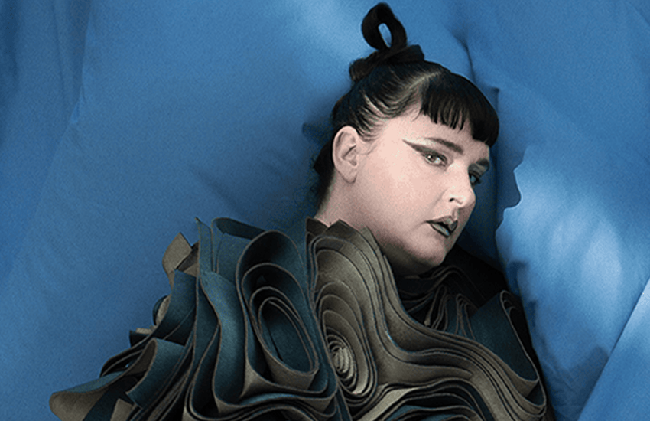
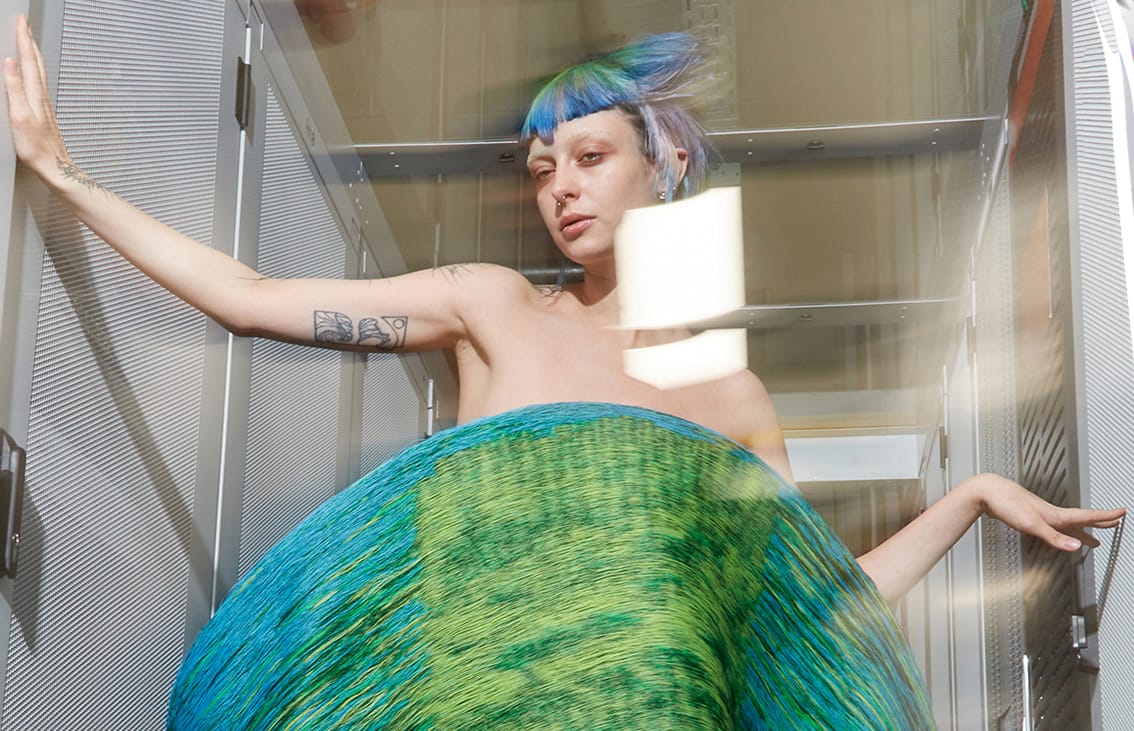
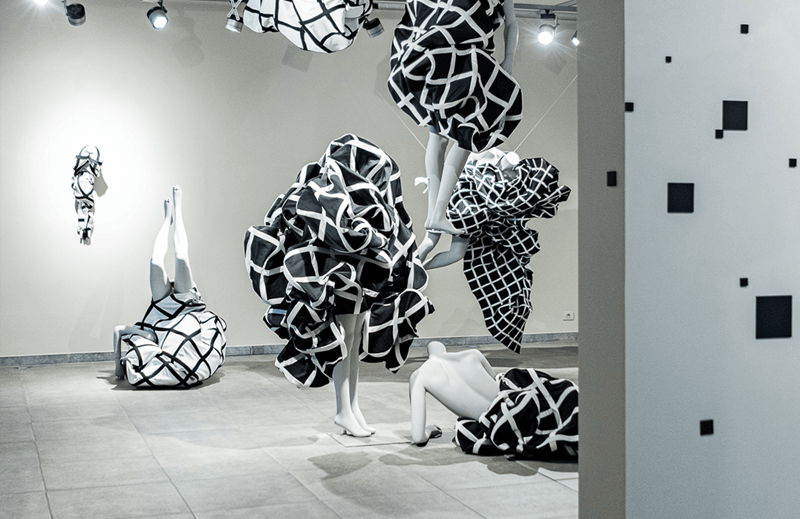
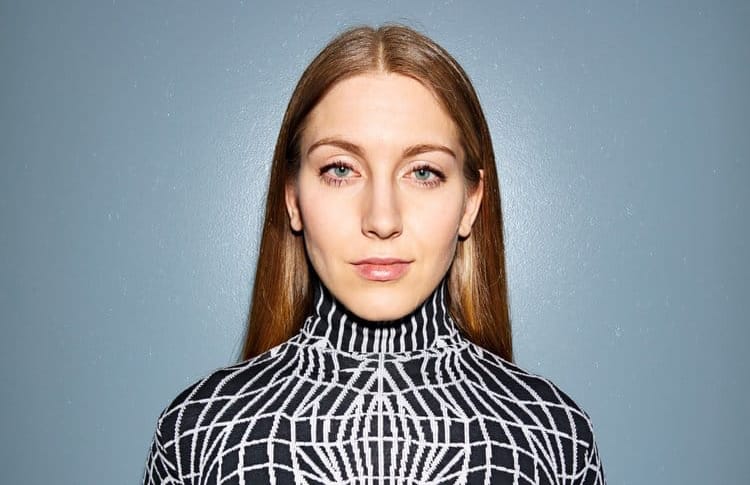

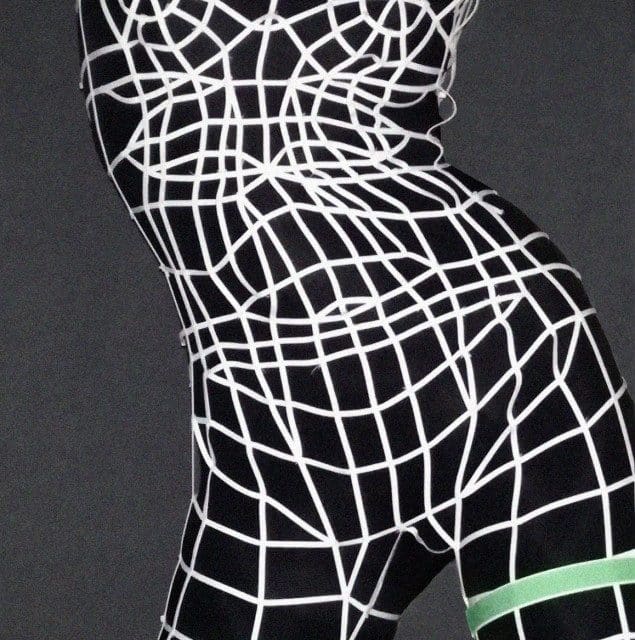
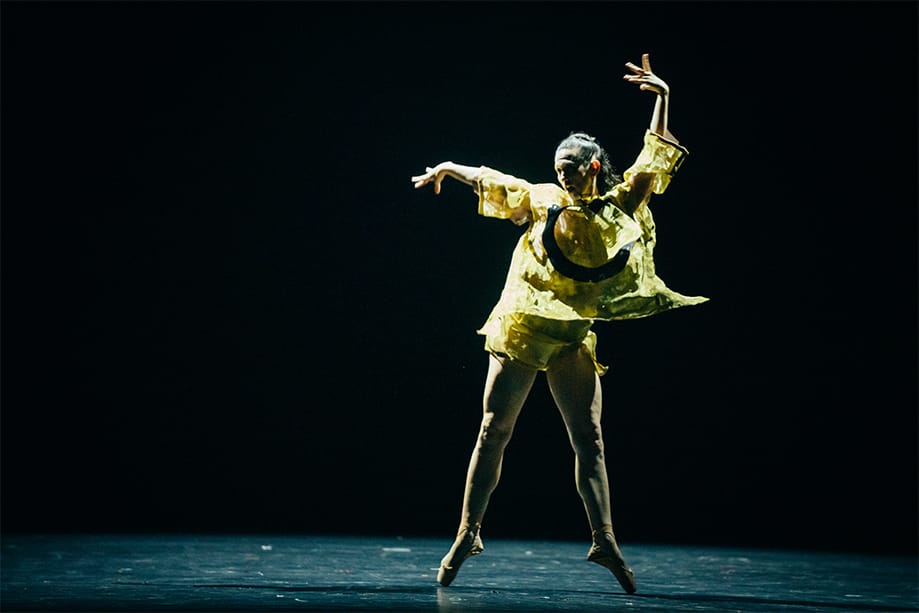
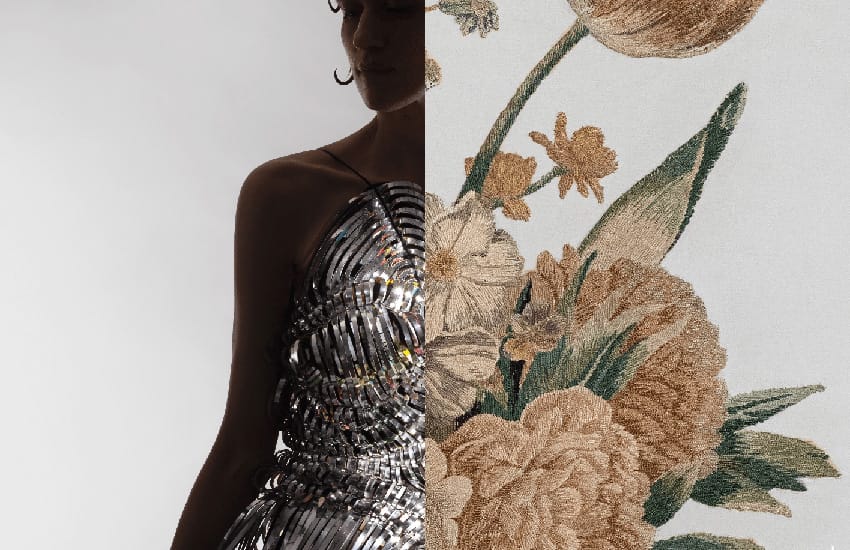

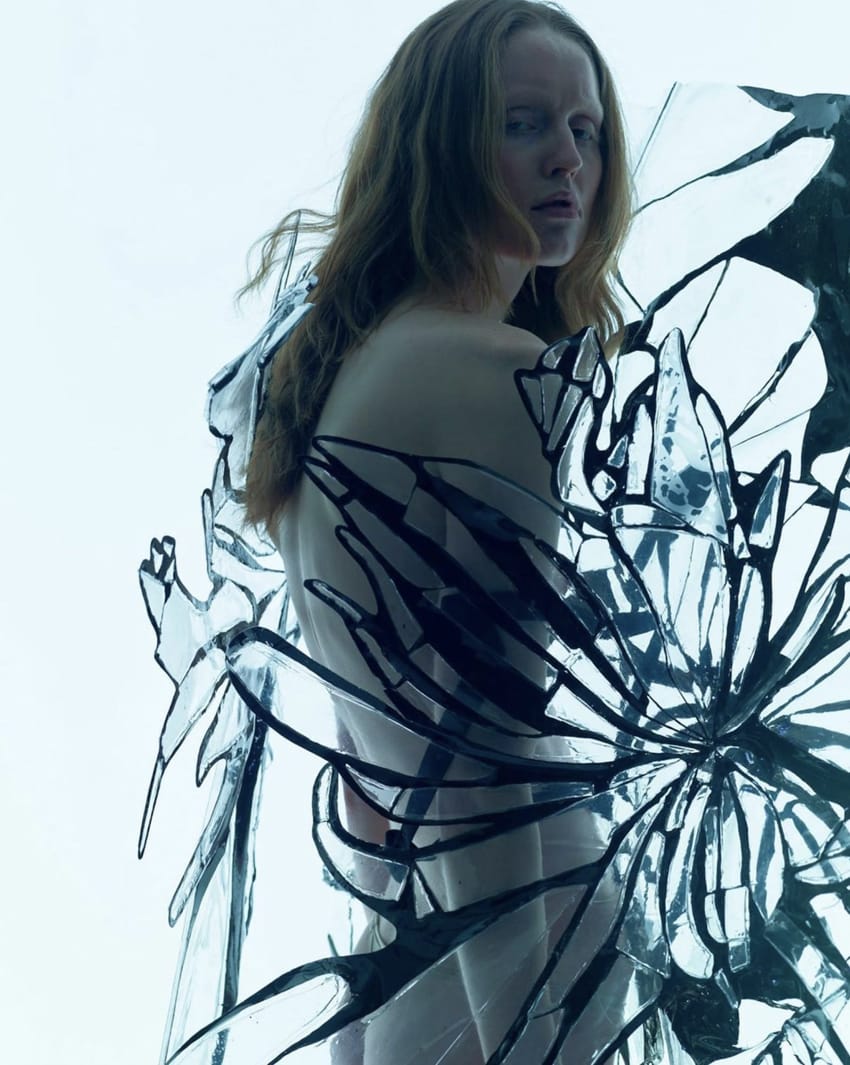
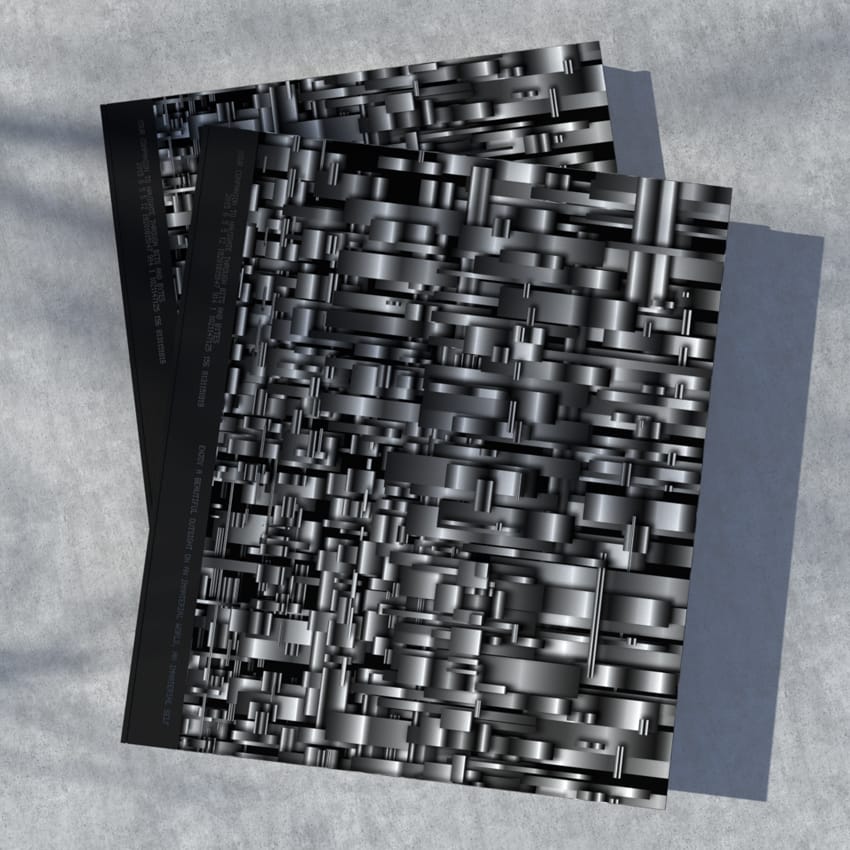
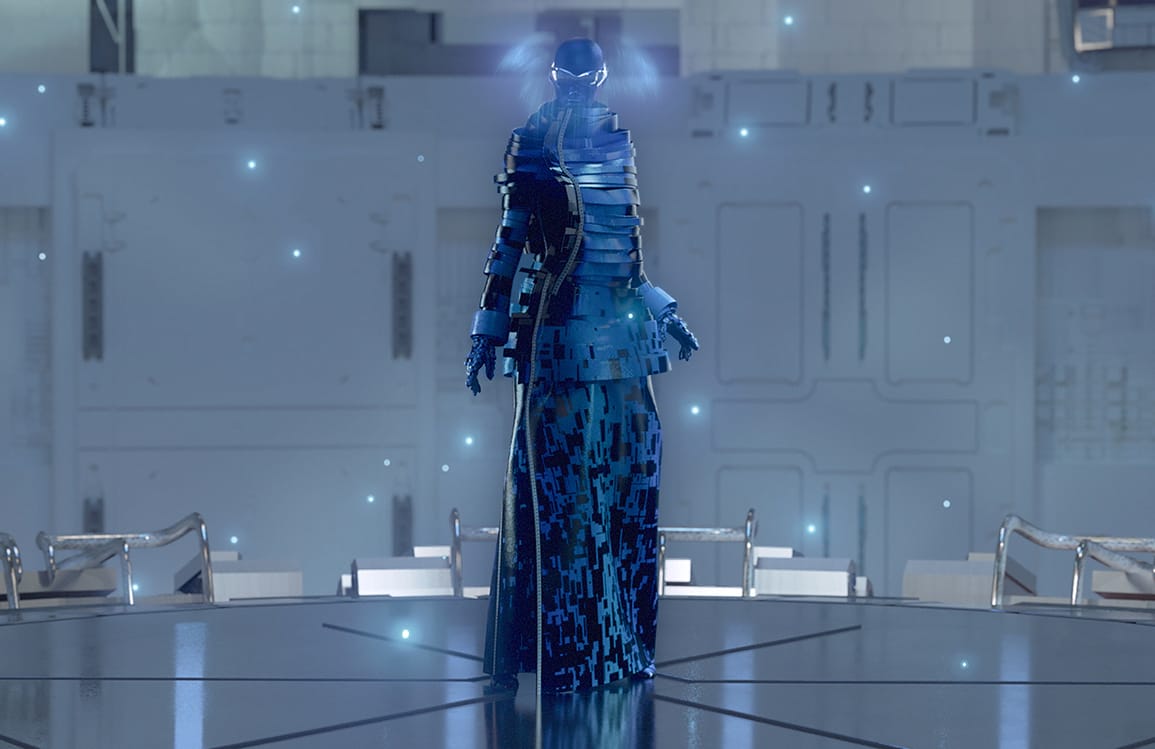
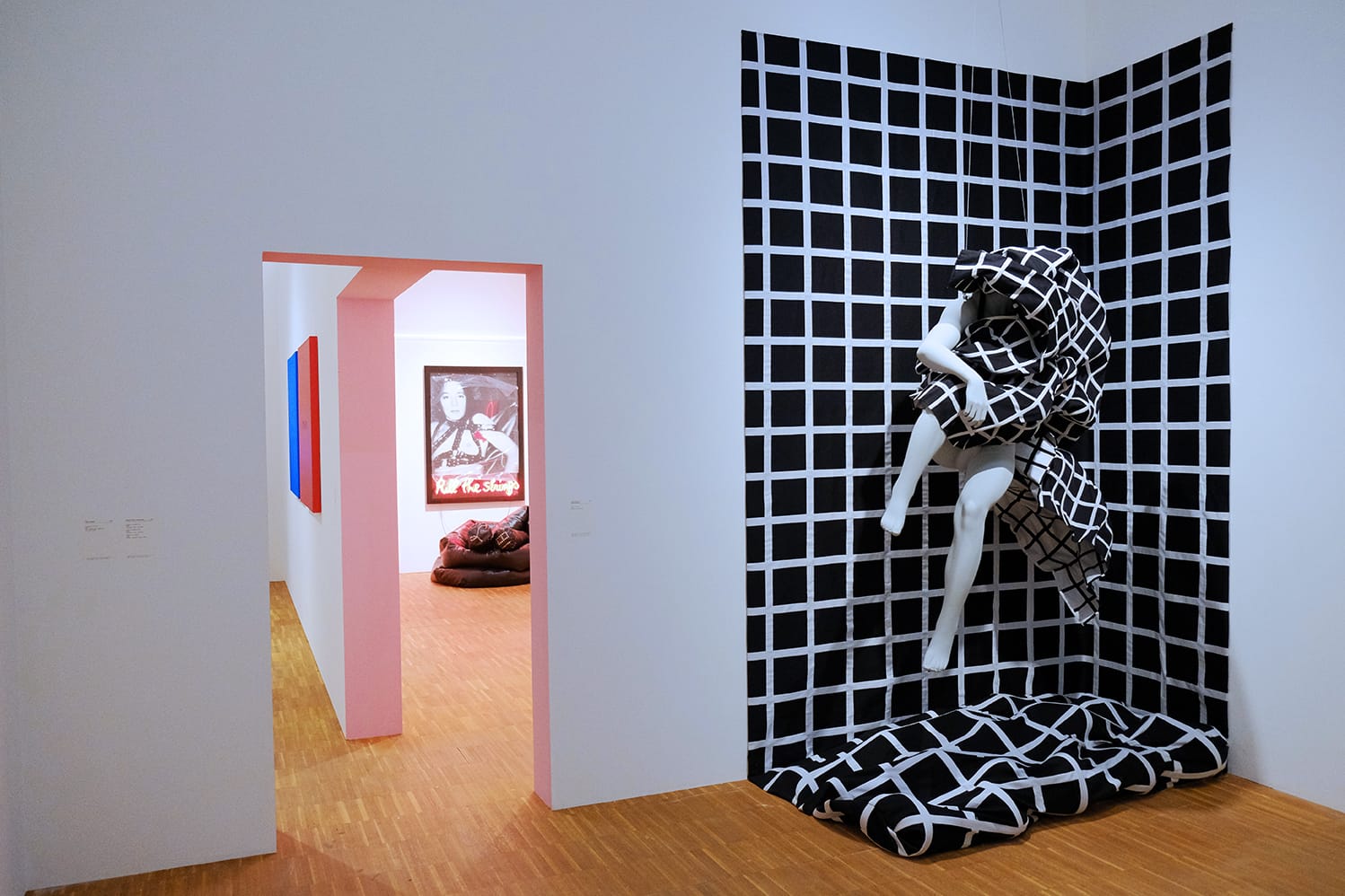
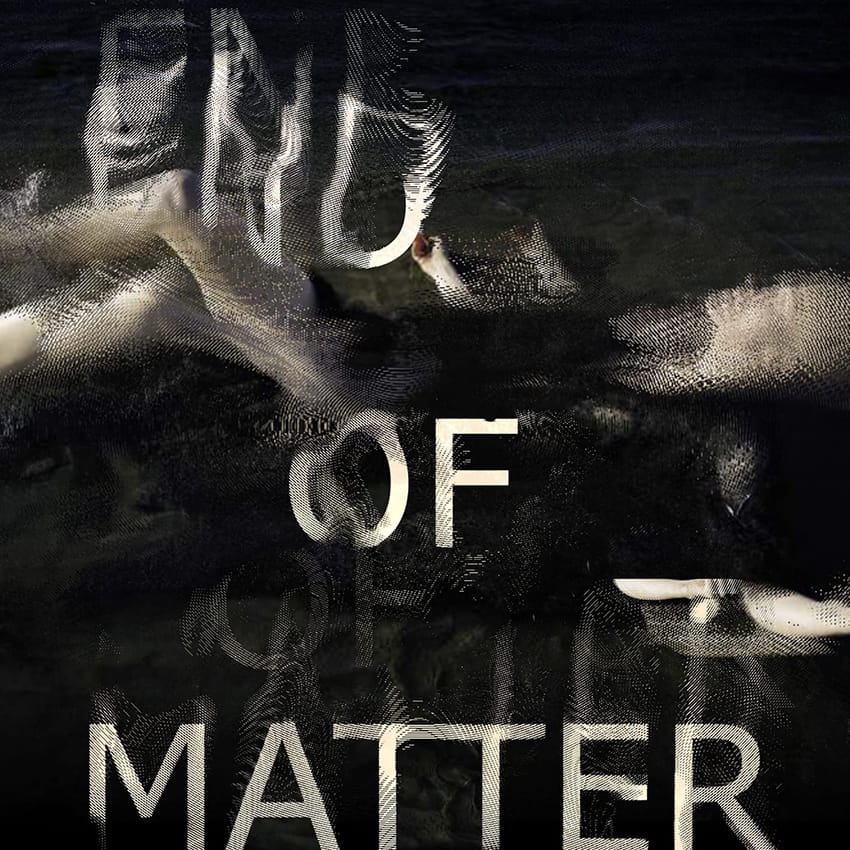
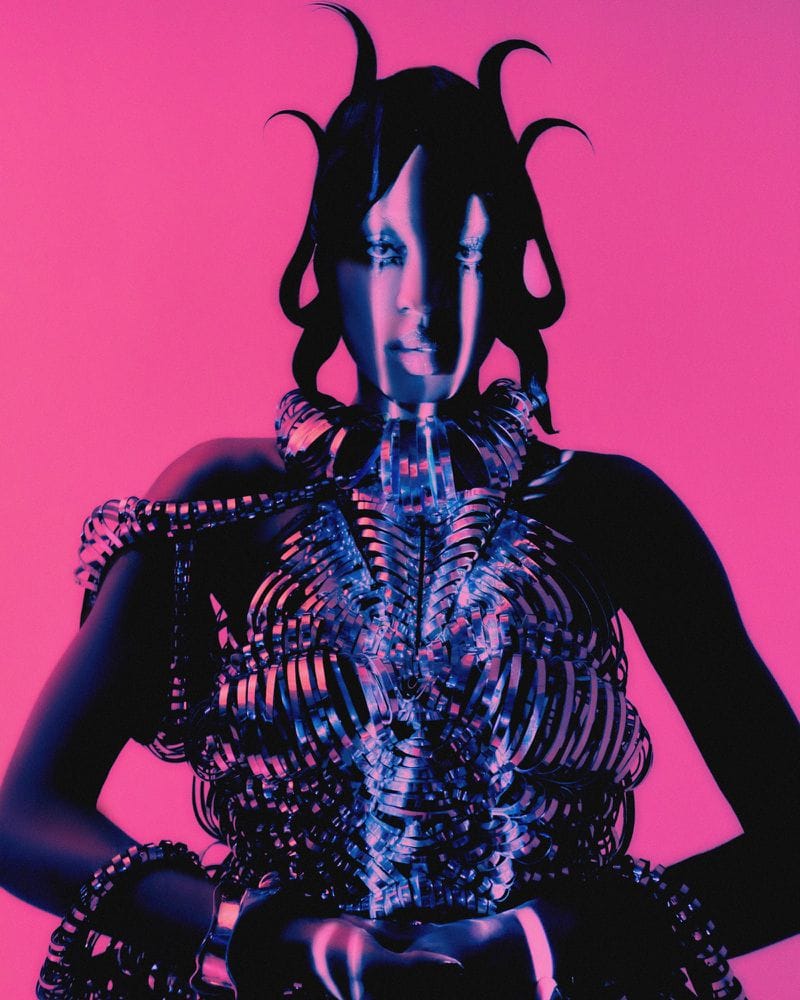
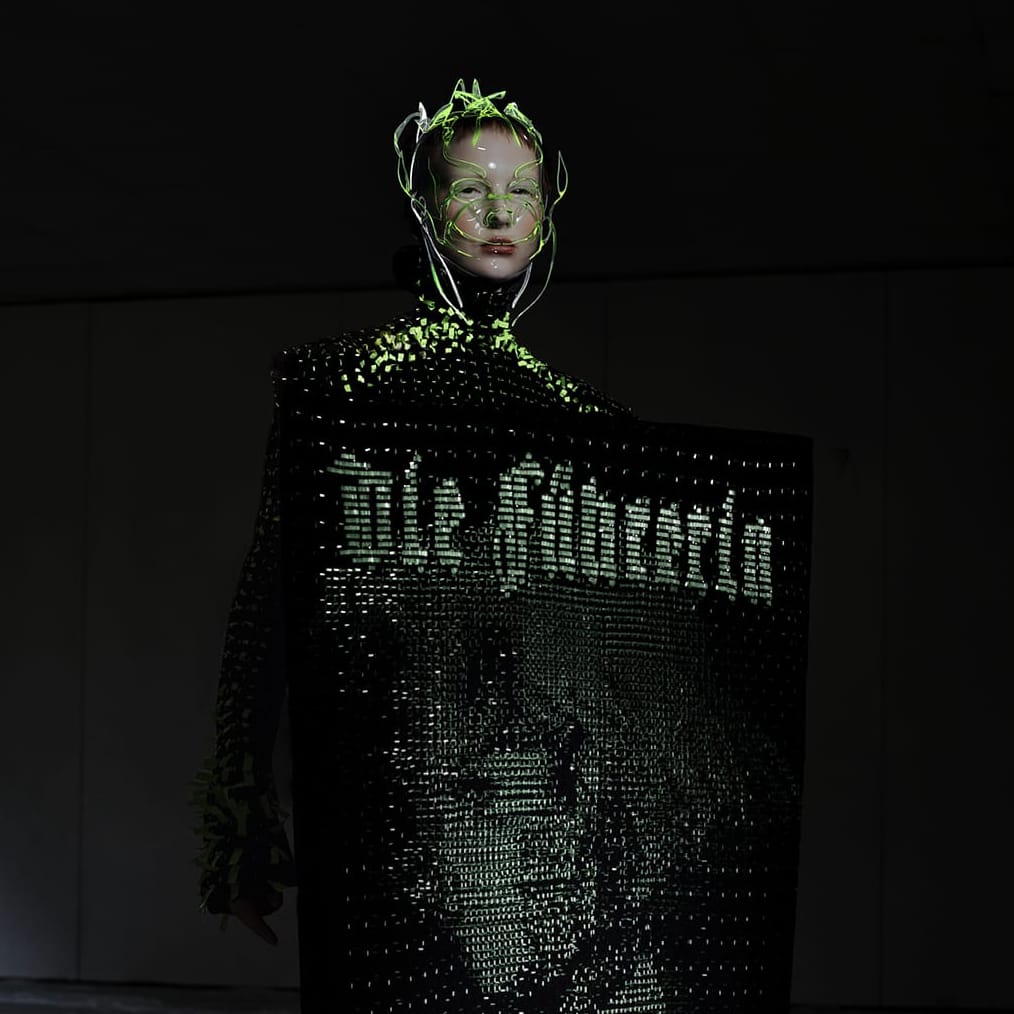
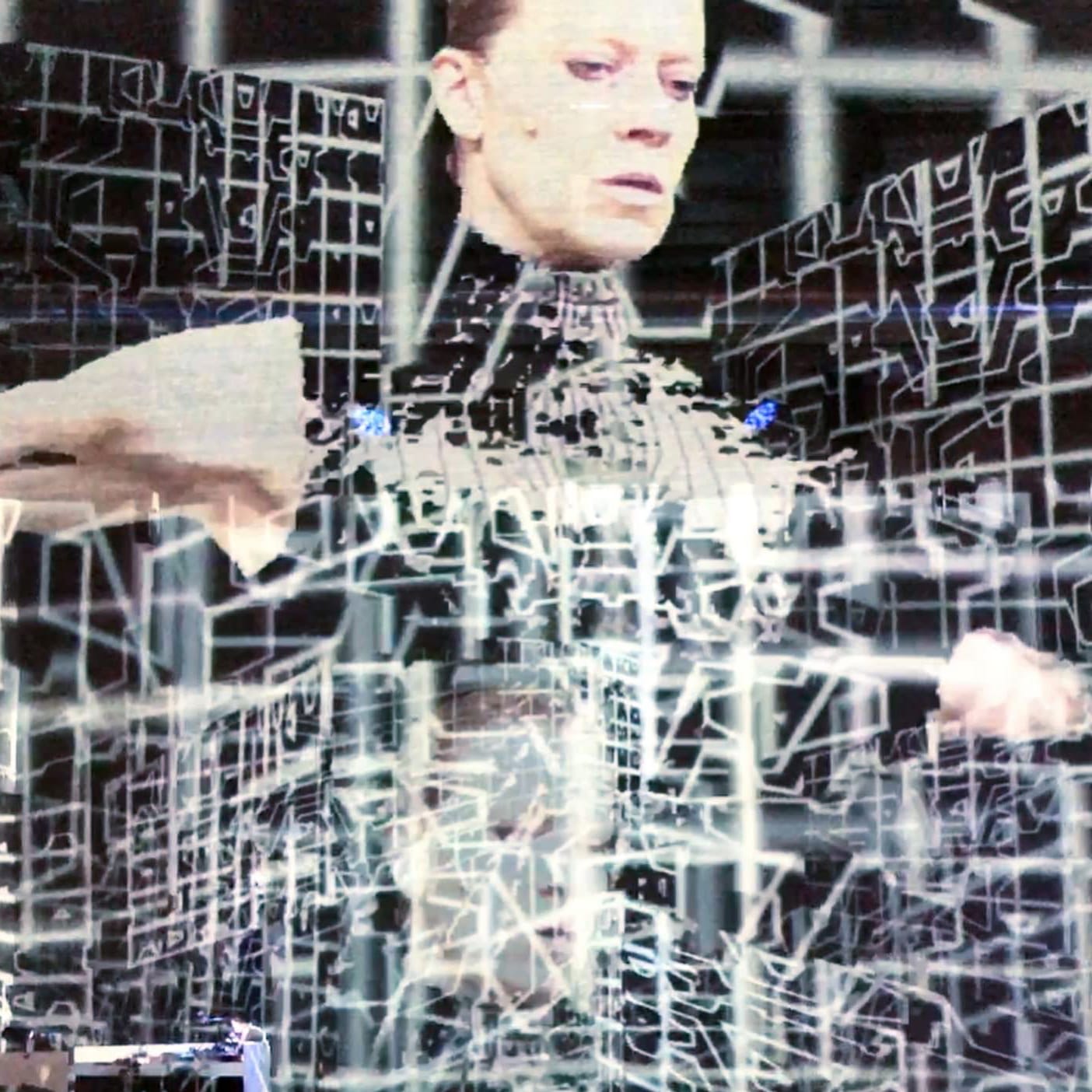
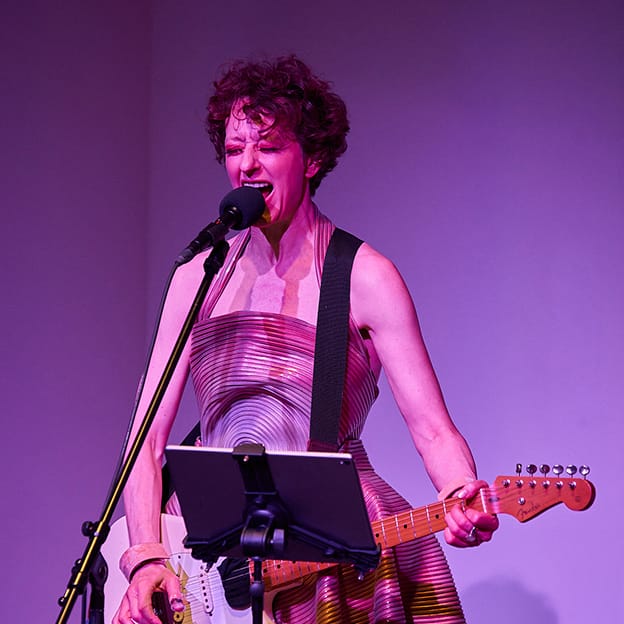
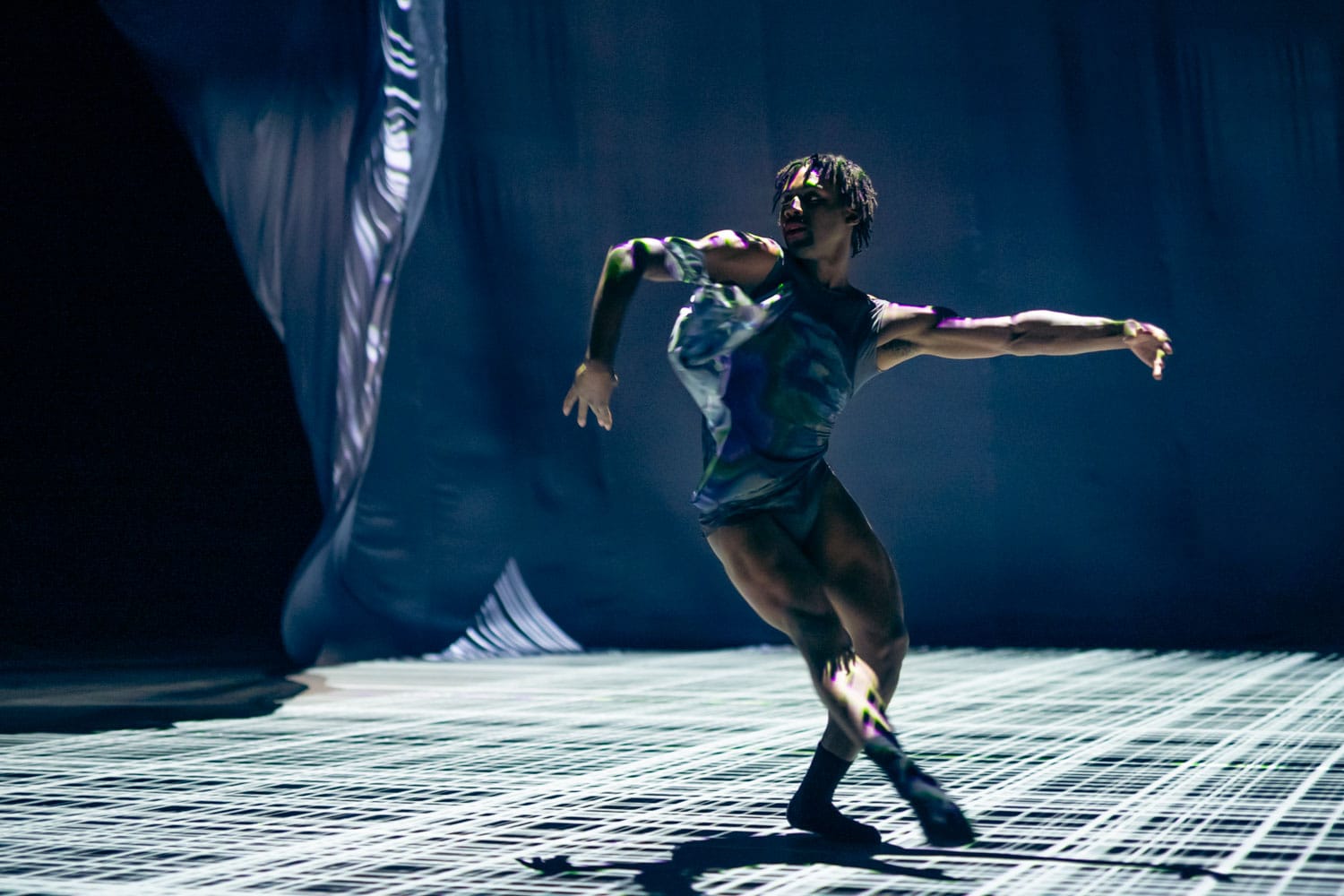
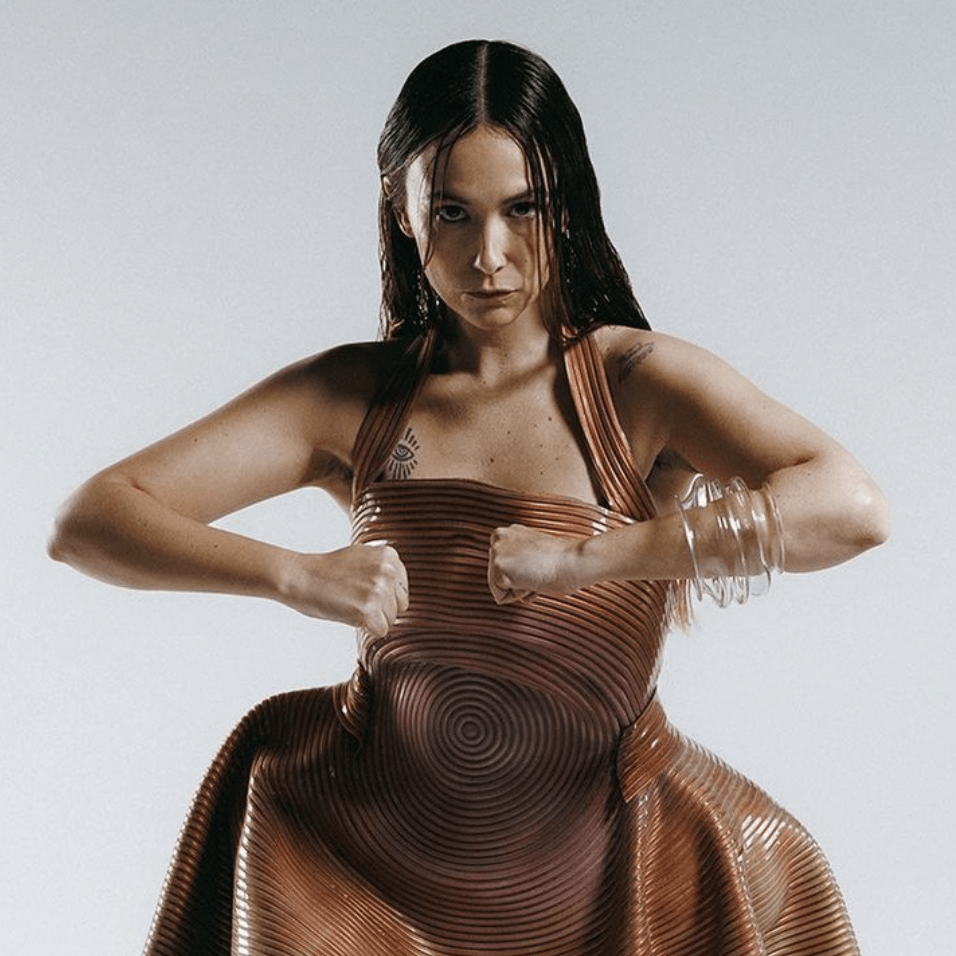
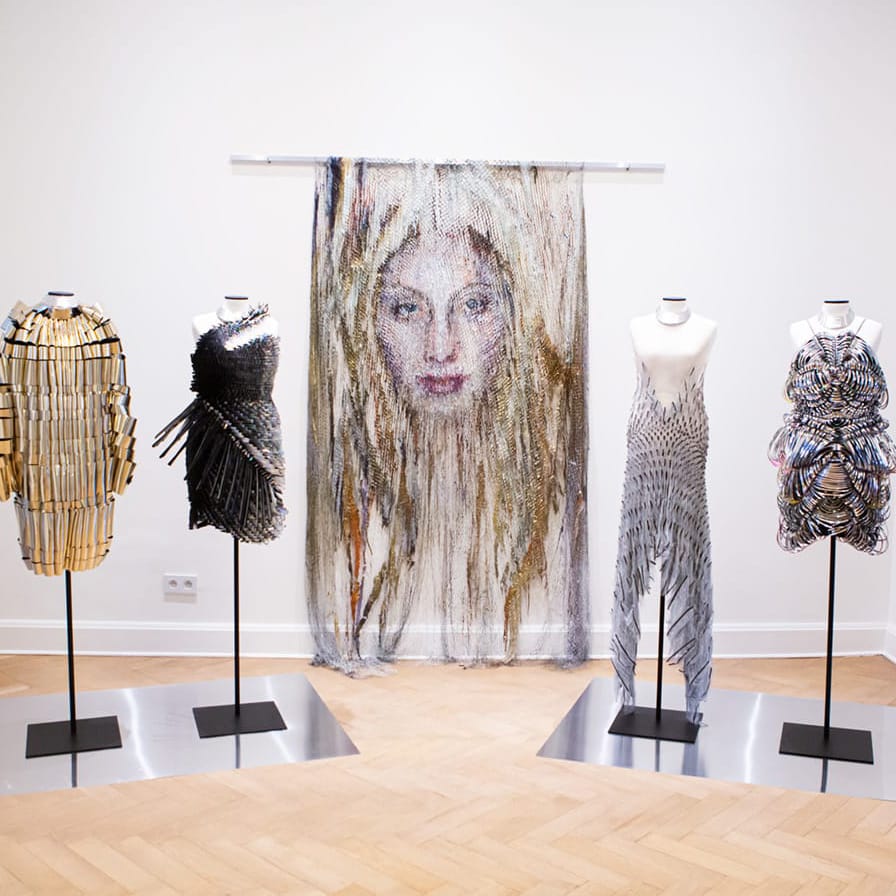

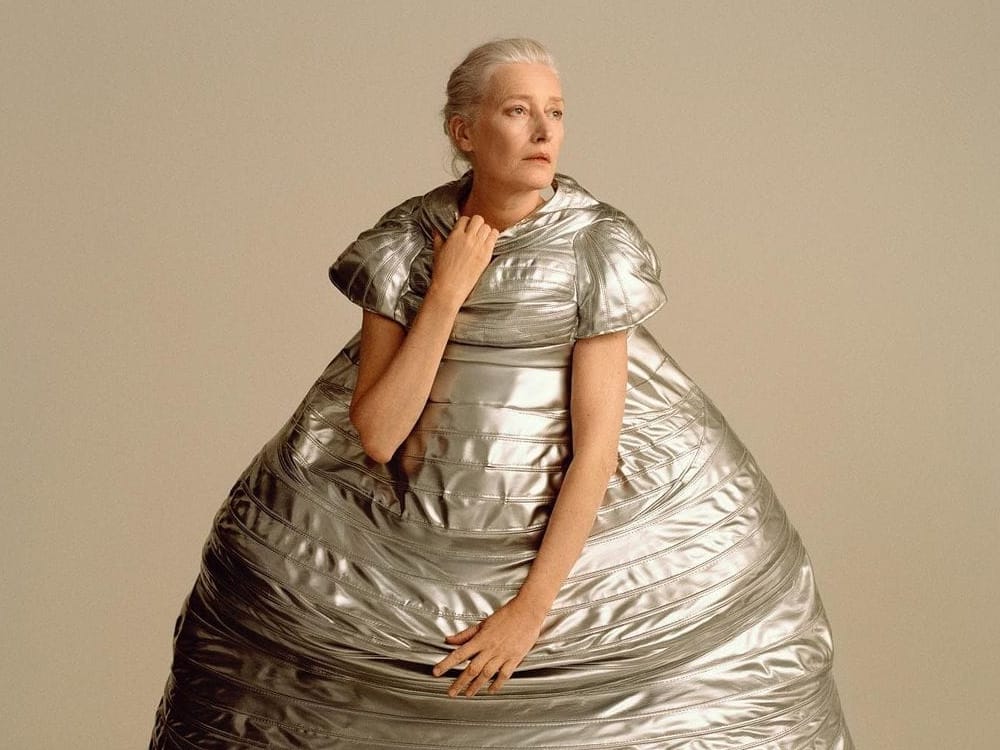
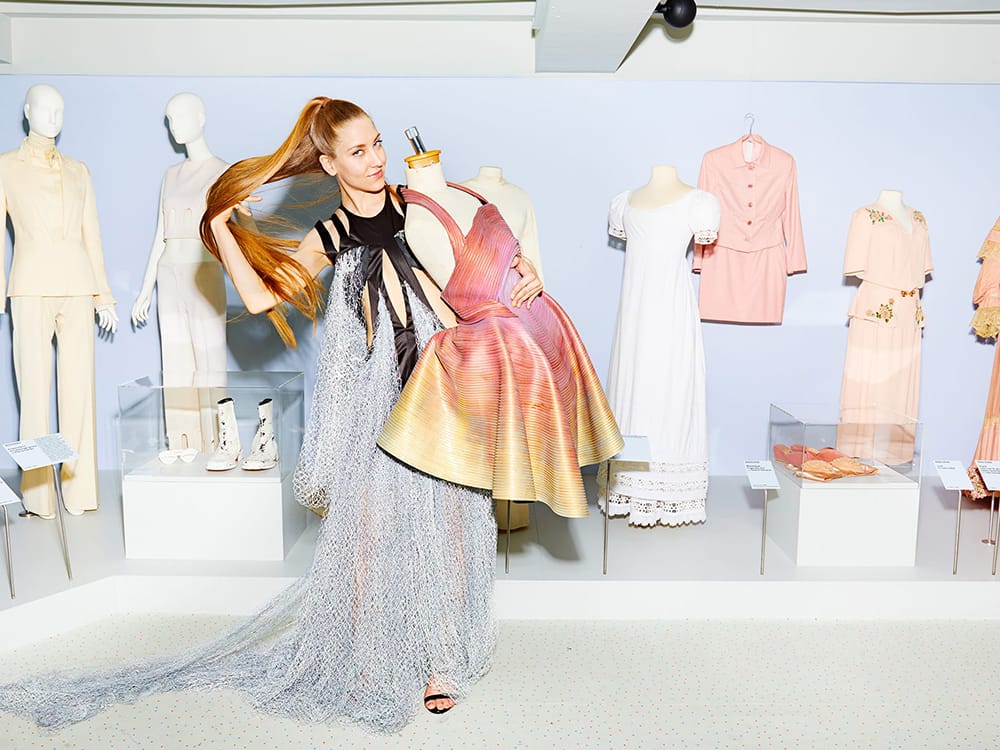
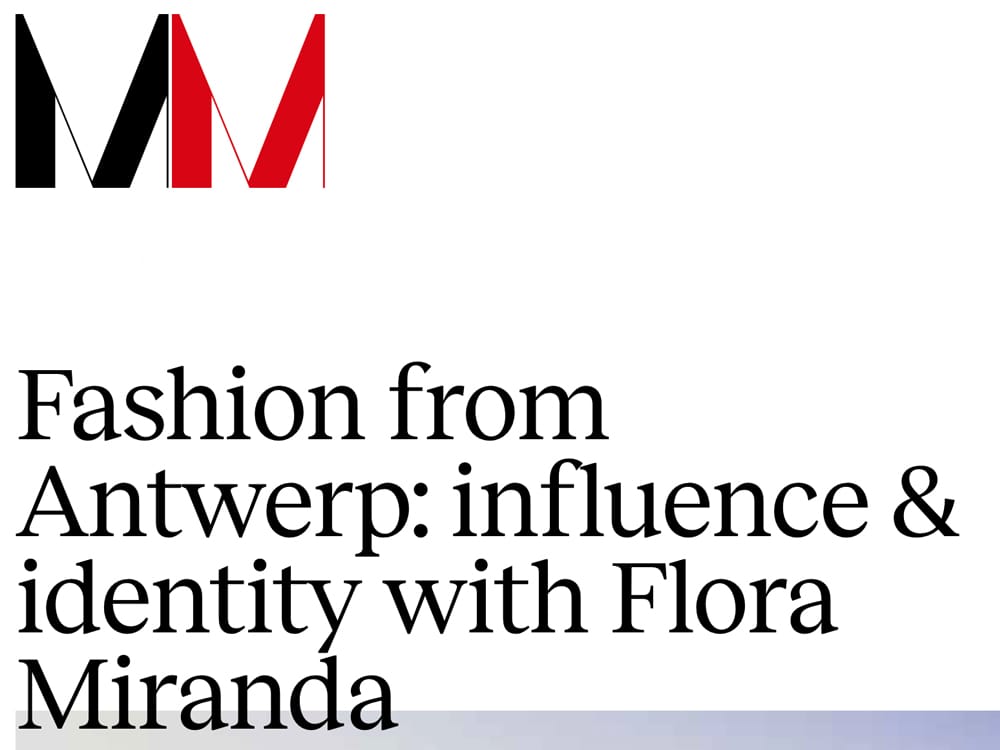
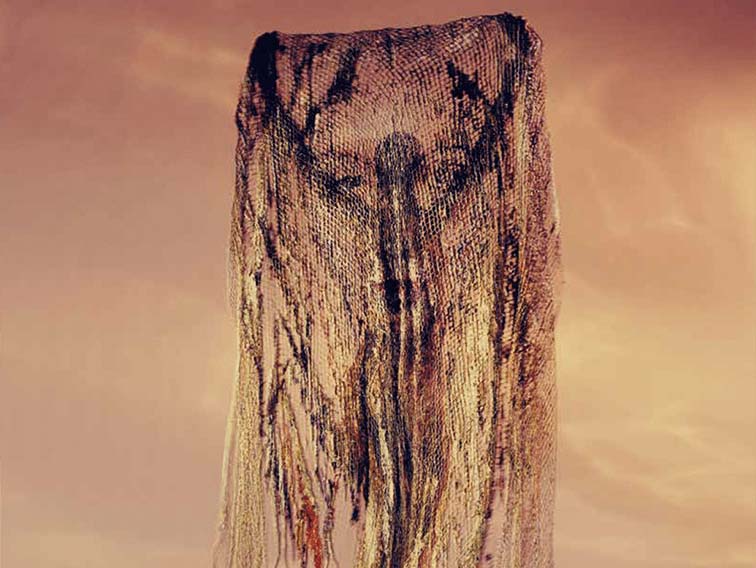
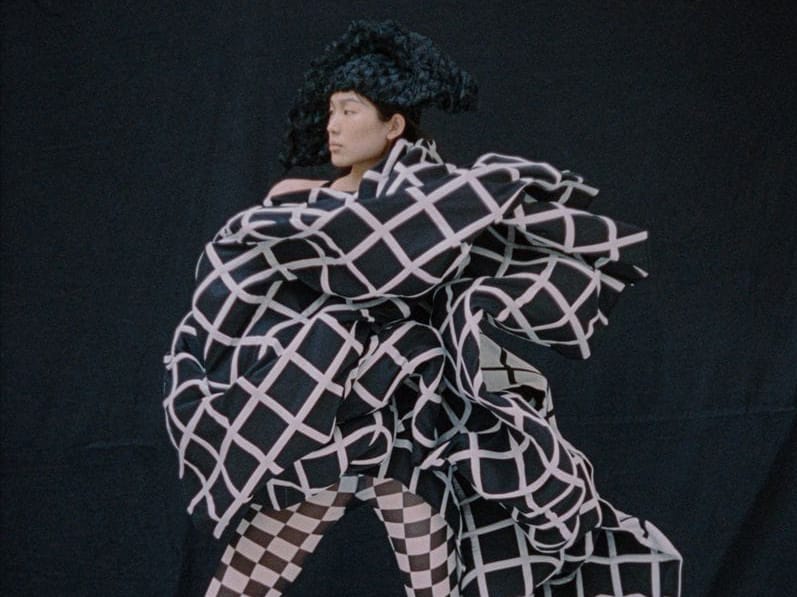
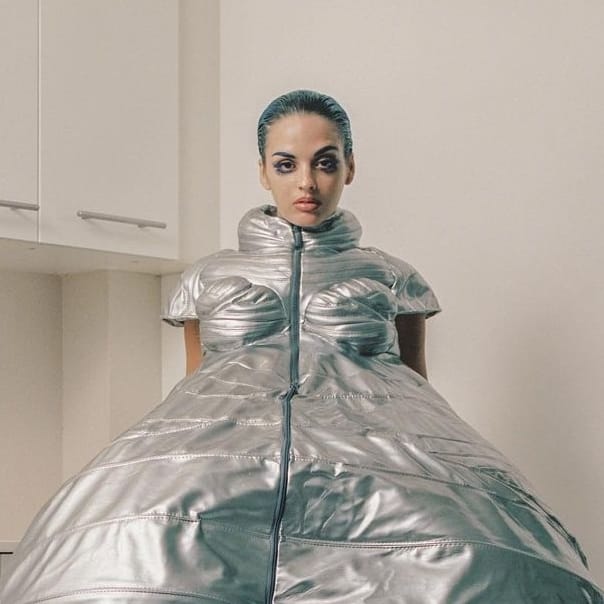
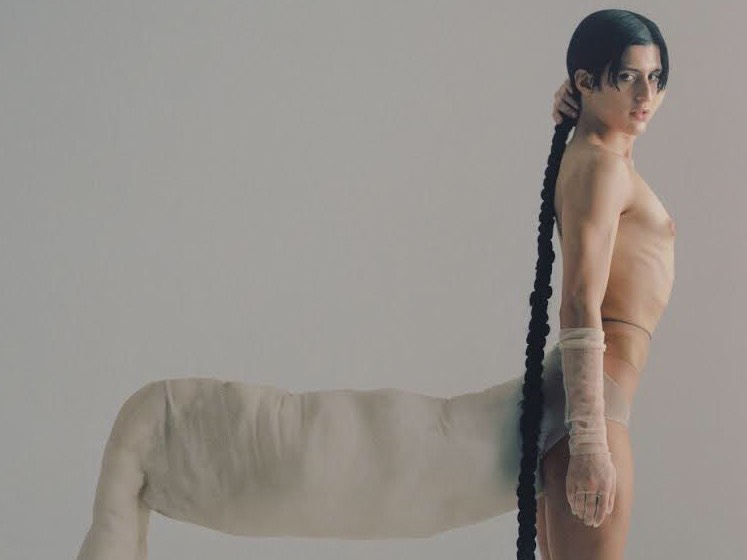
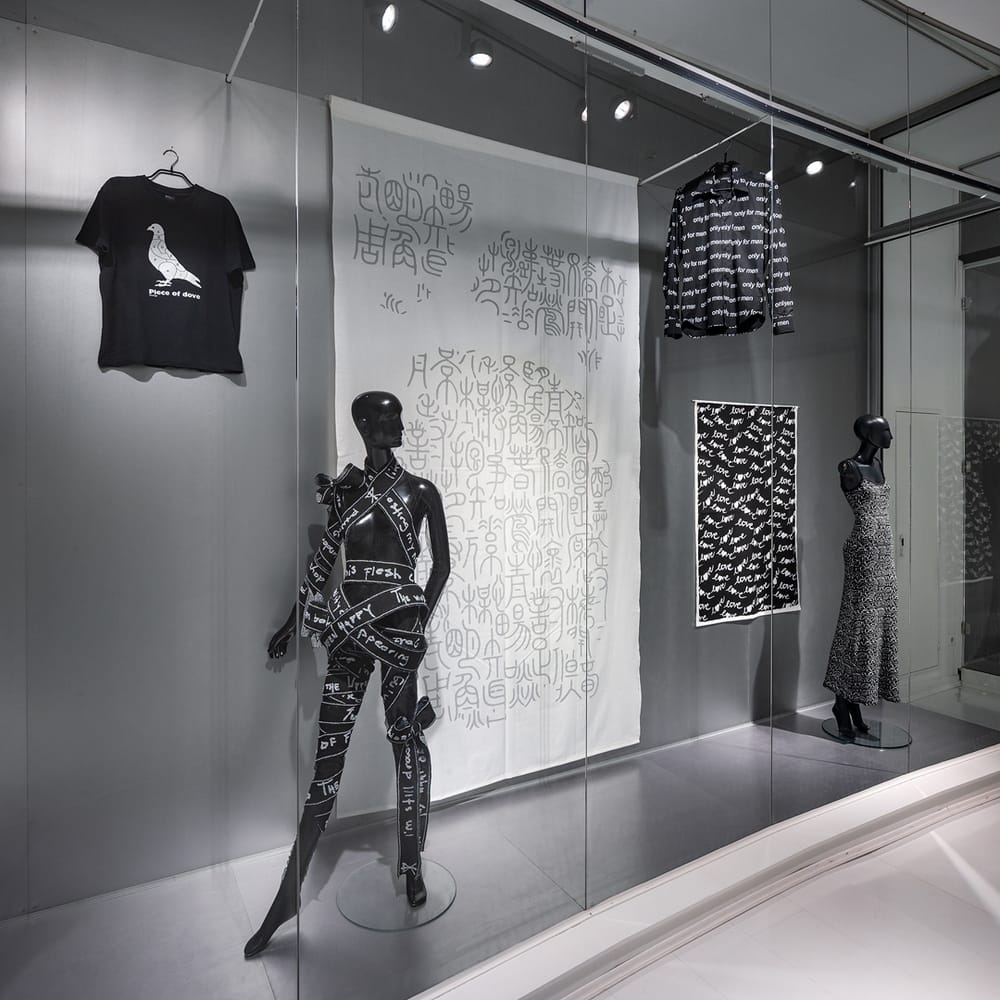
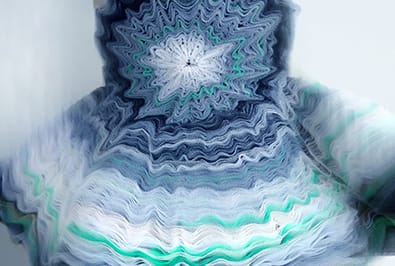
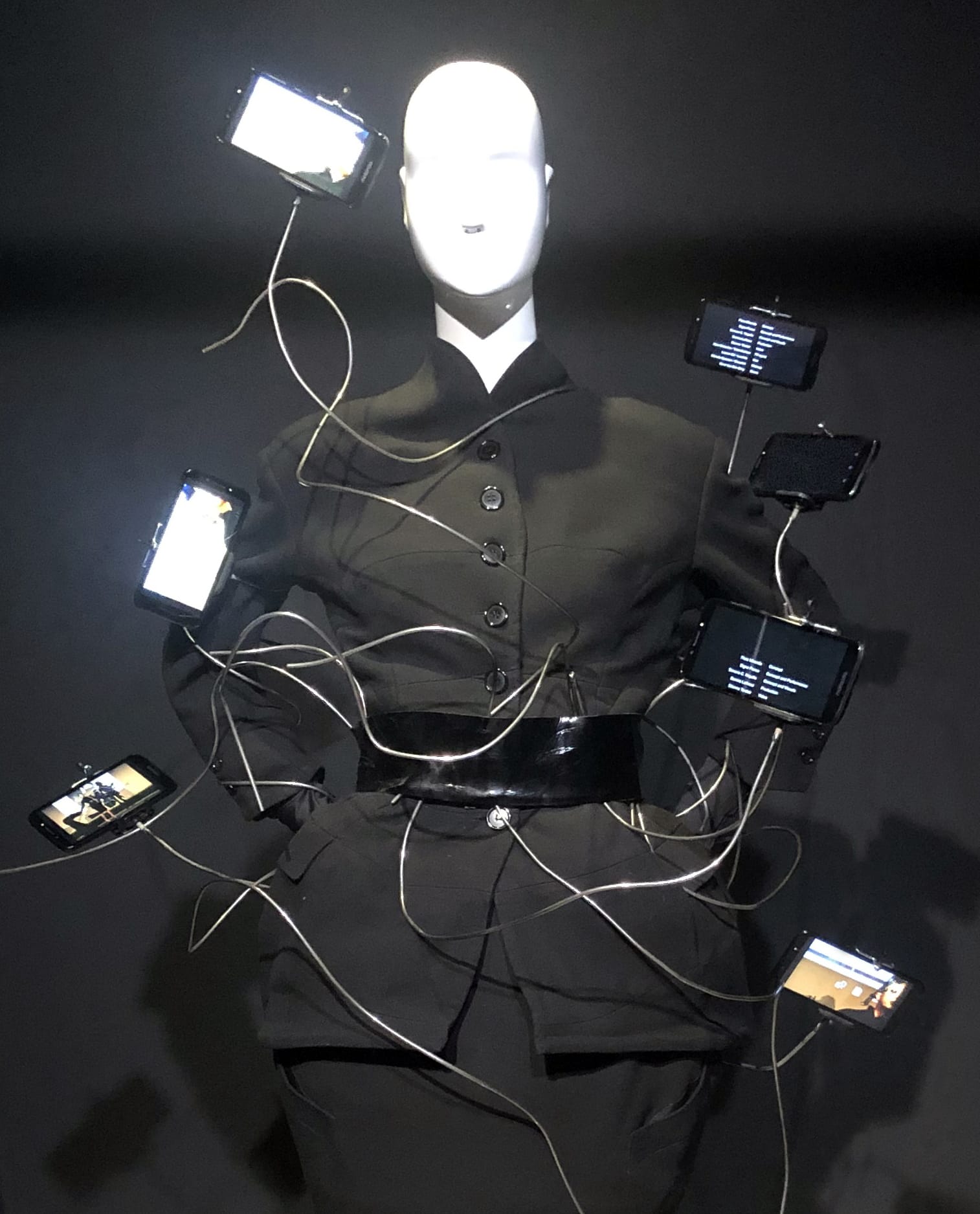
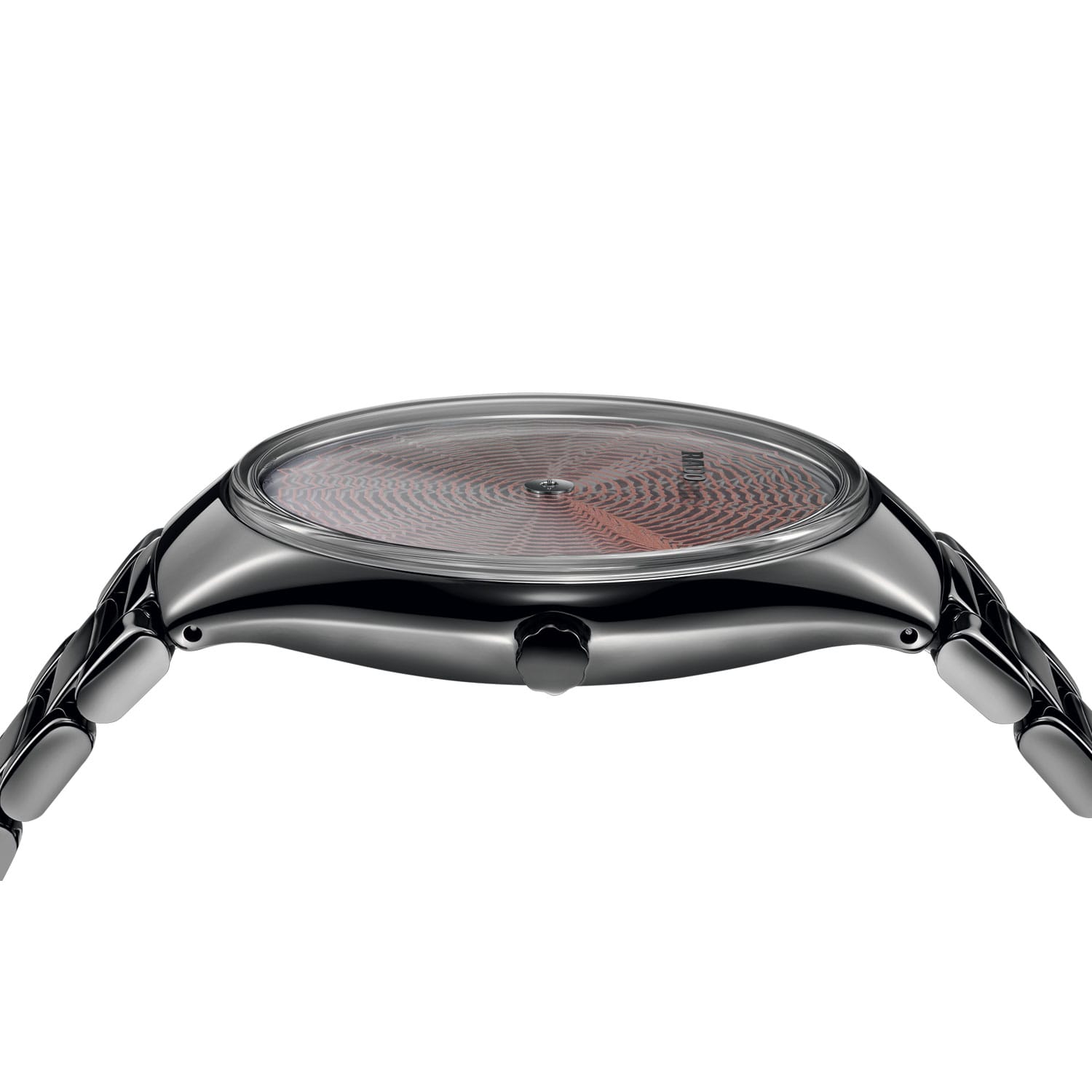
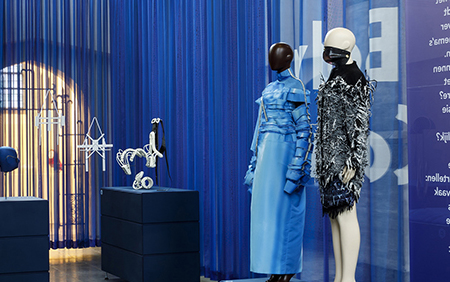
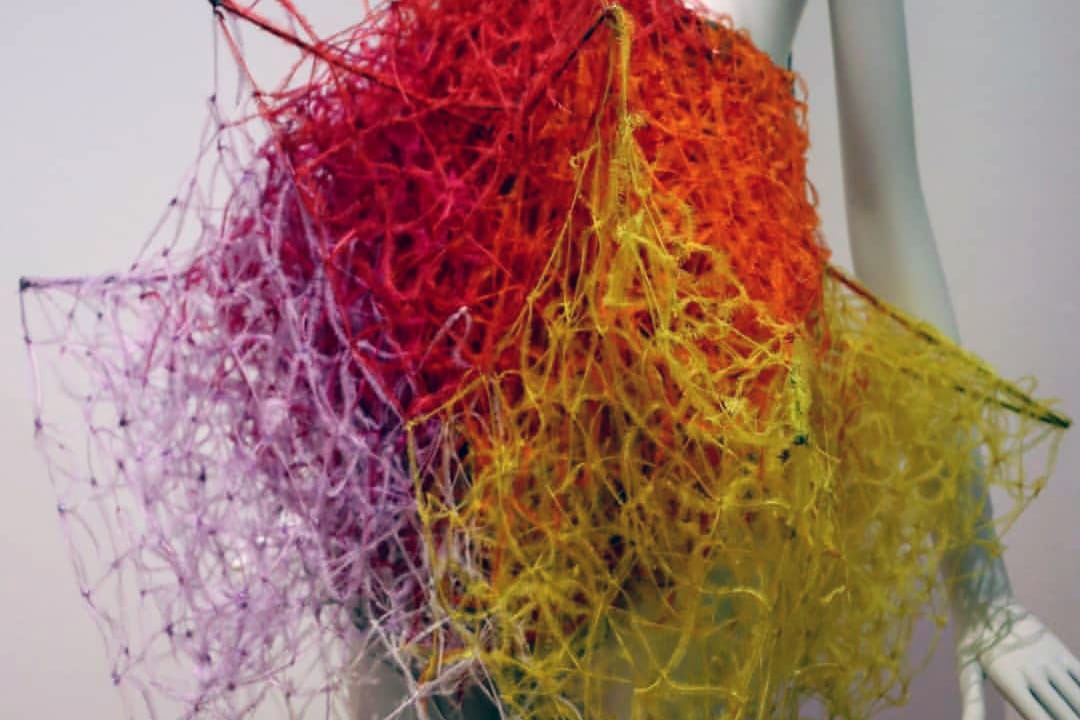
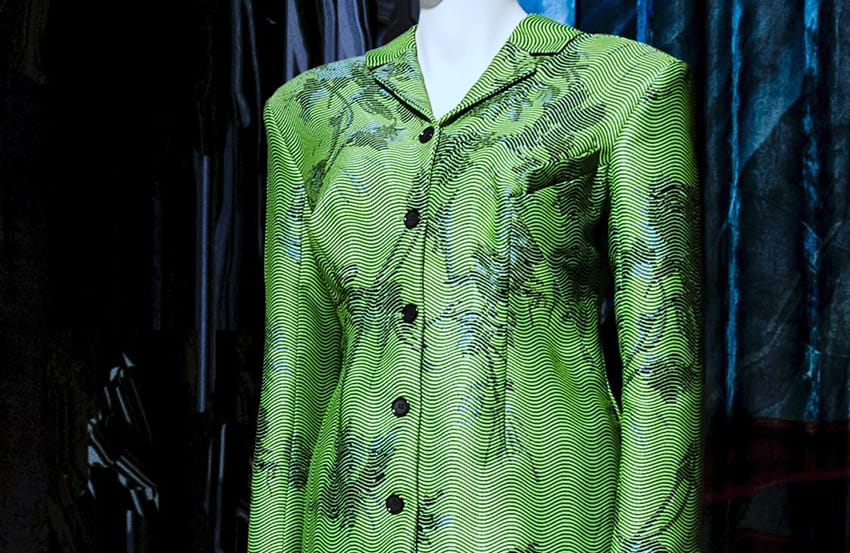
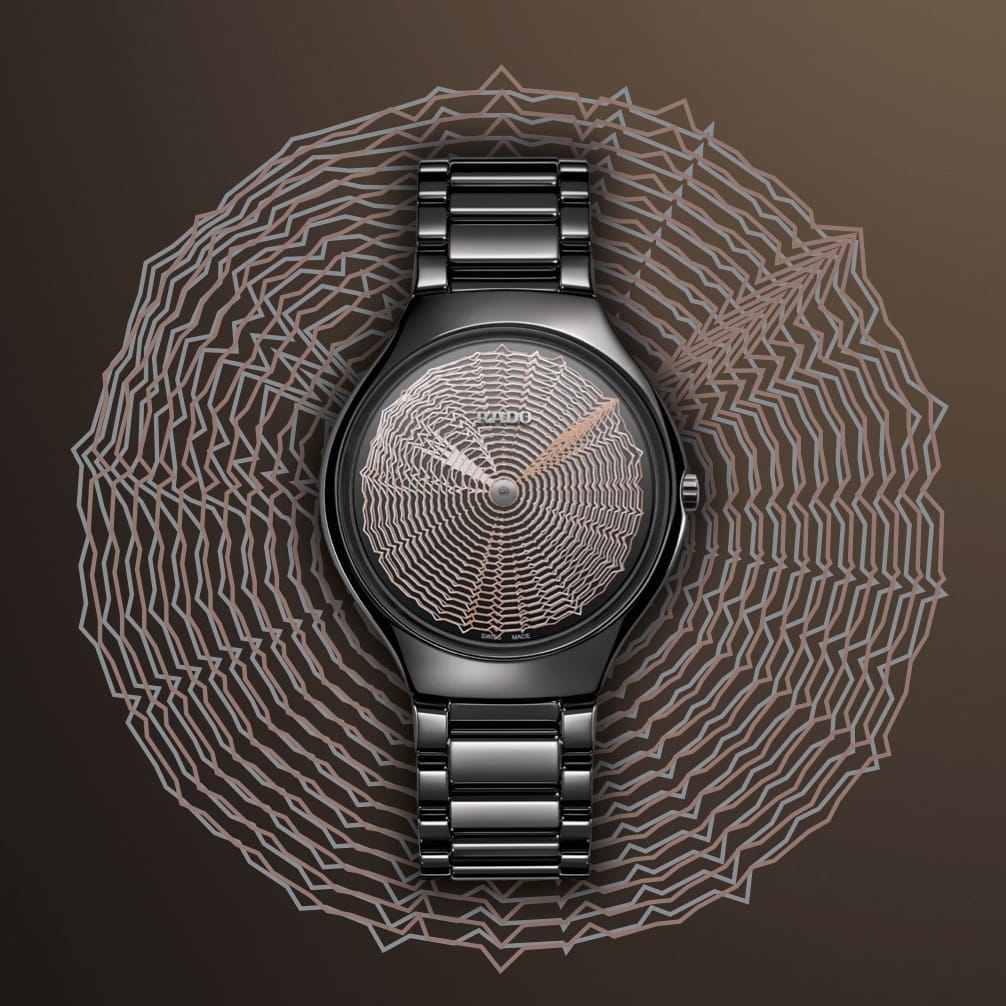
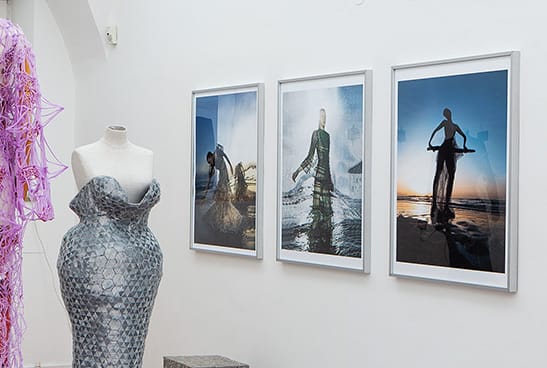
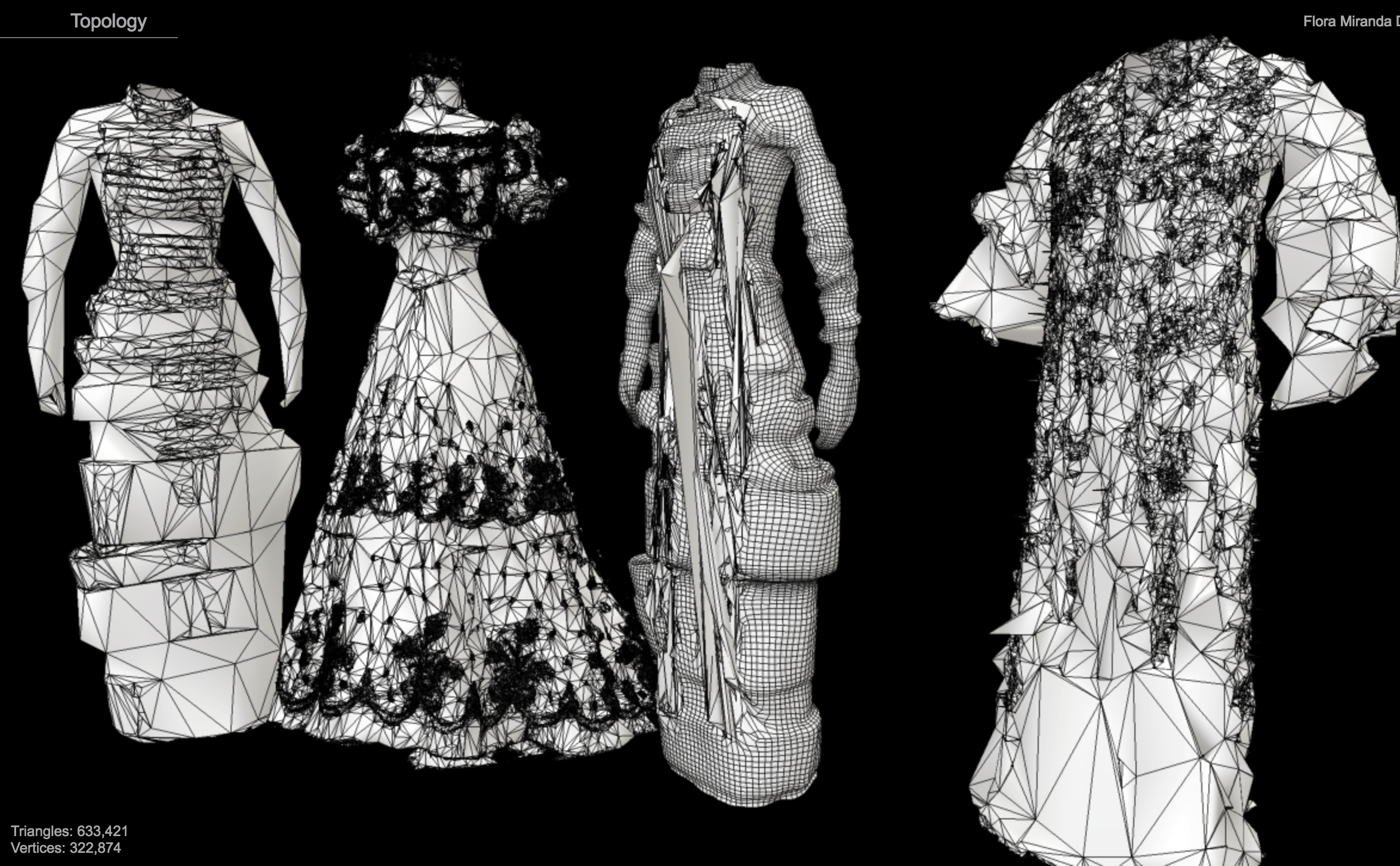
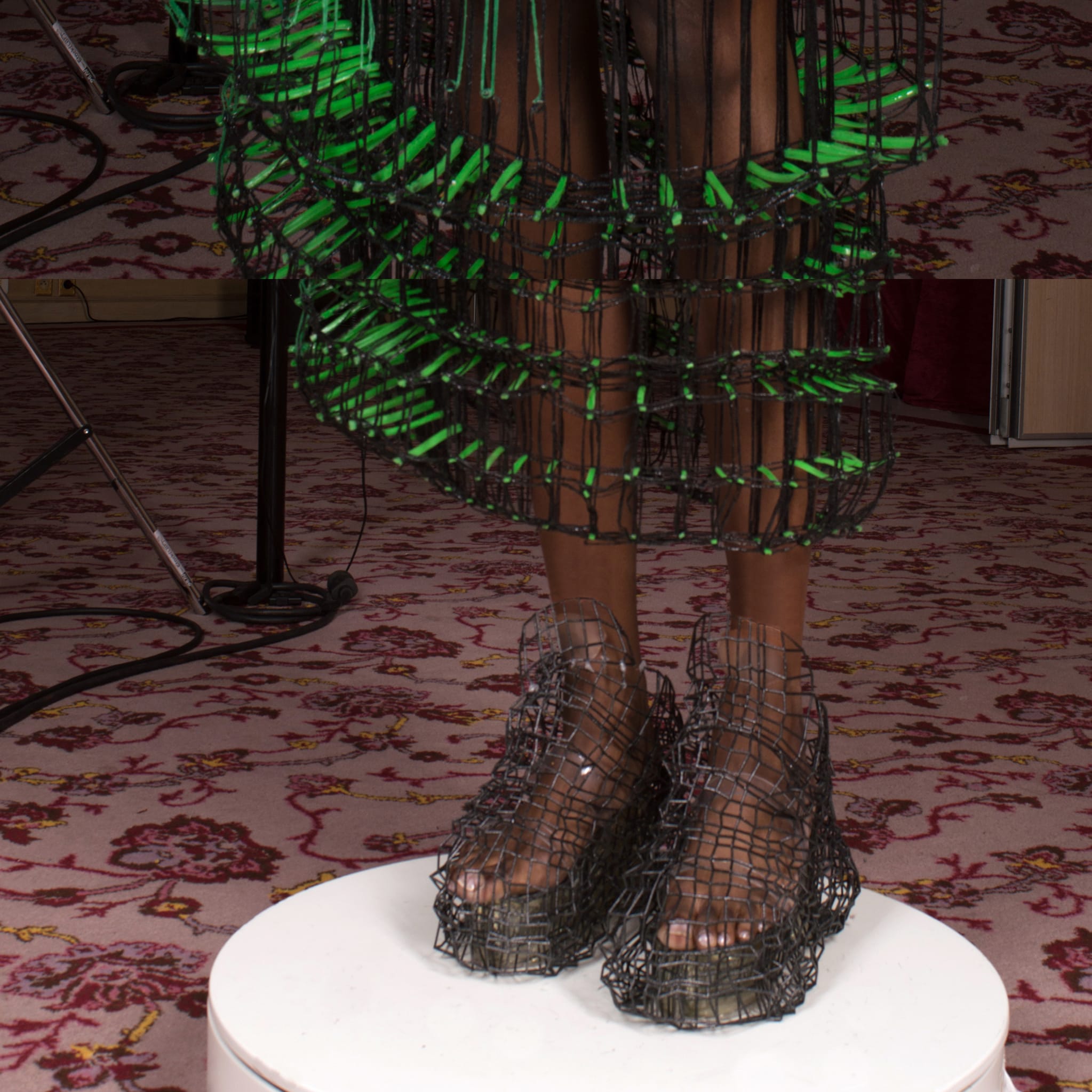
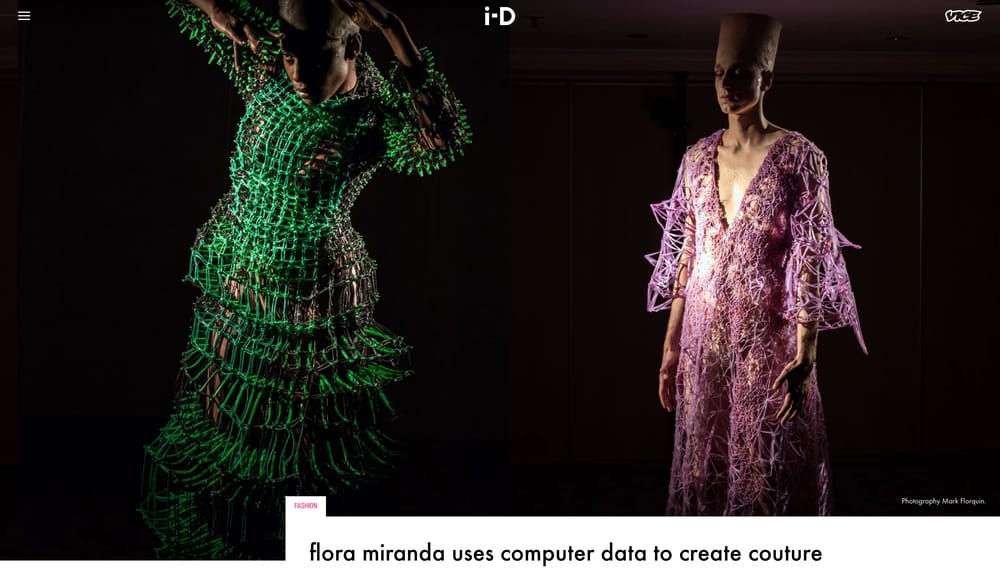

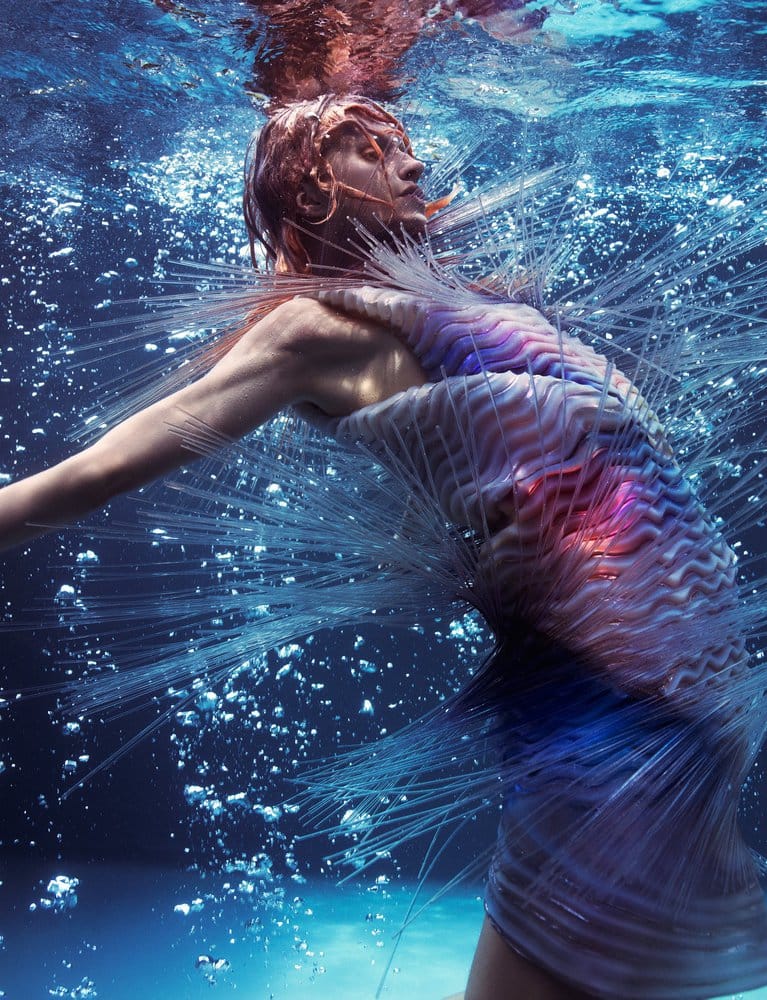
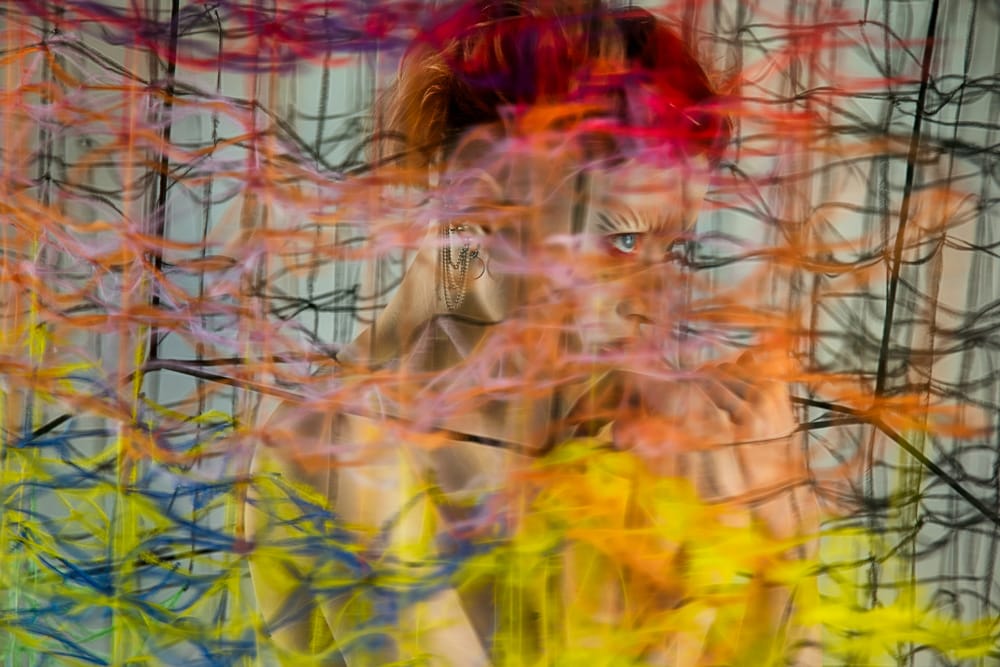
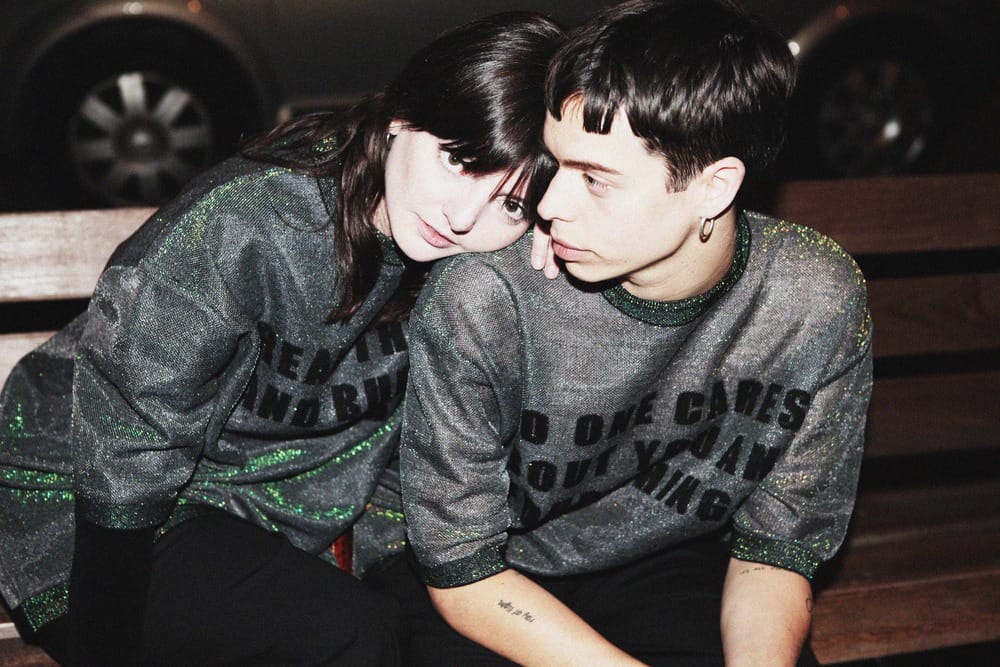
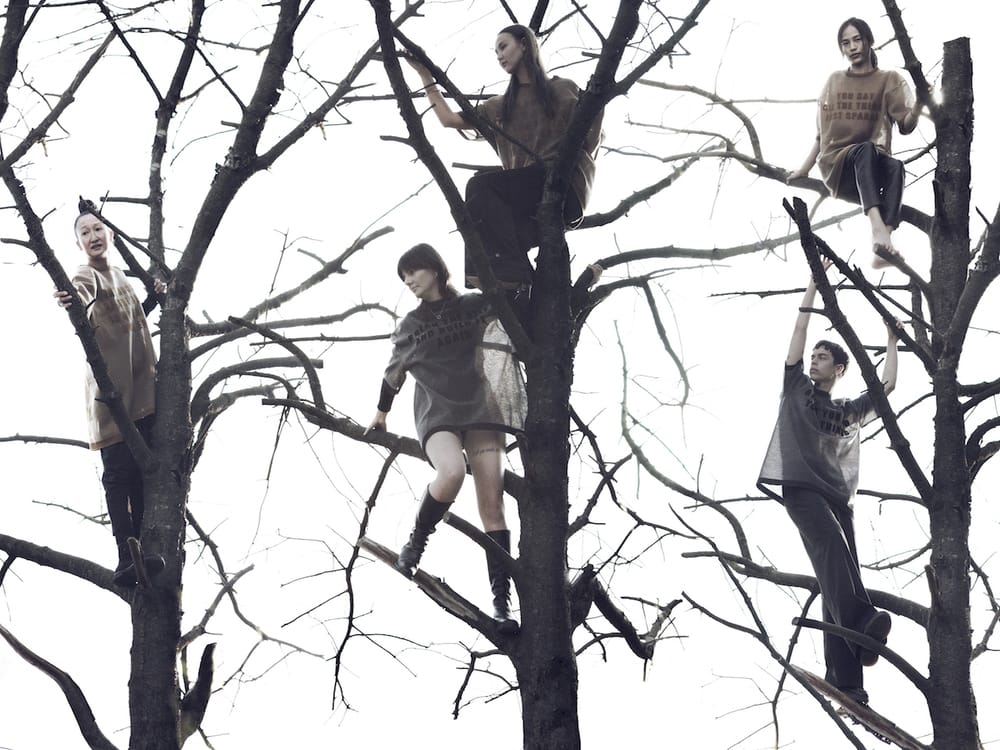
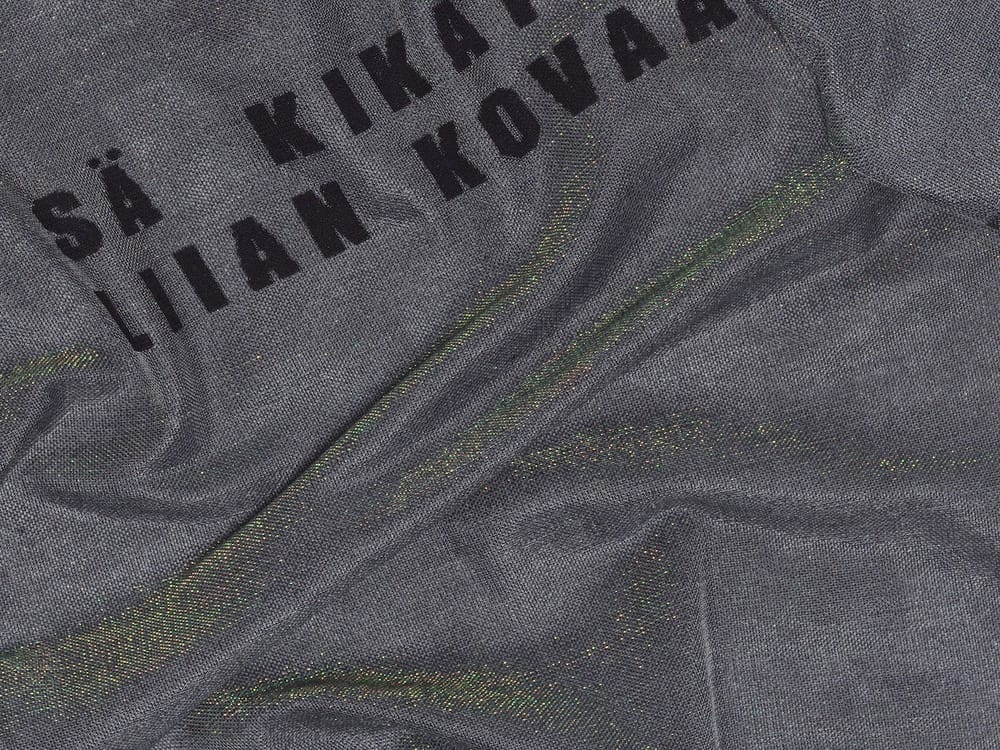
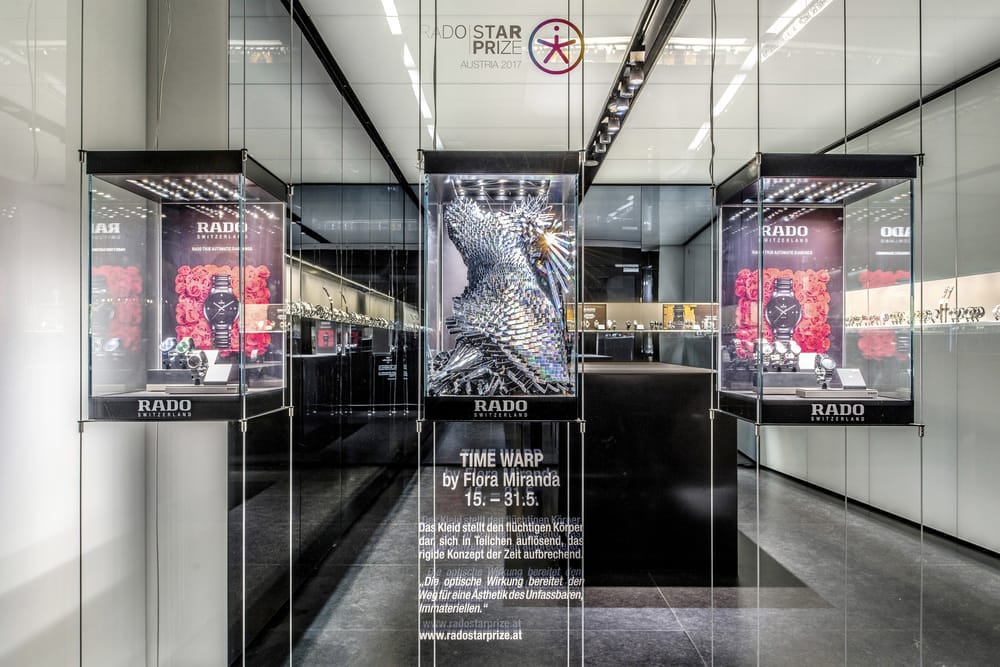
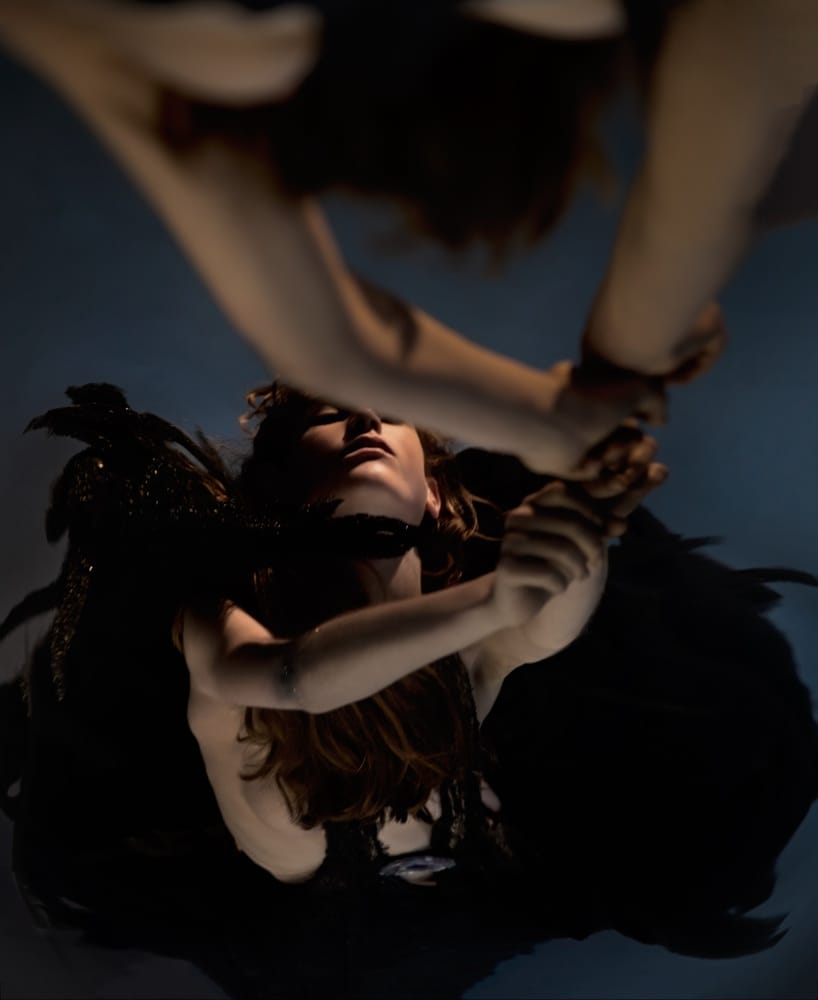
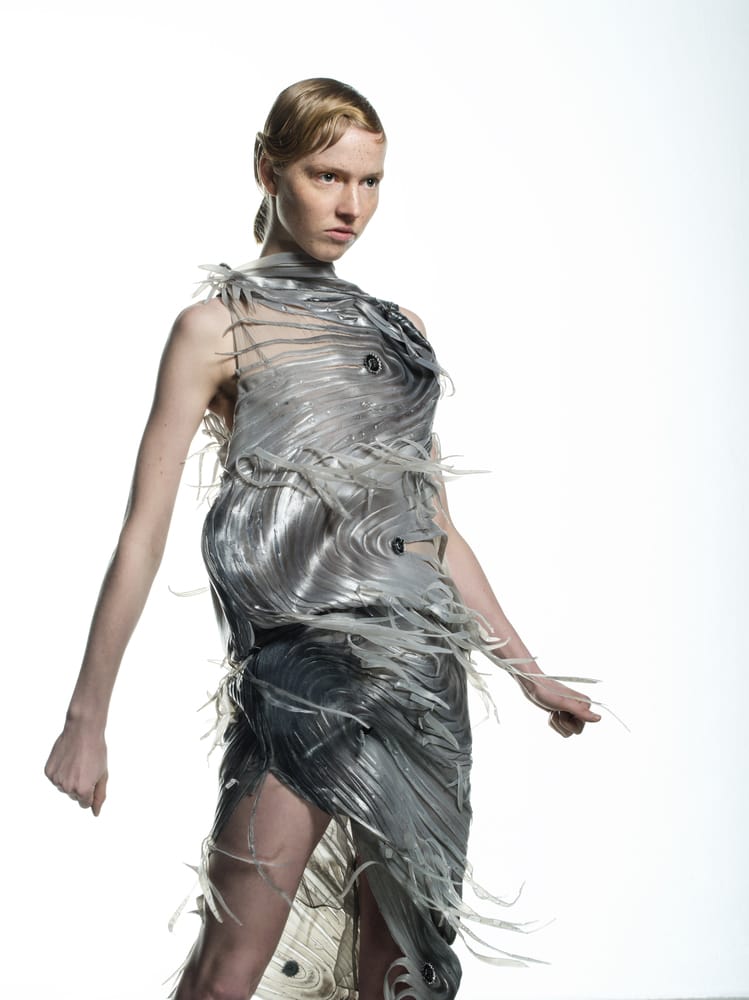
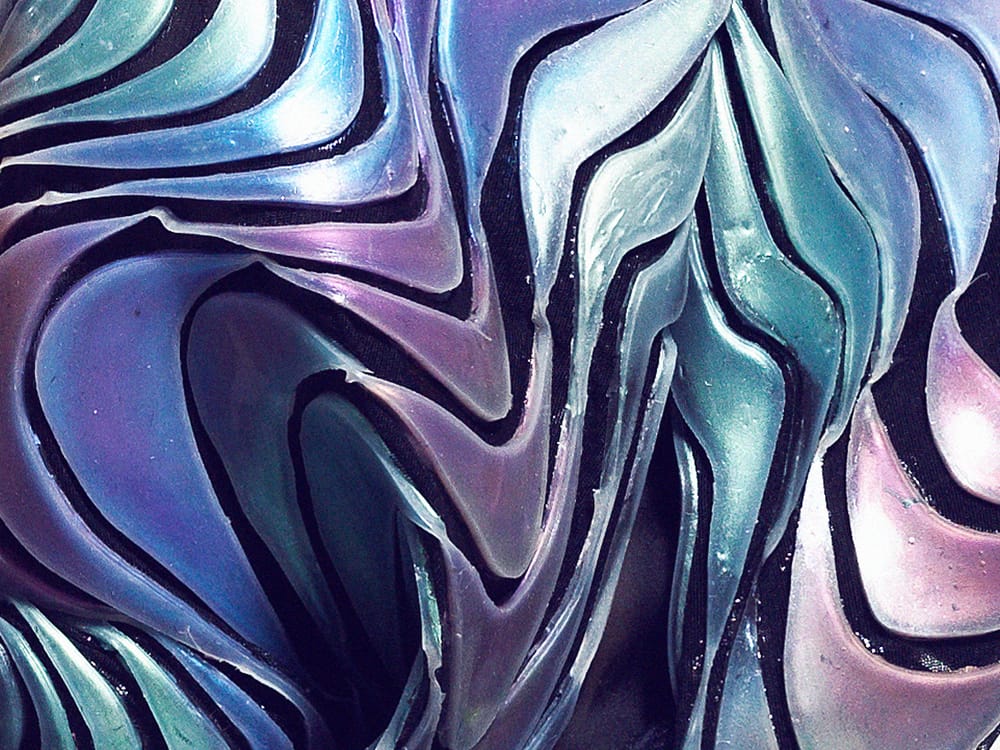
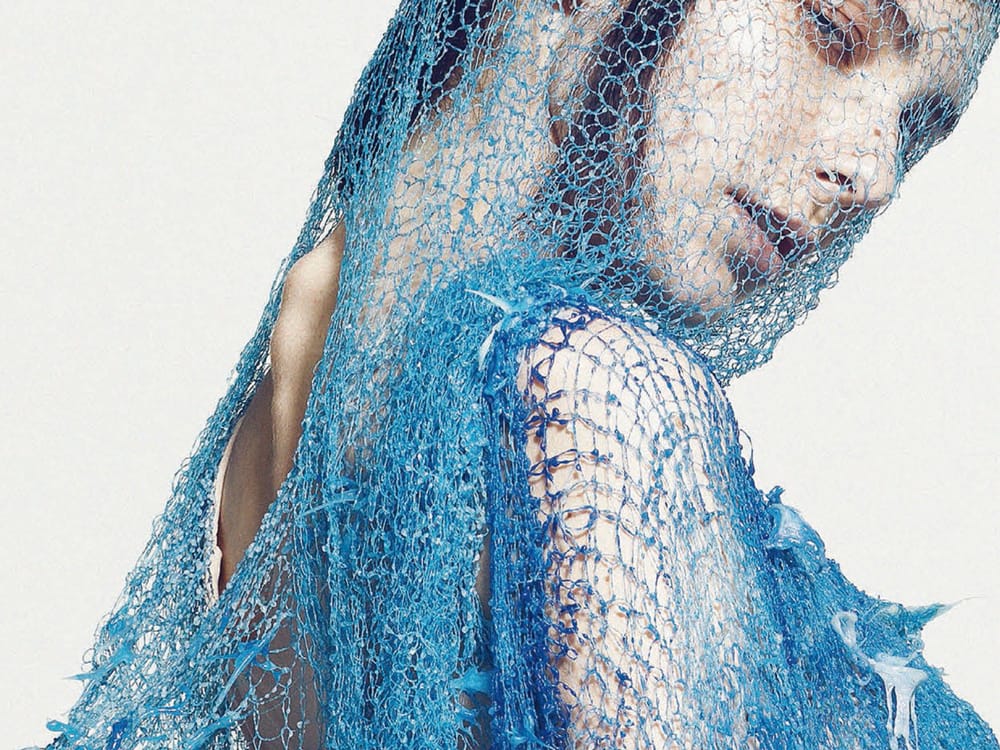
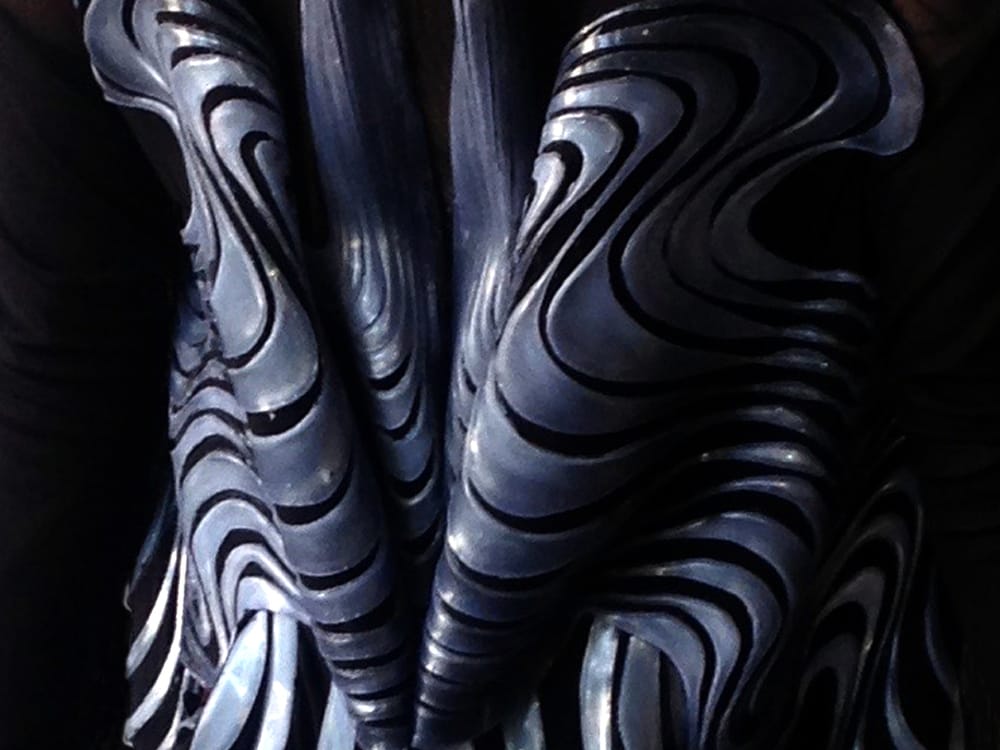
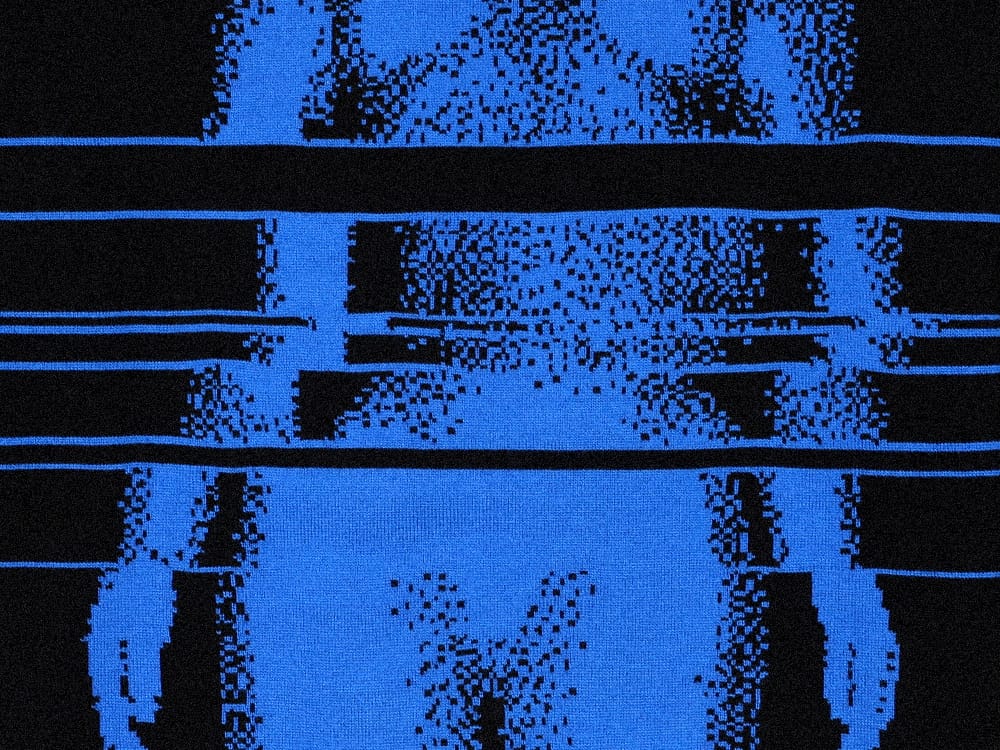

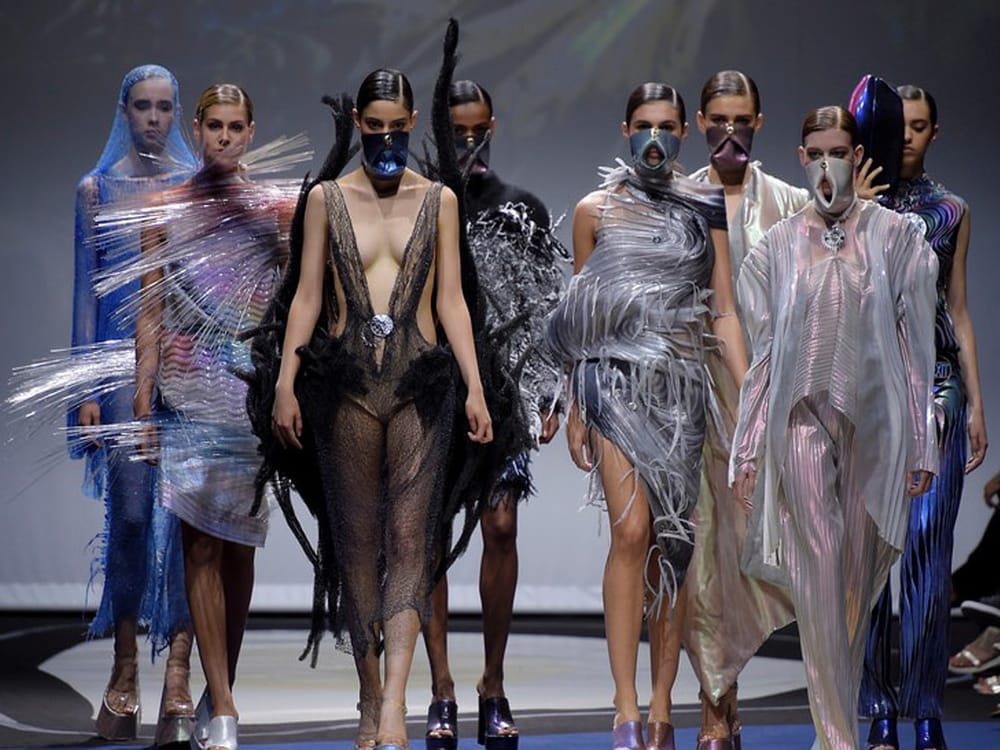
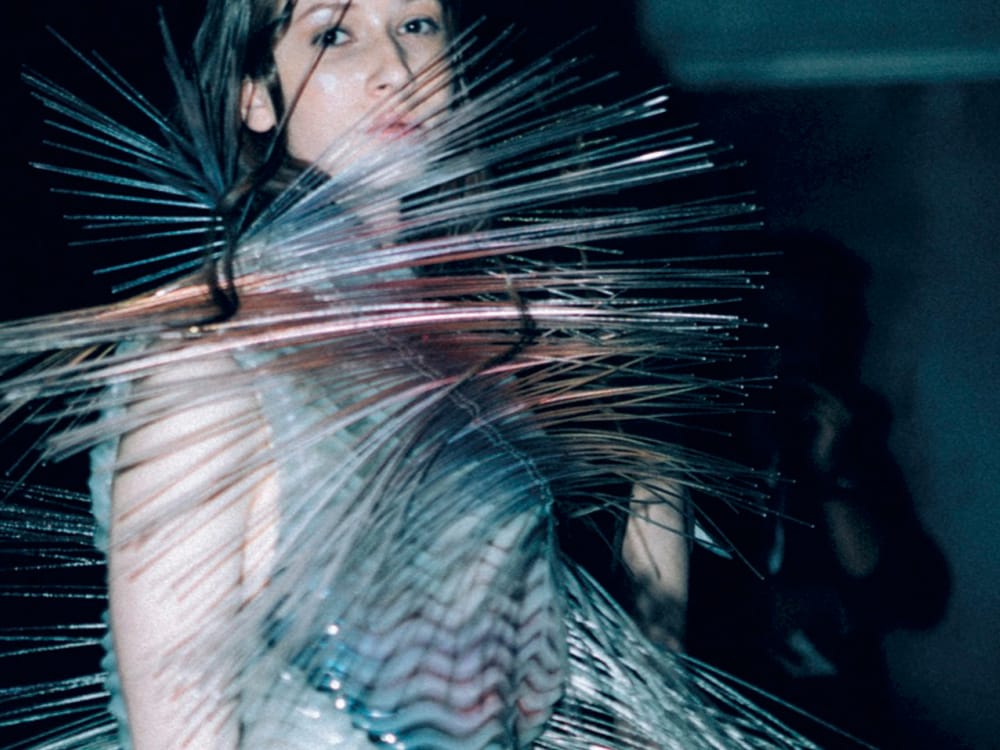
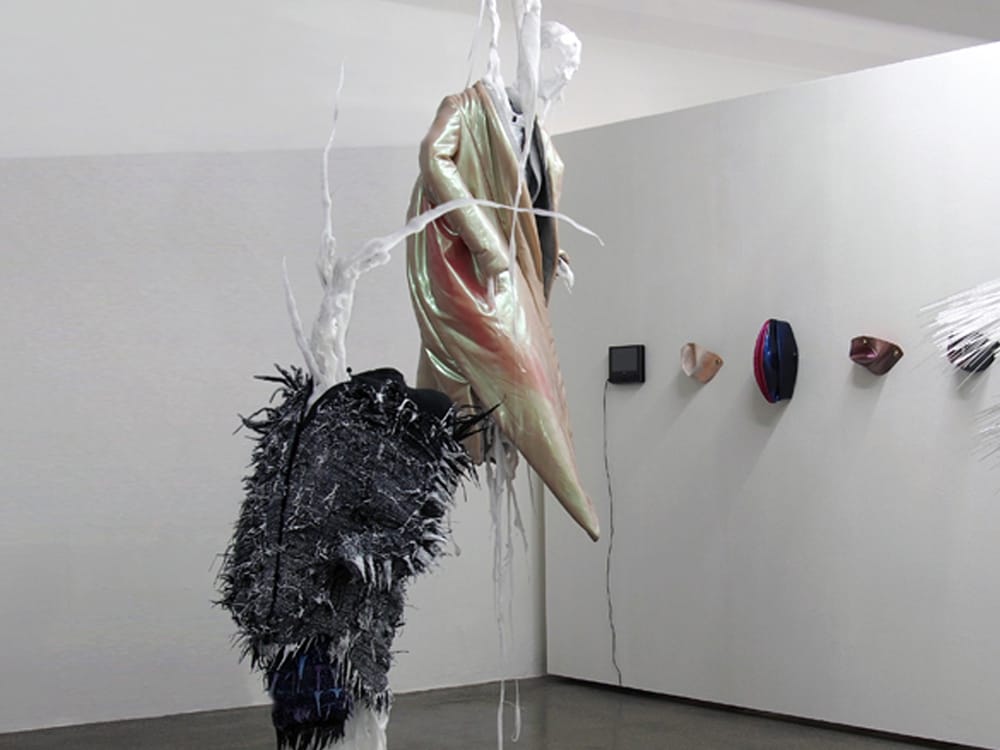
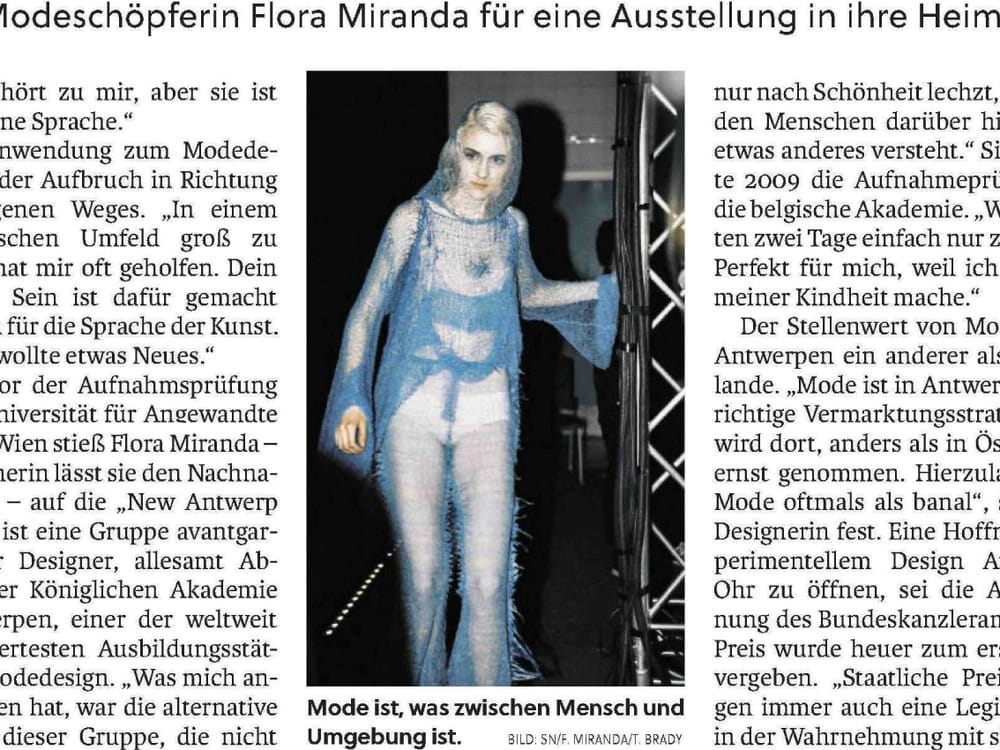
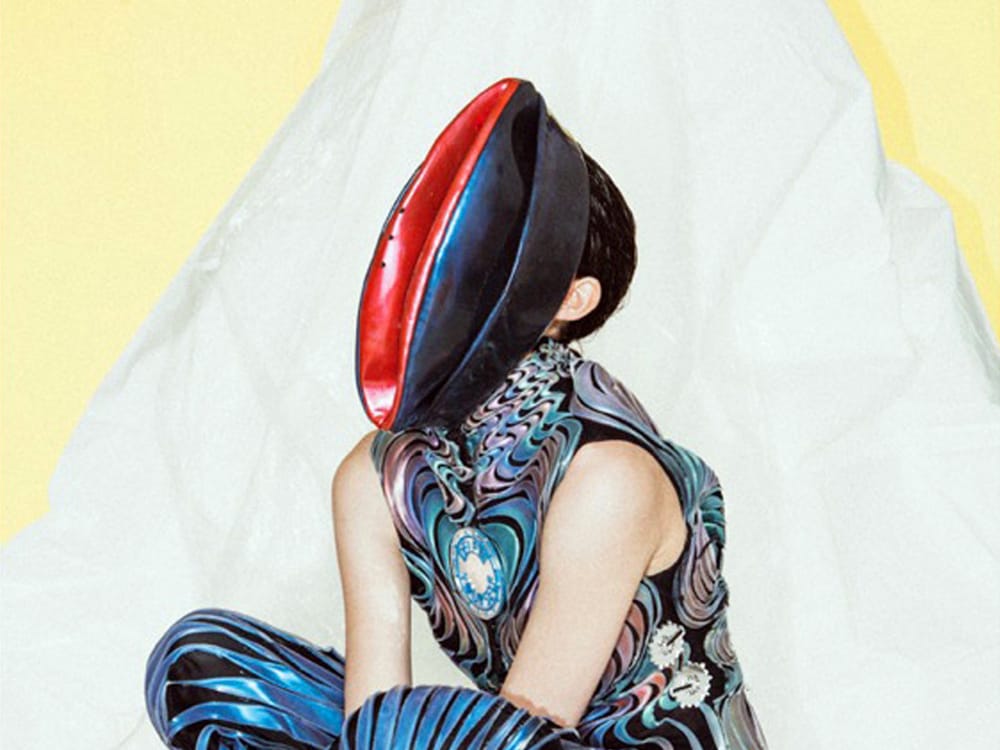
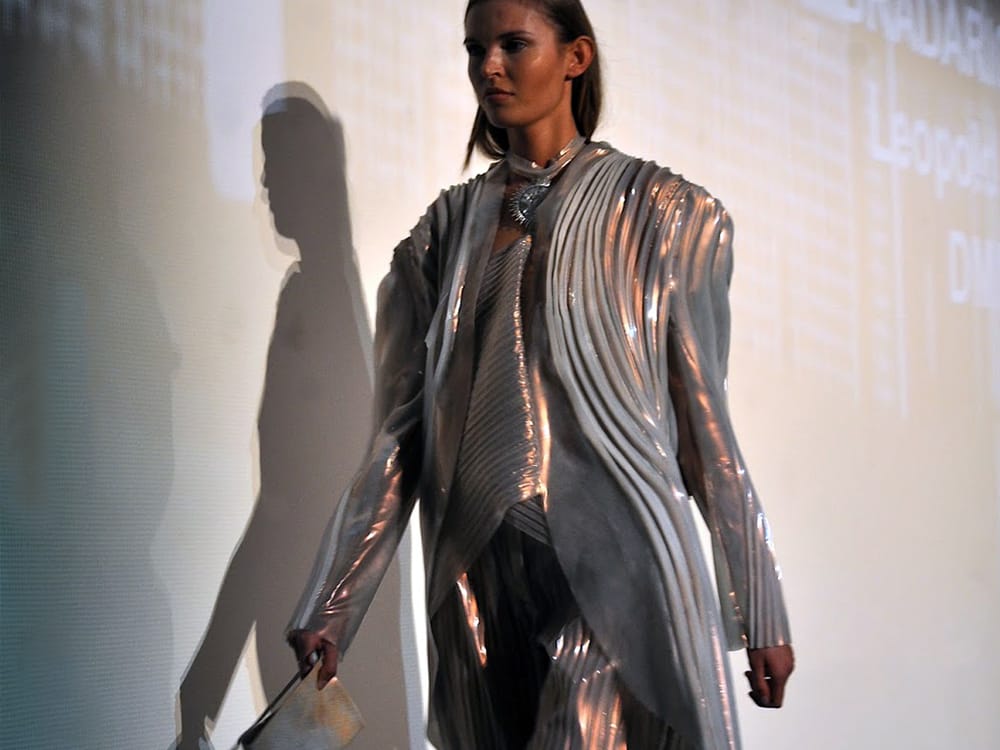
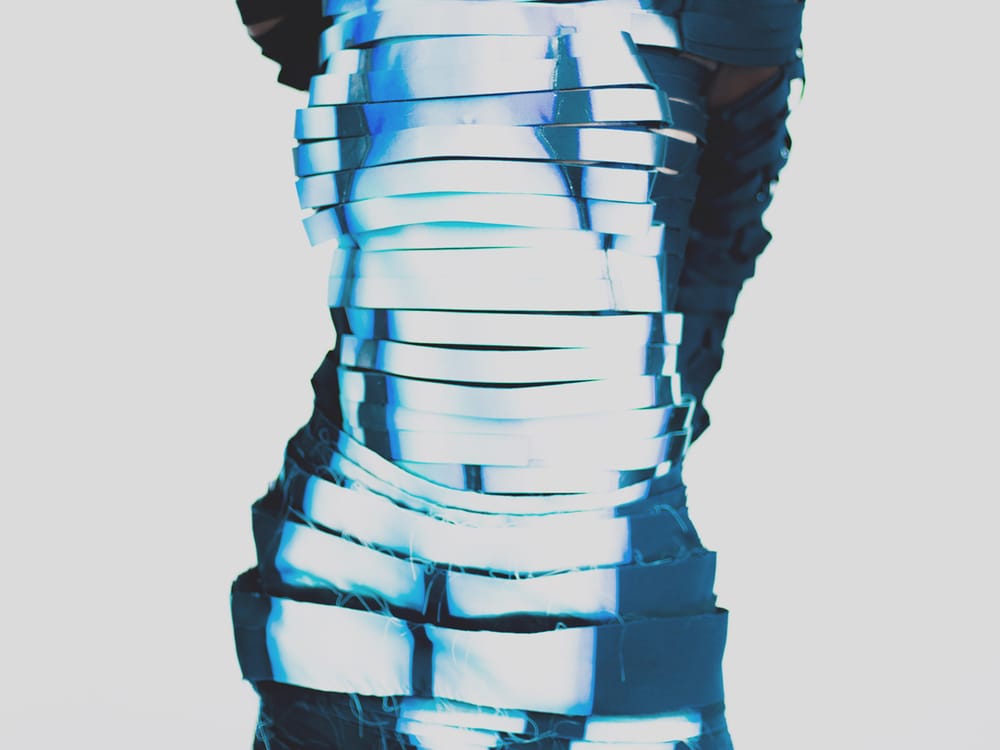
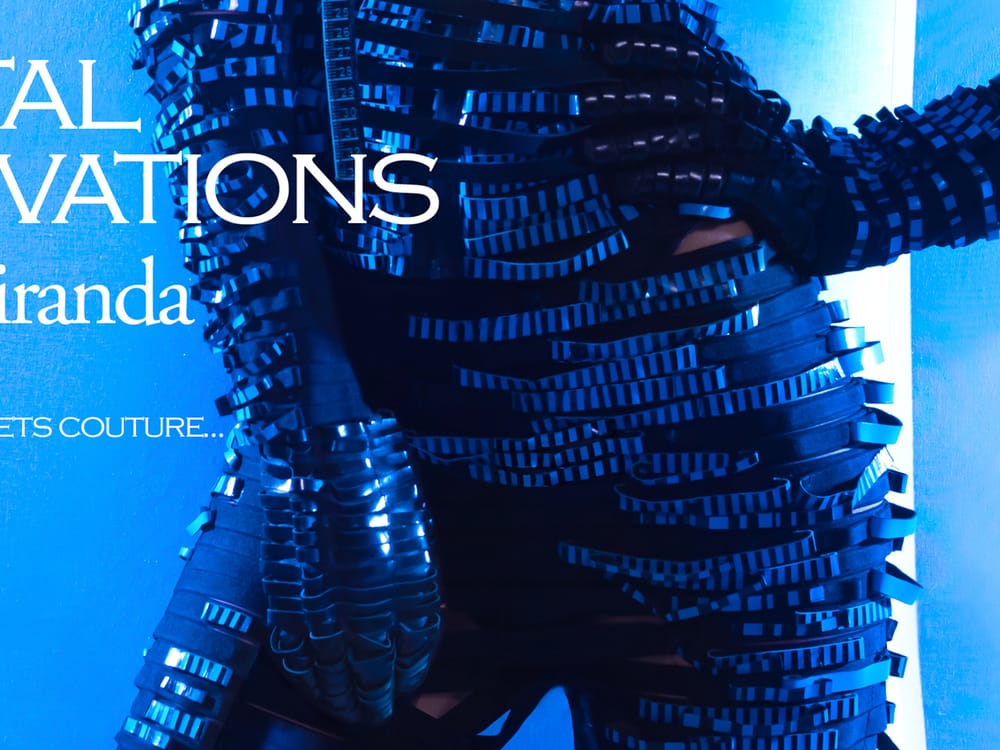

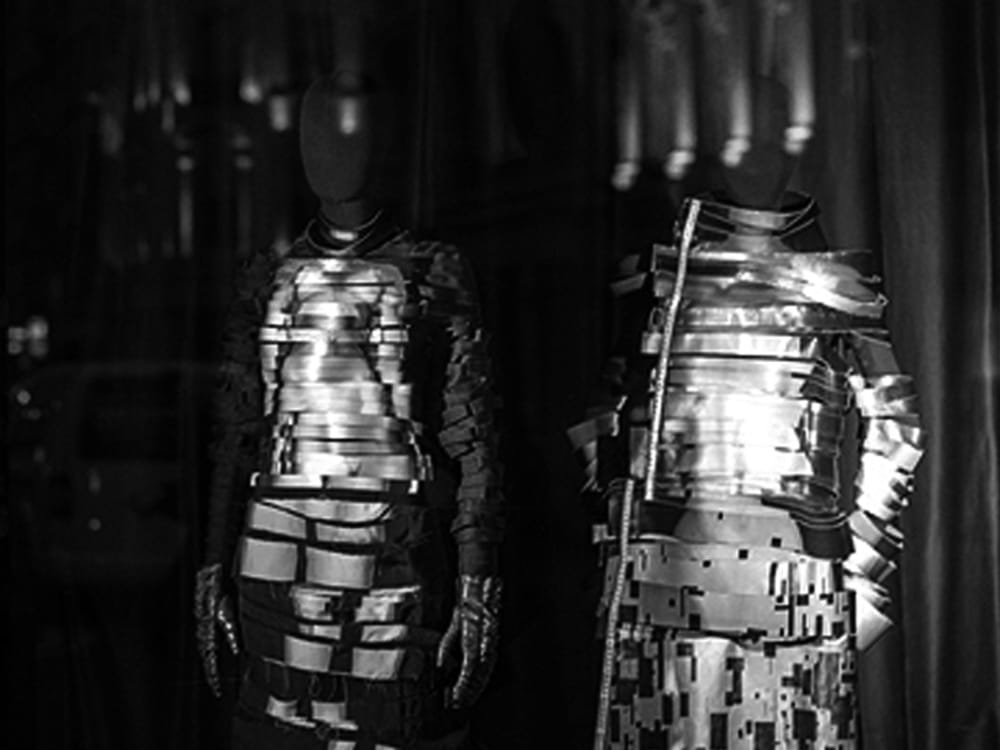
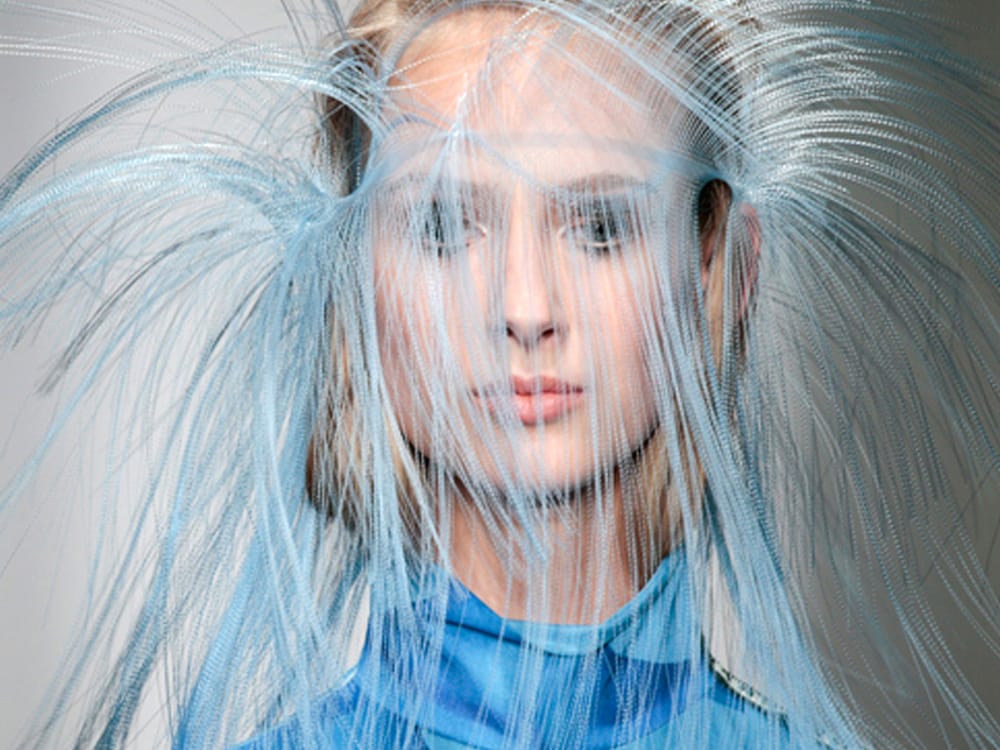
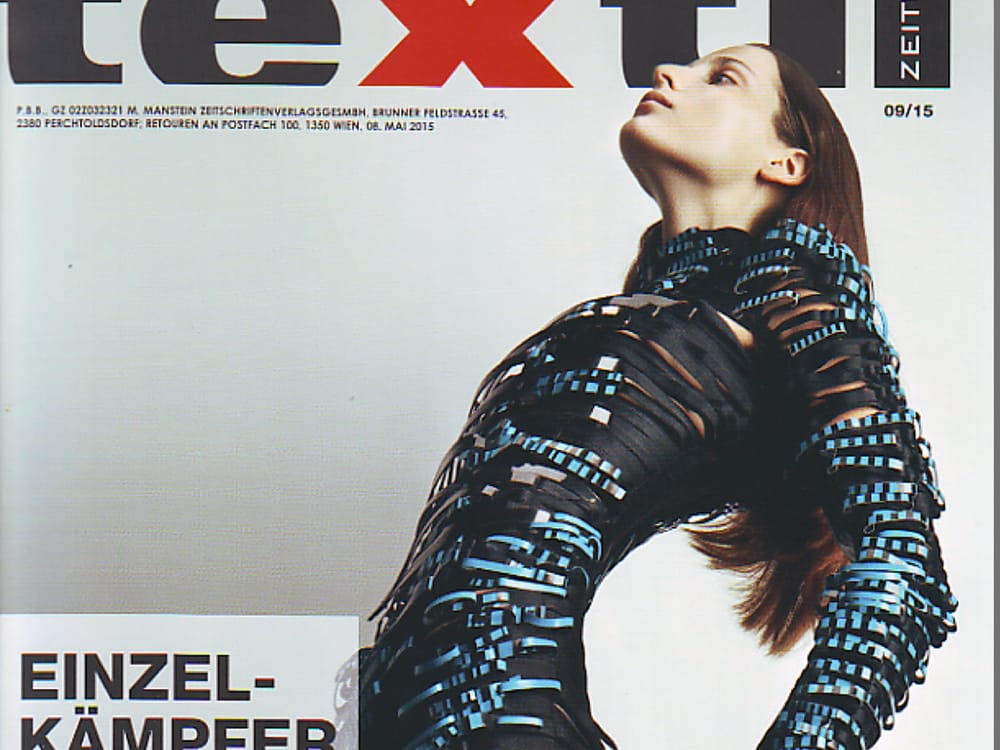
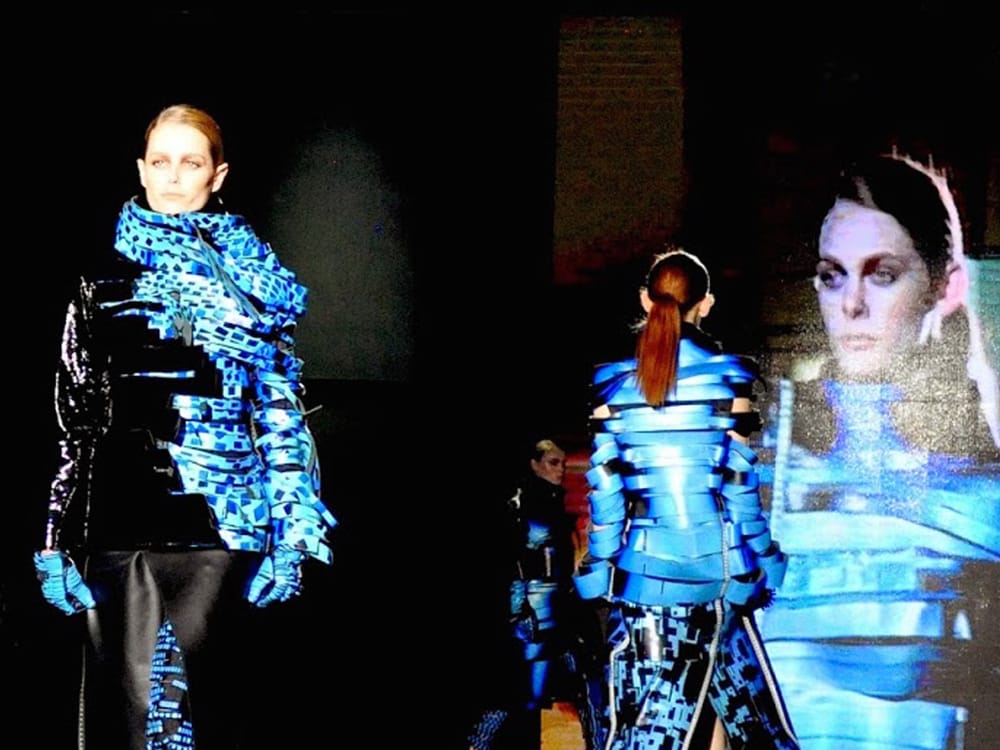
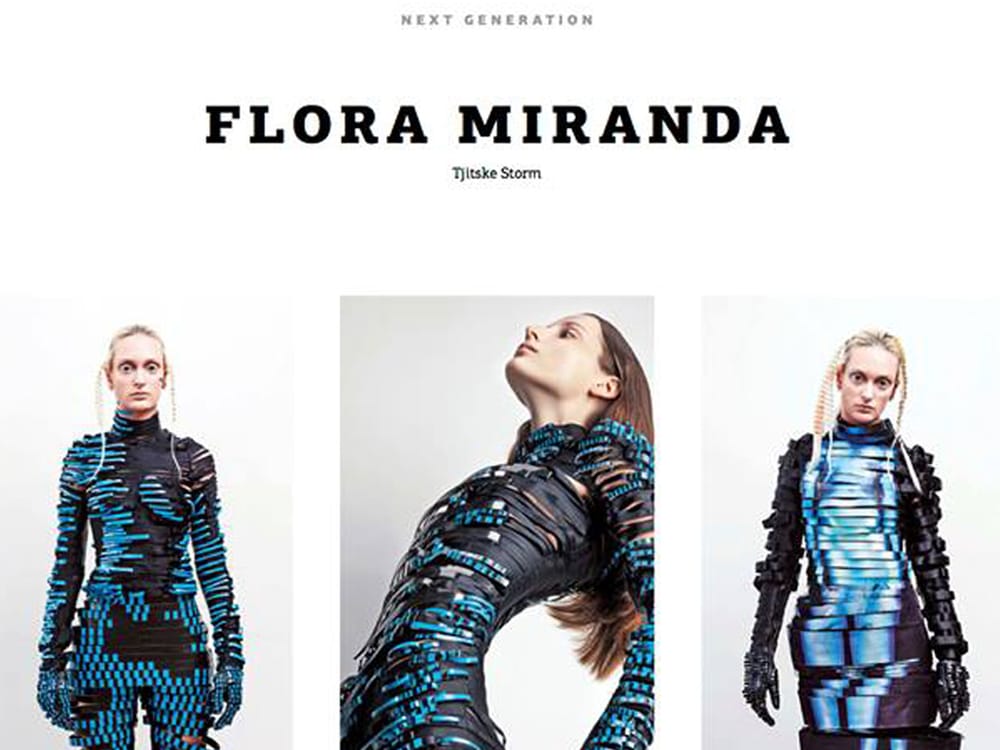
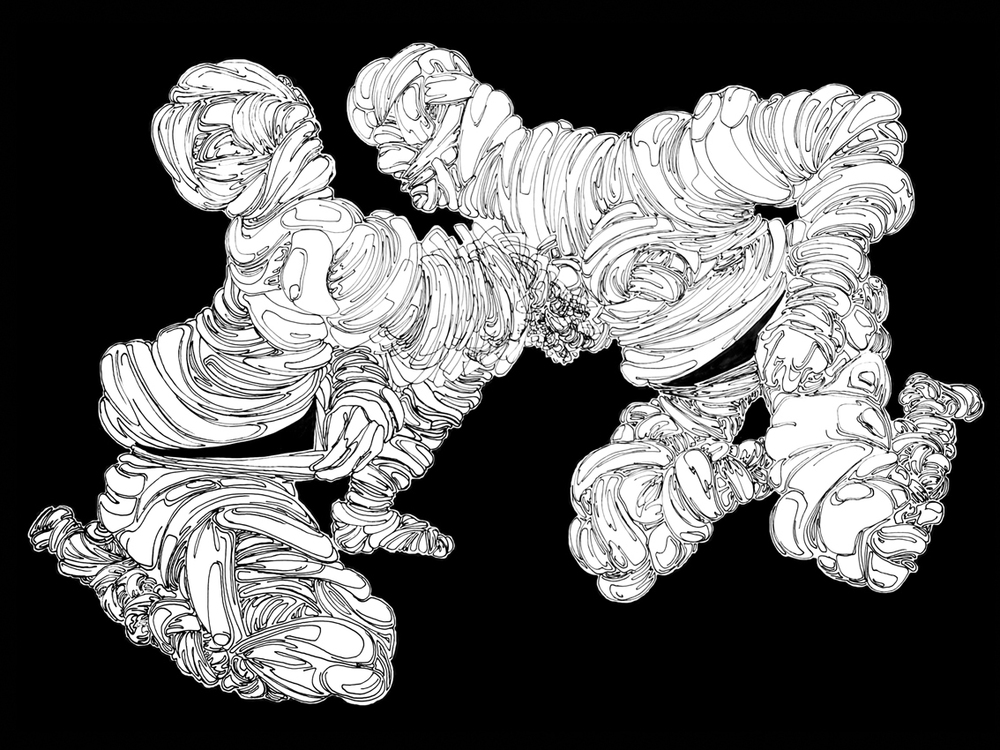
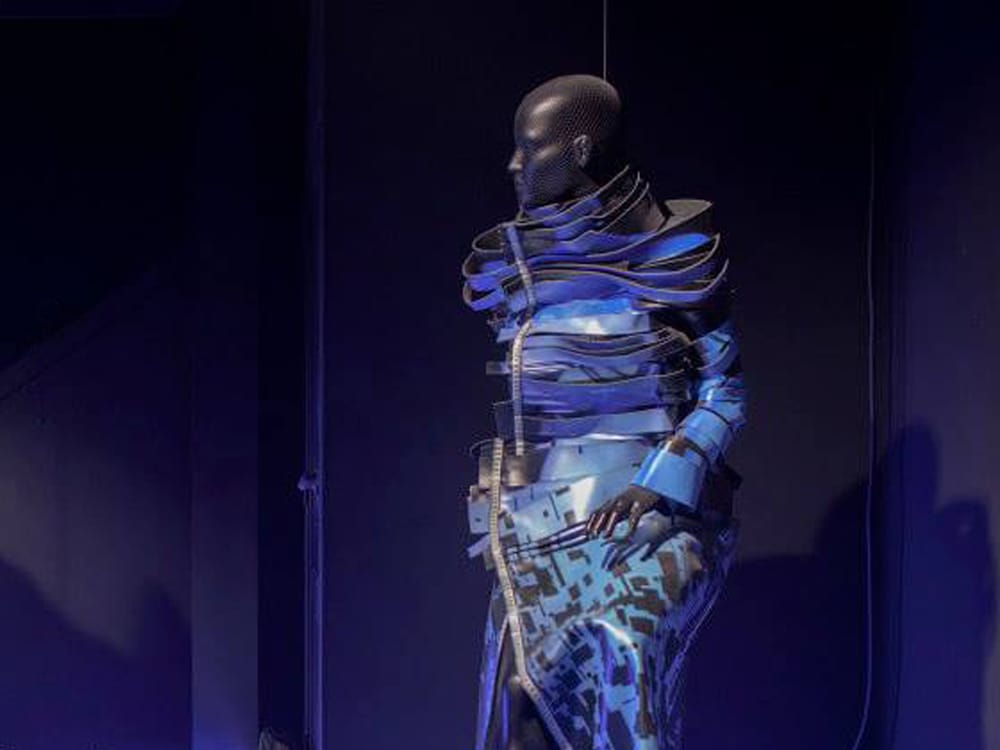
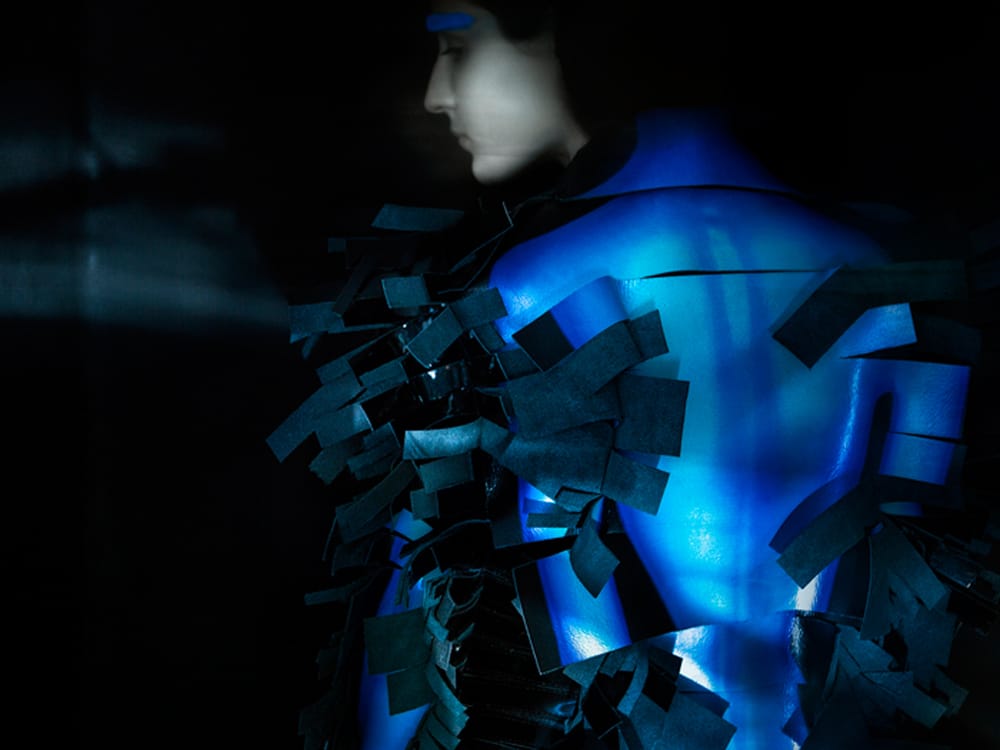

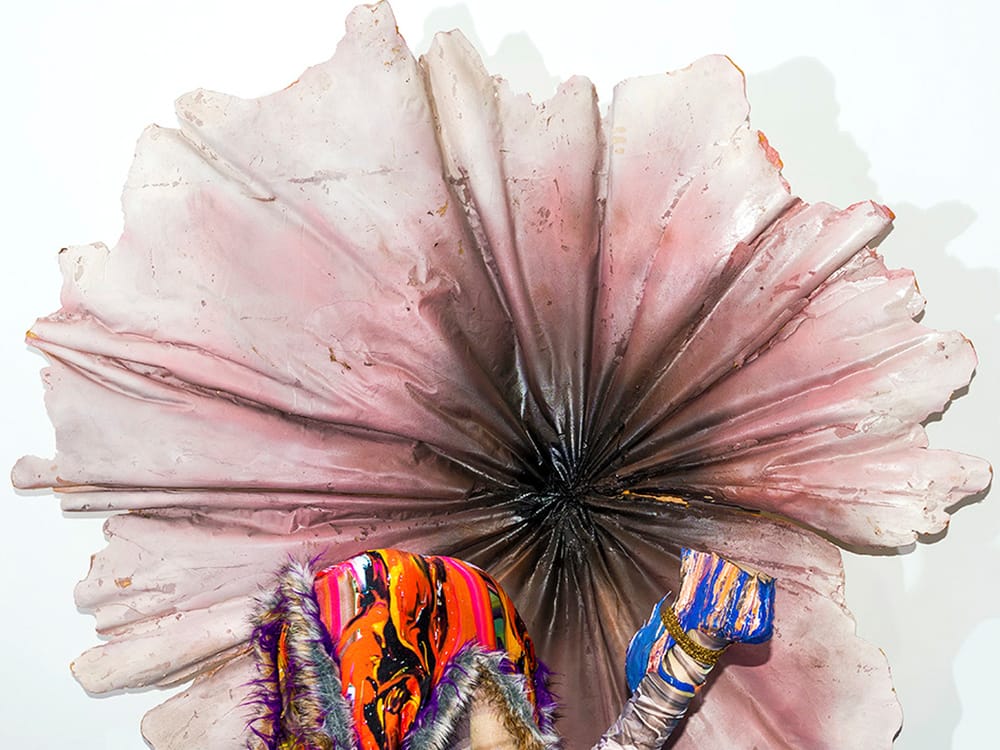
Open up your mind!
Flora Miranda is an Austrian fashion designer, based in Antwerp, Belgium.
Throughout her work the main focus is on the human being, one’s body, senses and perception, performing in an actual or virtual reality. Gradually the designer is taking away all restrictions and practical considerations in fashion towards the real expression of the self and a multi-dimensionally developed personality.
In this sense Flora strives to create deep dreams, desires and motives.
Be extreme to the point of powerlessness!
Flora embraces the experiment as a vehicle towards broadening established standards of craftsmanship and design. Fuelled by a friction of intellectual concepts and intuitive production she is challenging the obsolete idea of high couture and exploring techniques that are detached from design tradition or history.
The world of Flora is extraterrestrial, extravagant, extreme, exclusive and exciting to revel in mystery and surprise.
For collaborations, speculative applications or internship requests, please send your application to studio@floramiranda.com.
studio@floramiranda.com
+32 484 10 48 83
Atelier: Oostenstraat 50 bus 35, 2018 Antwerp, Belgium
Office: Liechtensteinstraße 20/32, 1090, Austria
Facebook – Instagram – LinkedIn
Logo by Tom Tosseyn
Web by Matteo De Wint
Copyright © 2025, Flora Miranda
Education
2009 – 2014
Master in fashion design at the Royal Academy
of Fine Arts Antwerp under Walter van Beirendonck
and Dirk van Saene
2000 – 2009
Musisches Gymnasium Salzburg, focus on music
and fine arts
Awards
2024 – Winner Henry Van De Velde Award, Belgium
2024 – Nomination Changemaker of the Year, Belgium
2023 – Winner Mercur Innovation Award, Austria
2023 – Nomination Henry Van De Velde Award, Belgium
2021 – 3rd Prize for Sculpture Design in Uelzen, Germany
2020 – Nomination Henry Van De Velde Award, Belgium
2019 – Winner Good Design Award, Chicago
2018 – Winner Justus Brinckmann Prize, Germany
2017 – Winner Rado Starprize, Austria
2016 – Winner Outstanding Artist Award, Austria
2016 – Finalist International Talent Support, Italy
2015 – Winner Mittelmoda Award for Technology Use, Italy
2013 – Winner Cocodrillo Shoe Award, Belgium
Solo Expos
2024
“Immaterial Girl”, Zebrastraat Gent
2023
“Contemporary Fashion Showcase” Geymüllerschlössel,
MAK Vienna
“Router”, installation at 6 historical locations in Antwerp
2022
„I Am Digital“, Austrian Embassy in Brussels and Luxembourg
„End Of Matter“, Augustenborg Project Denmark
Group Expos
2025
“Activating Futures - Vienna Contemporary Art”, The Hai Museum of Art Shanghai
“Susanne Bartsch —Transformation!”, Museum für Gestaltung Zürich
“Laetitia Bica”, MAD Brüssel
“AND, OR, or NOT”, Designforum Vienna
2024
“KI und die Kunst”, Traklhaus Salzburg
“Fashion Moves”, MAD Brussels
“Heels”, Museo de Arte Zapopan, Mexico
“Duos en Résonance”, MAD Brussels
“Happy Fragments”, Galerie Petra Seiser Attersee
2023
“Oude Wijn/Nieuwe Zakken”, De Warande Turnhout
2022
“Crafting Fashion for Possible Futures”, Kulturforum New York
2020
„Show Off“, Museum für Angewandte Kunst Wien
„Making Fashion Sense“, Haus für Elektronische Künste Basel
2019
„Body Control“, Museum Arnhem
„Let’s Dance“, Gemeentemuseum Den Haag
„Anarchy of Form“, DRJ Art Projects Berlin
„Format“, Z33 Hasselt with AI-Research “LaLaLand”
„Innovative Costume“, State Historical Museum Moskow
„Schwerpunkt Design II“, Traklhaus Salzburg
„Opium“, Centre Mars Moskow
2018
„Jewellry-Fashionart“, Galeria Carré Doré Monaco
2017
„Shoetopia“, Valade Family Gallery Detroit
„Österreichische Mode“, Me Collectors Room Berlin
„Forecast Festival“, Haus Der Kulturen Der Welt Berlin
„Sport/No Sport“ Museum für Kunst und Gewerbe Hamburg
2016
„Refashioning Austria“, Liu Haisu Art Museum Shanghai
„Displaying Fashion, Displaying Art“, Galerie 5020 Salzburg
„Disintegration of The Body in the Digital Age“, Somerset House London
2015
„Digital Disturbances“, Fashionspace Gallery London
„The Future of Fashion is Now“, Boijmans Museum
„Seductive Precursors“, Dutch Design Week Eindhoven
Projects
2025
- Digital couture presentation “The Logician”
- Costumes “Lost Limits” for Marit Wolters and Anne Glassner, Mies Van Rohe Pavillion Barcelona
- Costumes “REbis” for Arco Renz, Stuk Leuven
- Generative Design for Isabel Belgium
- Performance with Esther Stocker at Haus Konstruktiv, Zürich
2024
- Costumes for “People United” for BOD and Igor Levit at Bregenzer Frühling
- Costumes for “Precious Camouflage” for Charlotte Triebus, Tanzhaus NRW
- Generative Design for 100 Rooms for LIFE is ART, Antwerp
- Generative Design for FFG Vienna
- Generative Design for LCL Belgium
2023
- Digital couture presentation “Phaser”
- Costumes for “Ballet of (Dis)-Obedience” for BOD at Schauspiel Köln
- Costumes for “RE” for Arco Renz, Les Brigittines Brussels
- Costumes for “Body Without Organs” for BOD at Schauspiel Köln
- Costumes for “New Ballet Méchanique” for Opera Ballet Vlaanderen
- Publication of the art book “I Am Digital”
- Digital fashion project “Antwerp Cyber 6”
- Digital fashion project “Iconic Industries”
- Generative design with and for Cresco, Cegeka, KBC, MYRRHA, ADVANTAGE AUSTRIA, S(n)-Trackers, Super8
2022
- Digital couture presentation “Free Computing”
- Costumes for “Petruschka” for Ballet Of Difference at Oper Köln
- Costumes for “Xerrox” for Ballet Of Difference
- Costume for Wiener Festwochen “The Machine Never Stops”
2021
- Costumes for “Made All Walking” for BOD at Schauspiel Köln
- Digital couture presentation “Hyperreal”
2020
- Digital couture presentation “Time To Tech Up”
- Costumes for “Spiral” for Ballet Of Difference at Schauspiel Köln
- Costumes “One For The Money” for Ballet Of Difference at Schauspiel Köln
- Couture presentation at Garage Lübeck Paris “Cyber Crack”
2019
- Costumes for “New Ocean” for Ballet Of Difference at Schauspiel Köln
- Couture presentation at Elysees Biarritz Paris “LaLaLand”
- Couture presentation at Le Grand Rex Paris “Deep Web”
- Art Watch “Deep Web” for Rado, Switzerland
2018
- Costumes for “Roughhouse” for Ballet Of Difference at Schauspiel Köln
- Couture presentation at Hotel Westin Paris “Ready To Die”
- Couture presentation at Advantage Austria Paris “Pneuma”
2017
- Participation in “Monsoon” at Stuk Leuven
2016
- Fashion Show, Vancouver Fashion Week
- Generative design for Unmade, London
- Freelance at Iris Van Herpen
2015
- Fashion Show at Los Angeles Fashion Week
- Fashion Show at Novi Sad Fashion Week
- Fashion Show at Fashionclash Festival Maastricht
- Freelance at Iris Van Herpen
2014
- Freelance at Iris Van Herpen
Solo exhibition “Come As You Are” by photographer Laetitia Bica at MAD Brussels. Featuring Flora Miranda garments from “The Logician” Collection.
Henry van de Velde Award
KAP Podcast #89 KI in der Haute Couture
“The Art Of Becoming” Vogue Netherlands editorial featuring the Flora Miranda x Esther Stocker “Crincle Dress”.
Flora Miranda’s collaboration on costumes with Ballet Of Difference.
As part of the (Con)temporary Fashion Showcase in the historic ambience of the Geymüllerschlössel, the designer Flora Miranda is a guest with her futuristic-looking haute couture.
Vogue Portugal editorial featuring the Flora Miranda “Memories Dress”.
Behind The Blinds editorial by Gregory Derkenne, featuring the “Cracked Screen”, “Hug” and “Polarisation” dresses by Flora Miranda.
“I Am Digital” takes you on an intimate journey through Flora Miranda’s extraterrestrial world of phygital identities.
The archival “Warp Coat” has been published in its virtual form. The creation is realised as a part of the “Antwerp Cyber Six” project by Mutani and sold as NFT.
De Warande celebrates 50 years of its existence with a daring exhibition concept: 25 artists that were exhibited during the history of De Warande could each invite one new artist to this show.
Editorial BELEZA in Vogue Portugal with the Flora Miranda “Polarisation Dress”. Photographed by Bohdan Bohdanov, styled by Pablo Patane.
Flora Miranda exhibits the ‘Time To Tech Up’ dress at Austrian Cultural Forum New York, in the group exhibition ‘Crafting Fashion Possible Futures’.
Flora Miranda designs the costume for the piece ‘Die Maschine Steht Nicht Still’ by Caroline Peters and LEDWALD at Wiener Festwochen.
Musician and performer Gina Matiello wears the Flora Miranda ‘Radiation’ dress during the evening ‘Automatic Speech’ at Künstlerhaus in Vienna.
A development of a limited edition of frequency-generated scarves in cooperation with Ballet Of Difference and Dan Tapper.
Editorial with Rigoberta Bandini wearing pieces by Flora Miranda.
Travelling exhibition ‘I Am Digital’ by Flora Miranda, first presentation at the Residence of Austrian Ambassador Dr. Elisabeth Kornfeind in Brussels.
Editorial with pieces by Flora Miranda in Harpers Bazaar Arabia
Red Bulletin portraits Flora Miranda in text and image
Dominique Nzeyimana interviews Flora Miranda for MoMu Antwerp
Editorial with pieces by Flora Miranda in Harpers Bazaar Arabia
Vogue Singapore Editorial “Some Like it Haute”
Sita Abellan wears the Flora Miranda “Venus Dress” and “Cyber Crack Shoes” in the “Planet Indigo Calendar”. Styled by Stephania Yepes and photographed by Carlota Guerrero.
Arca wears the Flora Miranda “Cyber Crack Shoes” on the cover of Paper Magazine. Styled by Stephania Yepes
The Flora Miranda “Machine Learning Applied” dress is exhibited at MKG Hamburg.
Flora Miranda is part of the documentary show on Austrian fashion since 1980, at MAK Vienna.
The Flora Miranda “Digital Rosebush Dress”, created for Signe Pierce is exhibited at HeK Basel.
Flora Miranda and Rado win a ‘Good Design Award’ for the ‘Deep Web’ watch.
The Flora Miranda “Stardust Dress” and “React Outfit” are exhibited at Museum Arnhem.
The Flora Miranda “Red Diffusive Light Dress” is exhibited at Kunstmuseum Den Haag.
Flora Miranda presents her ‘sexy AI’ research.
Flora Miranda designs limited edition ‘Deep Web’ watch for Rado
Flora Miranda wins the Justus Brinckmann Support Award.
The Numerical Self: A Step Inside Flora Miranda Future Fashion
Flora Miranda uses computer data to create couture
A cooperation between Renault and Flora Miranda.
Editorial photographed by Domen/VanDeVelde for Mirror Mirror Magazine, highlighting a selection of dresses from the Flora Miranda ‘Press Reset’ collection.
Seasonal Lighting Fashion Architecture
Diese Designerin kreiert Kleidung aus deinen Facebook-Posts
How Flora Miranda is Translating Our Data Into Luxury Fashion
During Forecast Festival, Flora Miranda launches the IT Pieces web tool.
Time Warp by Flora Miranda wins Rado Starprize Austria
“Makes You Shiver”
“Restructured” by Elsa Okazaki
The “Delete Yourself” outfit is on display during “ReFashioning Austria” at Liu Haisu Art Museum in Shanghai.
The Flora Miranda “Erase Your Face” and “End Of Matter” outfits are featured in Parnass Kunstmagazin.
For the “Kraut und Gras” edition of KoFoMi Flora Miranda created the outfit for dancer Karl Baumann.
Flora Miranda designs knitwear for the innovative startup Unmade.
The Flora Miranda “Warp Outfit” is exhibited at Museum für Kunst und Gewerbe Hamburg.
Flora Miranda was selected as finalist for the “Utopia” edition of International Talent Support in Trieste, Italy.
The journalist Hildegard Suntinger, known for her thoroughly investigated articles, creates a portrait of Flora Miranda for Wiener Zeitung.
“Displaying Fashion, Displaying Art” at Galerie 5020 Salzburg exhibits a selection of pieces from Flora Miranda’s collection PRESS RESET.
Salzburger Nachrichten publishes an in-depth portrait of Flora Miranda.
The canadian photographer Trevor Brady captures Flora Miranda’s collection “Press Reset” for The Commission Magazine.
Flora Miranda receives the Outstanding Artist Award for Experimental Fashion Design by BKA in Vienna. The awarded collection “Press Reset” is presented during Take Festival.
London based photographer John Mc Grath captures outfits by Flora Miranda.
The Flora Miranda “Glitch Suit” and “Warp Dress” are published within the editorial “Digital Innovations” in Al Sharkiah Magazine, shot by Nahoko Spiess and styled by Suna Moya.
The Flora Miranda “WE LIKE YOU” furry psychedelic dress on Vogue Italia, shot by Rachel Jeraffi.
The Flora Miranda “Warp Coat” and “Warp Outfit” are presented within the exhibition “Digital Disturbances” at Fashionspace Gallery in London.
Flora Miranda is presenting her work at various moments of Fashionclash Festival: In the Fashion Show Program, the Gender exhibition and SHOWPIECES expo at De Bijenkorf.
The Flora Miranda “Glitch Suit” makes the cover of Textilzeitung issue 9 of 2015. Picture by Ronald Stoops.
Flora Miranda receives the Mittelmoda Fashion Award for the Use of Technology.
WeAr Magazine presents Flora Miranda within their “next generation of designers” section, issue 1 of 2015.
In collaboration with Glamcult Magazine, Museum Boijmans Van Beuningen exhibits the graphic work “Hide and Seek” by Flora Miranda.
The Flora Miranda “Warp Coat” is exhibited at the Modebelofte 2014, named “Seductive Precursors”, during Dutch Design Week.
The Flora Miranda “Disintegrative Jacket”, photographed by Ronald Stoops is published as a part of the “Transdisciplinary Design” Issue of Viewpoint Magazine.
The Flora Miranda graphic work “Openinghours” is published in Novembre Magazine issue 9, Spring/Summer 2014
Belgian photographer Cedric Van Turtelboom captures Flora Miranda’s “www.sex.coll” outfits.

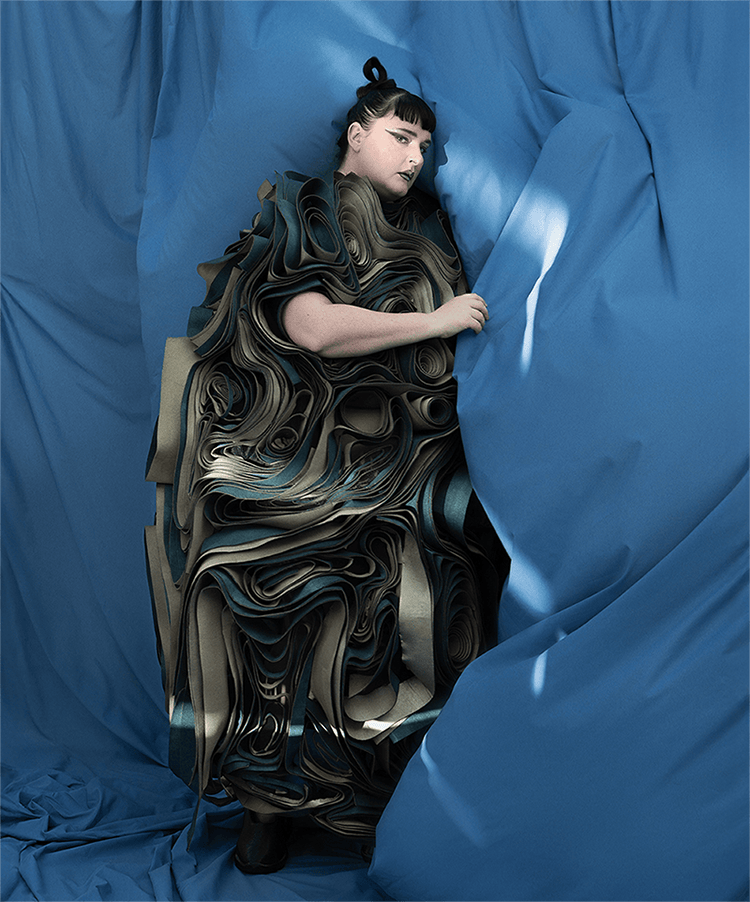

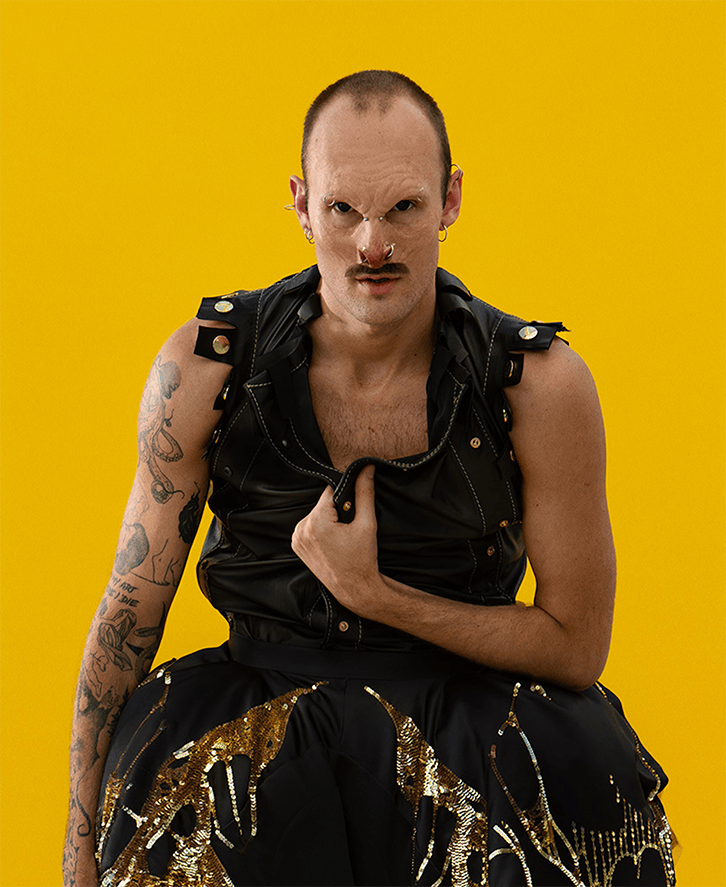
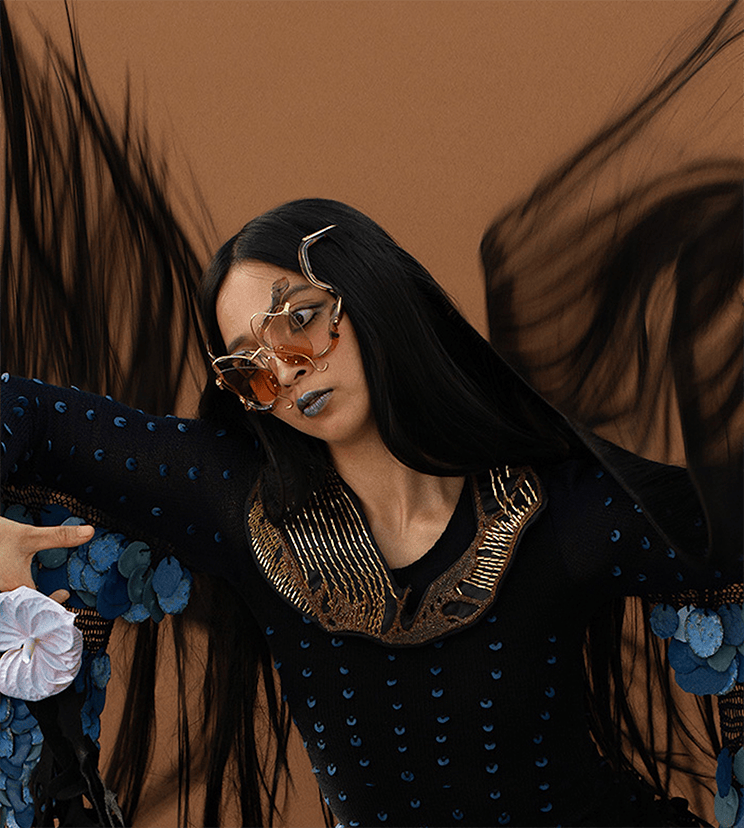
Solo exhibition “Come As You Are” by photographer Laetitia Bica at MAD Brussels. Featuring Flora Miranda garments from “The Logician” Collection.
Styled by Jennifer Defays. Worn by Arno Verbruggen, Daphne Agten and Christina Guieb. Makeup by Maria M. Zola.
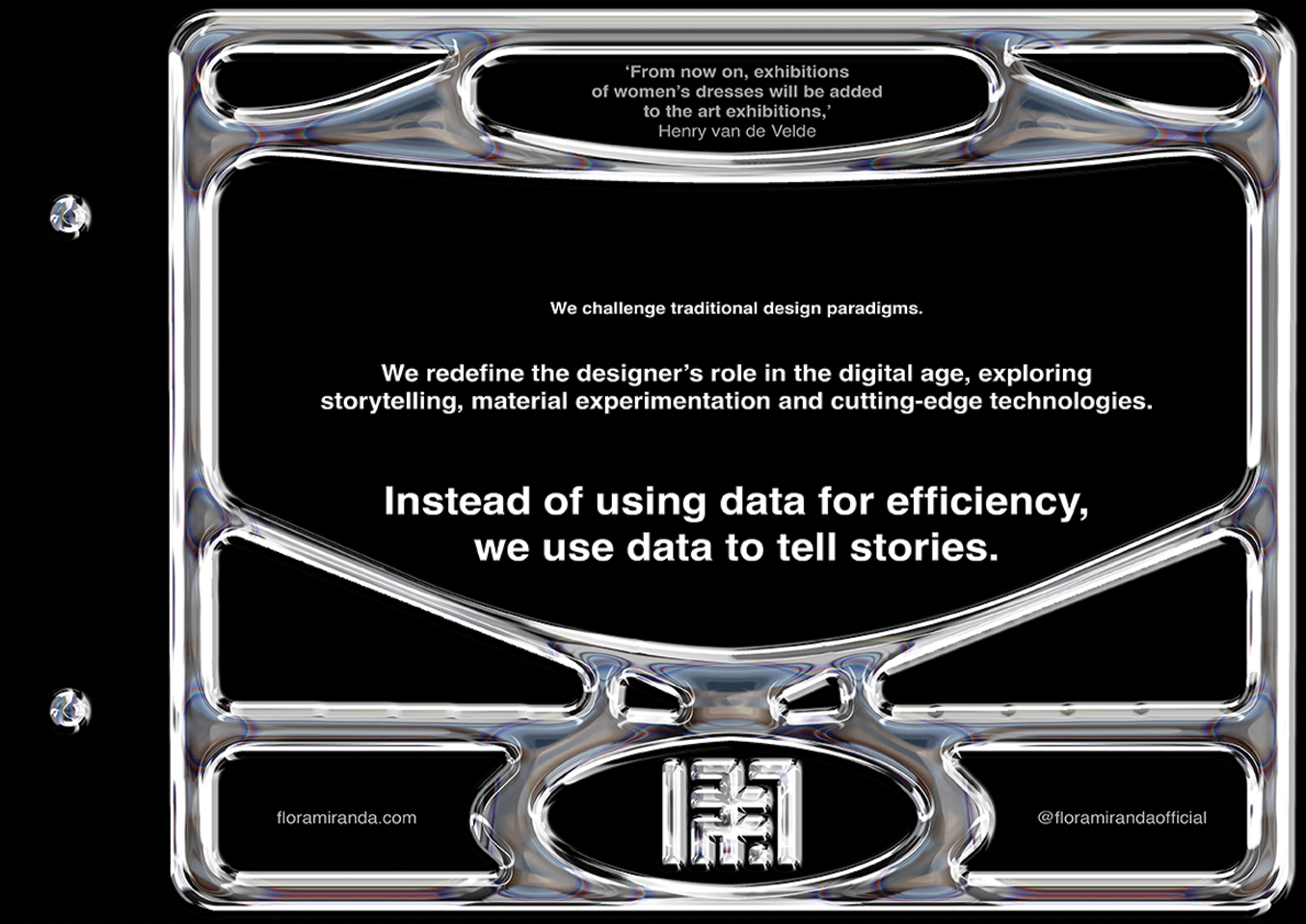
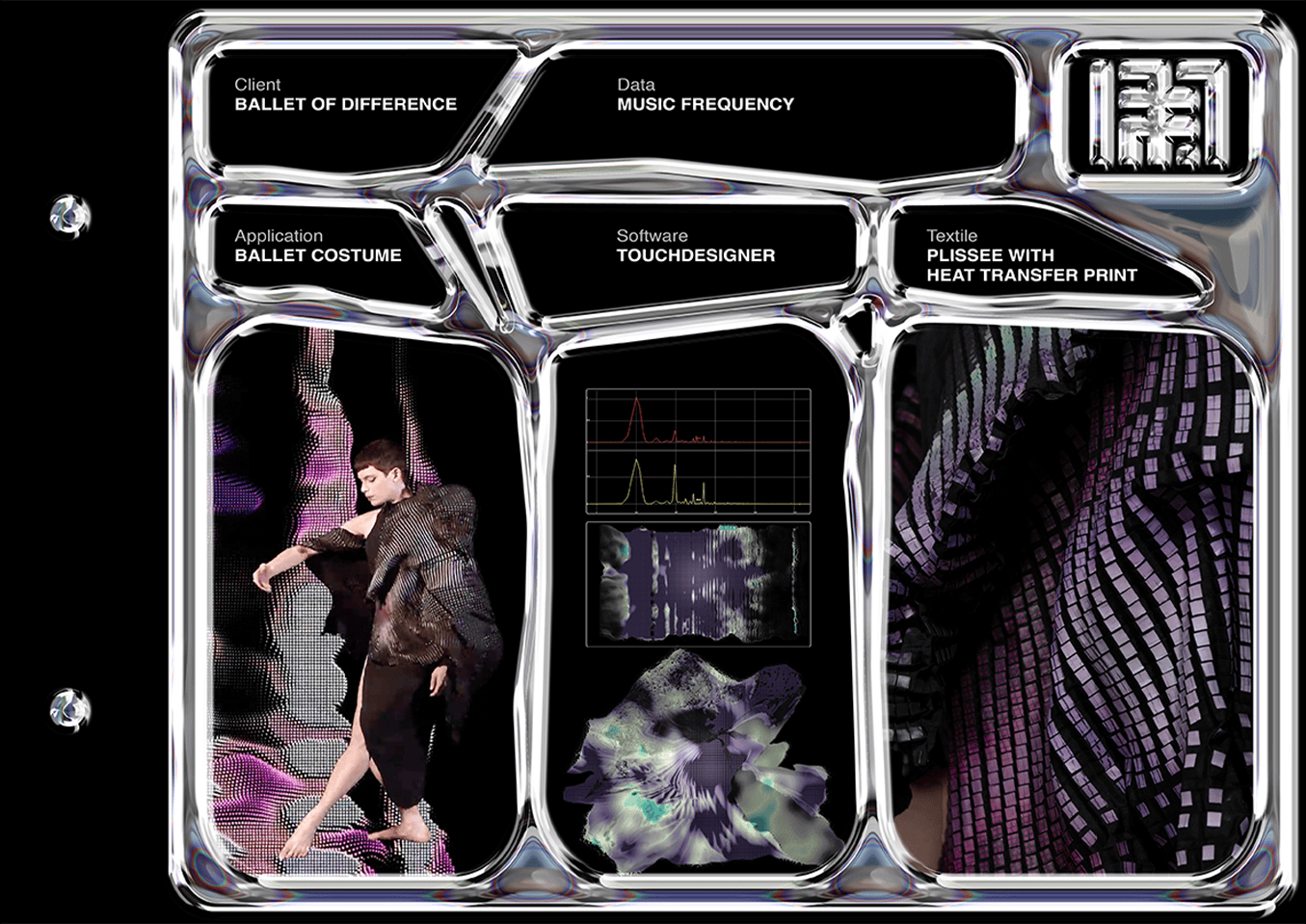
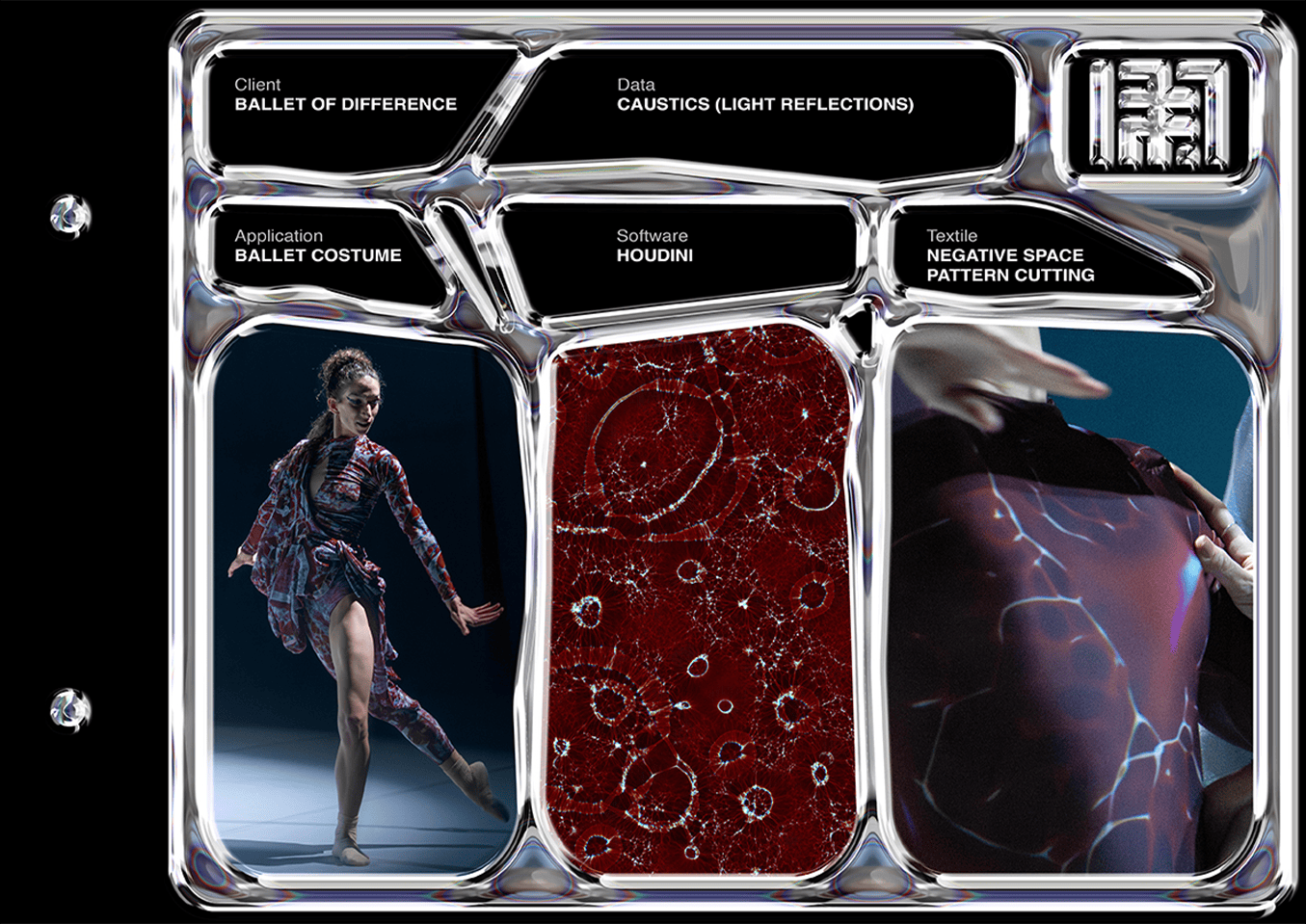
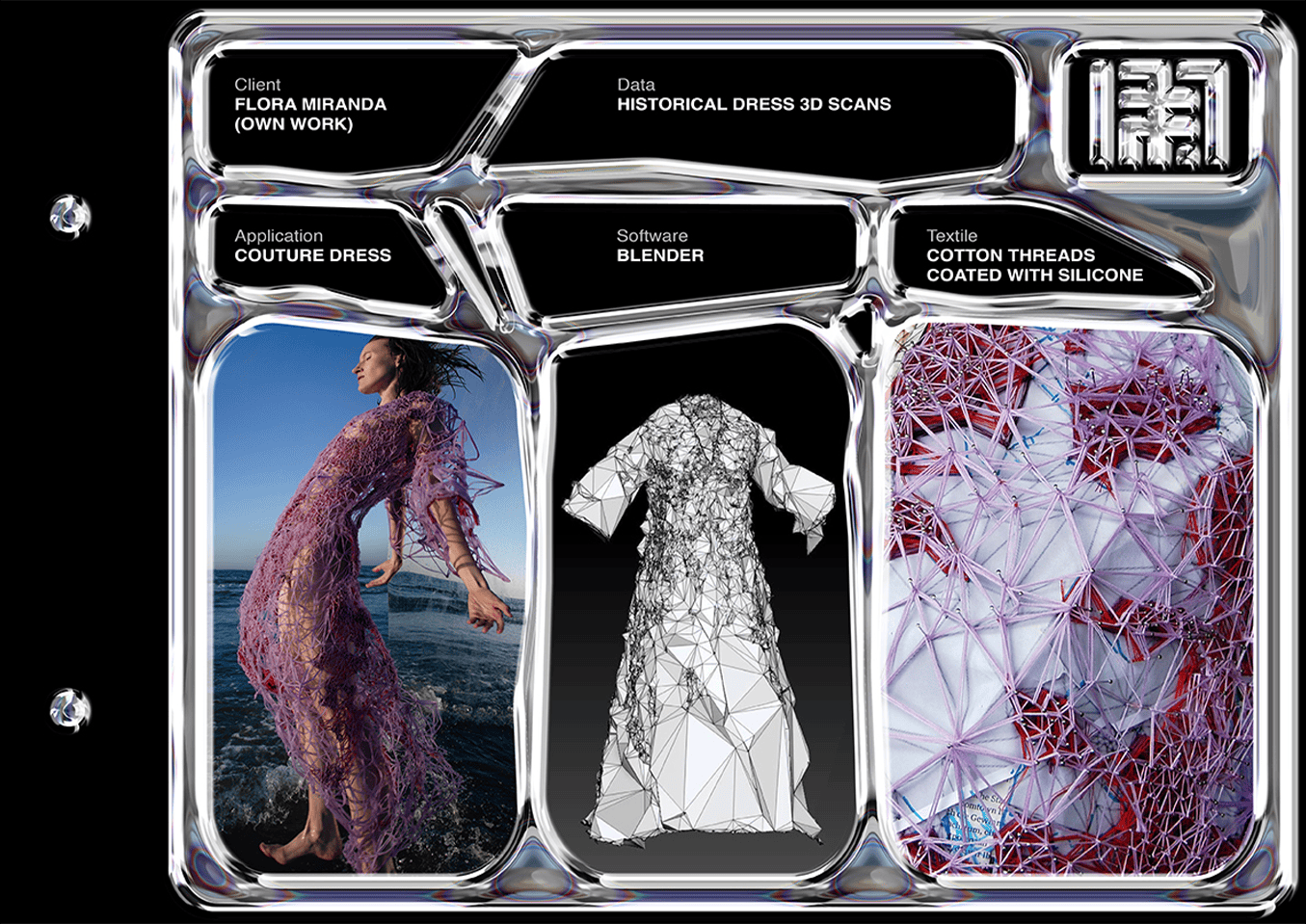
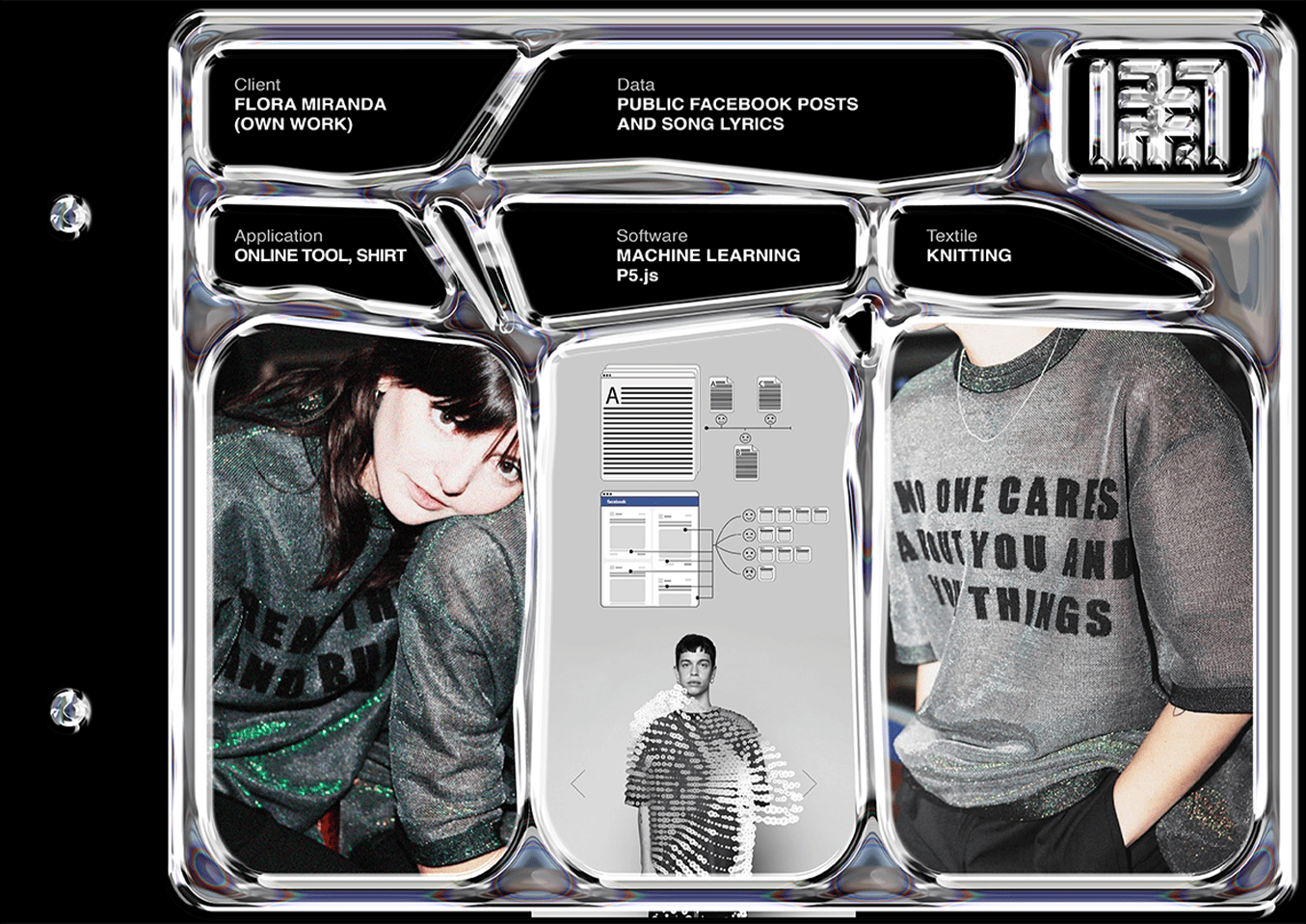
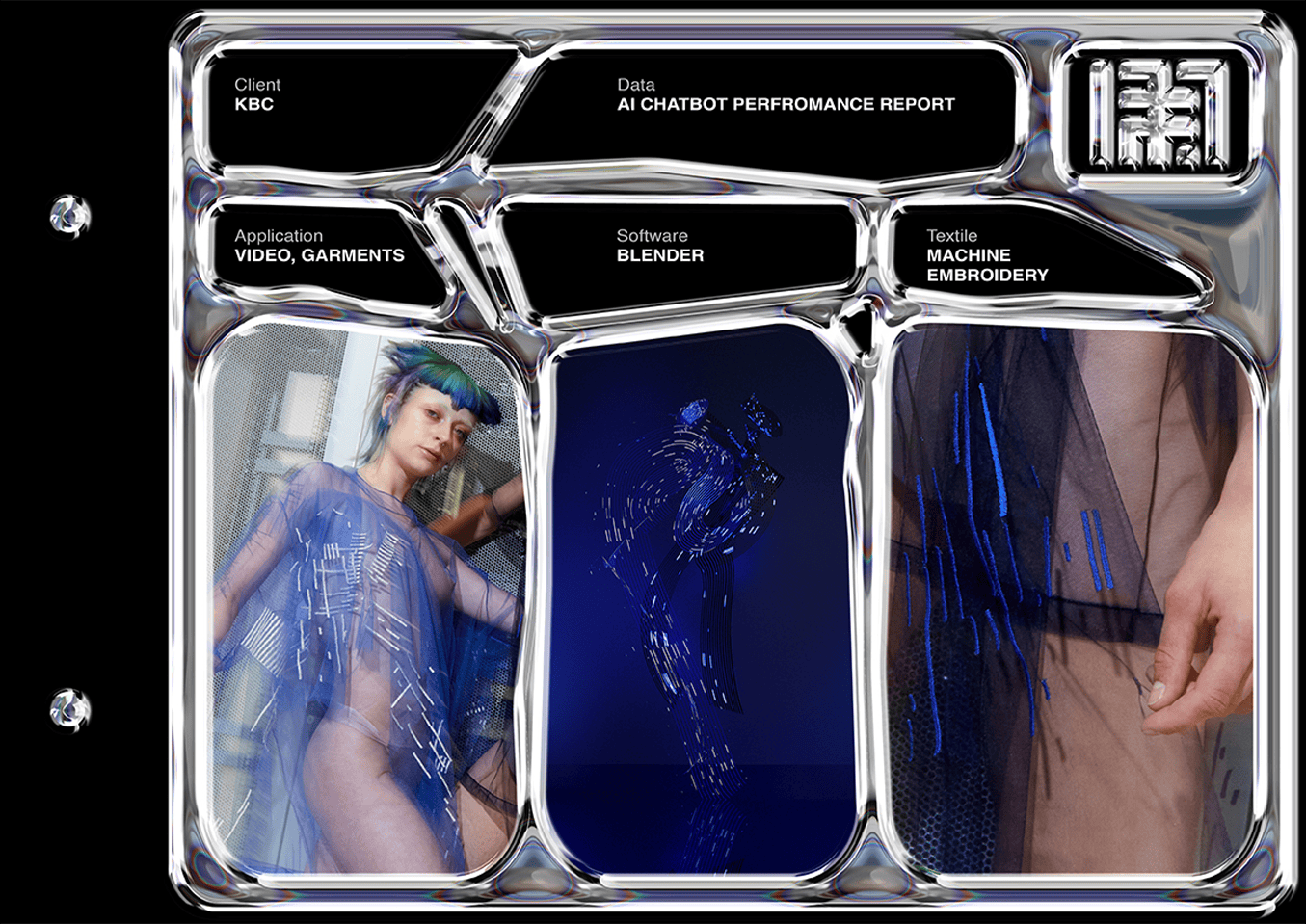
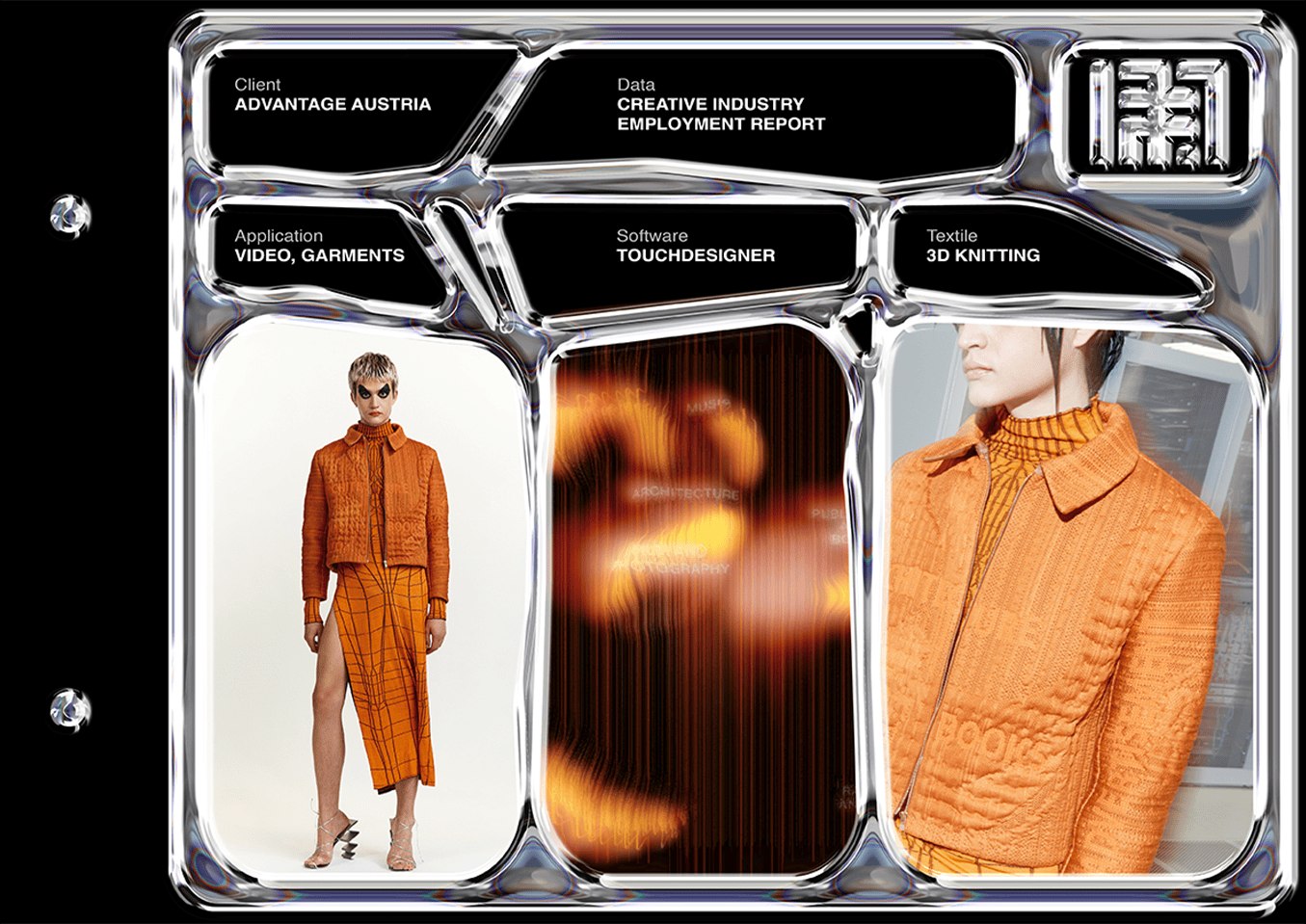
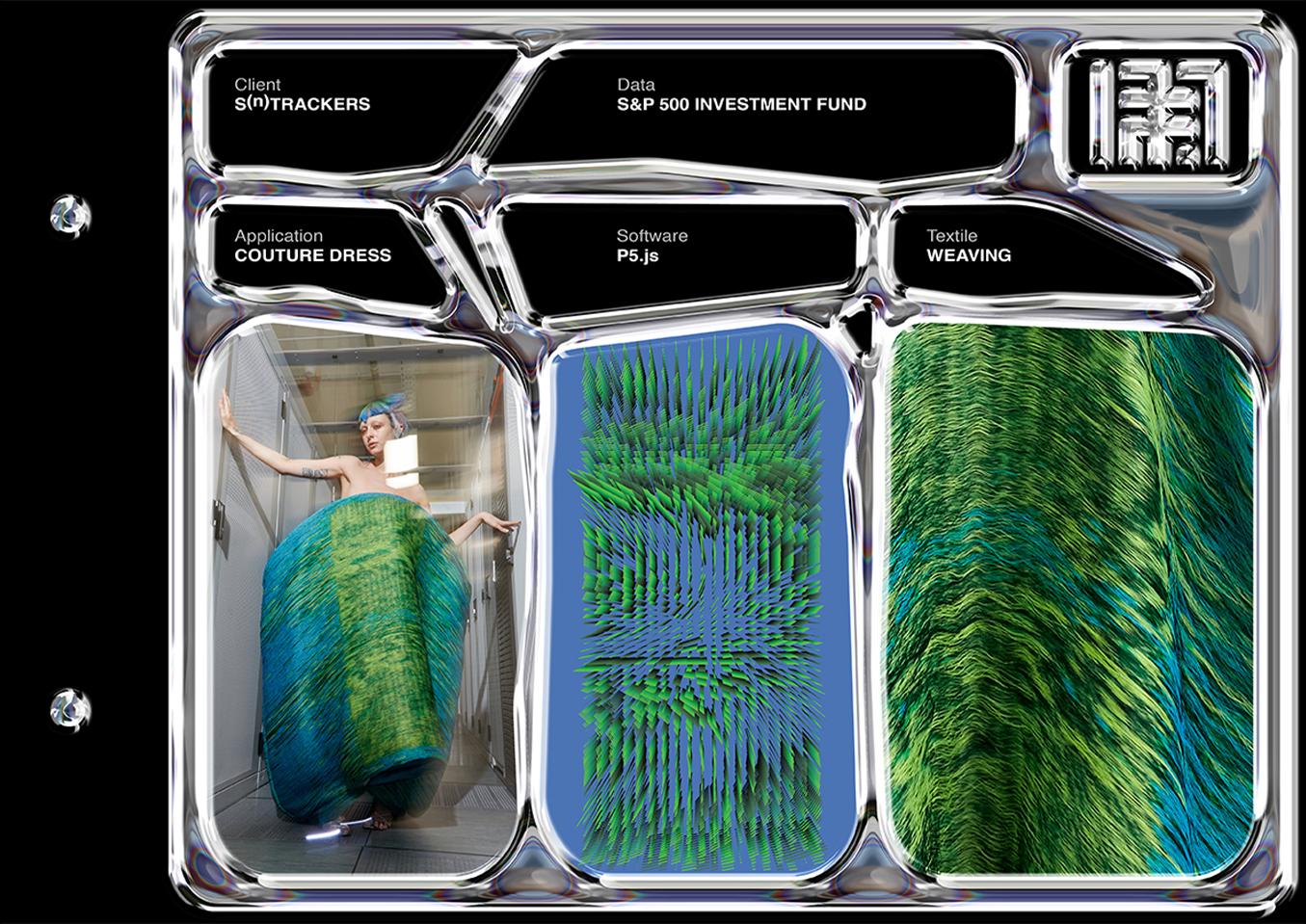
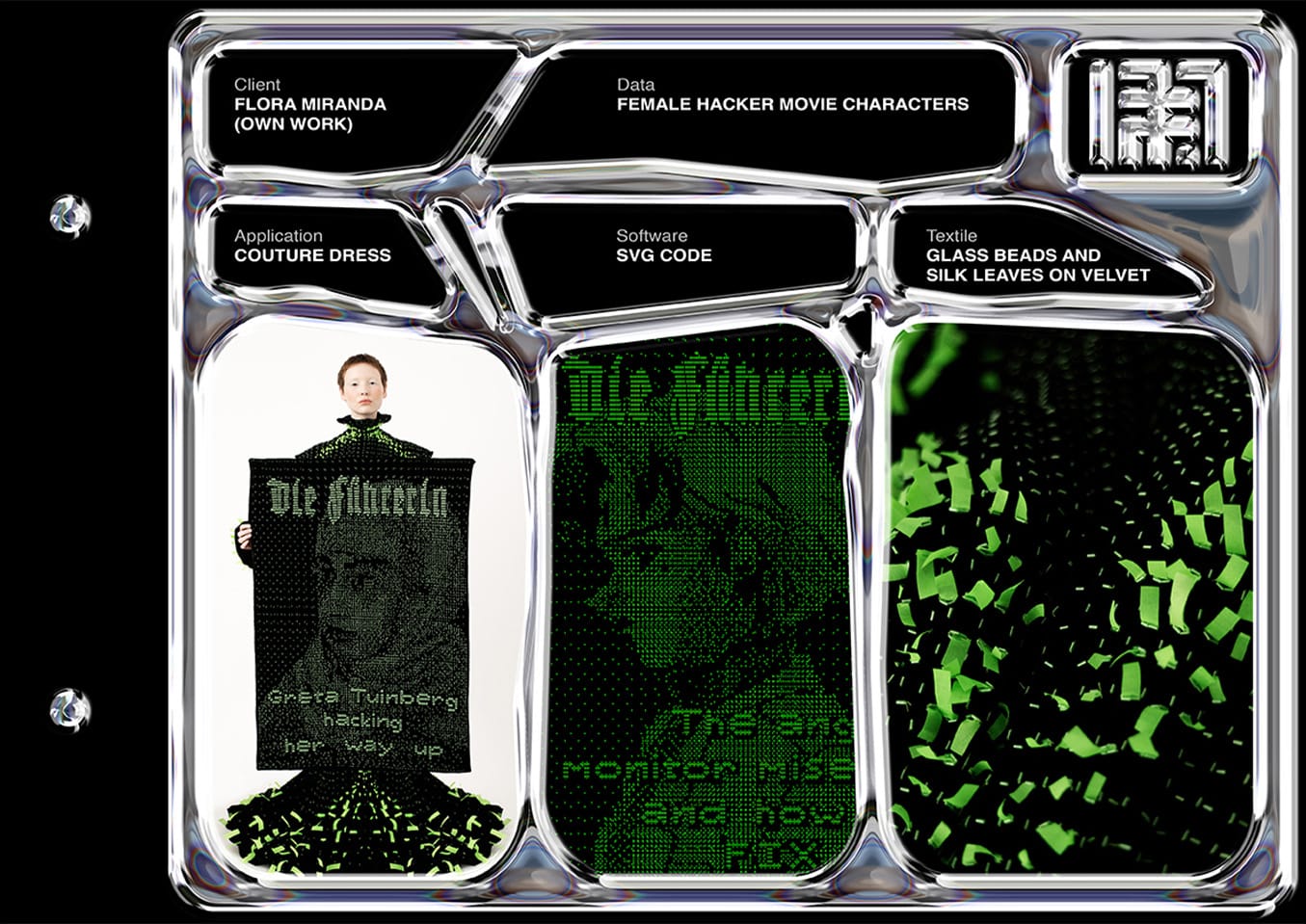
Henry van de Velde Award
Flora Miranda receives a Henry van de Velde Award for her design approach from data to textile. Henry van de Velde was a Belgian painter, architect, and designer, recognized as a key figure in the Art Nouveau and modernist movements, whose work bridged the decorative and functional in art and architecture.

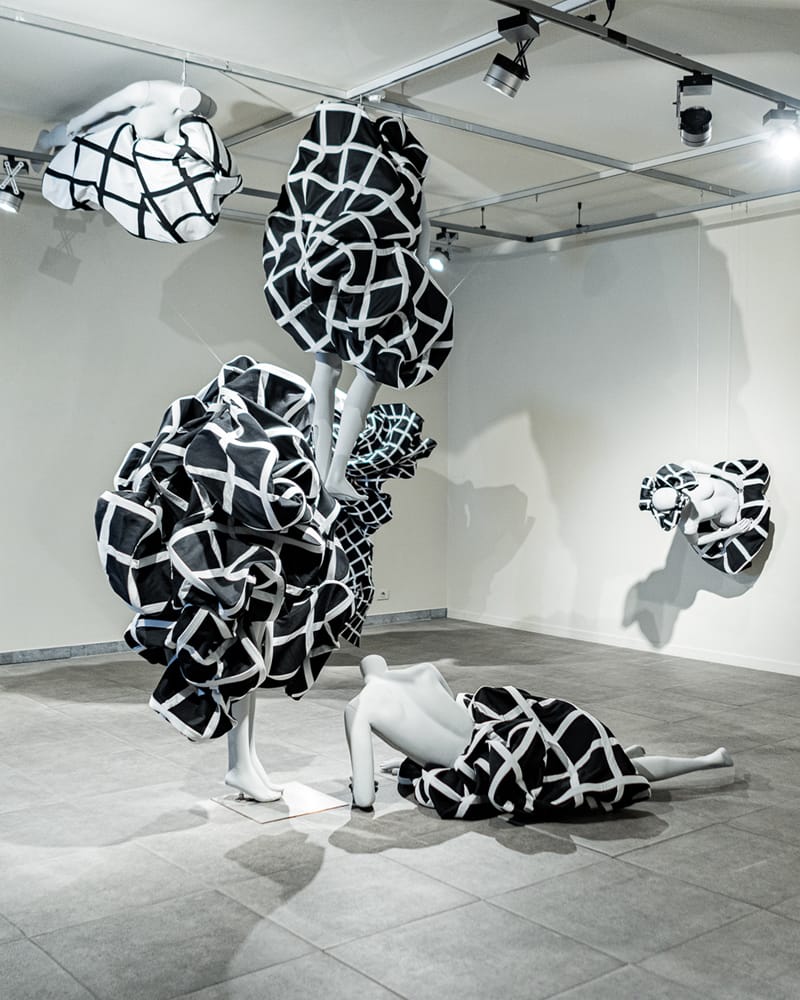
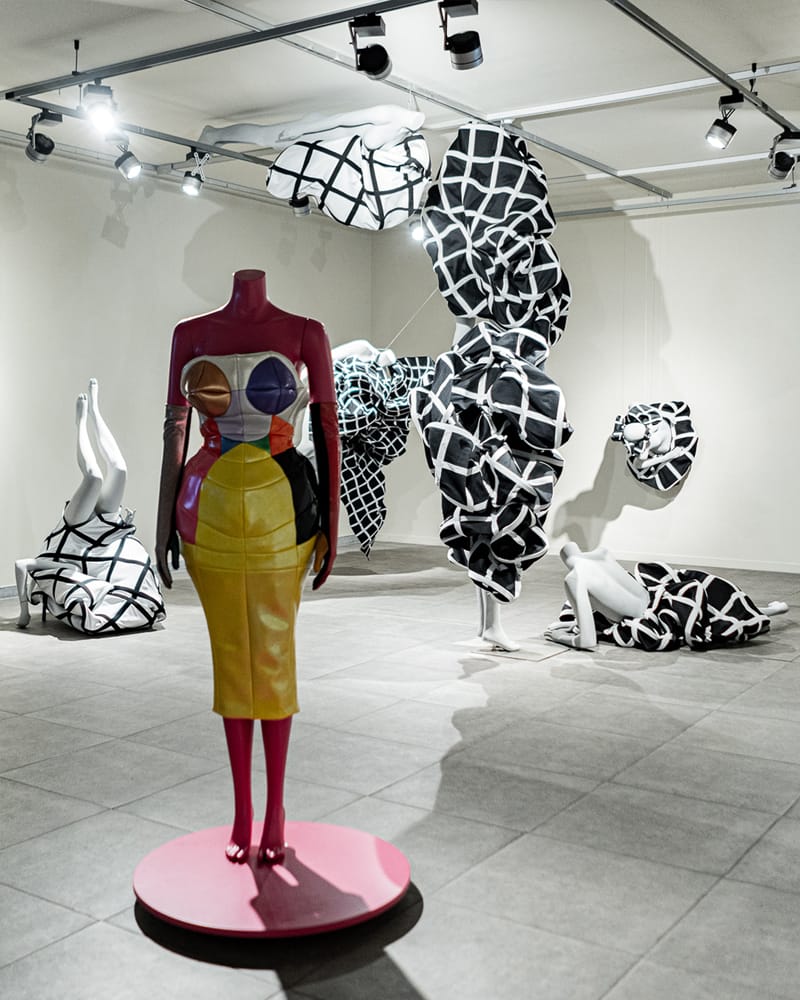
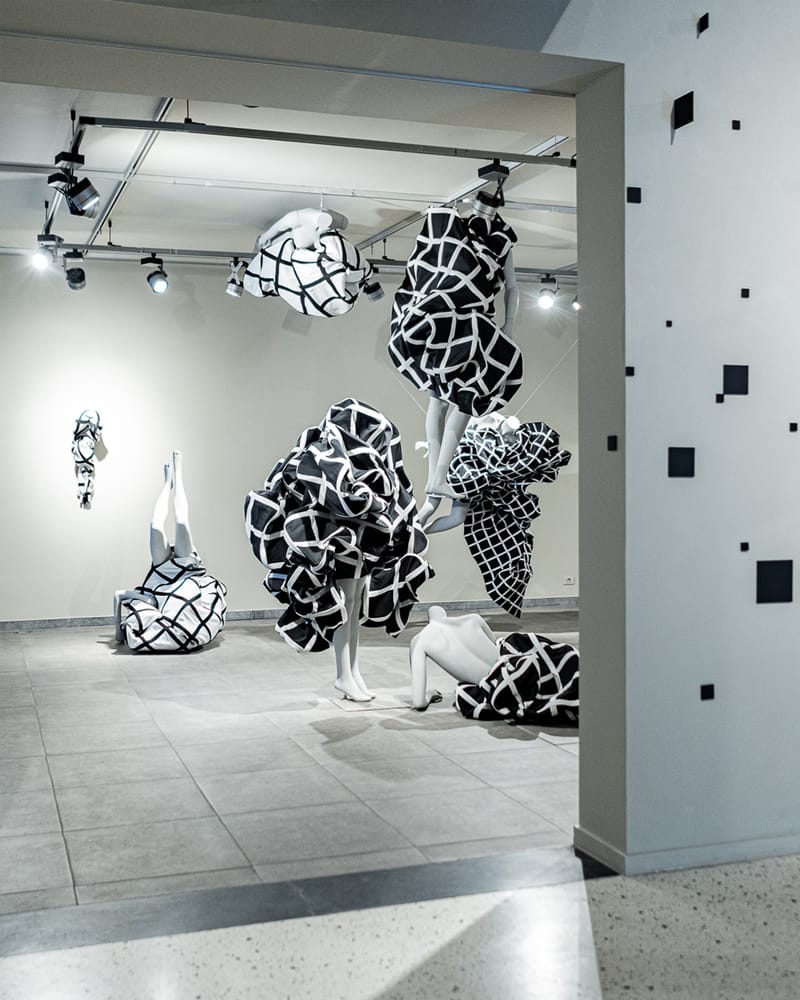
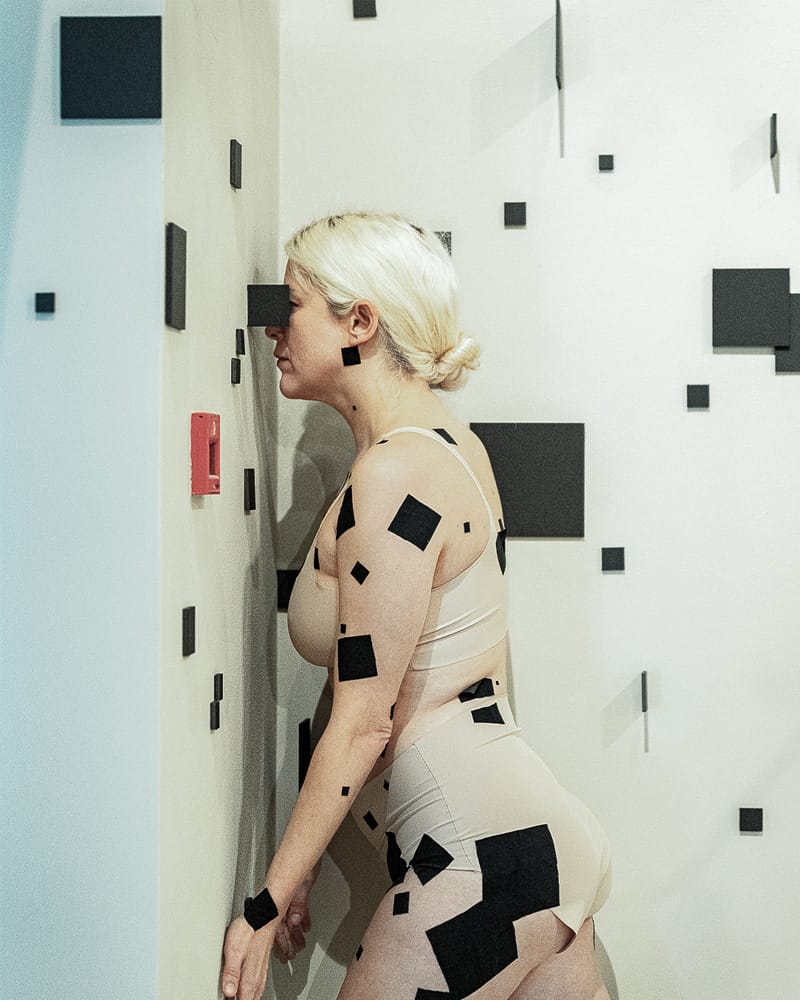
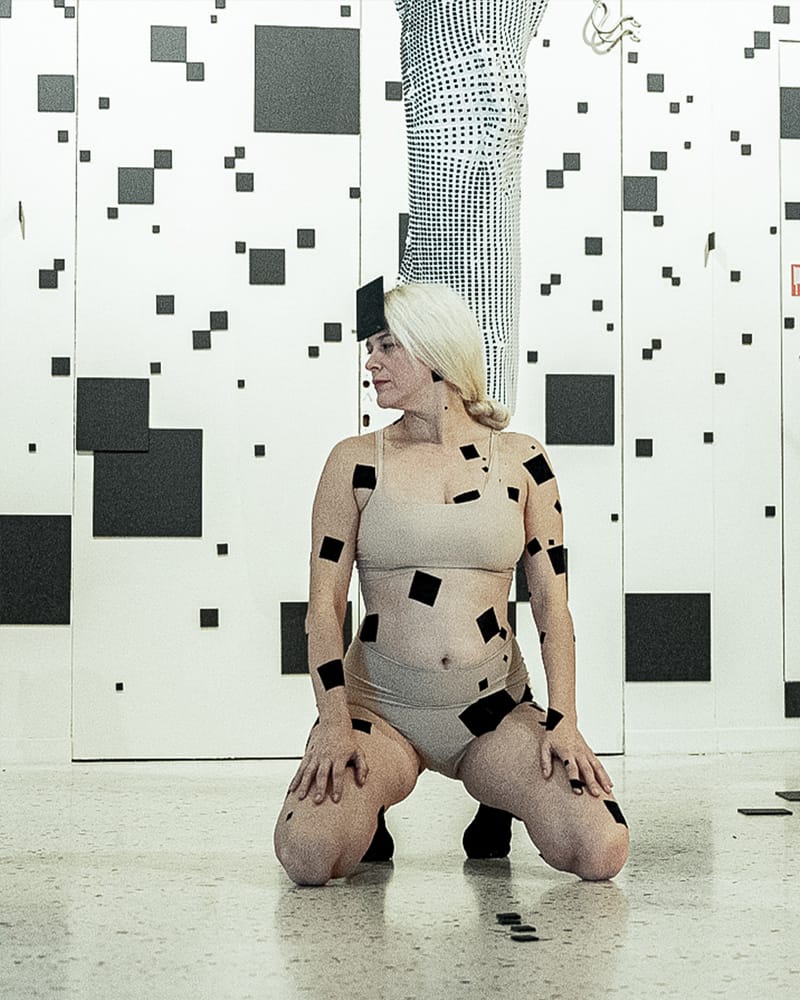
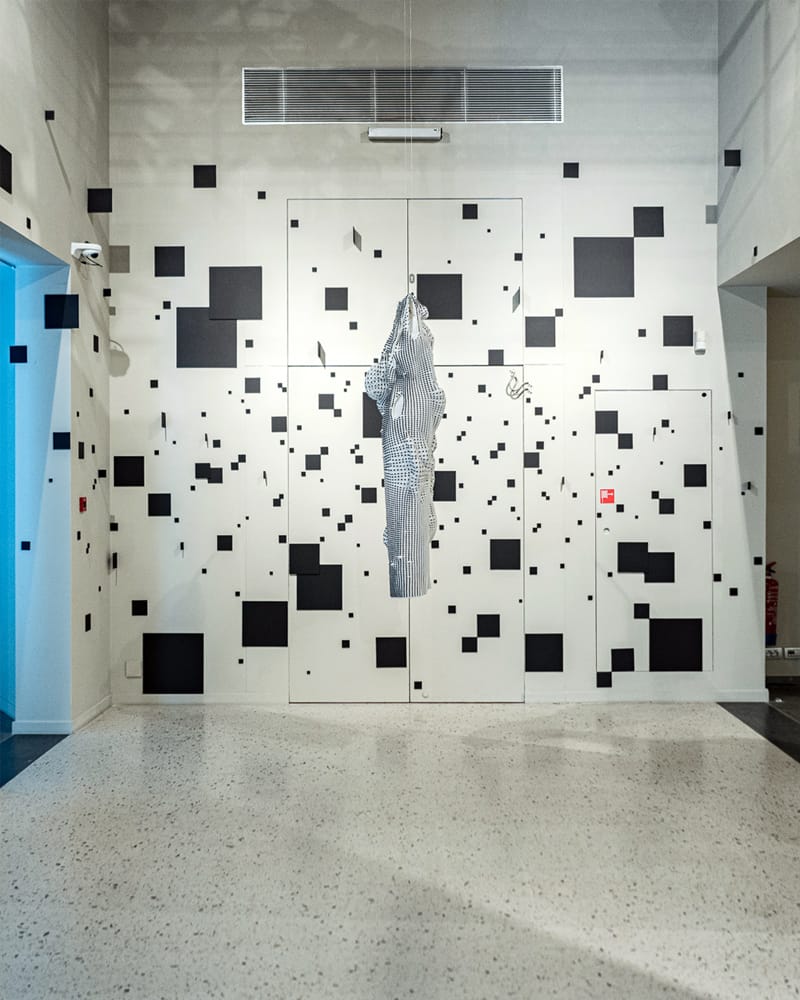
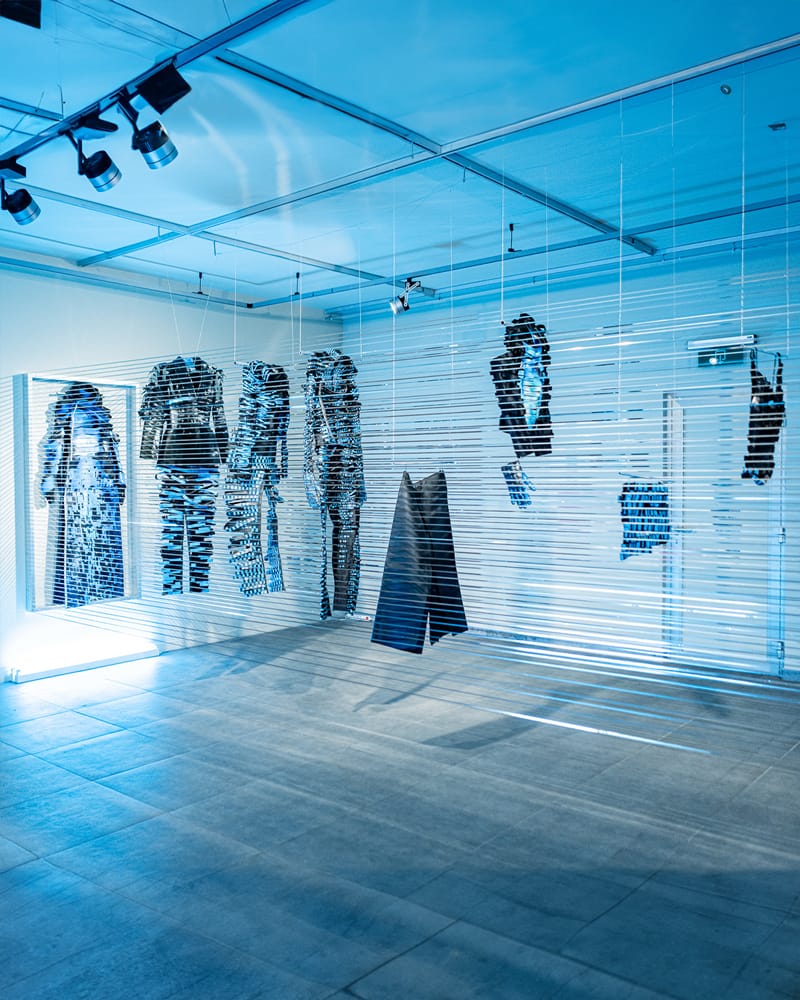
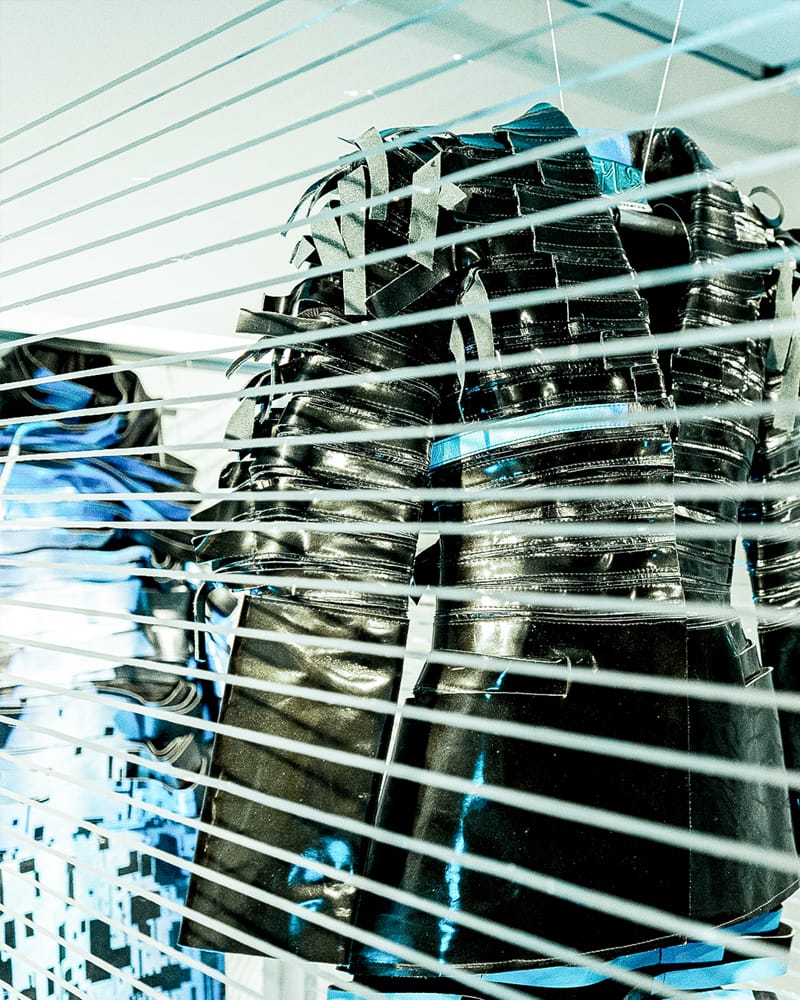
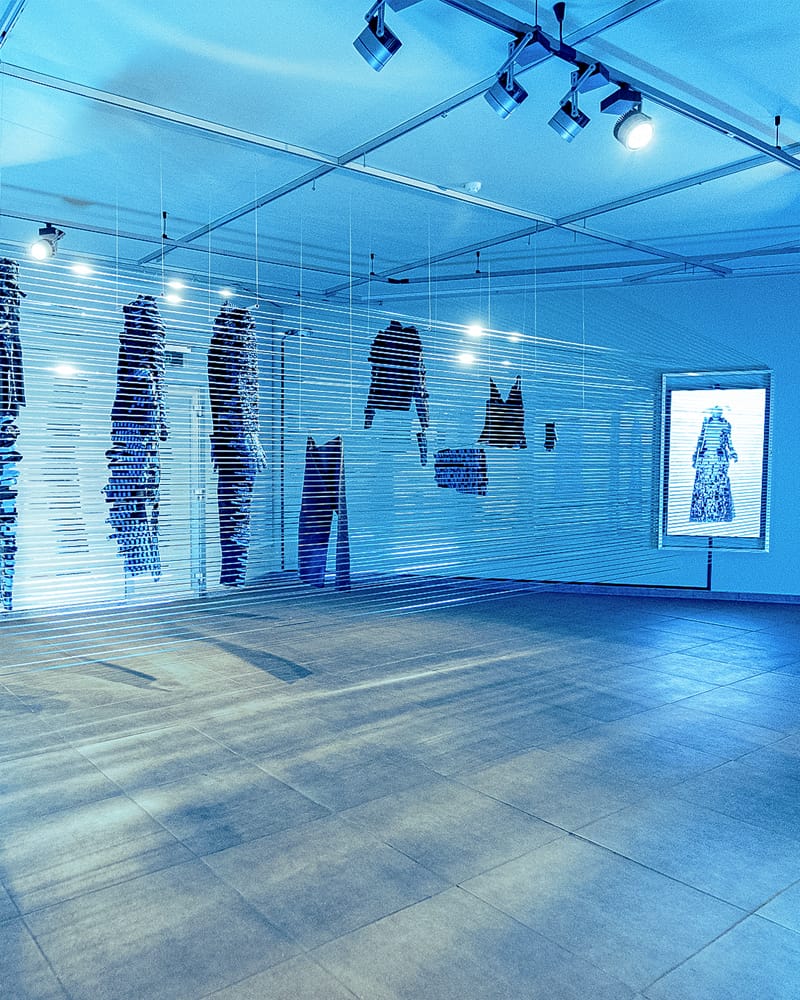
Solo exhibition “Immaterial Girl” at Zebrastraat.
Love people for their brain, not for their looks - immaterial girl.
The age of information and knowledge is a form of digital consumerism that is seemingly intangible.
Data, quanta, atoms, points - elementary building blocks that make the seemingly impossible possible. Flora Miranda transforms the abstract mass of data into sensual stories. Like this, the human body and identity take form in different dimensions: the physical, digital and spiritual.
Immaterialization is experienced through an installation by Esther Stocker. The basic geometric shapes of the exhibition room fragment and dissolve; depending on the perspective, they come together again. Esther Stocker and Flora Miranda have been working collaboratively on connecting space, body and movement since 2019.
The exhibition also draws a formal connection to early 20th-century Viennese art, particularly the work of Josef Hoffmann and the Gesamtkunstwerk concept, which aimed to unite various art forms into one harmonious whole. Furthermore referencing Gustav Klimt’s and Emilie Flöge’s reform dress and linking that sense of liberation to the new supposedly physical freedom found in the digital age.
The exhibition was made possible with the support of the Austrian Cultural Forum Brussels, BMKÖS and Zebrastraat.

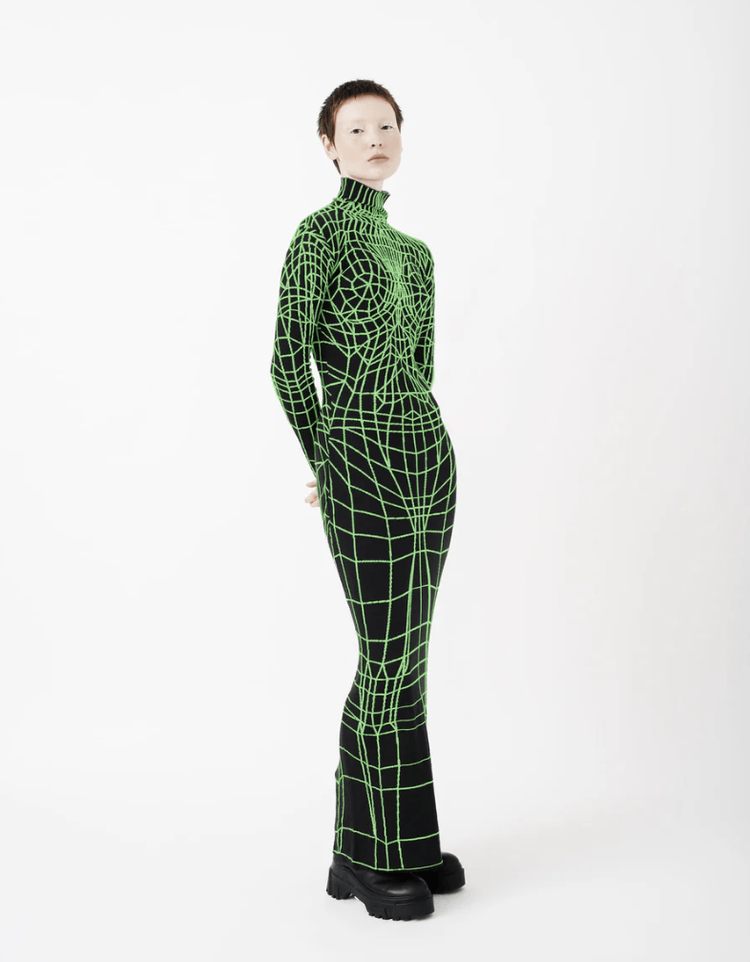

KAP Podcast #89 KI in der Haute Couture
Die österreichische Modedesignerin Flora Miranda arbeitet seit ihrem Studium an der Königlichen Akademie der Schönen Künste in Antwerpen mit generativem Design, eine Entwurfsmethode, in der Kunst und Technik miteinander verschmelzen. Mit Hilfe von Algorithmen entwirft Flora Miranda Kreationen für die Bühne, die Haute Couture, aber auch Produkte für Unternehmen. Mein Name ist Nicola, Kapitän dieser Folge und ich spreche mit Flora Miranda über das faszinierende Zusammenspiel von Idee, Software und Handwerk.
Link zur Folge: KAP Podcast auf Spotify

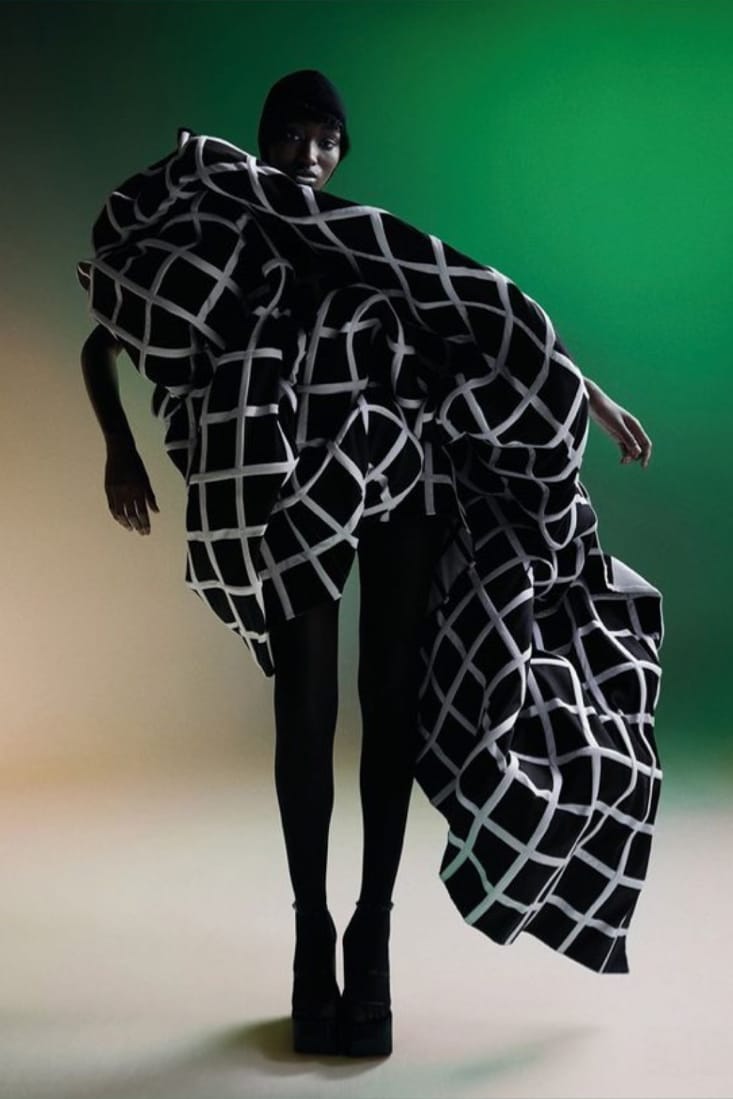
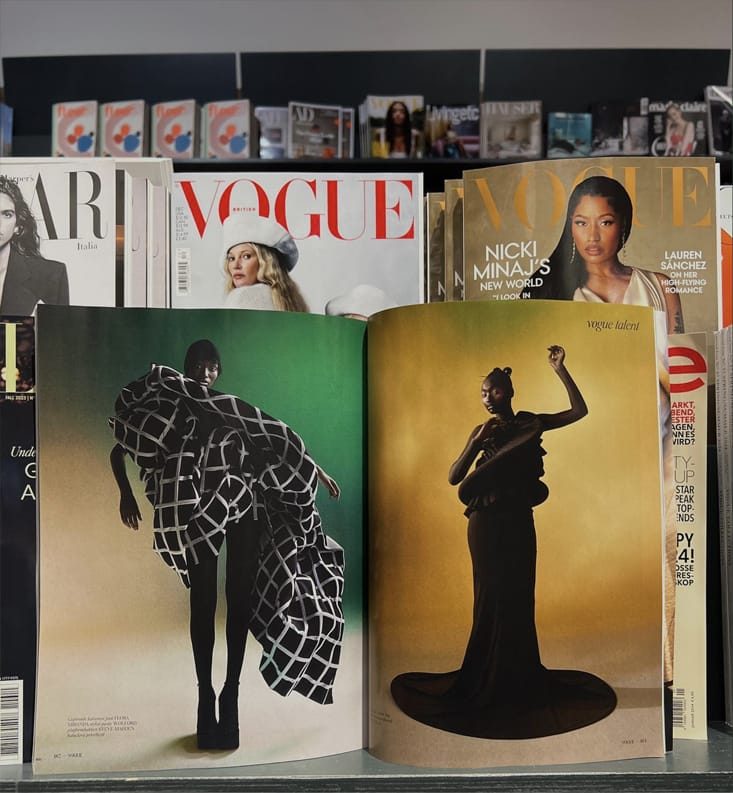
“The Art Of Becoming” Vogue Netherlands editorial featuring the Flora Miranda x Esther Stocker “Crincle Dress”.
Styled by Carli Bureynejad, photographed by Elisa Michelle with model Marie Gueye
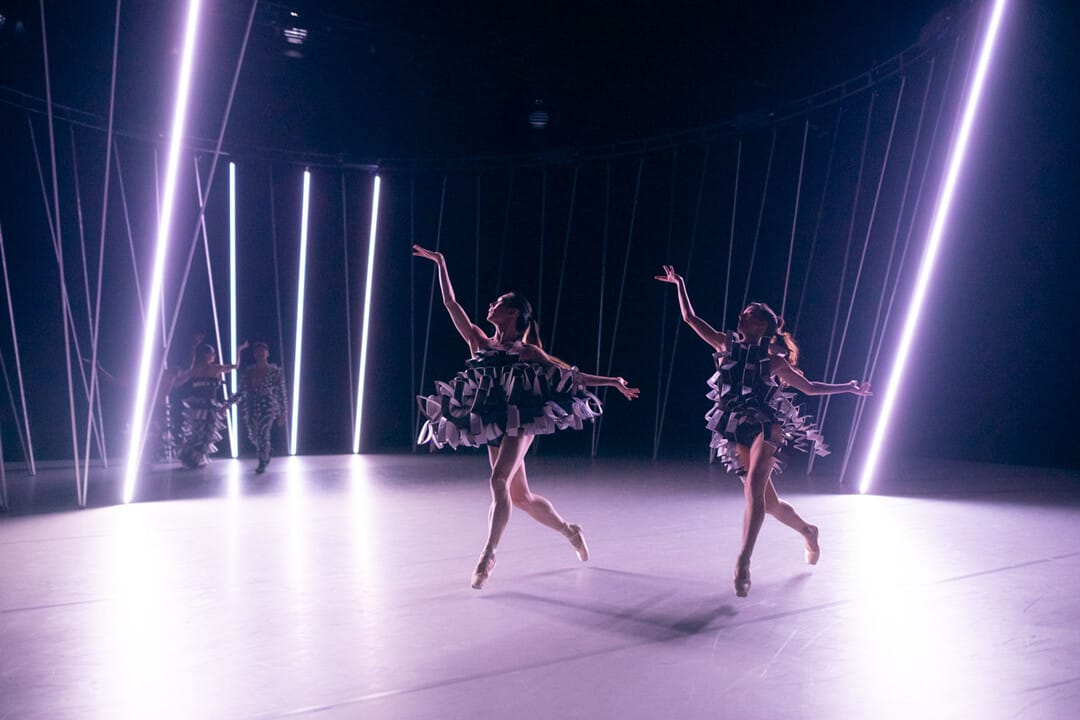
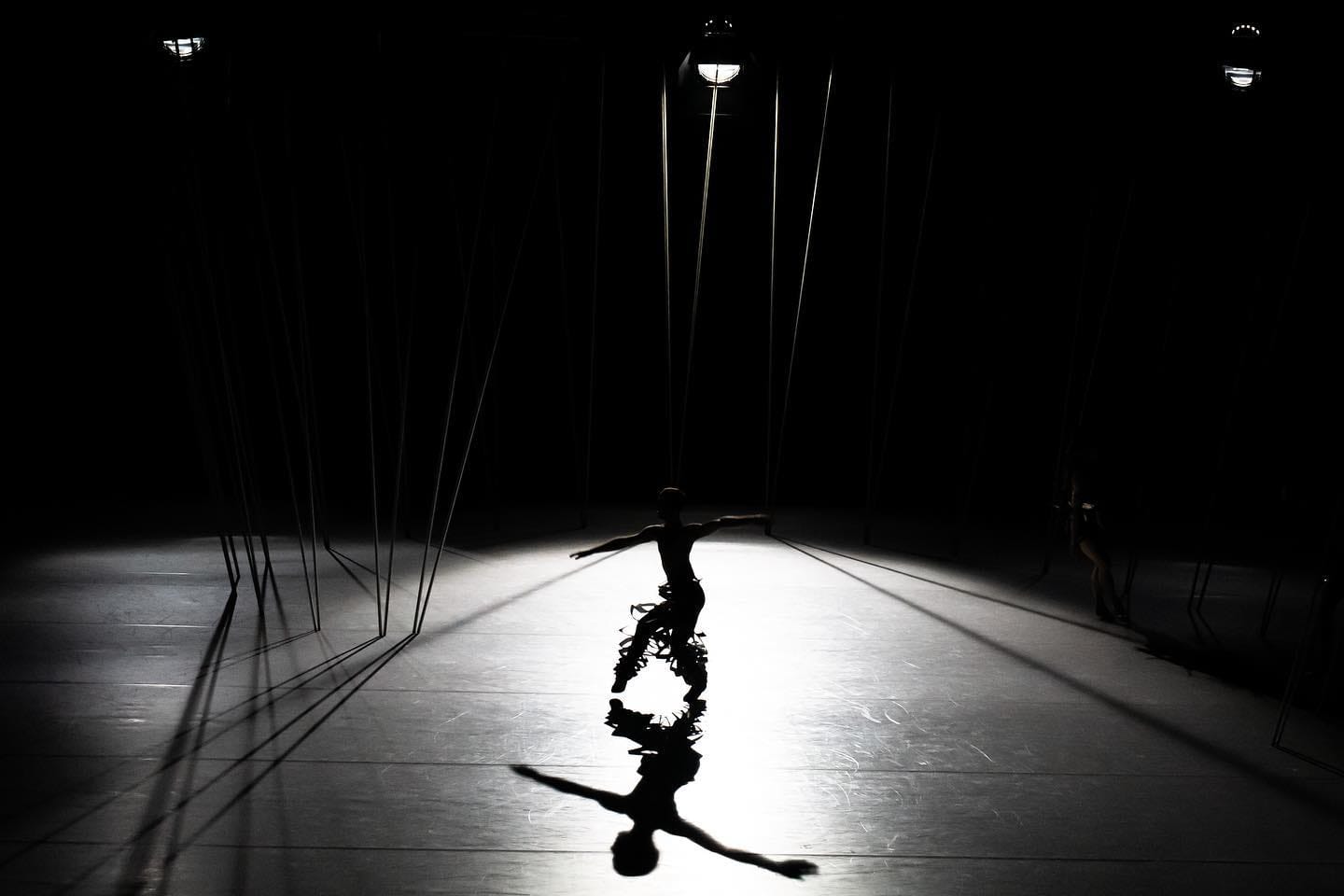
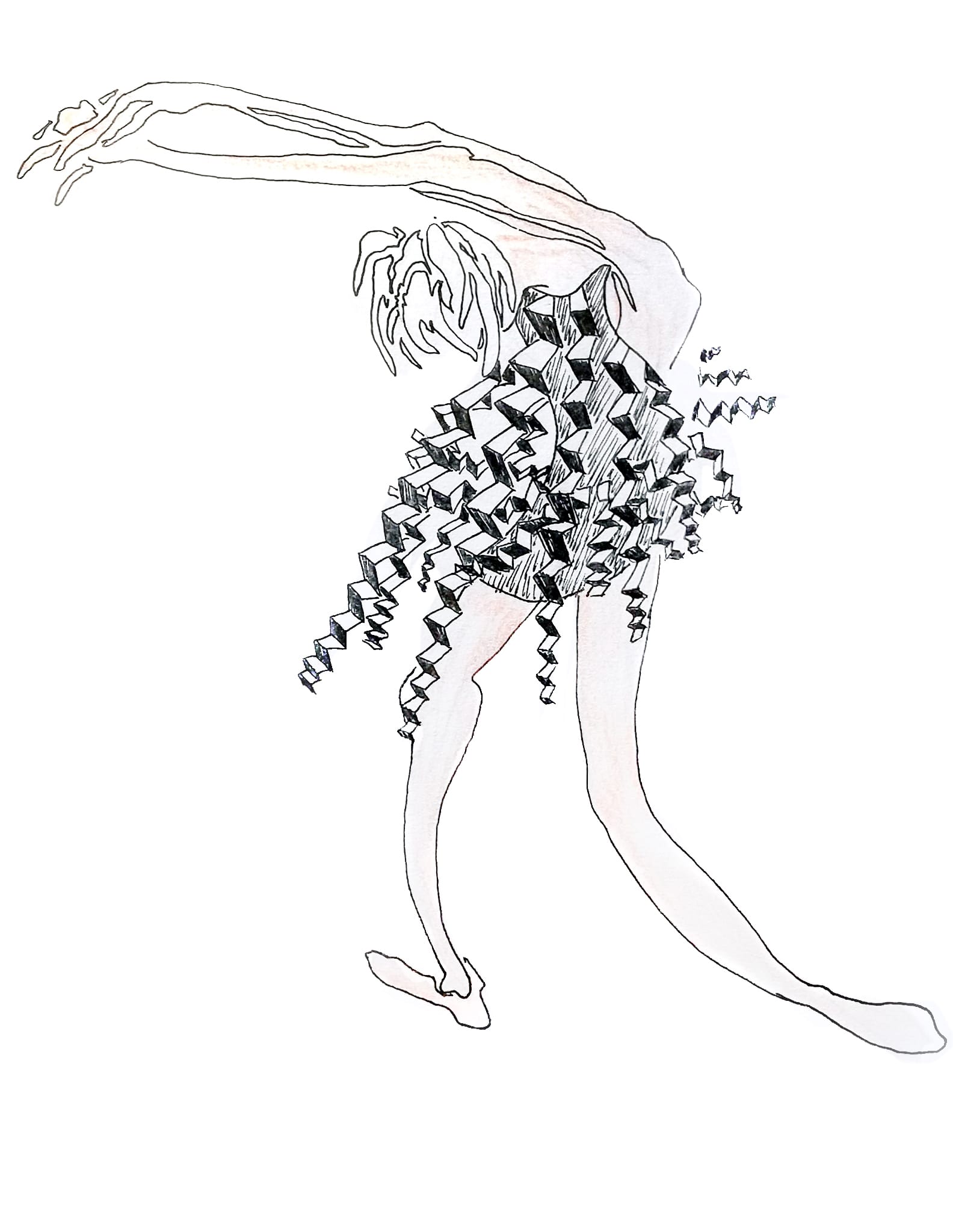
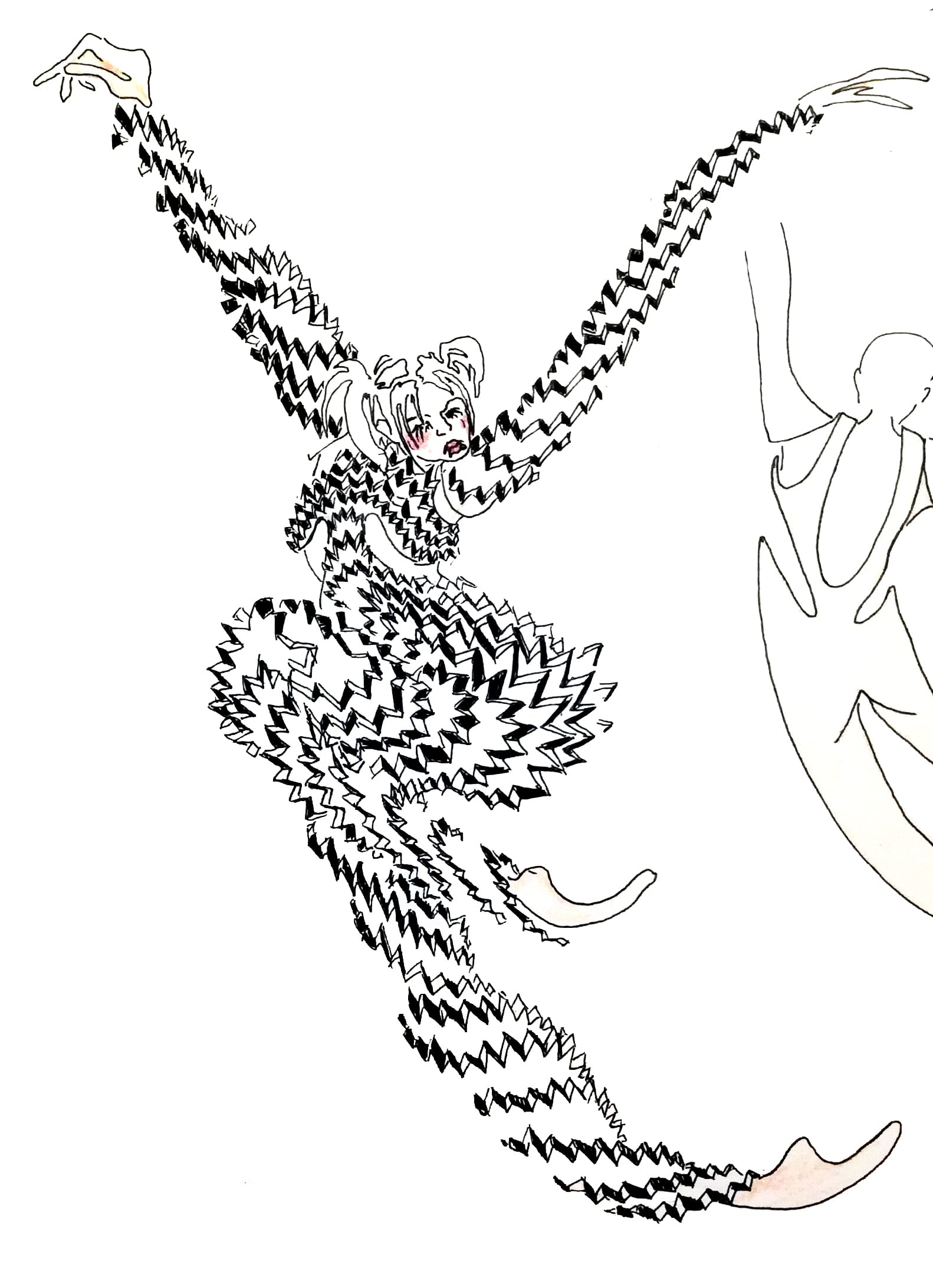
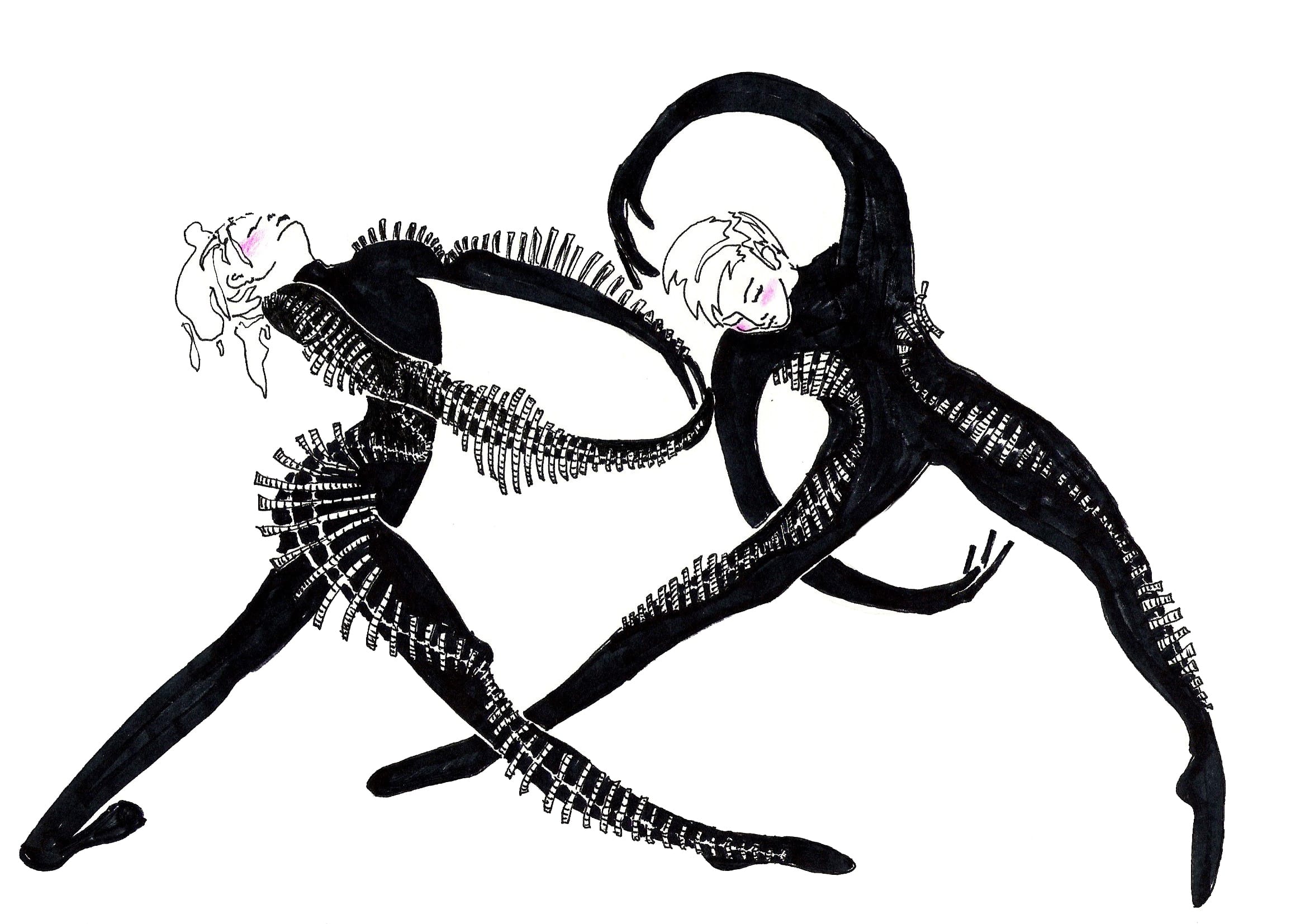
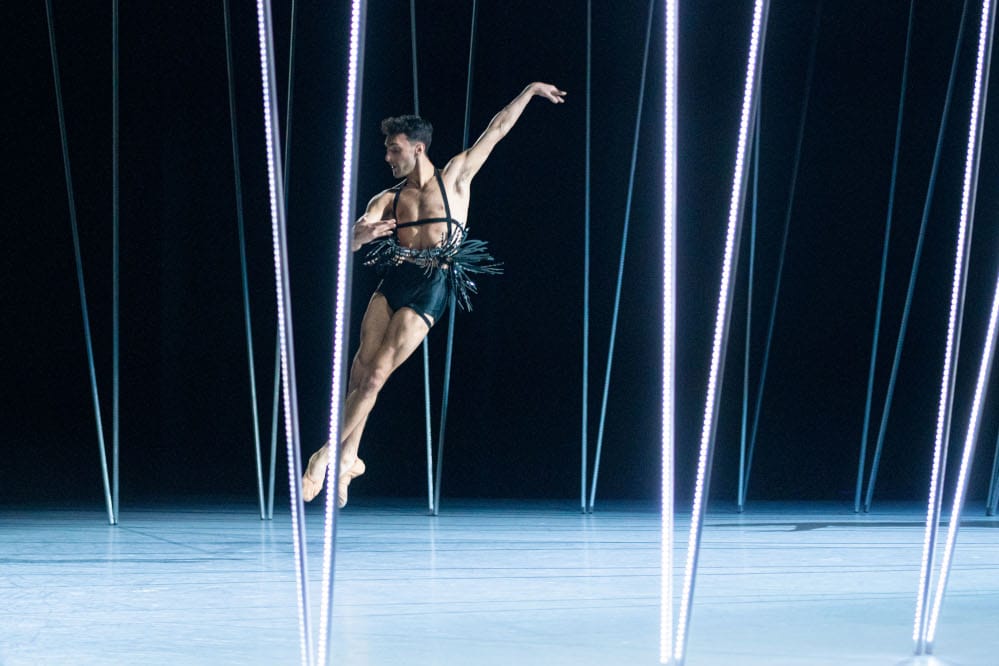
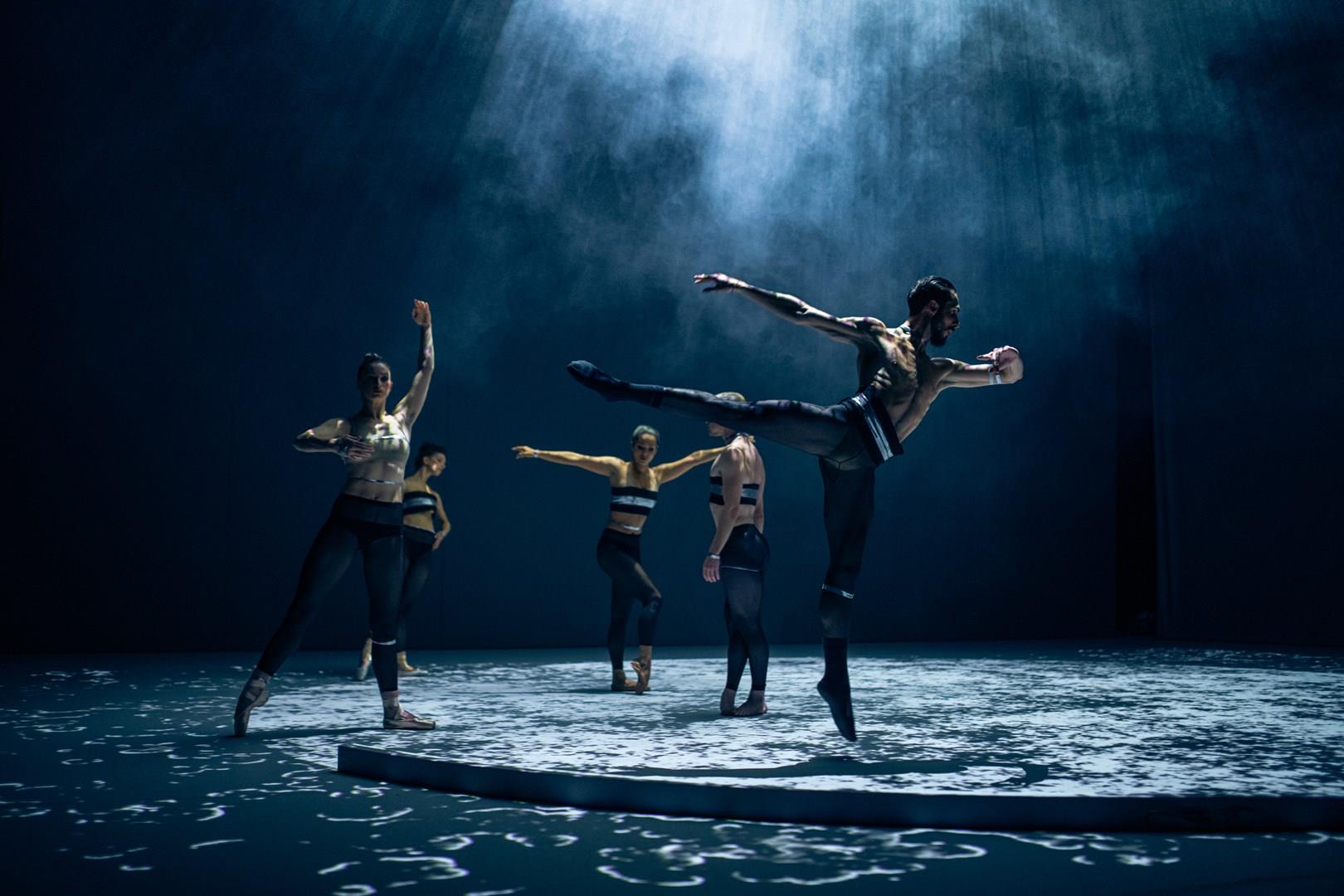
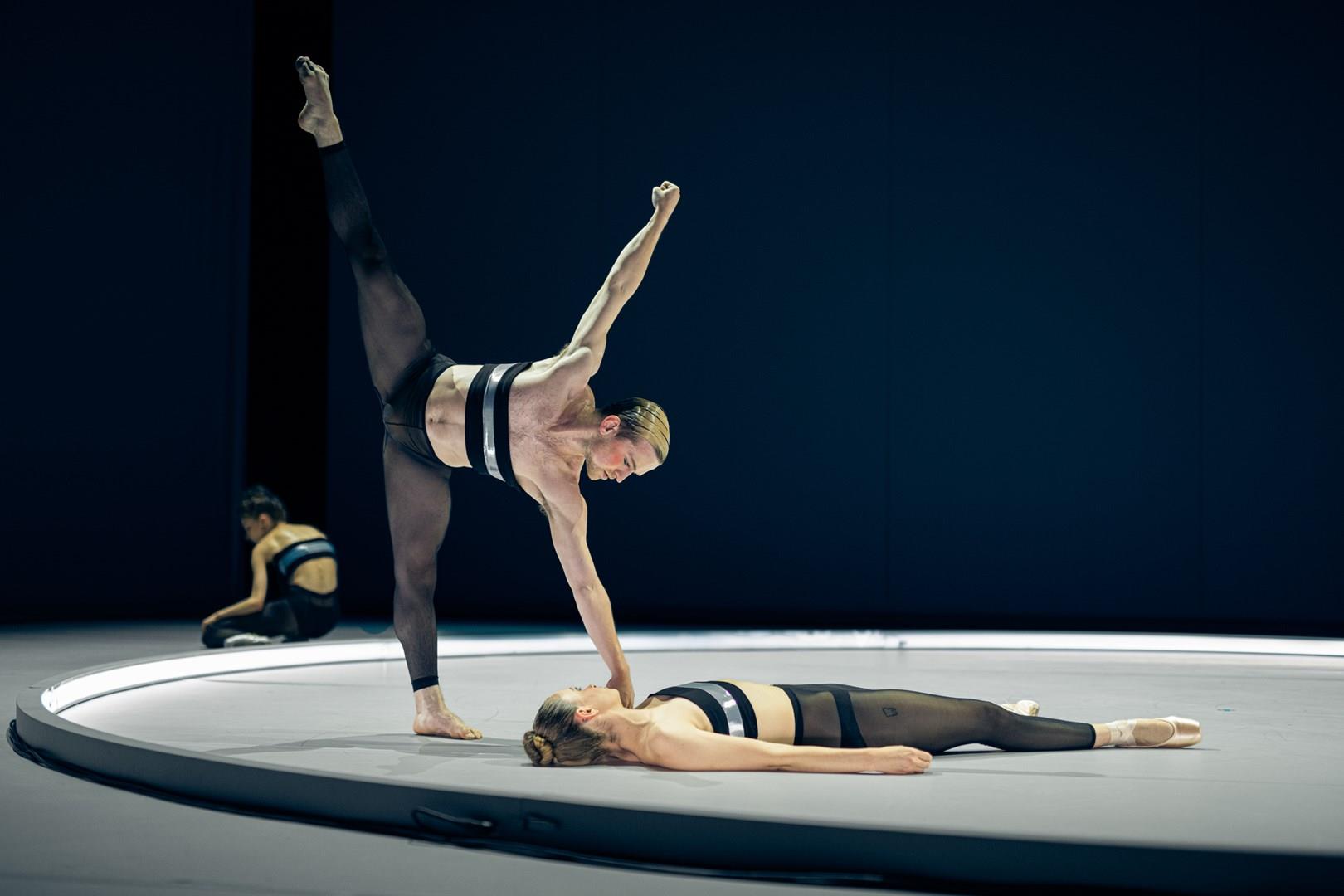
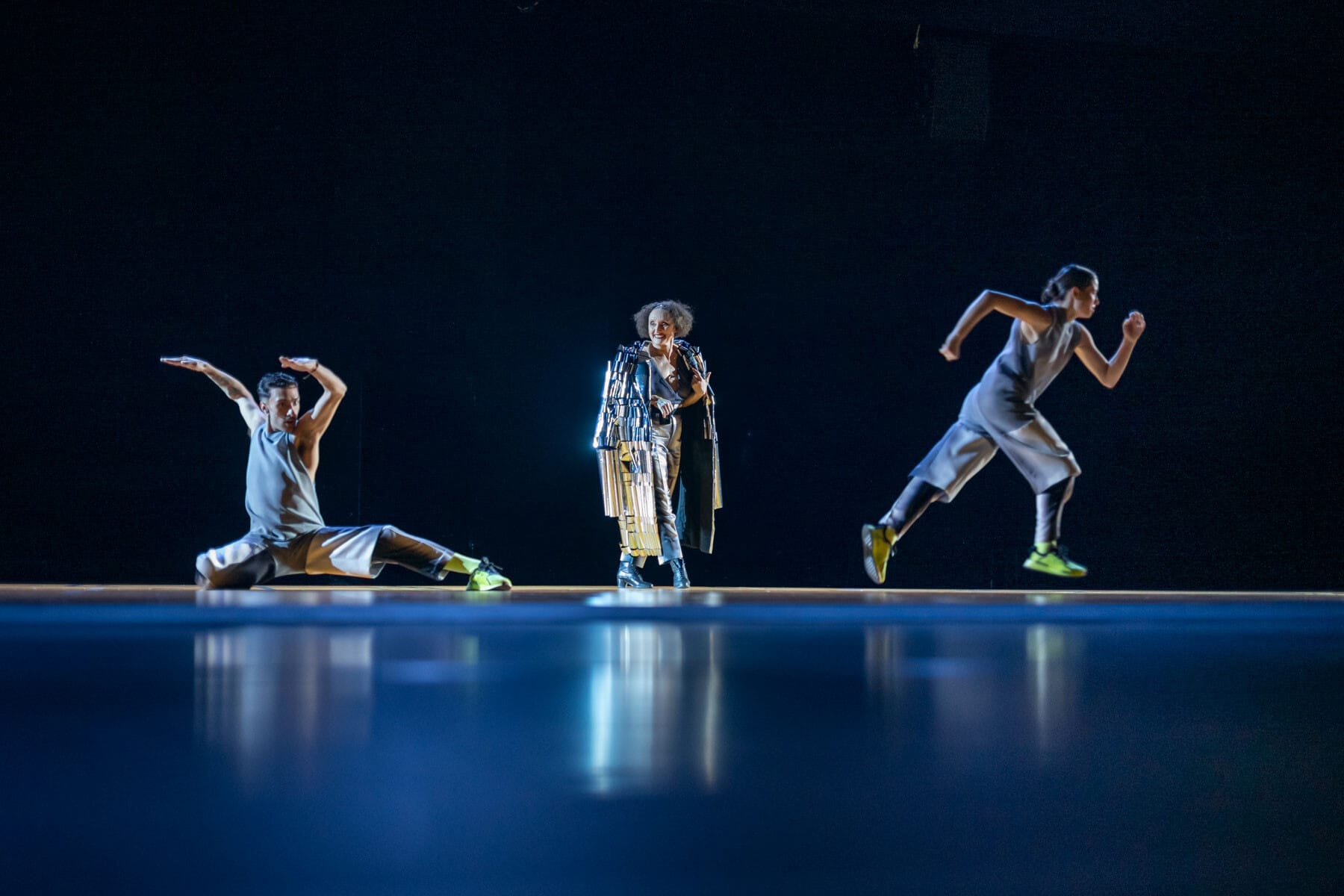
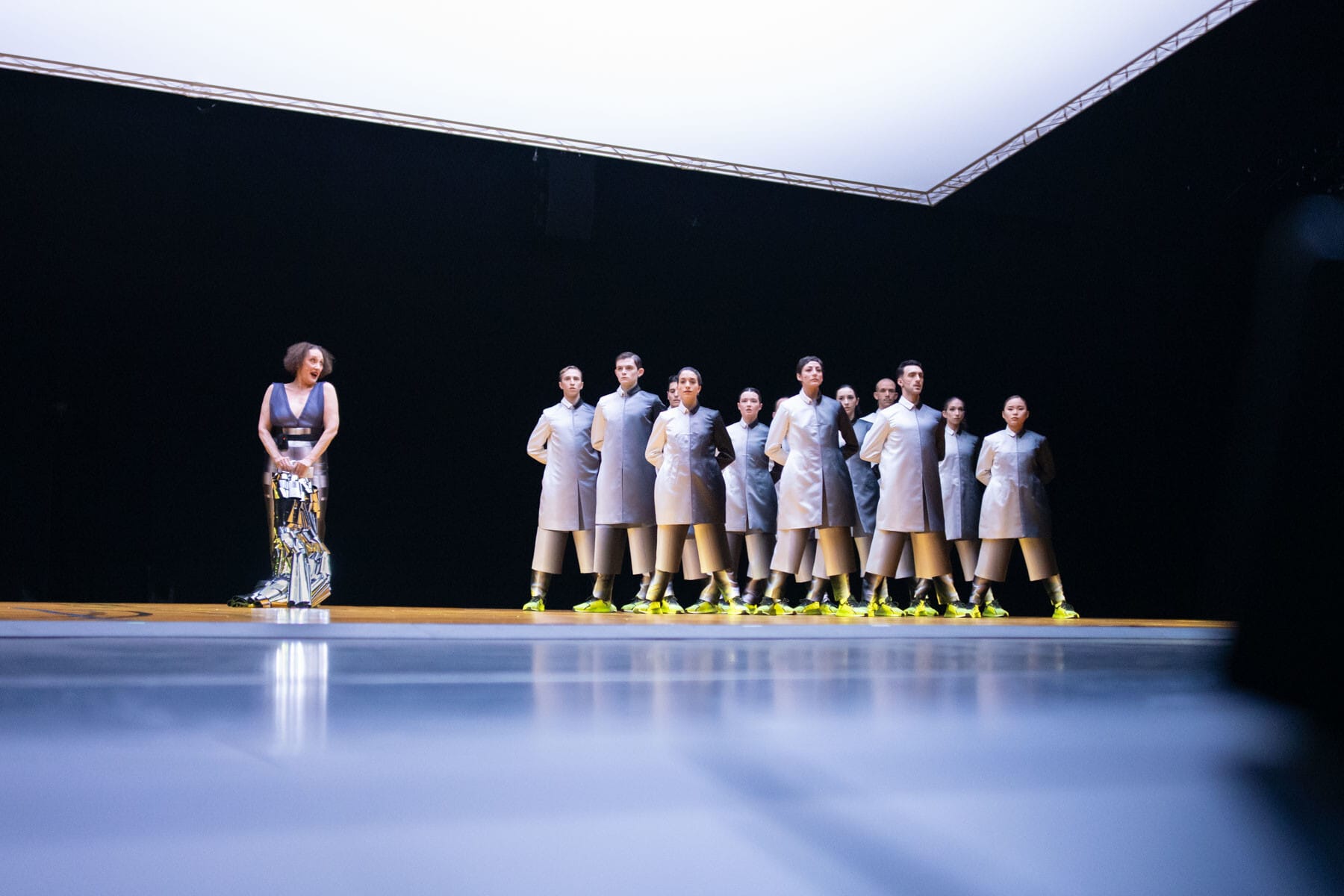
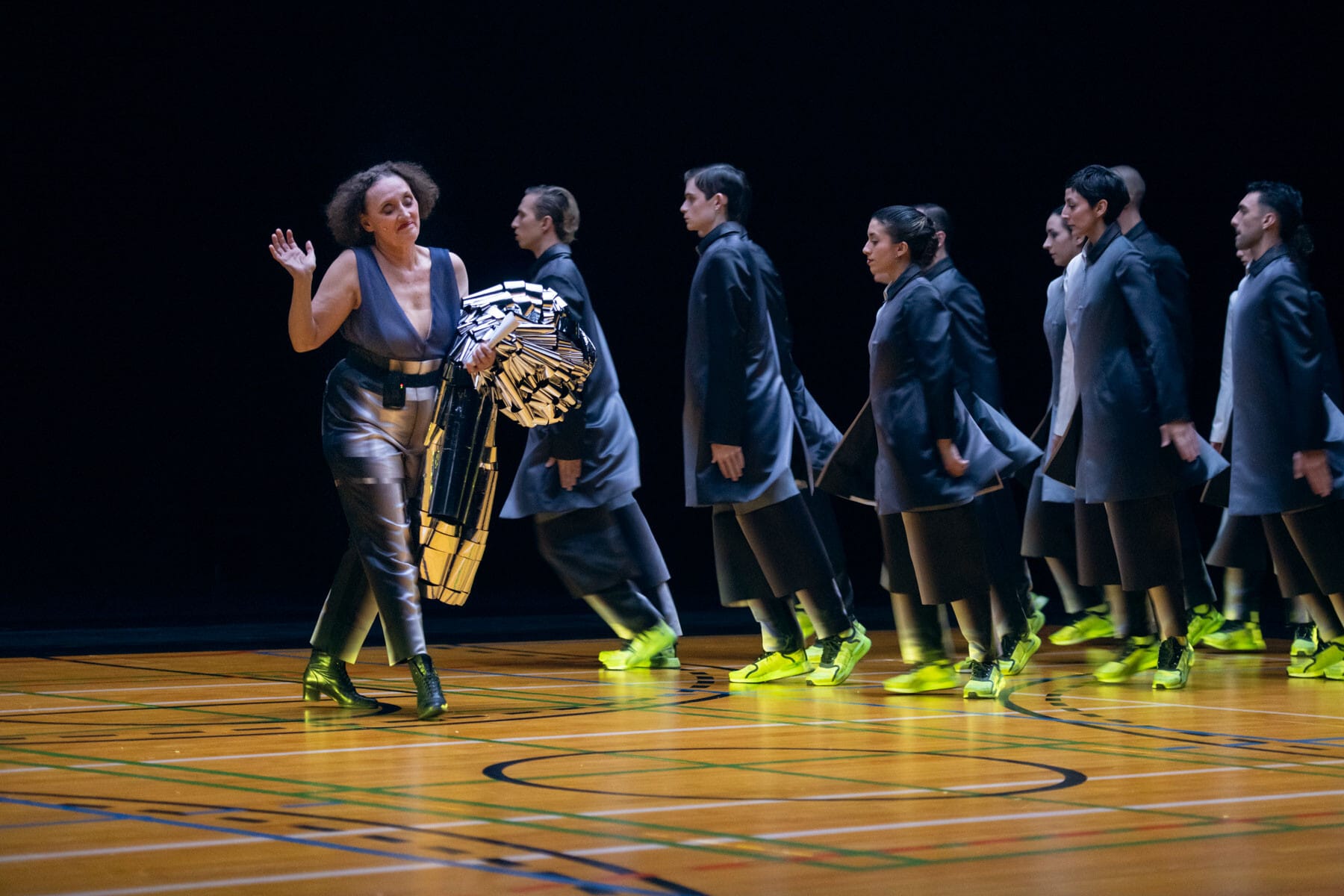
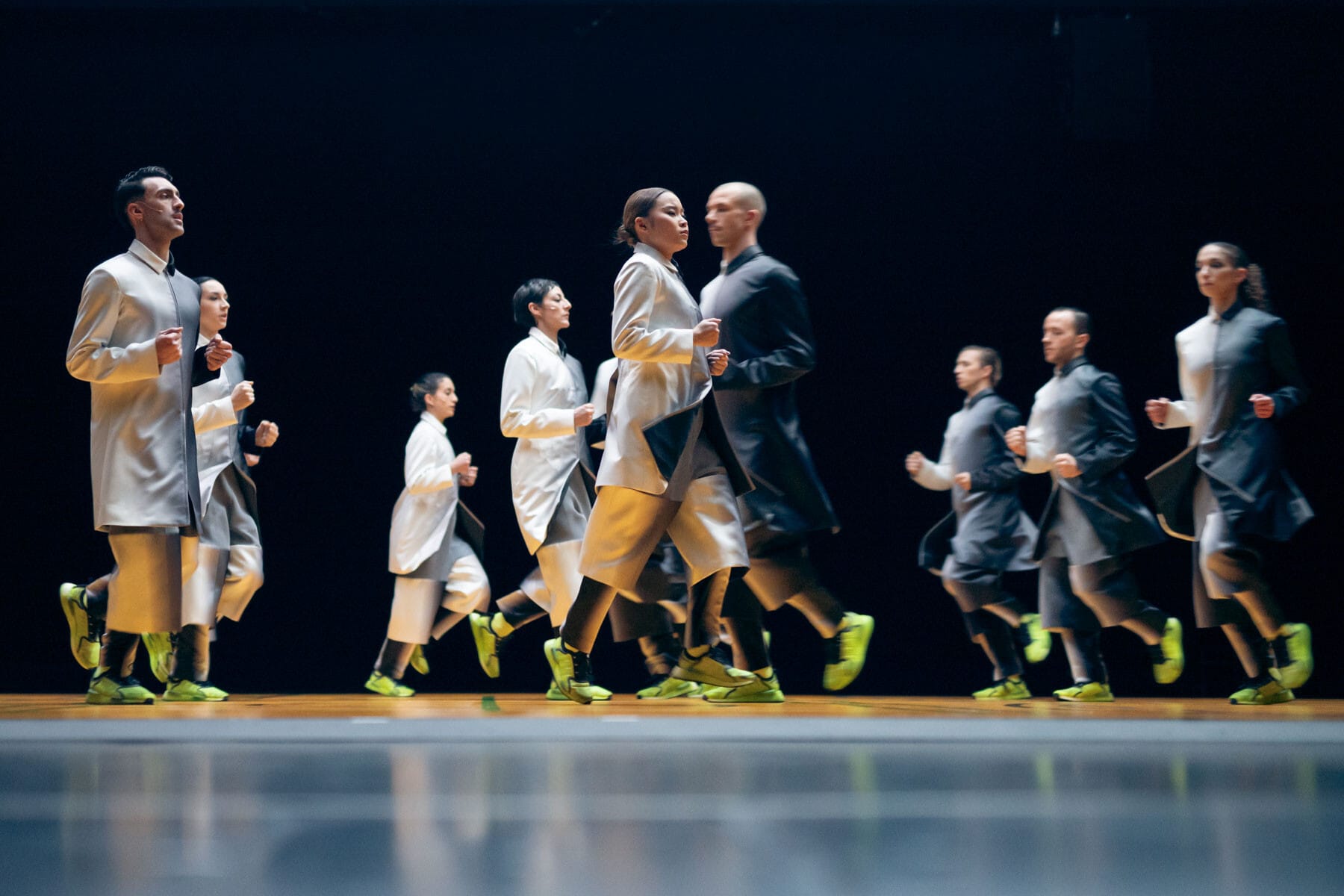
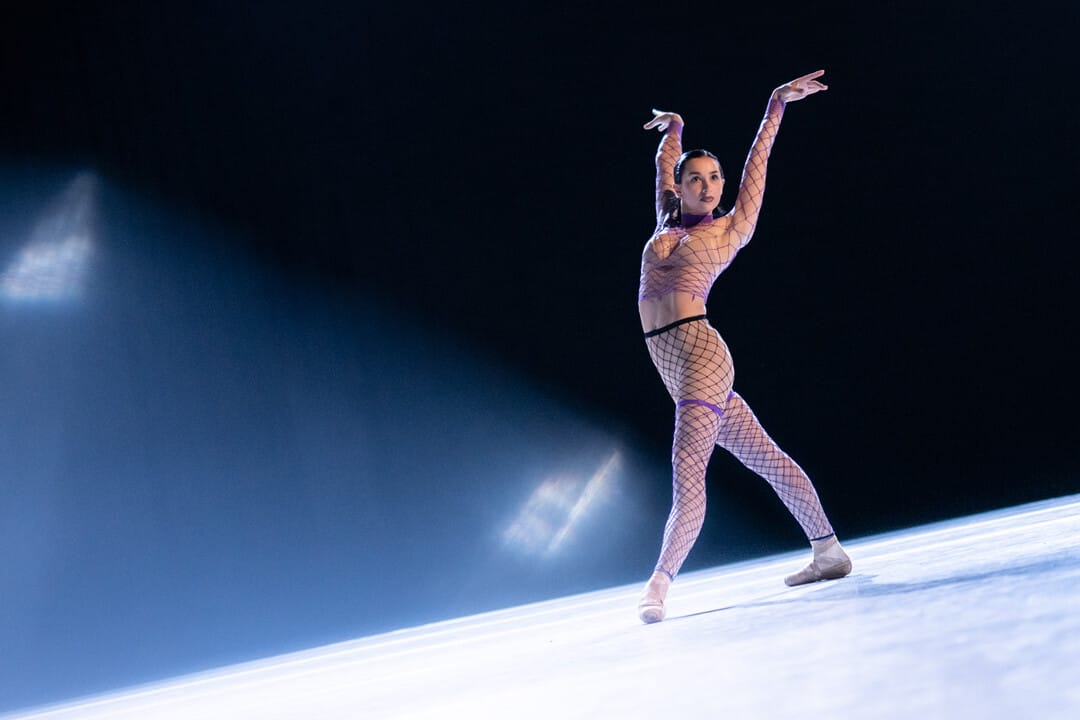
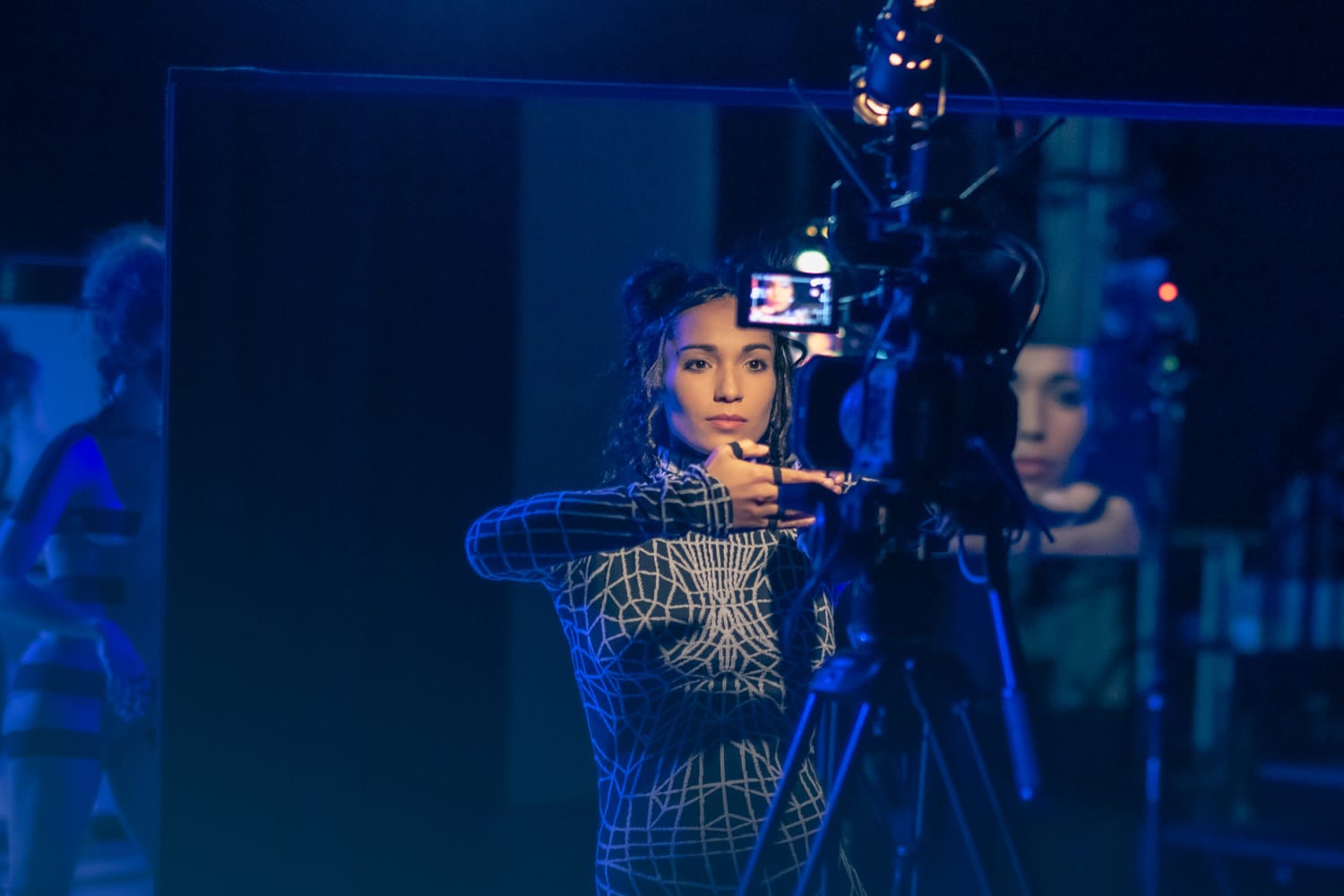
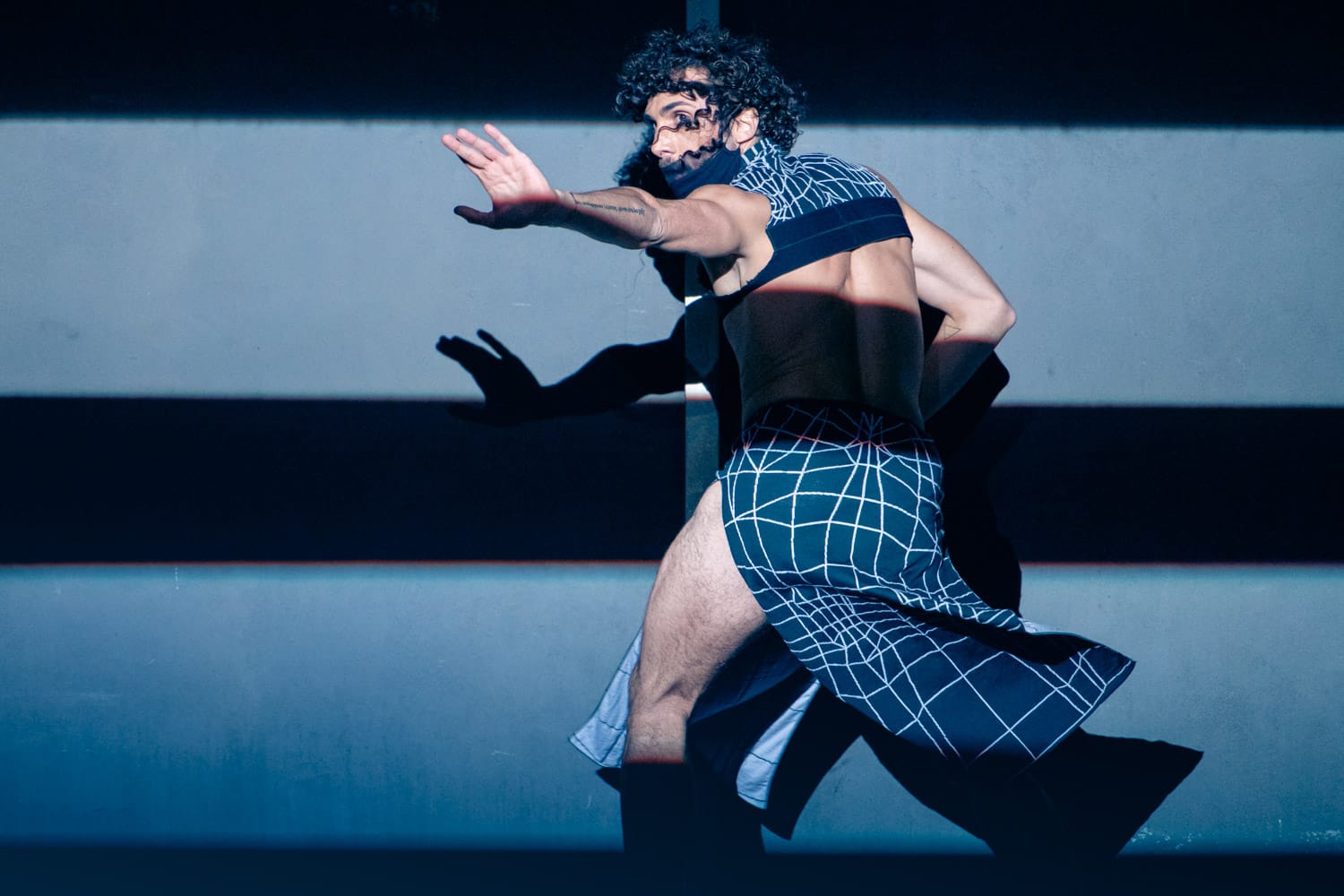
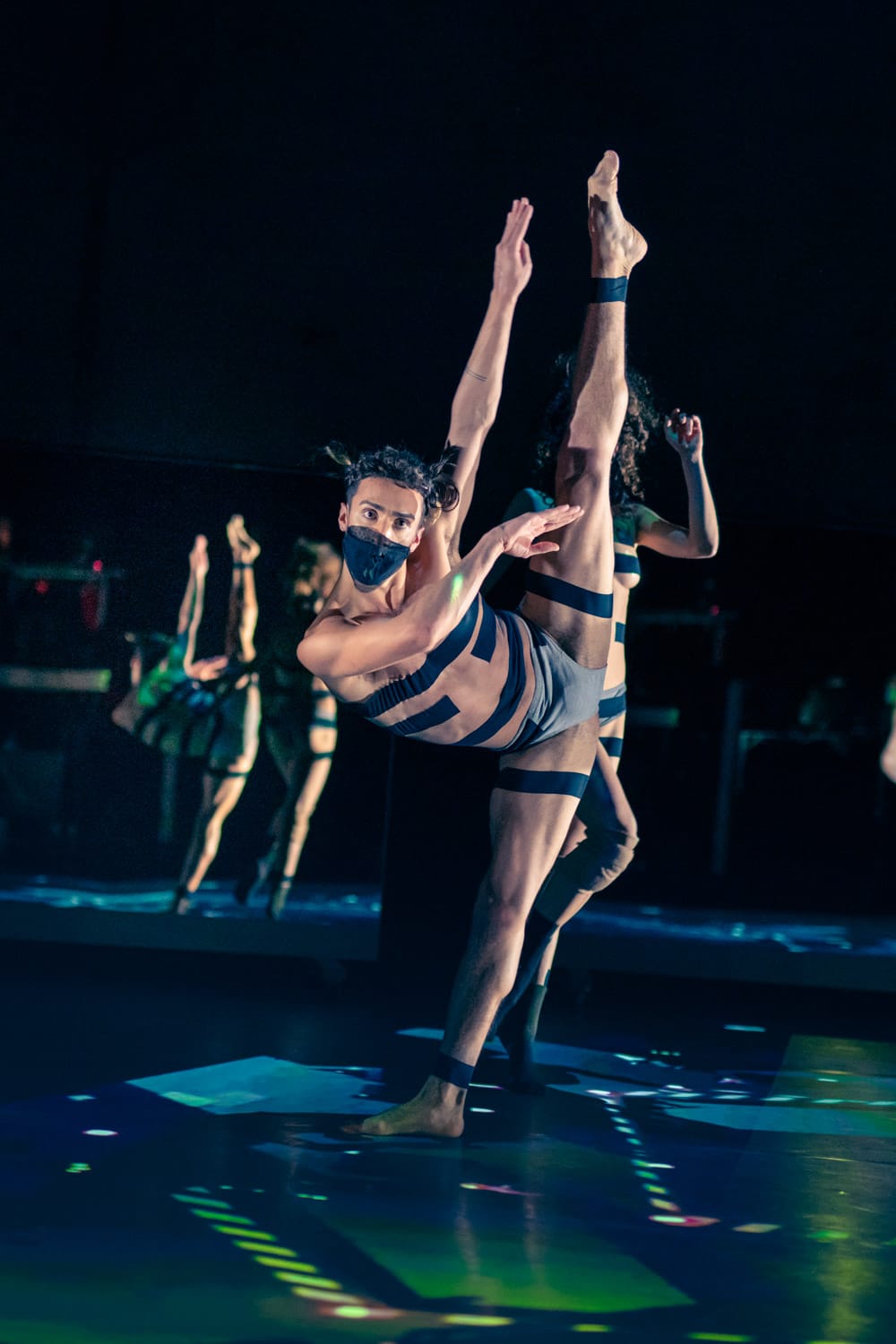
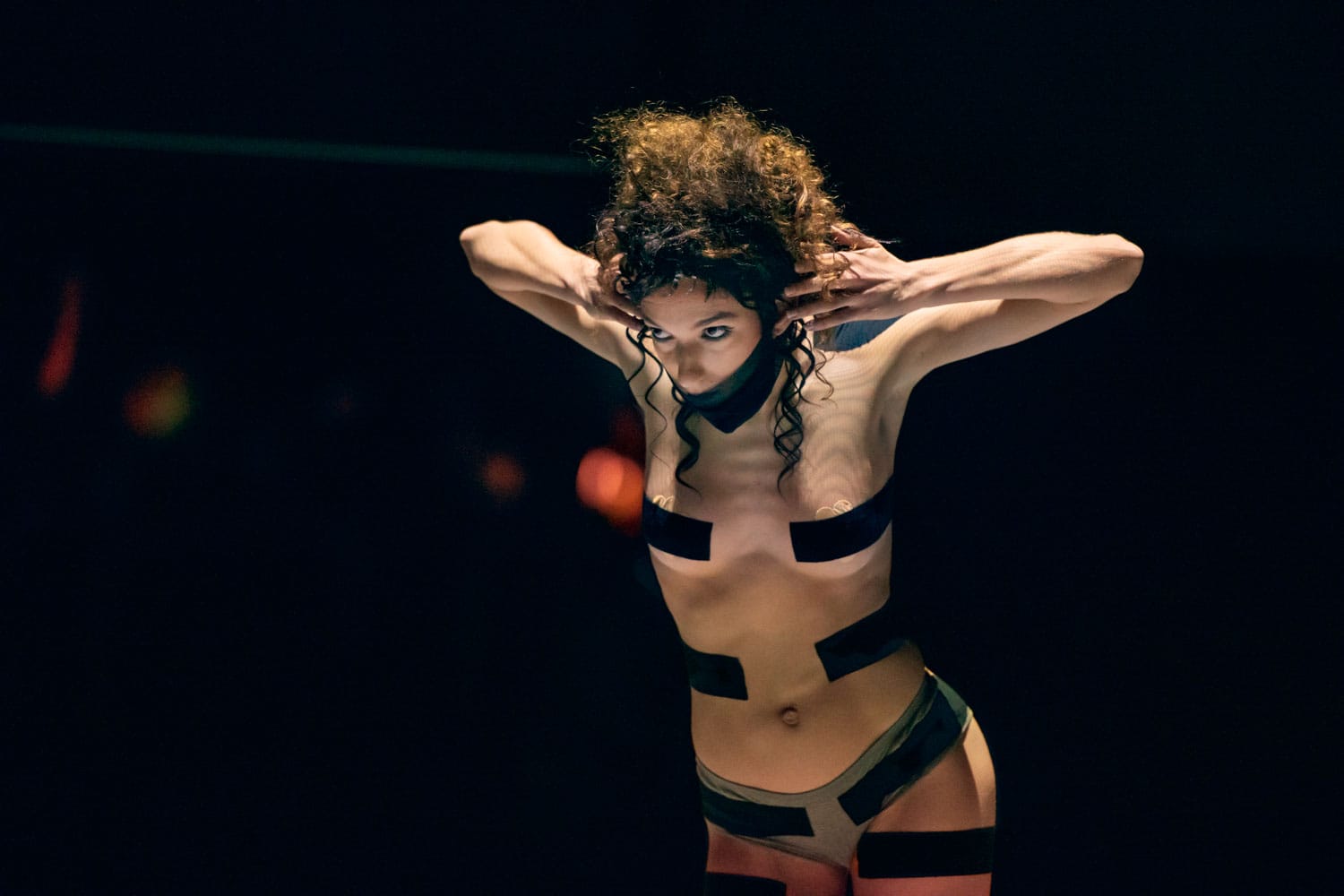
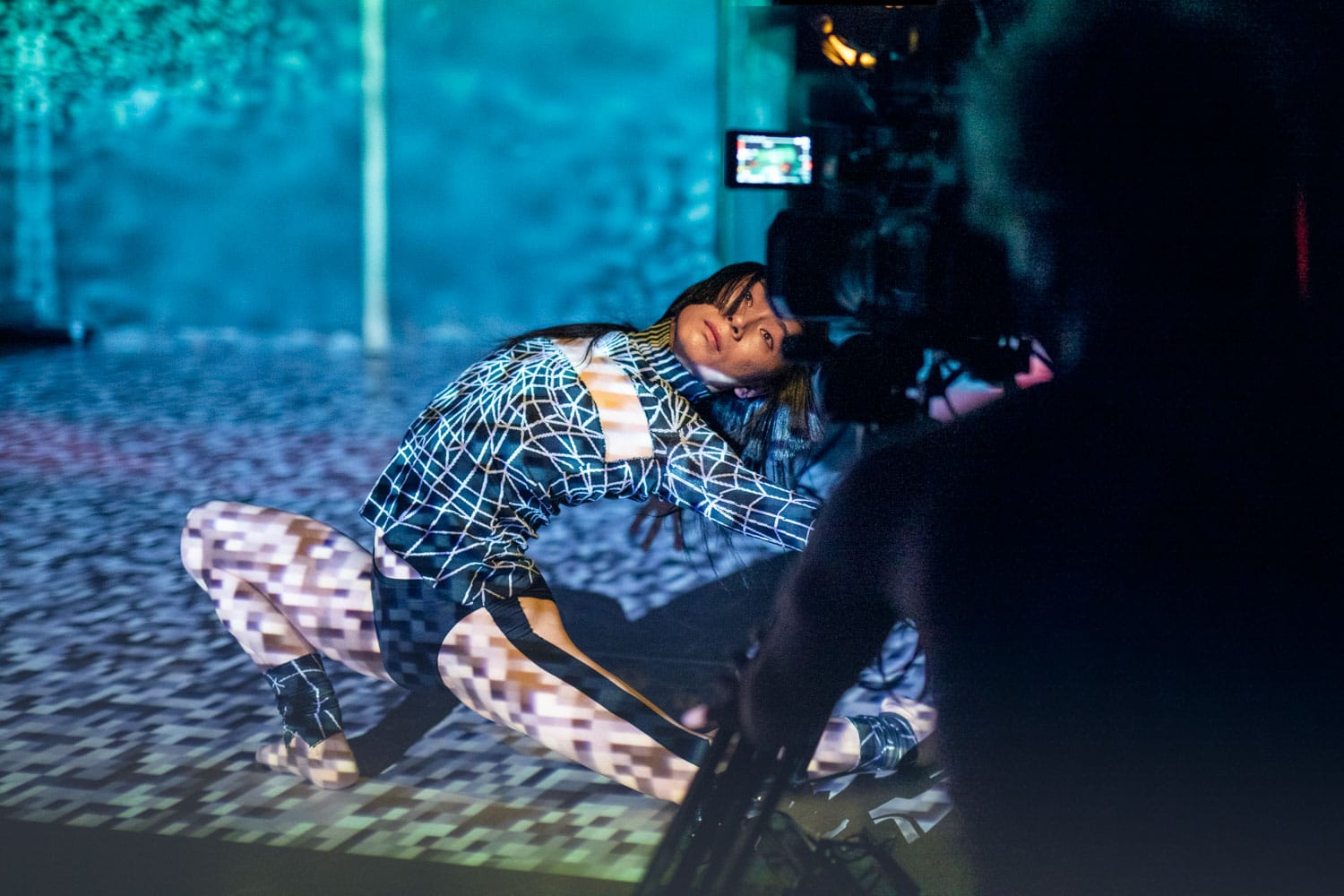
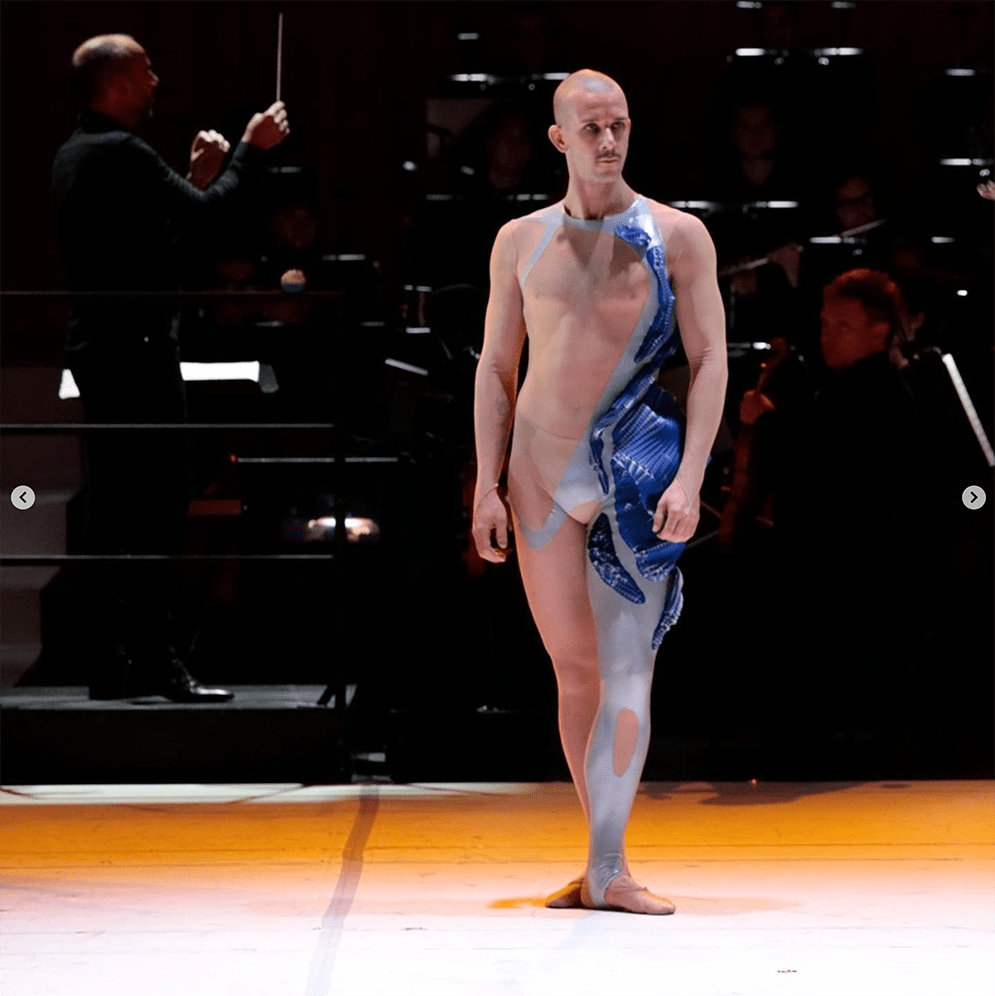
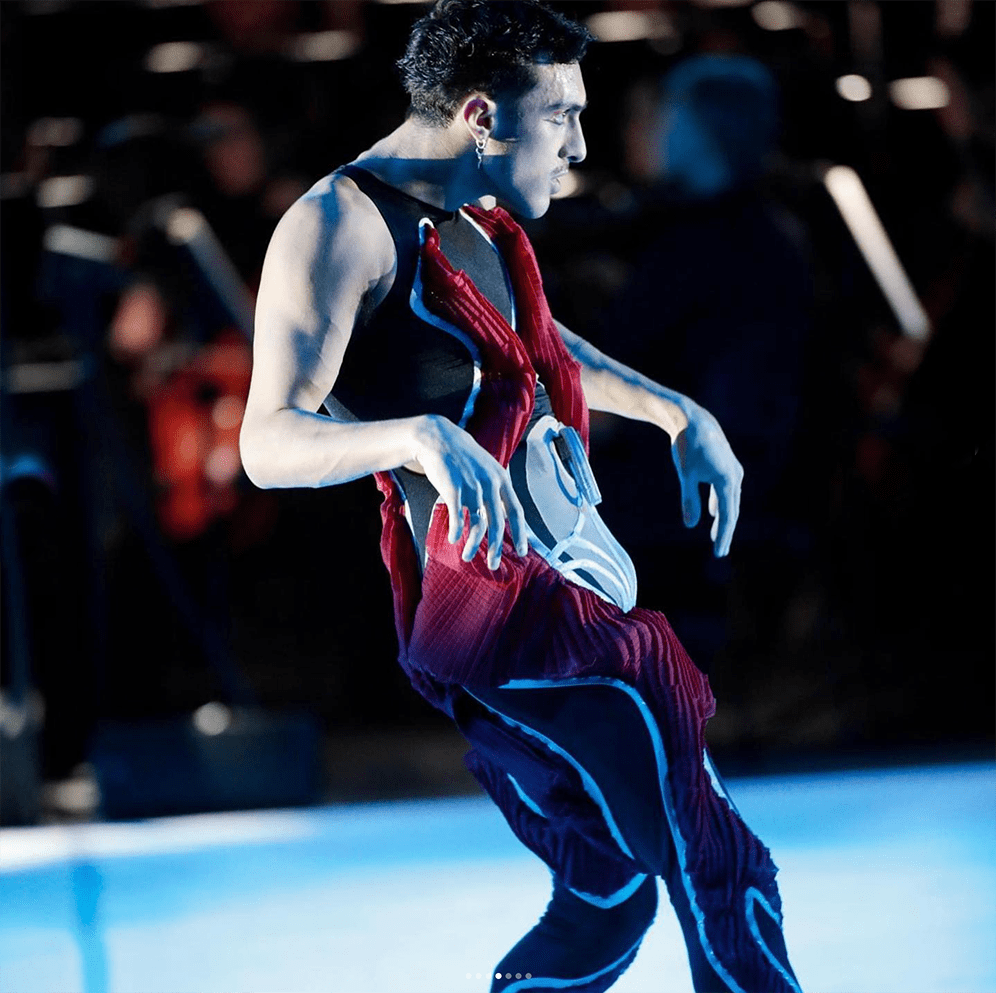
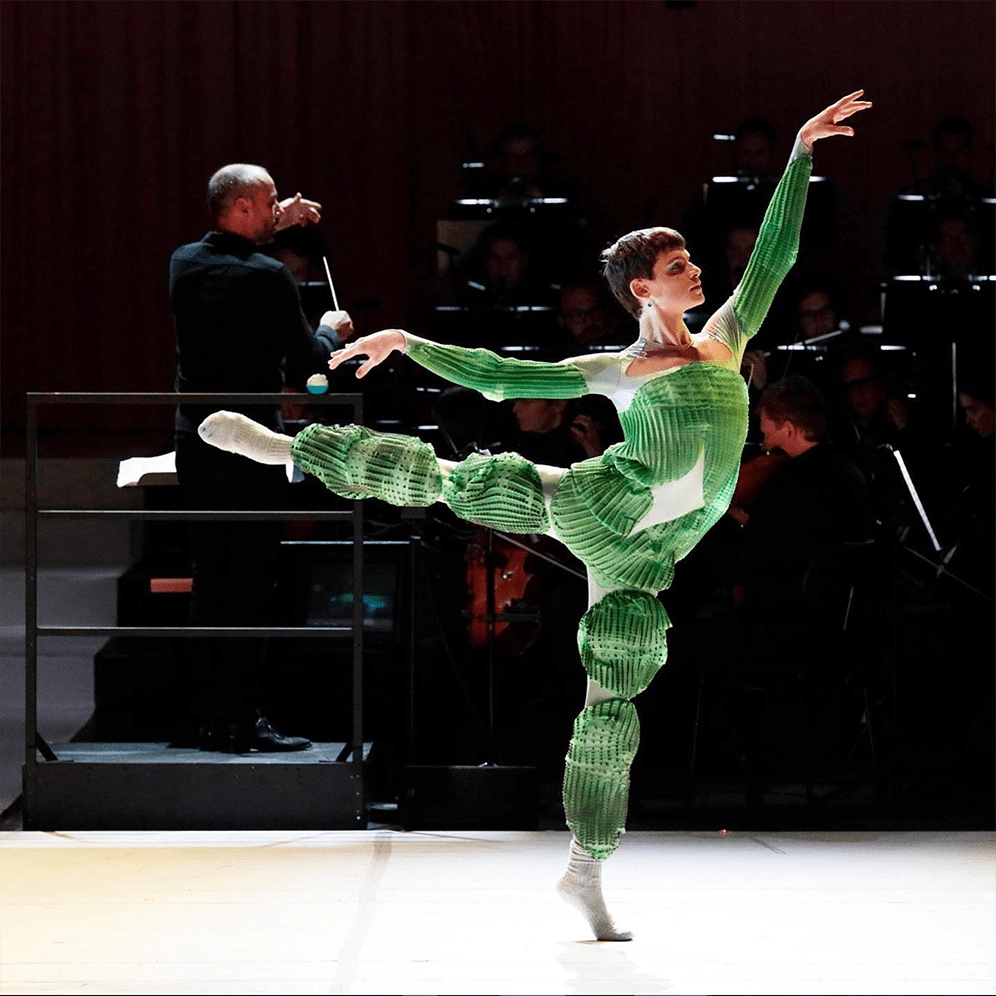
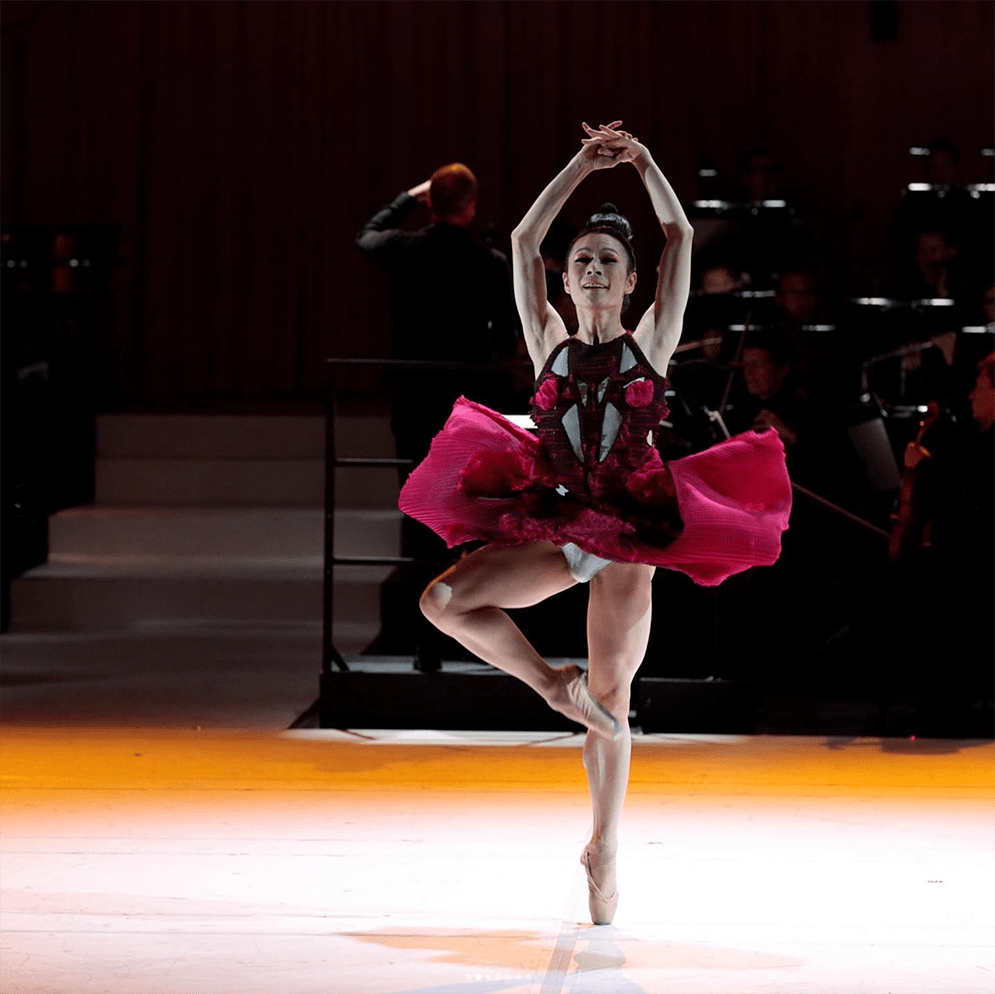
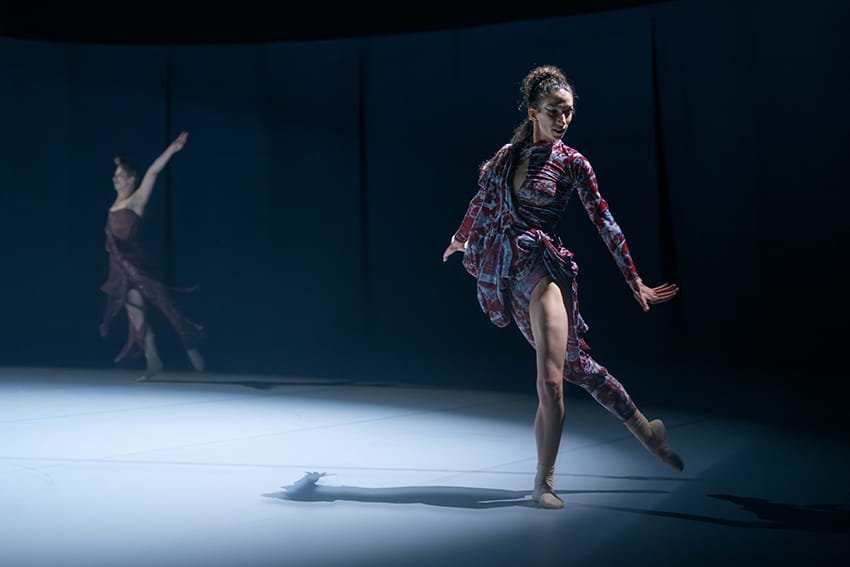
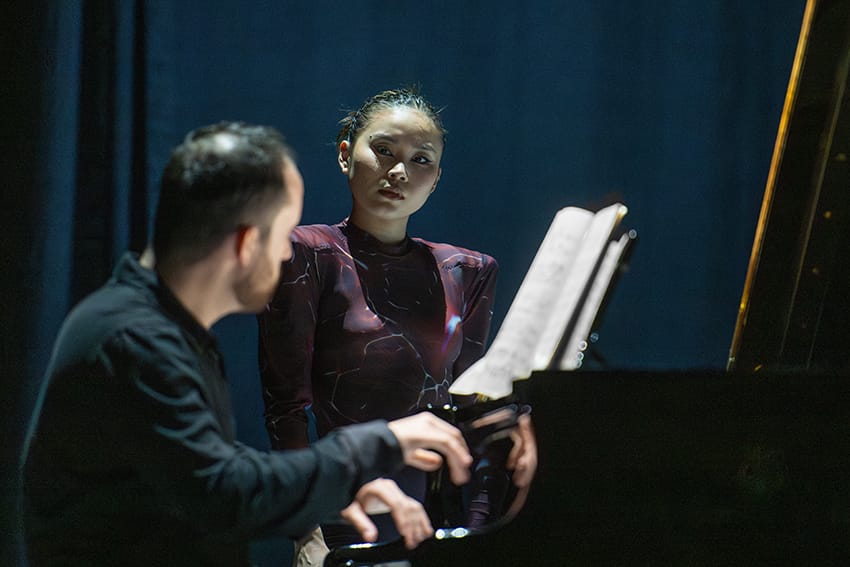
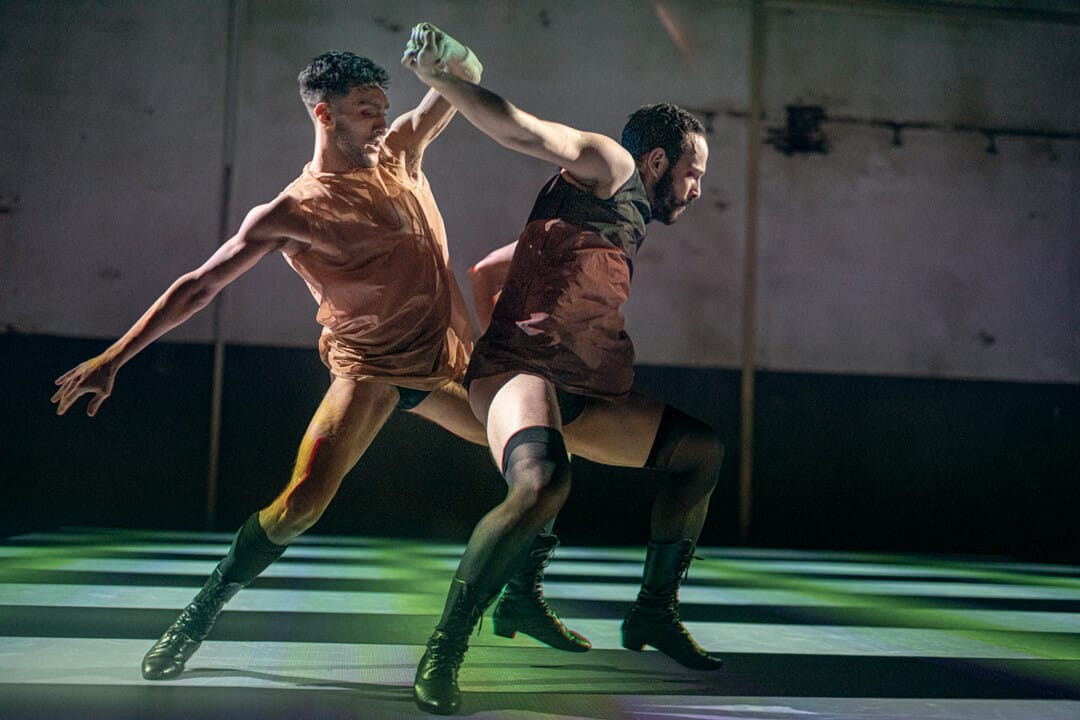
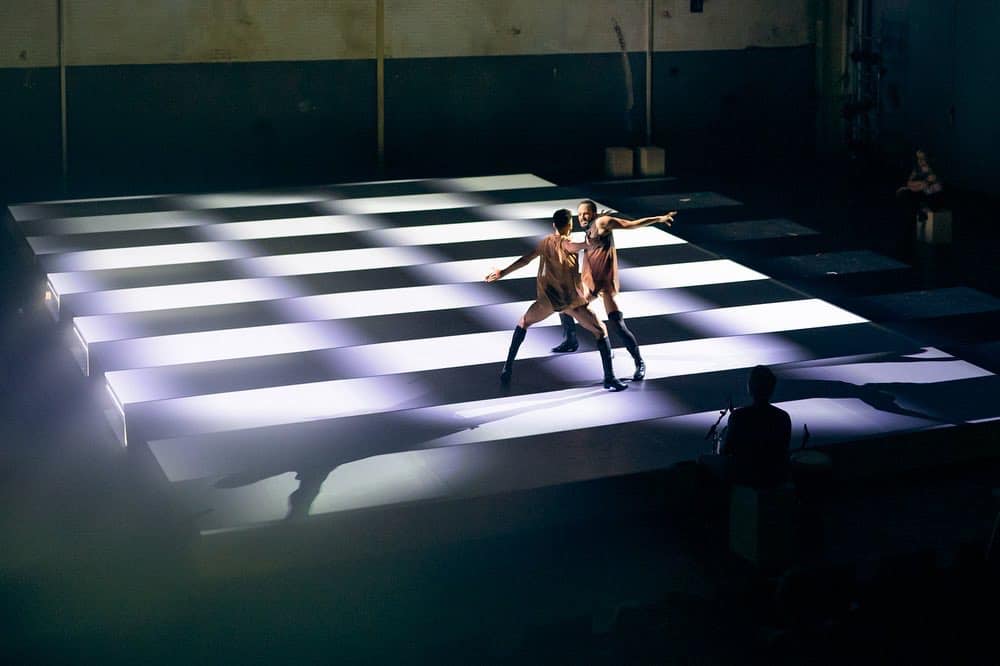
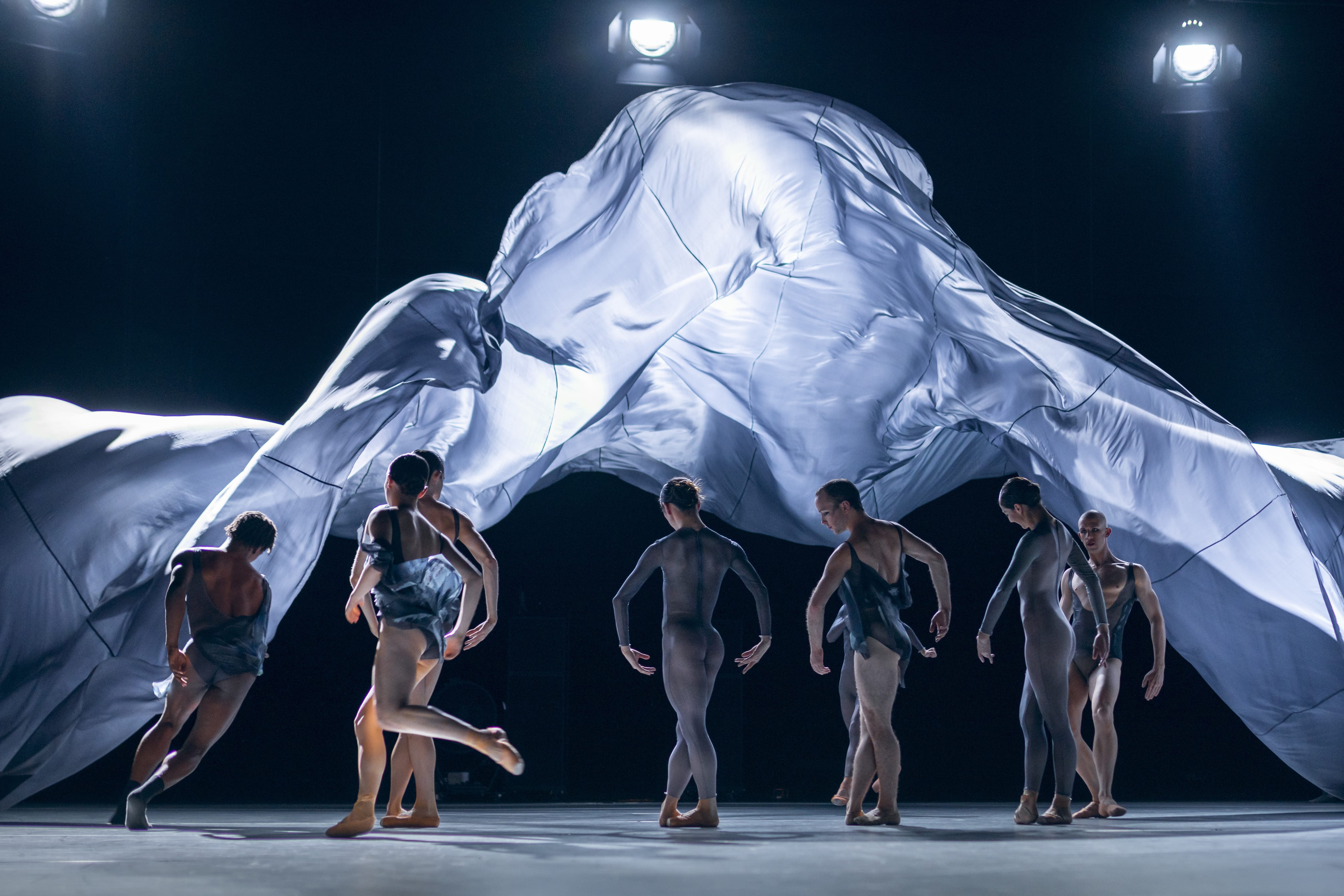
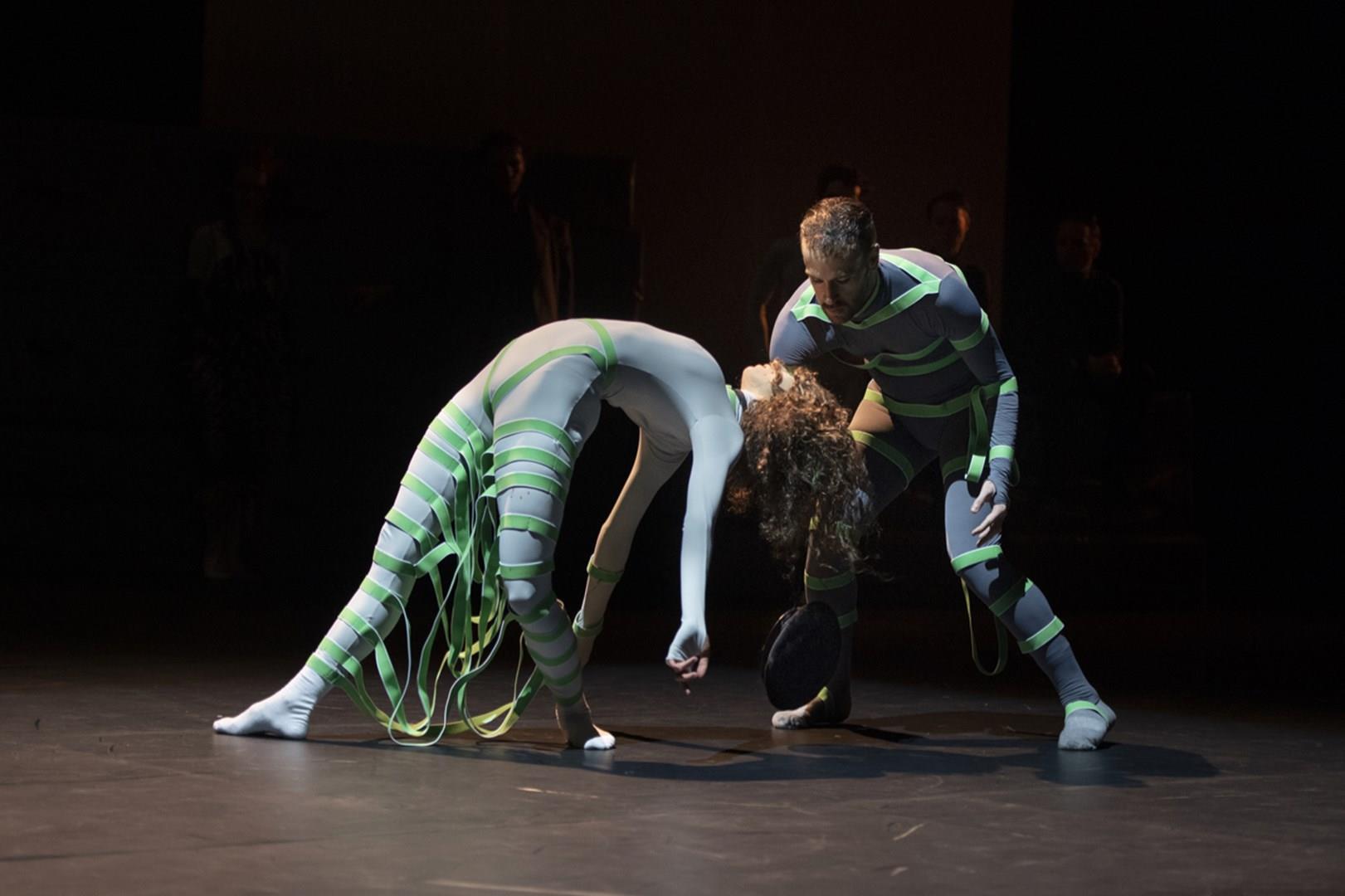

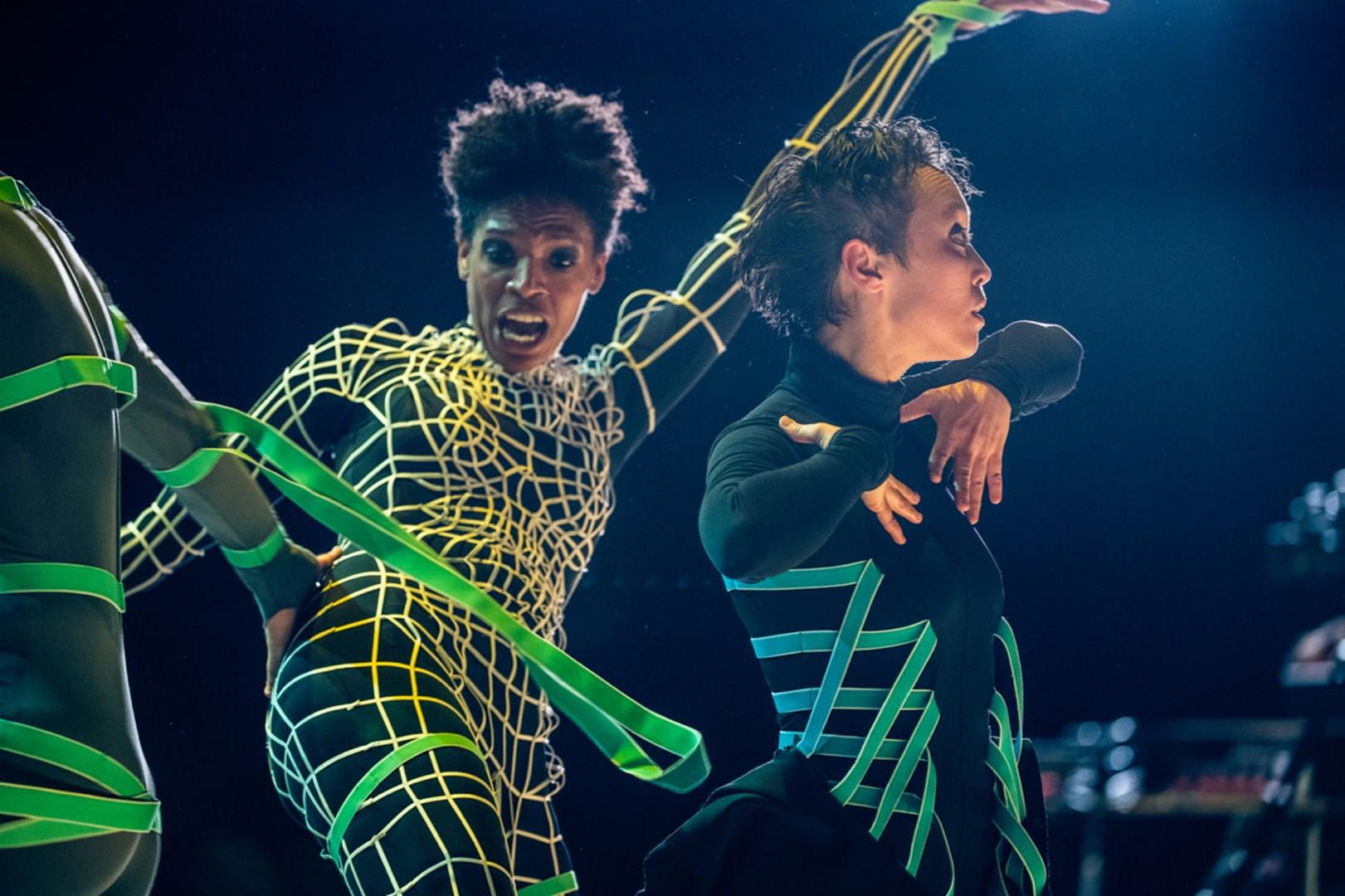
Flora Miranda’s collaboration on costumes with Ballet Of Difference.
Flora Miranda created the costumes for Ballet Of Difference’s pieces ‘Ballet of (Dis) Obedience)’, ‘Body Withoug Organs’, ‘Petruschka’, Xerrox Vol.2’, ‘Spiral’, ‘Roughhouse’, ‘New Ocean’ and ‘One For The Money’.
Richard Siegal founded a new ballet company in 2016, which sees itself as an alternative to institutionalized contemporary ballet. The Richard Siegal / Ballet of Difference company unites outstanding dancers from different nations and cultures, who have been shaped so artistically and socially in so many different ways that everyone has developed very specific skills that are incorporated into the joint work. The team of 12 dancers comes partly from the international independent scene as well as from established companies. This artistic complexity and diversity is the program and so Richard Siegal / Ballet of Difference pushes the boundaries of what is considered normal in our society.
The company was originally organized as a free group, based in Cologne and Munich. Since the 2019/20 season, Schauspiel Köln has been the new home of Richard Siegal and the Ballet of Difference.
Flora Miranda designs 9 digital outfits for Iconic Industries.
Visit iconicindustries.at and order your digital garment - designed by us. Choose from 9 looks inspired by different industries, submit a full body selfie of yourself and receive your custom shaped outfit.
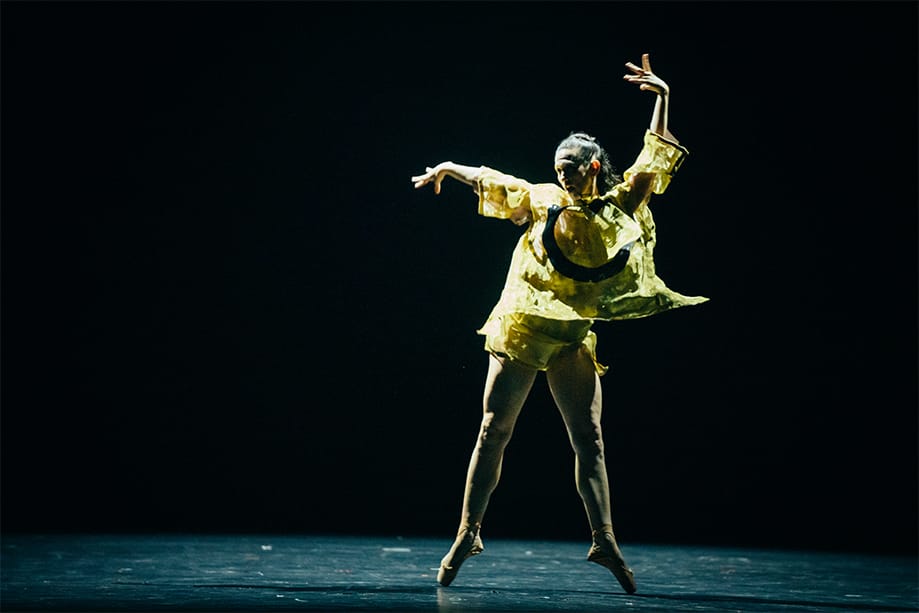
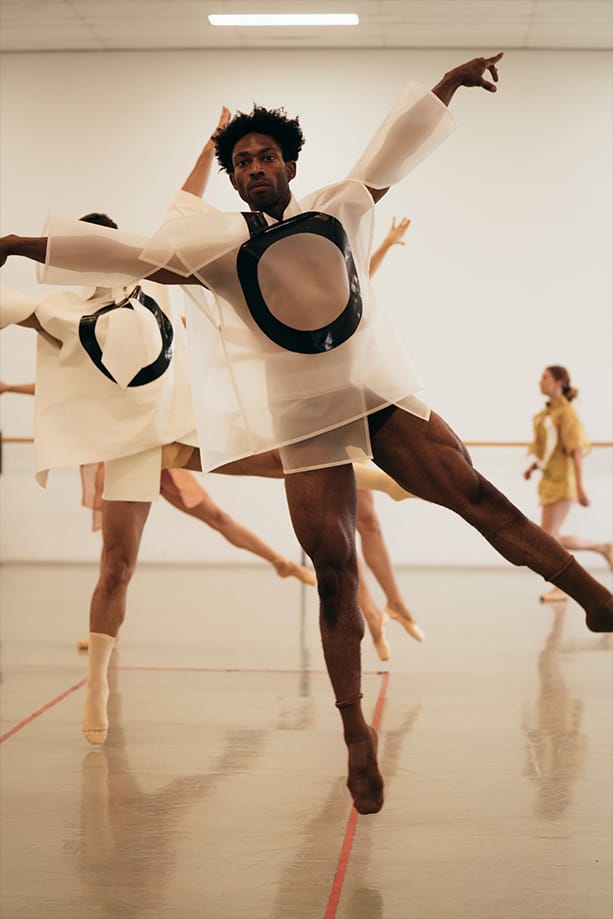
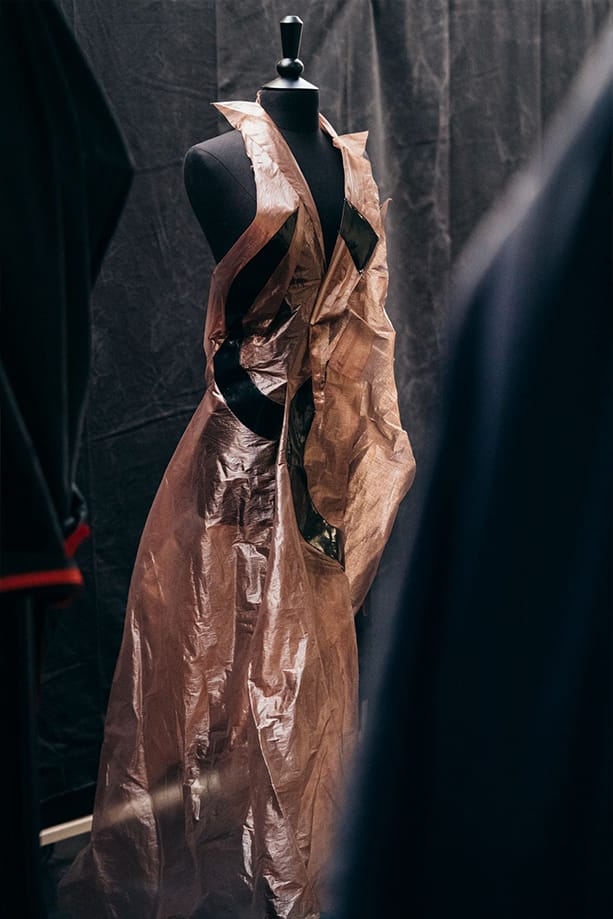
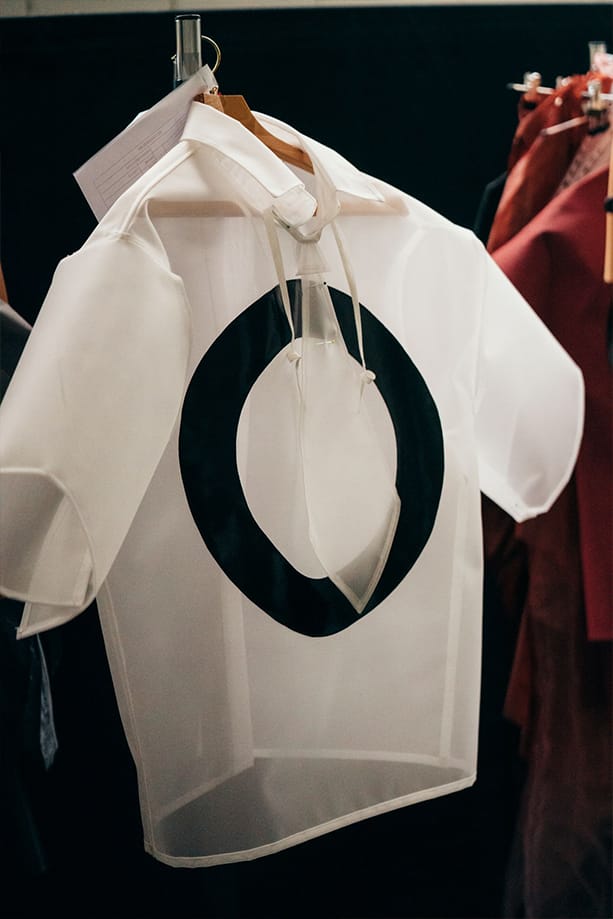
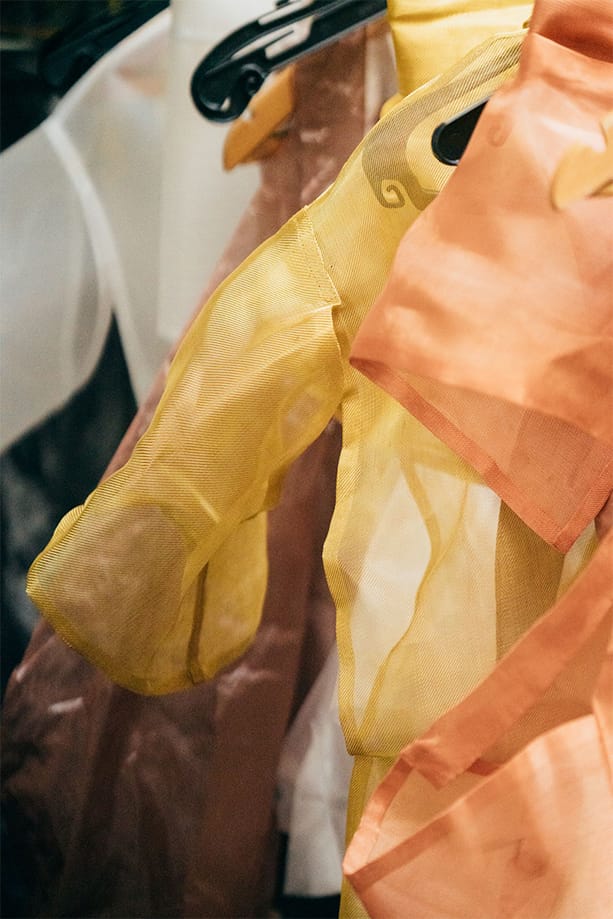
For his world creation New Ballet mécanique, Richard Siegal joins forces with installation and sound artist Zimoun, who creates immersive worlds full of movement and sound from constructions of everyday materials.
What will be on show? Only the elements needed to create the sound for the choreography. The artist aims for an impactful installation, an impressive scene and an immersive experience for the audience. He wants to exploit the grandeur of the stage and let his installation and sound evolve throughout the piece. His advice to audiences, therefore, is to dive into the play and become absorbed in the confrontation of the simple versus the complex in the same place and at the same time.

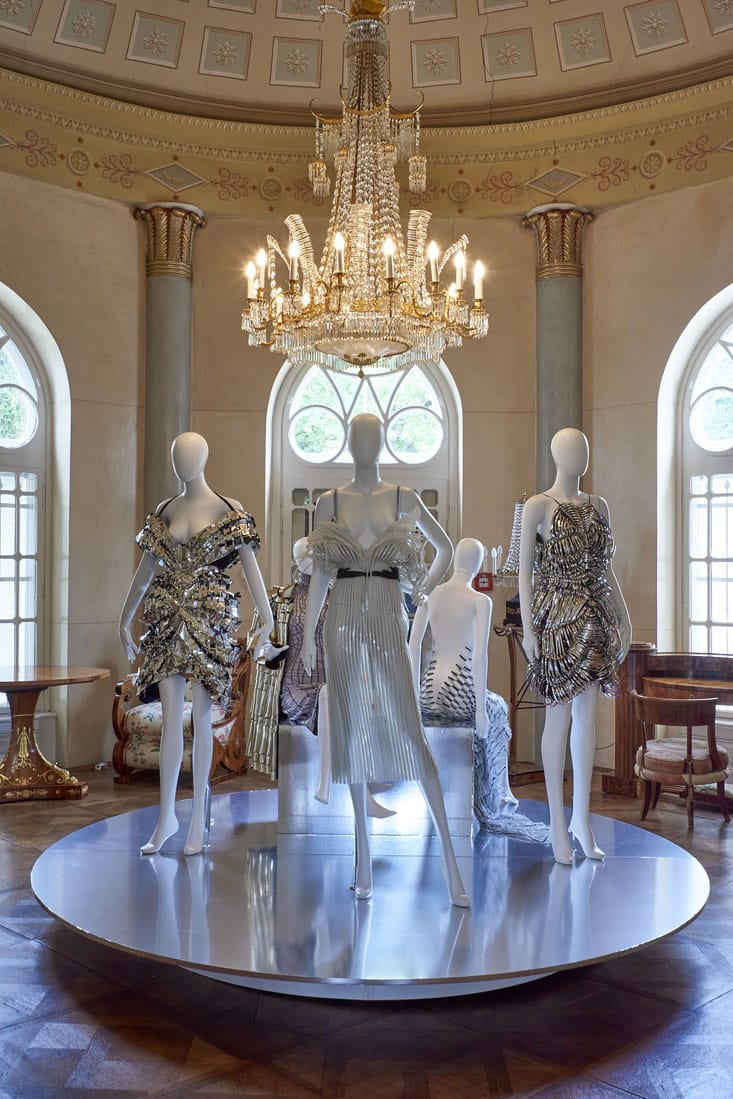
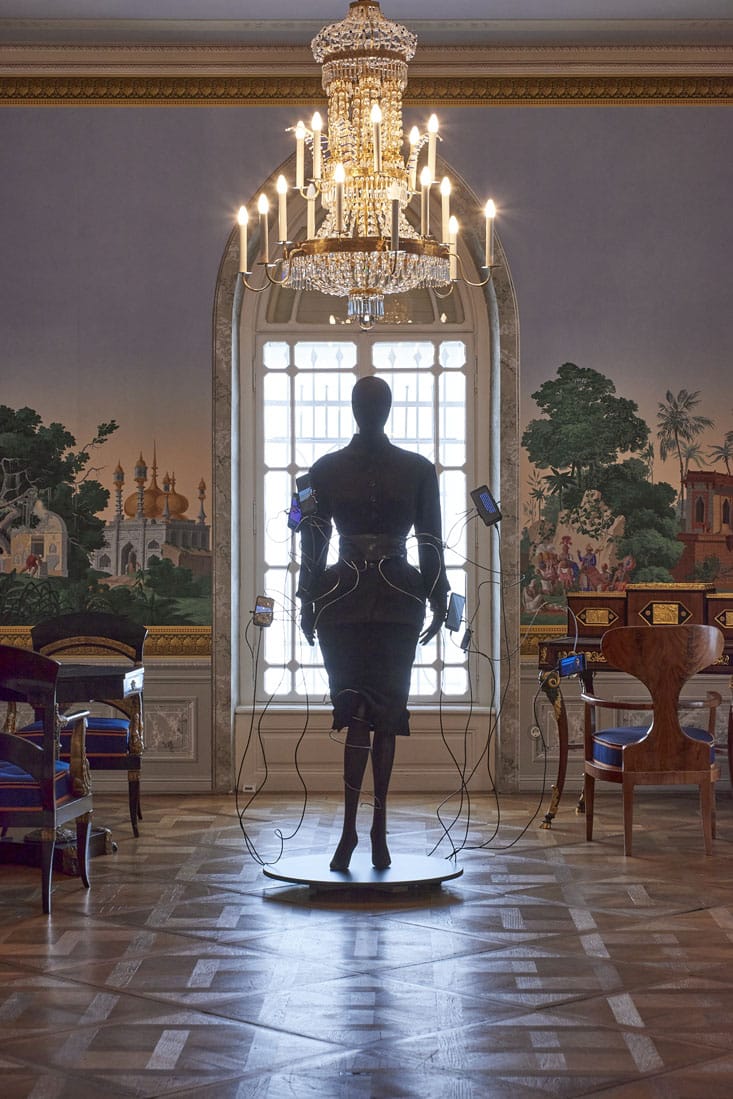
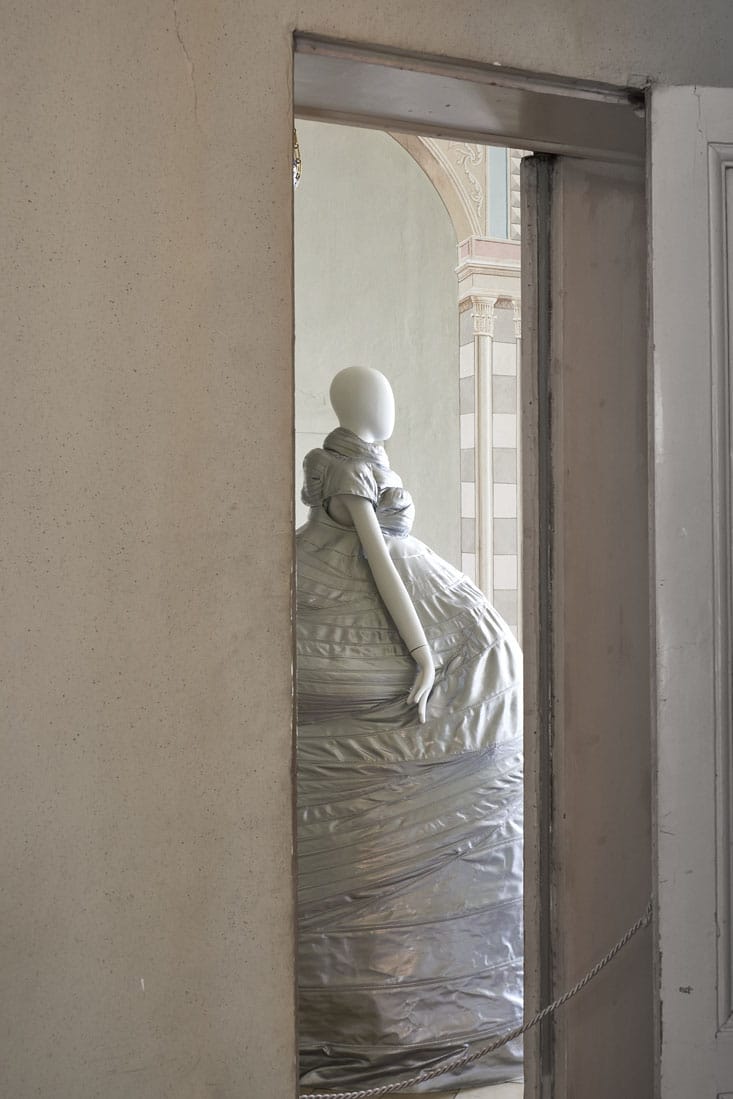
As part of the (Con)temporary Fashion Showcase in the historic ambience of the Geymüllerschlössel, the designer Flora Miranda is a guest with her futuristic-looking haute couture.
On the opening evening of the exhibition, Flora Miranda and Bruno Devos present the book “I AM DIGITAL”. The book offers a cross-section of her work and thus also includes more than a dozen looks that will be presented together with videos on site at the Geymüllerschlössel.
The Geymüllerschlössl is a space owned and curated by MAK Vienna.
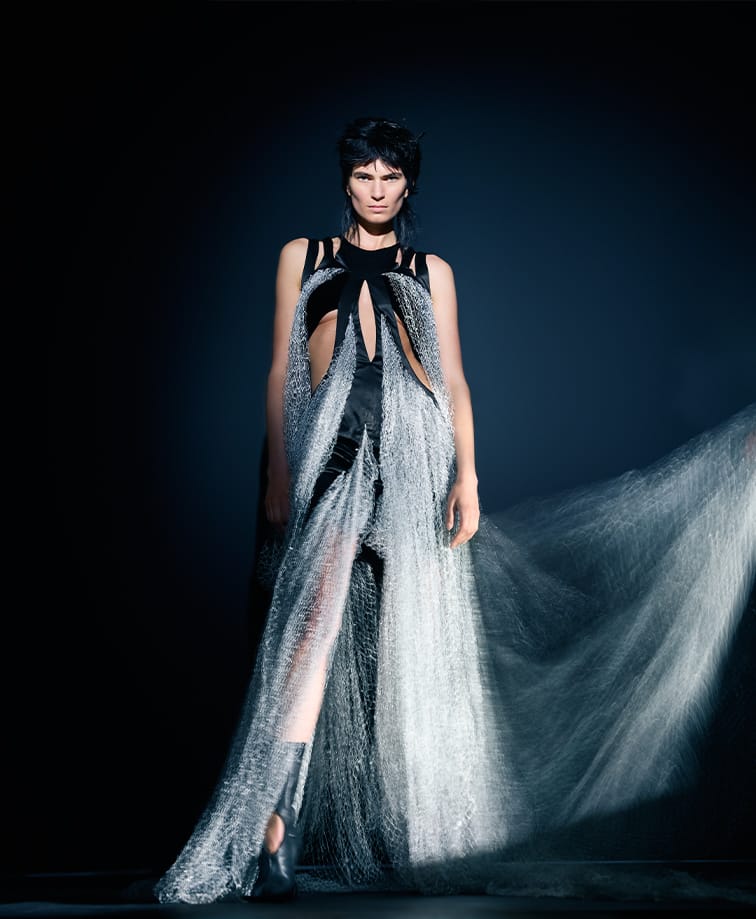

Vogue Portugal editorial featuring the Flora Miranda “Memories Dress”.
Photography by Gijs van de Veerdonk, styling by Amber Aste.
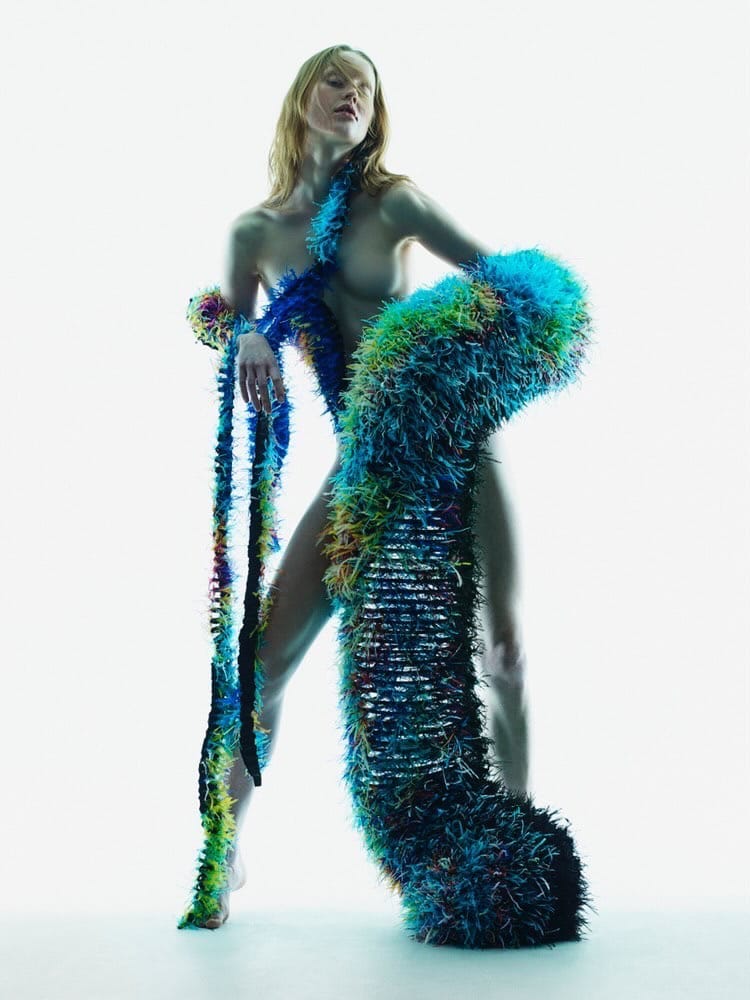
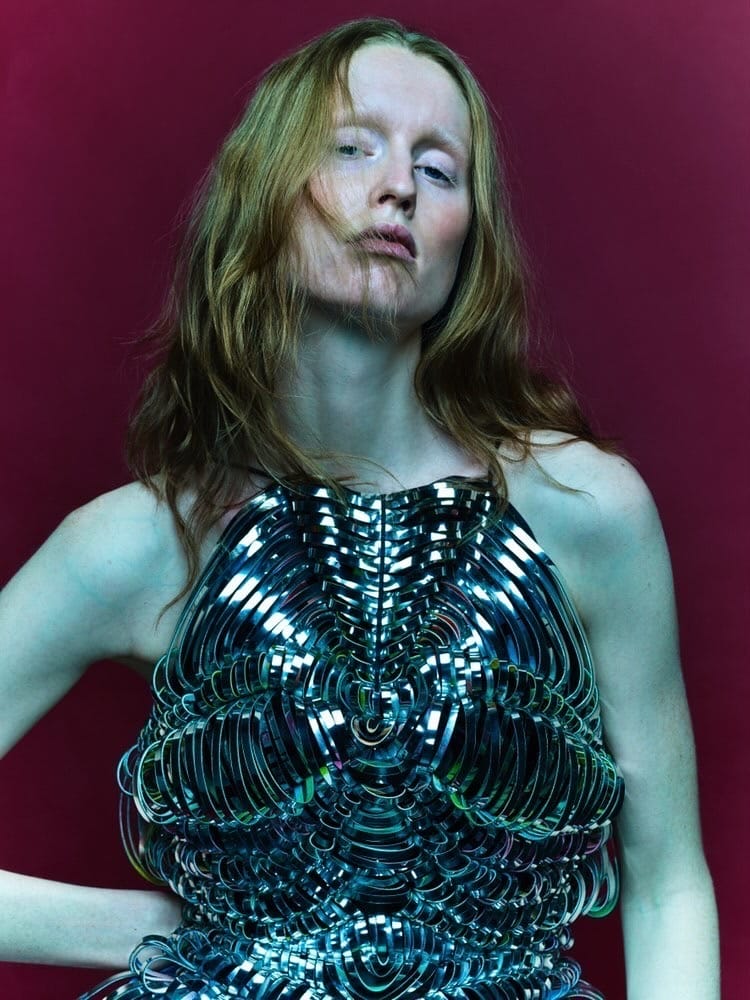
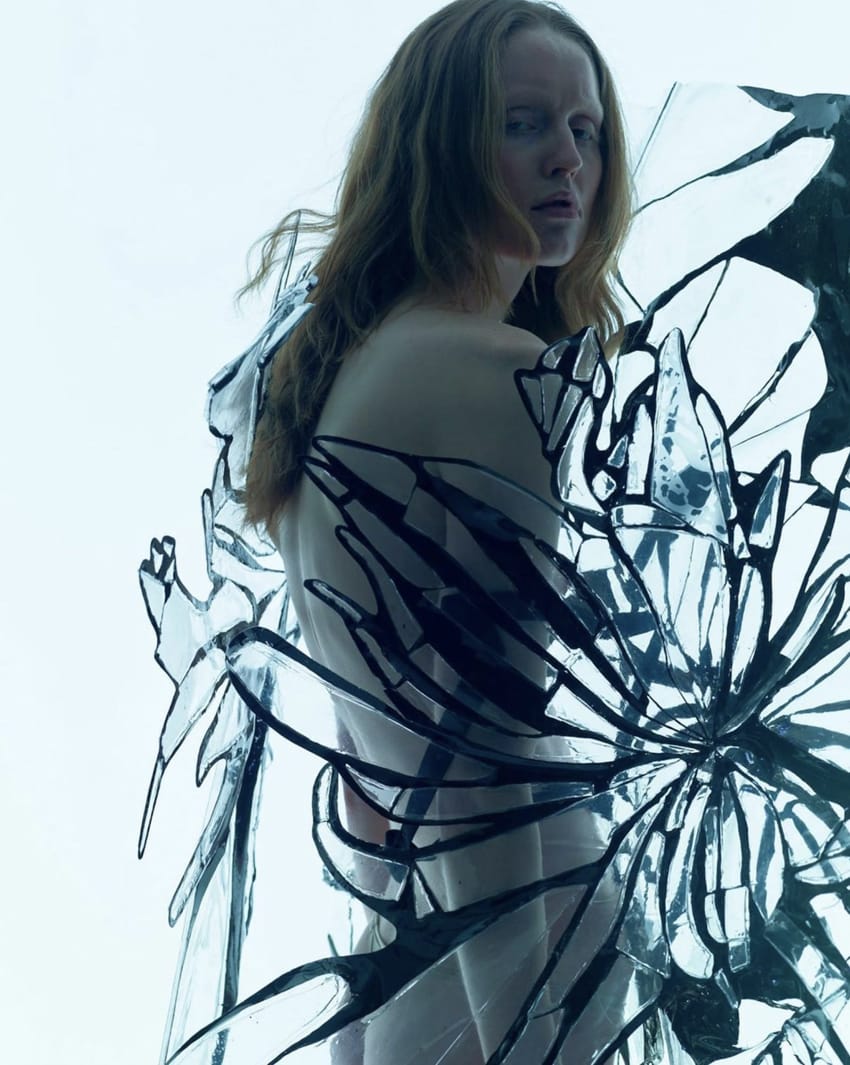
Behind The Blinds editorial by Gregory Derkenne, featuring the “Cracked Screen”, “Hug” and “Polarisation” dresses by Flora Miranda.
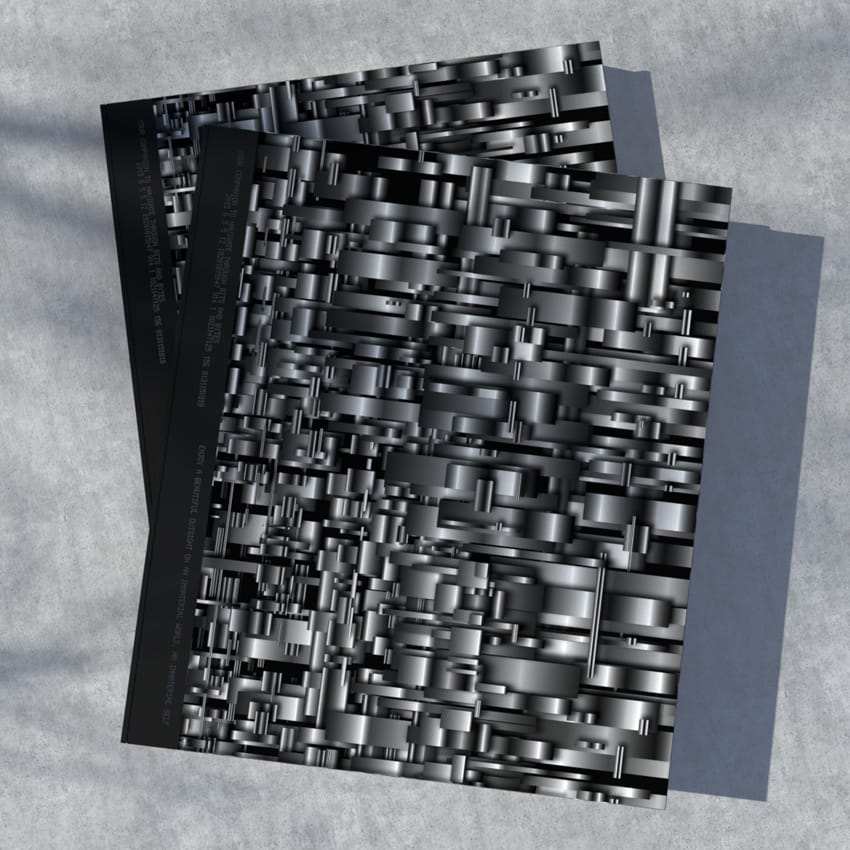
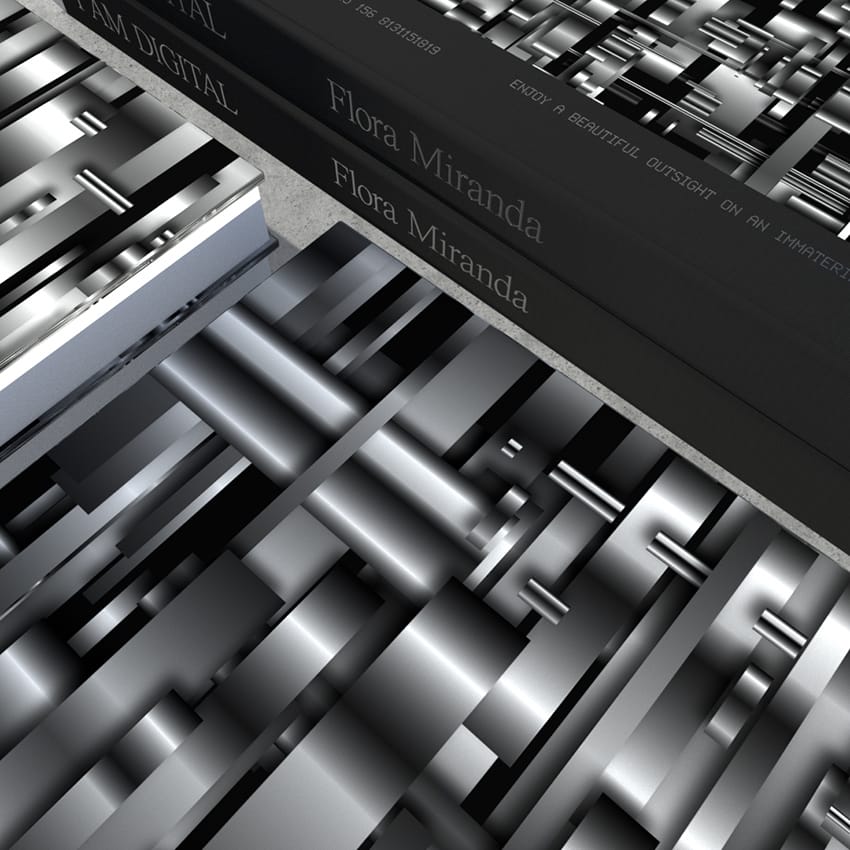
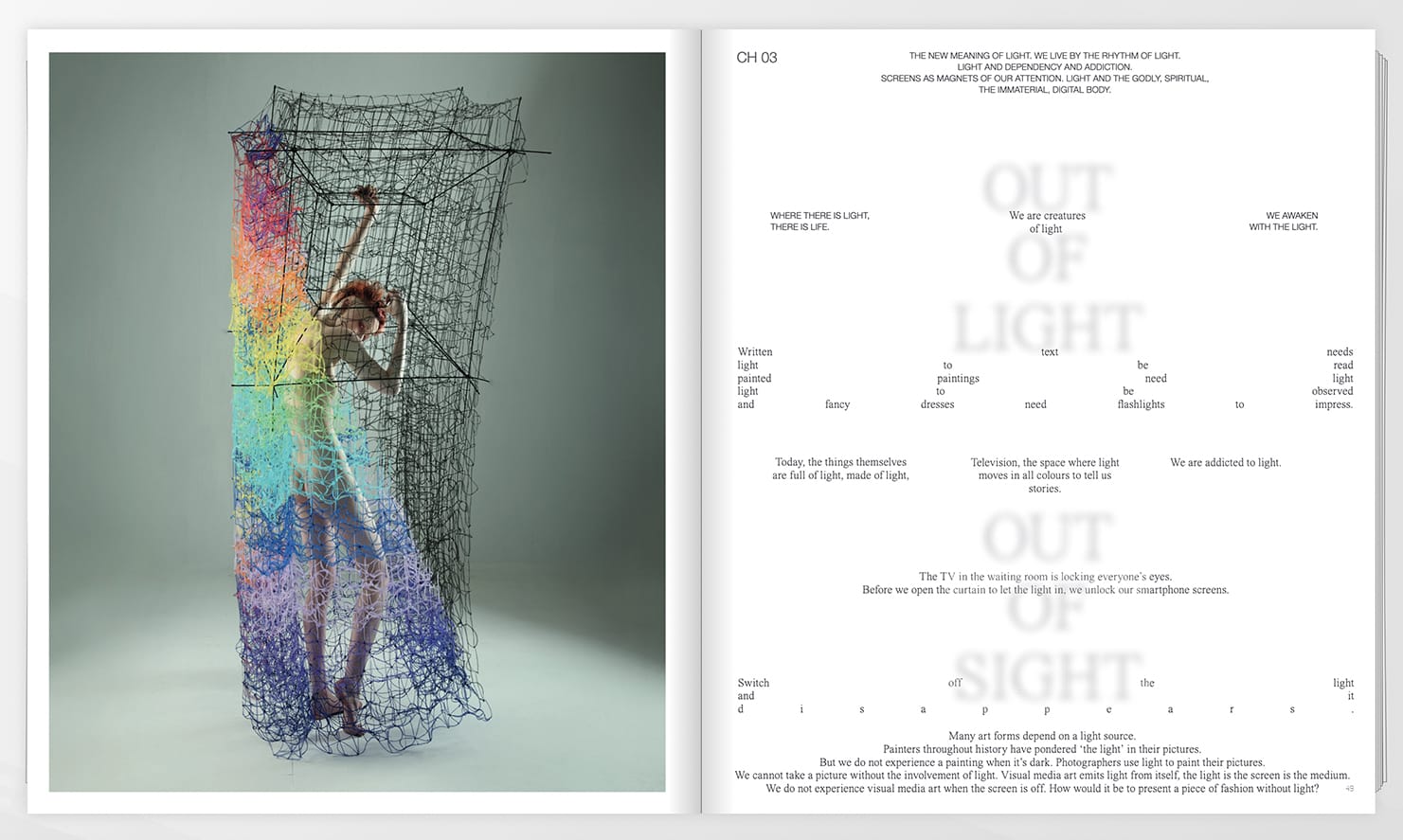

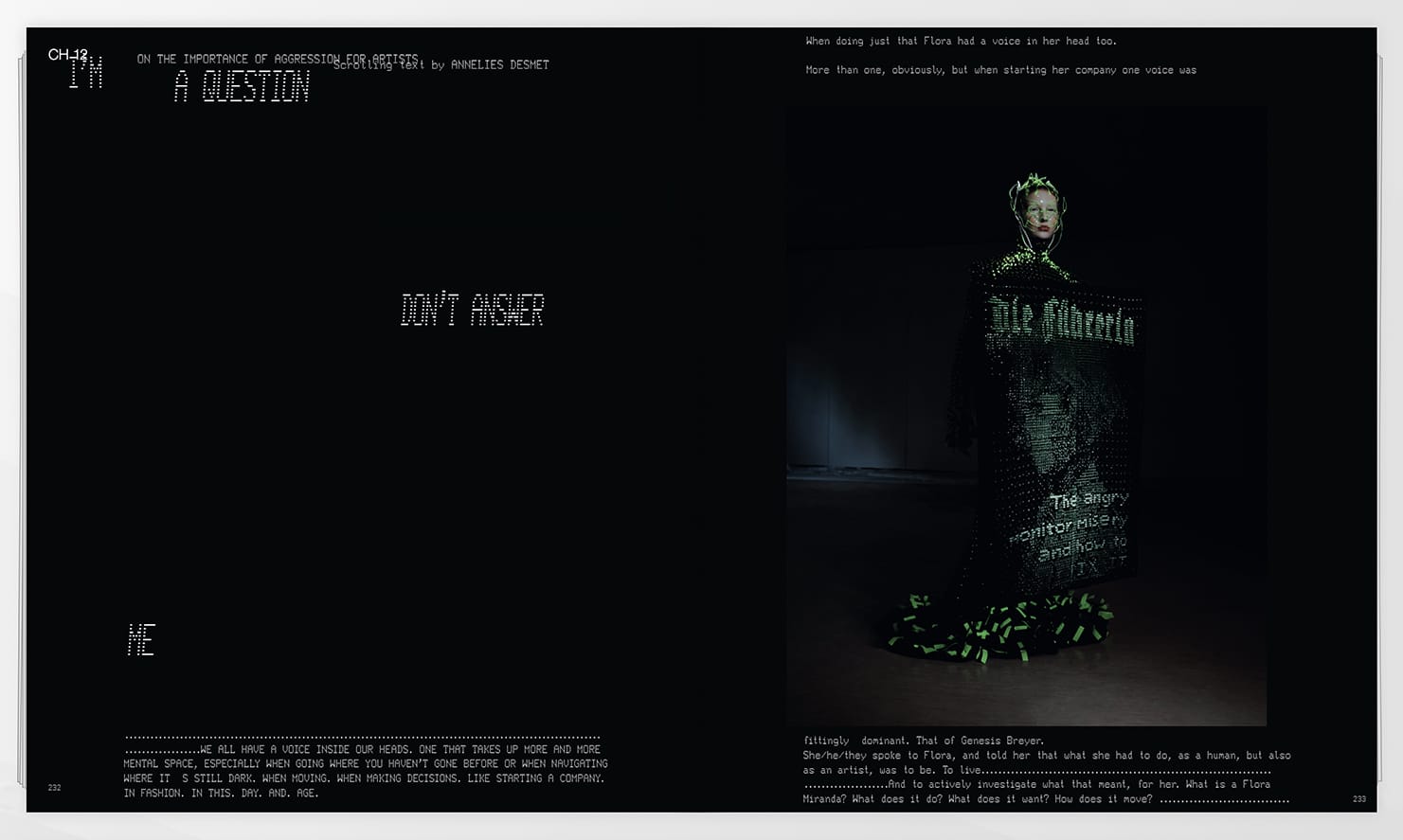
“I Am Digital” takes you on an intimate journey through Flora Miranda’s extraterrestrial world of phygital identities.
Explore technological storytelling, artistic haute couture creations and visions for creative fashion software. In the book, the multitude of Flora Miranda’s work unfolds in different subject areas. Enjoy a beautiful outsight of an immaterial world, an immaterial self.
Get your copy here: Shop
This book is your companion to navigate through bits and bytes. To feel strong in a jungle of hackers. It can inspire you to take things into your own hand – may it be a change of perspective on the world, may it be transformative, may it support projects you believe in, or may it help to build your own world.
Texts by Flora Miranda, Annelies Desmet, Antonia Seierl, Alec Empire, Katharina Van Sand and Karl Baier and more.
Images by Ronald Stoops, Laetitia Bica, Carlota Guerrera, Athos Burez and more.
Design by Tim Peters
Published by Bruno Devos/Hopper&Fuchs, printed by Stockmans Artbooks
352 pages, hardcover, 2.5 kg, 29.5 cm x 25 cm
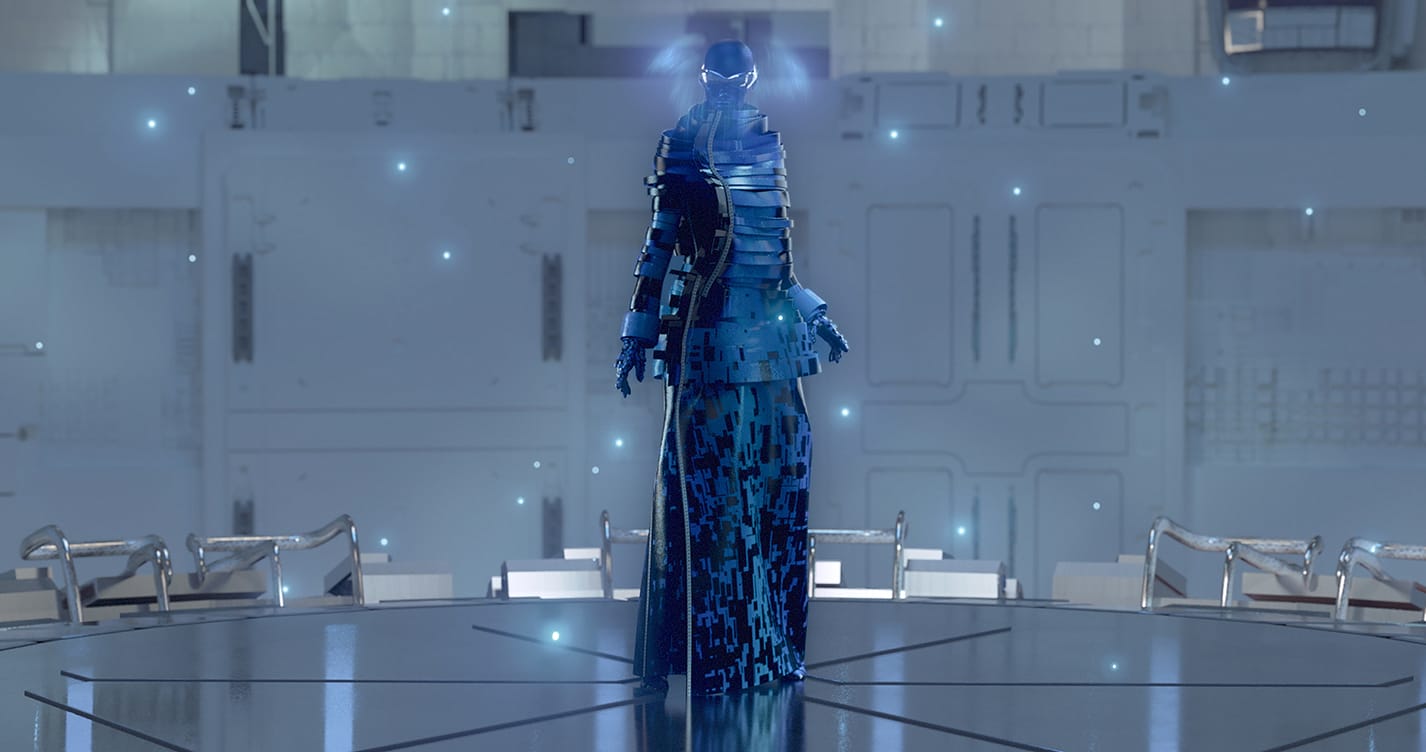
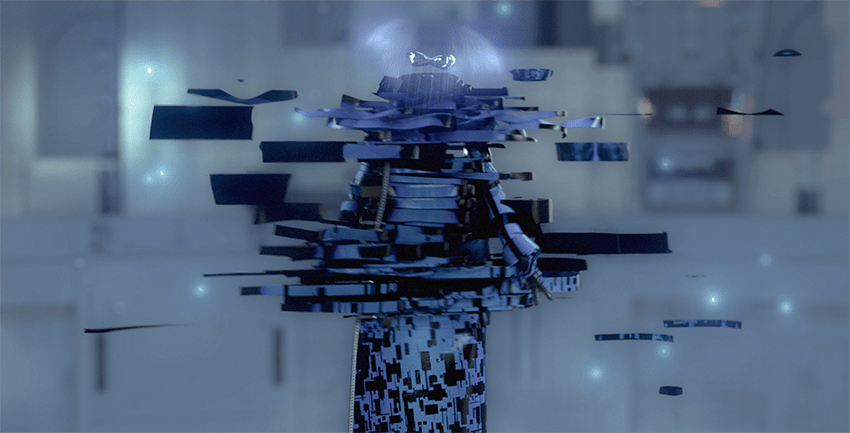
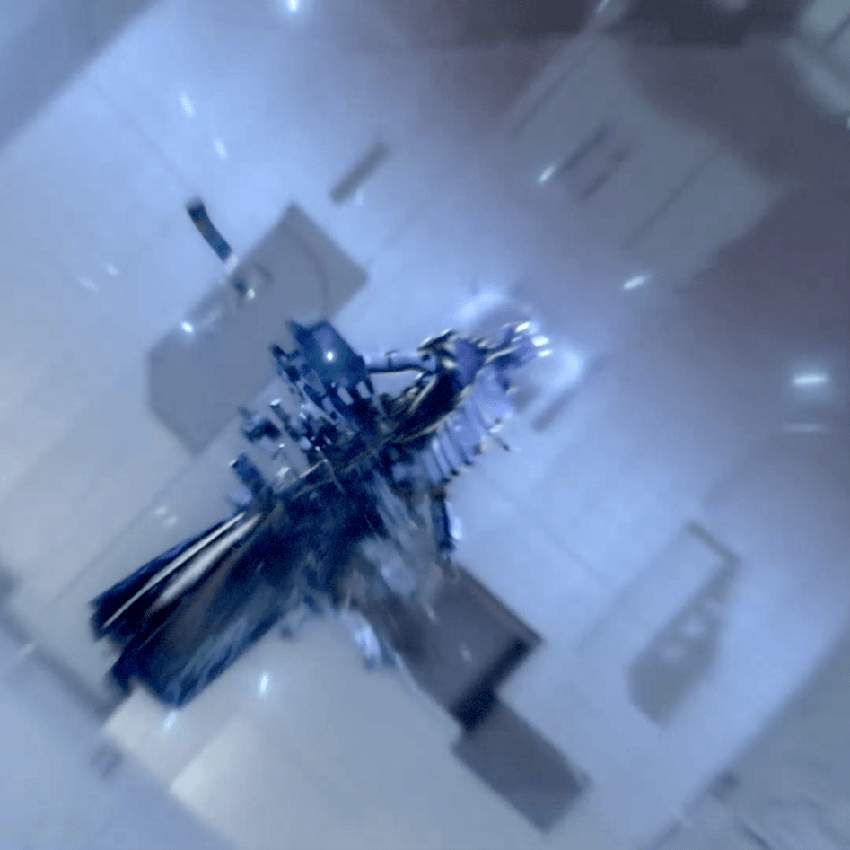
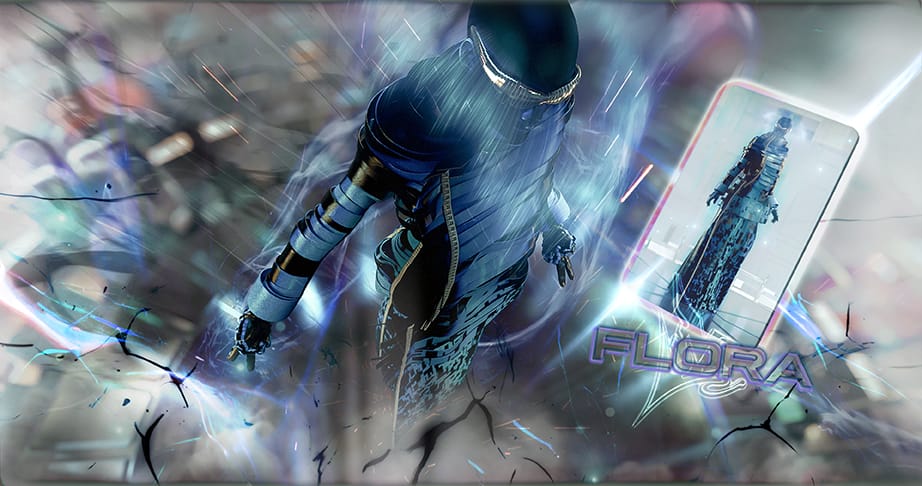
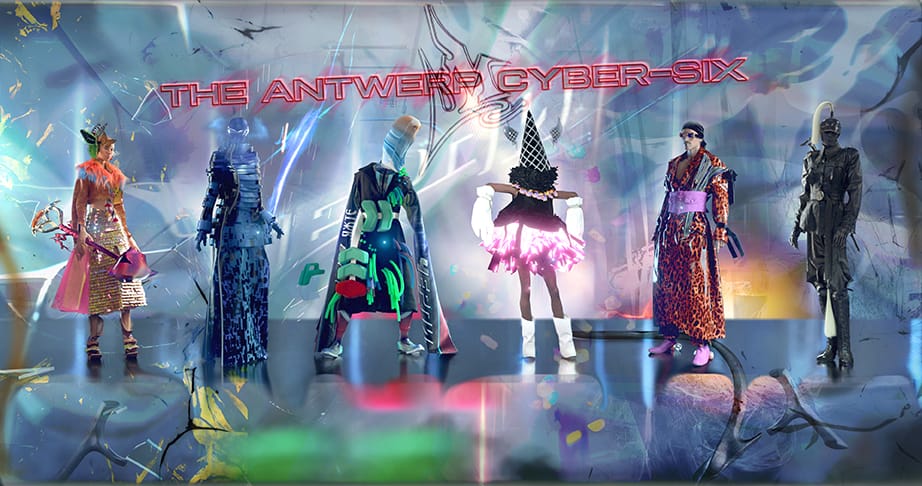
The archival “Warp Coat” has been published in its virtual form. The creation is realised as a part of the “Antwerp Cyber Six” project by Mutani and sold as NFT.


De Warande celebrates 50 years of its existence with a daring exhibition concept: 25 artists that were exhibited during the history of De Warande could each invite one new artist to this show.
Pointing in both directions, past and future.Anita Evenepoel has invited Flora Miranda for this occasion. Anita Evenepoel is a textile artist, exploring the avant-garde of concepts and haptics in the world of fibres.
For the exhibition, Flora Miranda has created a site specific work from the series “Crincle Dresses” in collaboration with Esther Stocker.
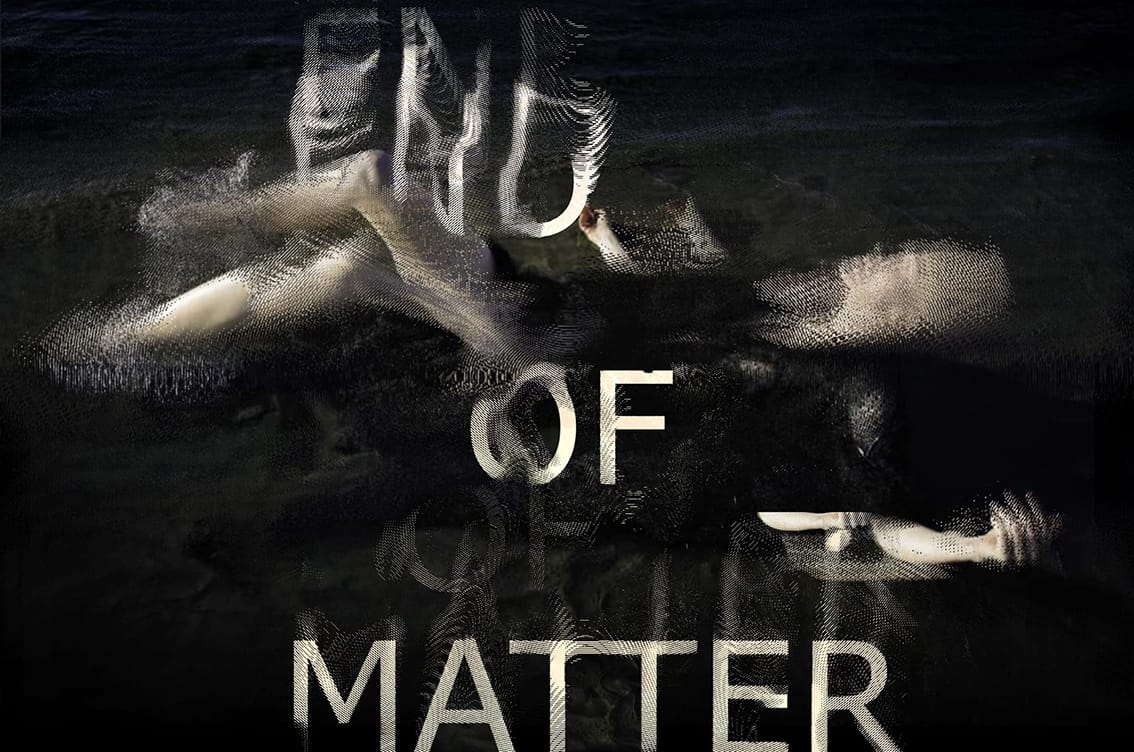
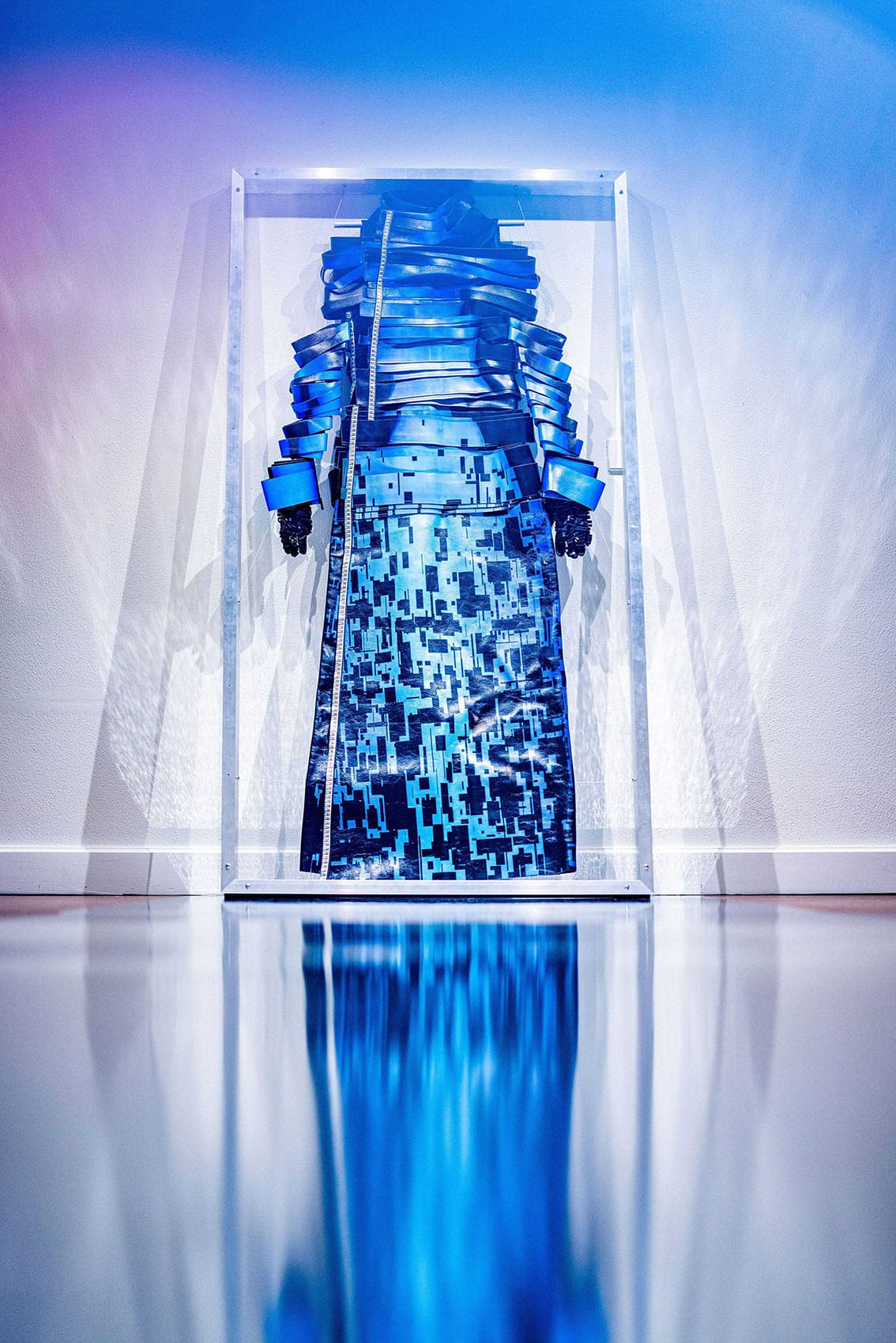
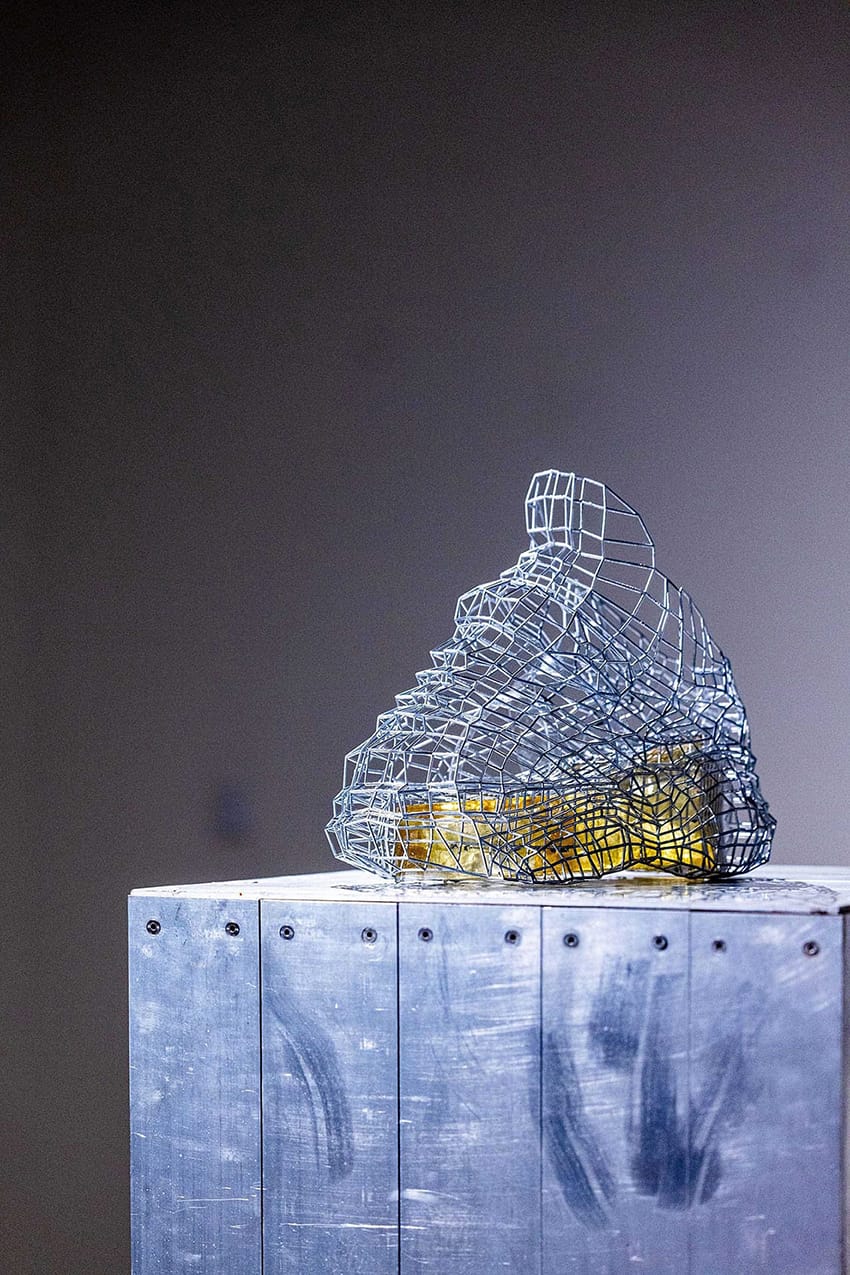
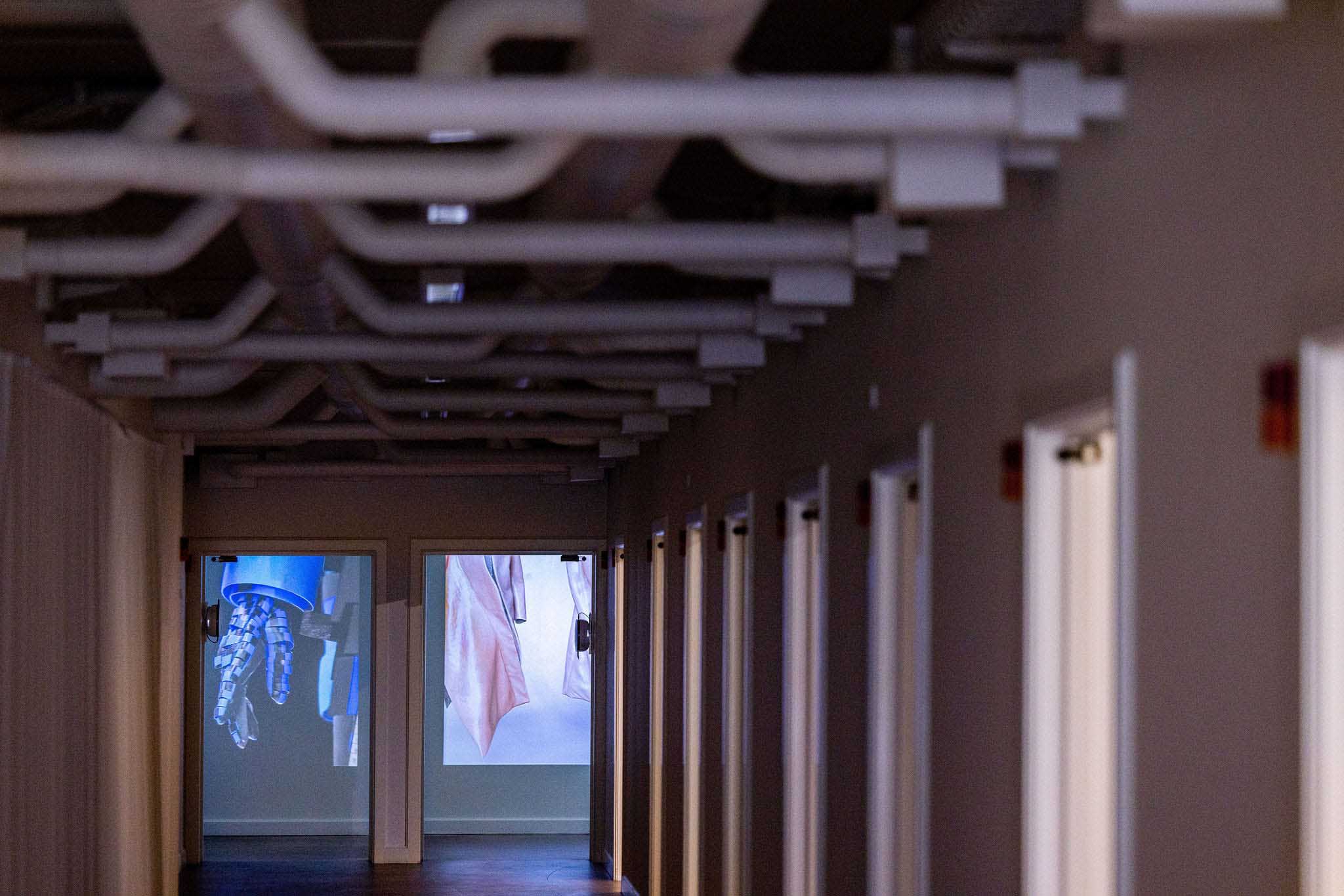
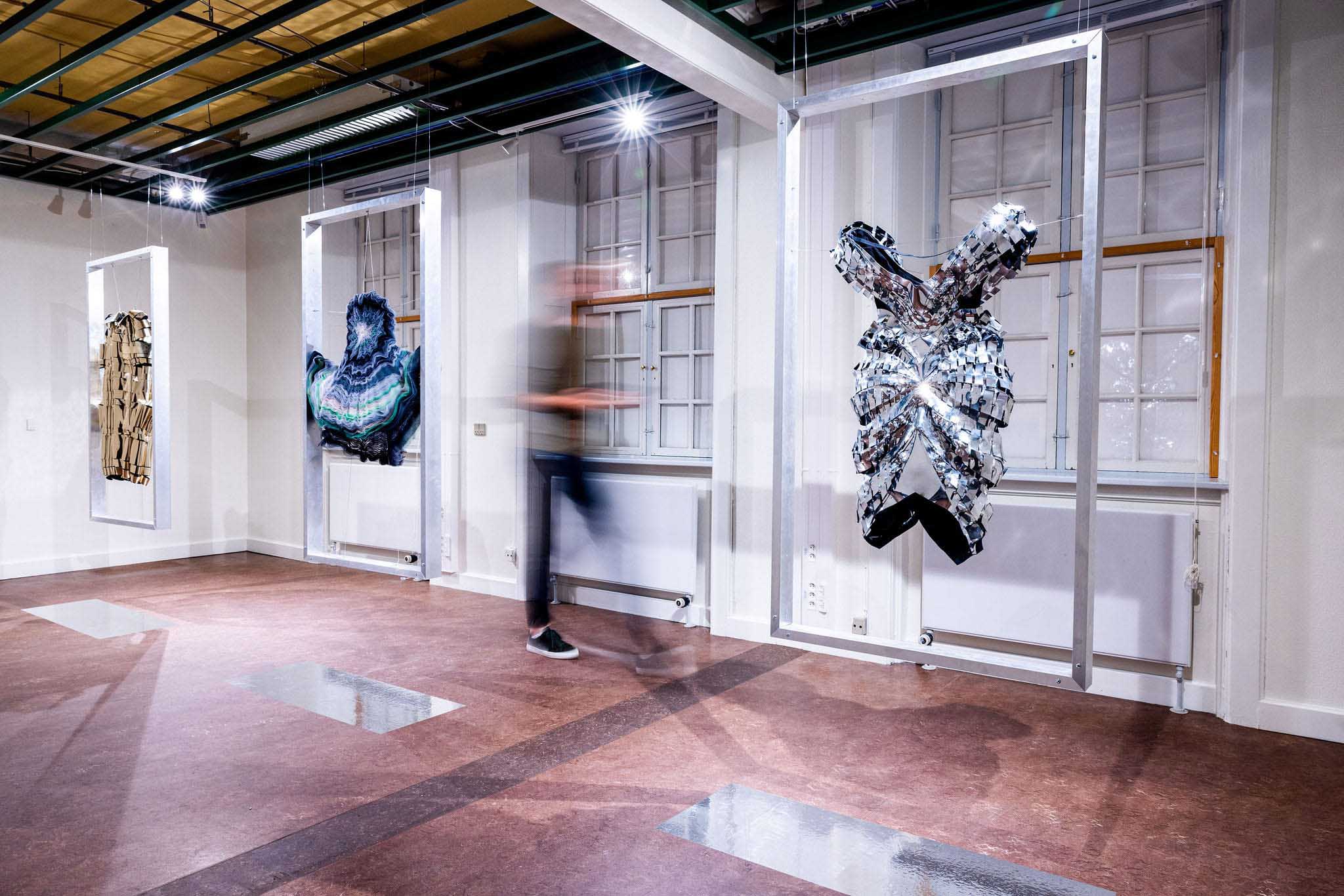
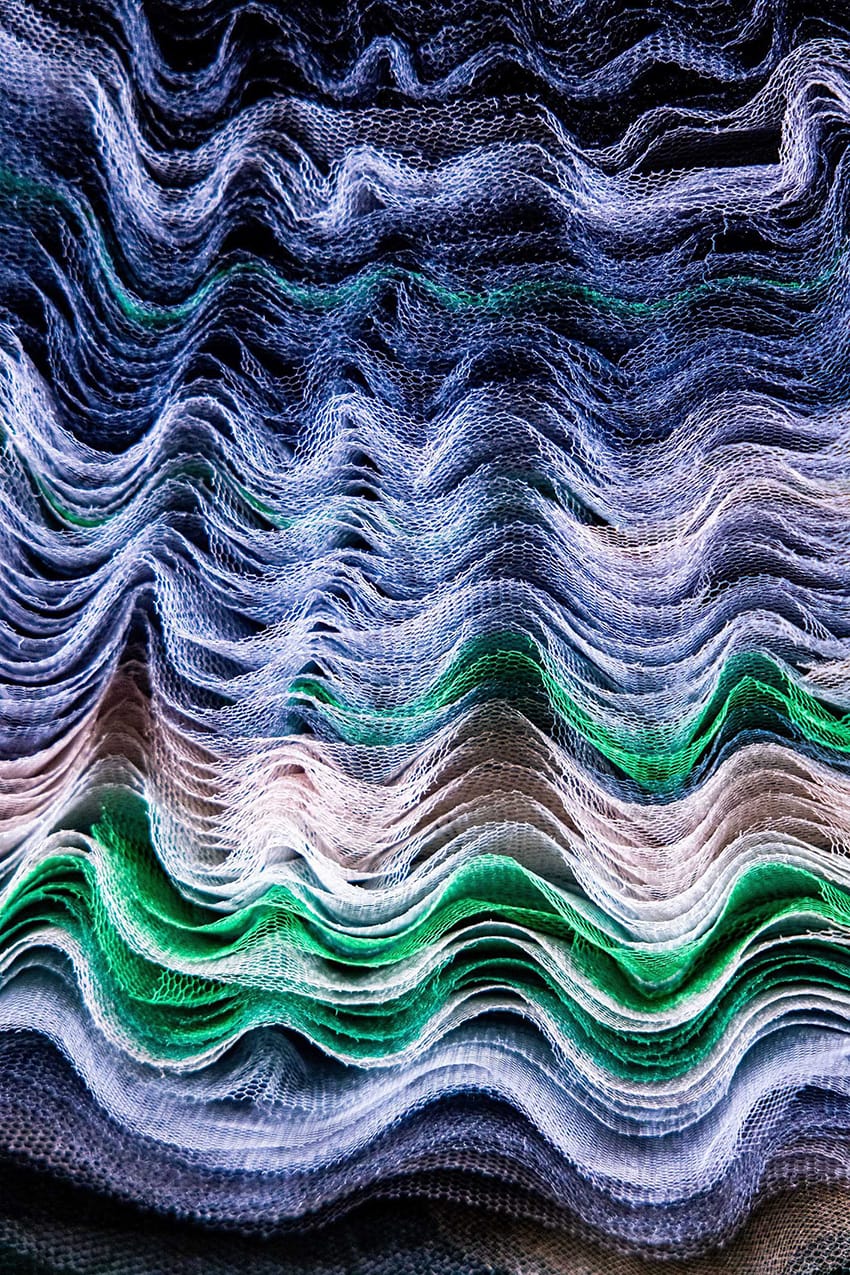
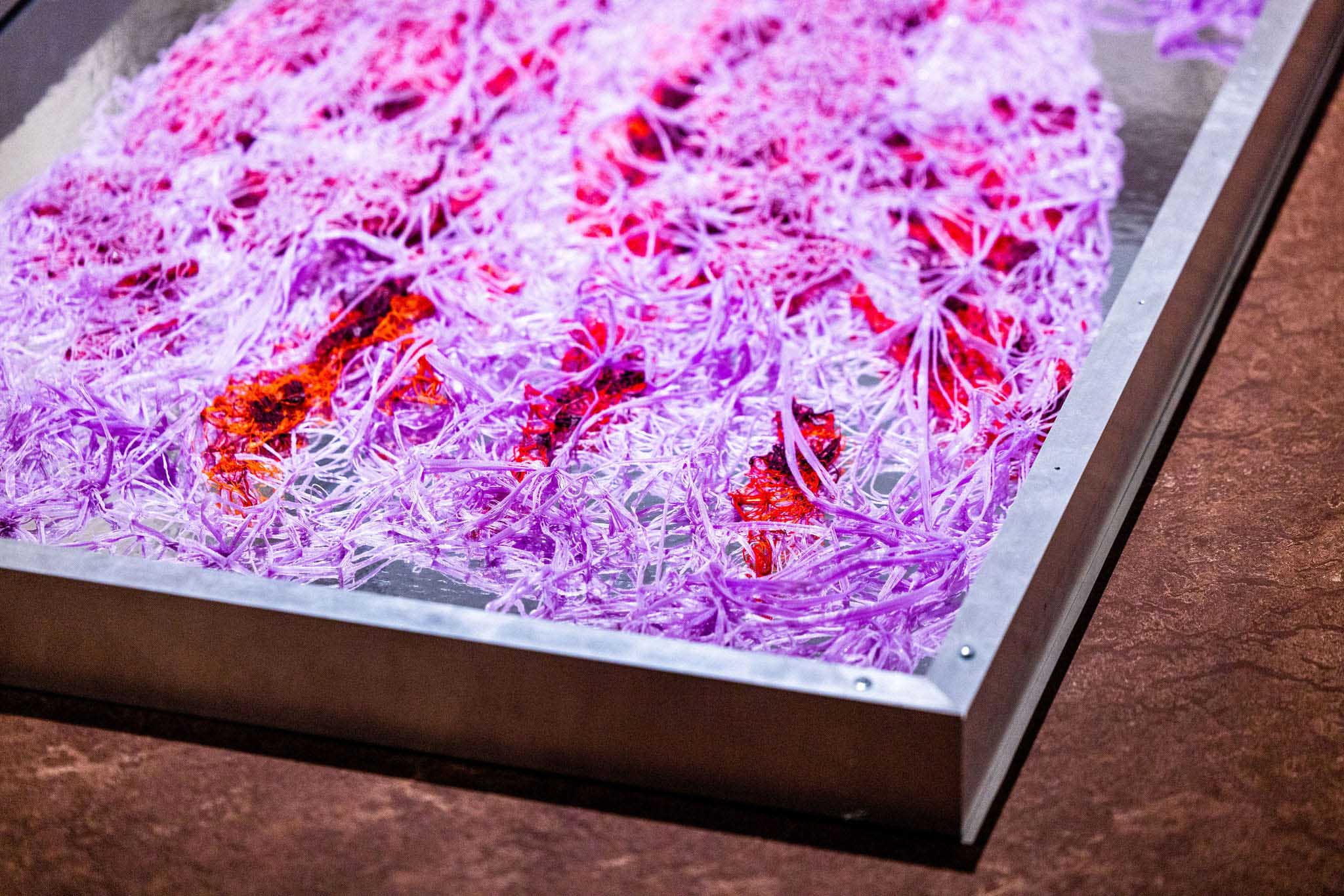
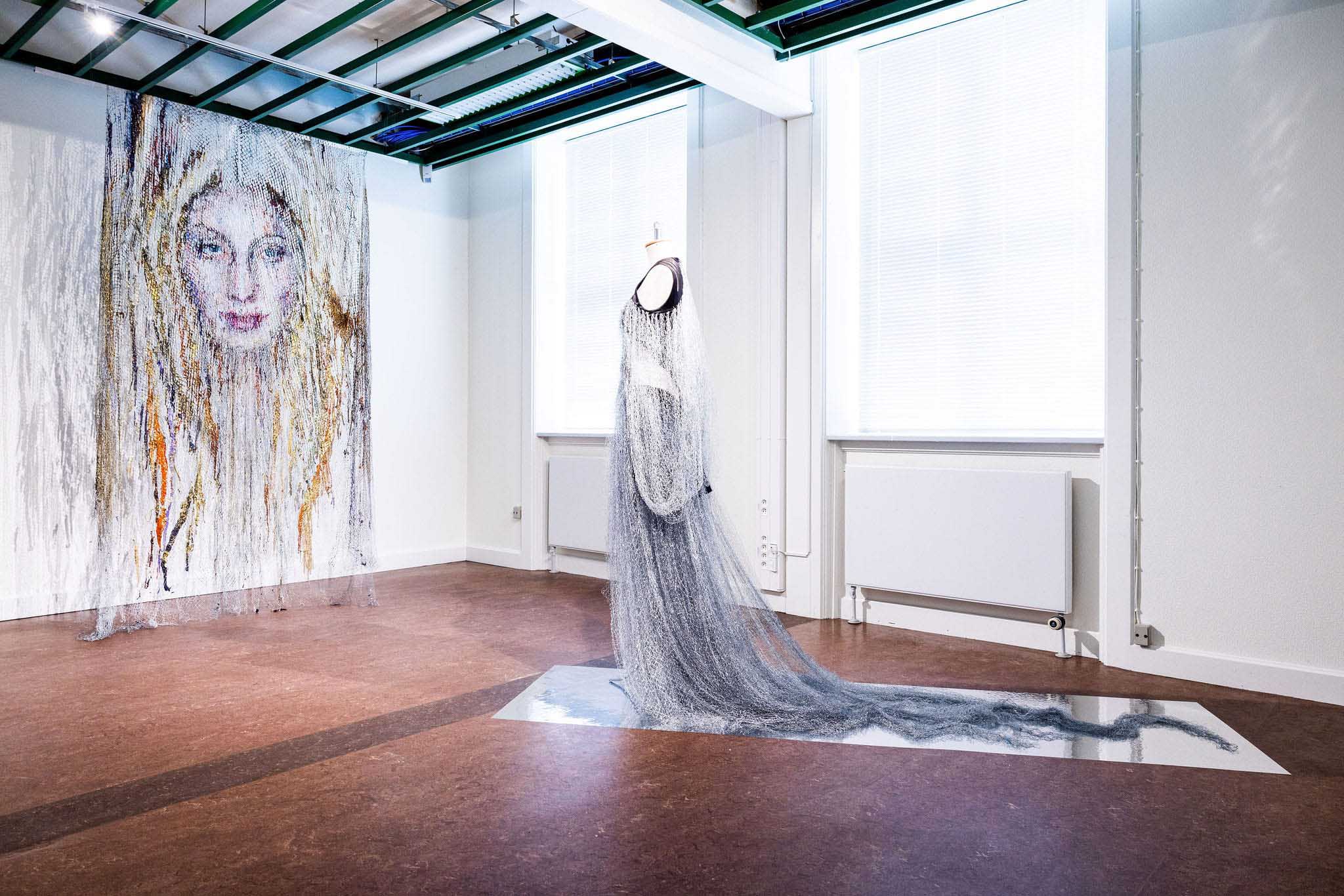
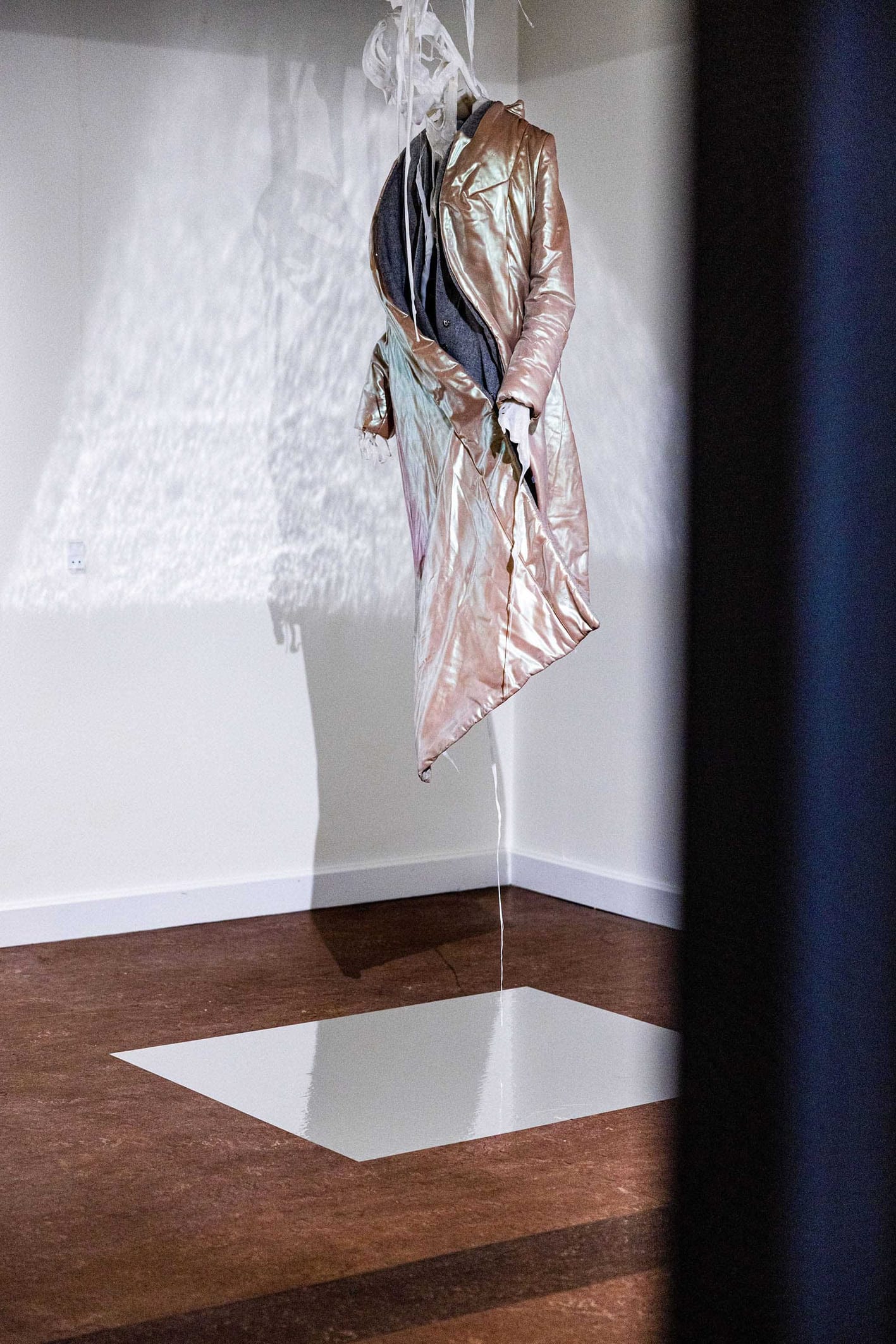
Solo exhibition by Flora Miranda at Augustenborg Project in Denmark.
The exhibition ‘End of Matter’ ventures into the vastness of cyber-verses, exploring the concepts of simulation and life. It sparks questions about different realities and the significance and existence of material and immaterial knowledge. The creations of Flora Miranda examine how the role of a fashion designer today morphs between the online- and physical world. Is the traditional knowledge of craft still relevant and what would happen if fashion designers only worked digitally? Will fashion speed up even further with automated design bots? In Flora Miranda’s work, the hybrid knowledge of both worlds has been relevant since the beginning.
Augustenborg_Project is an innovative art, food and creator’s space nestled between the historical sites of Augustenborg Castle and Augustiana Kunsthal in a former mental health hospital.
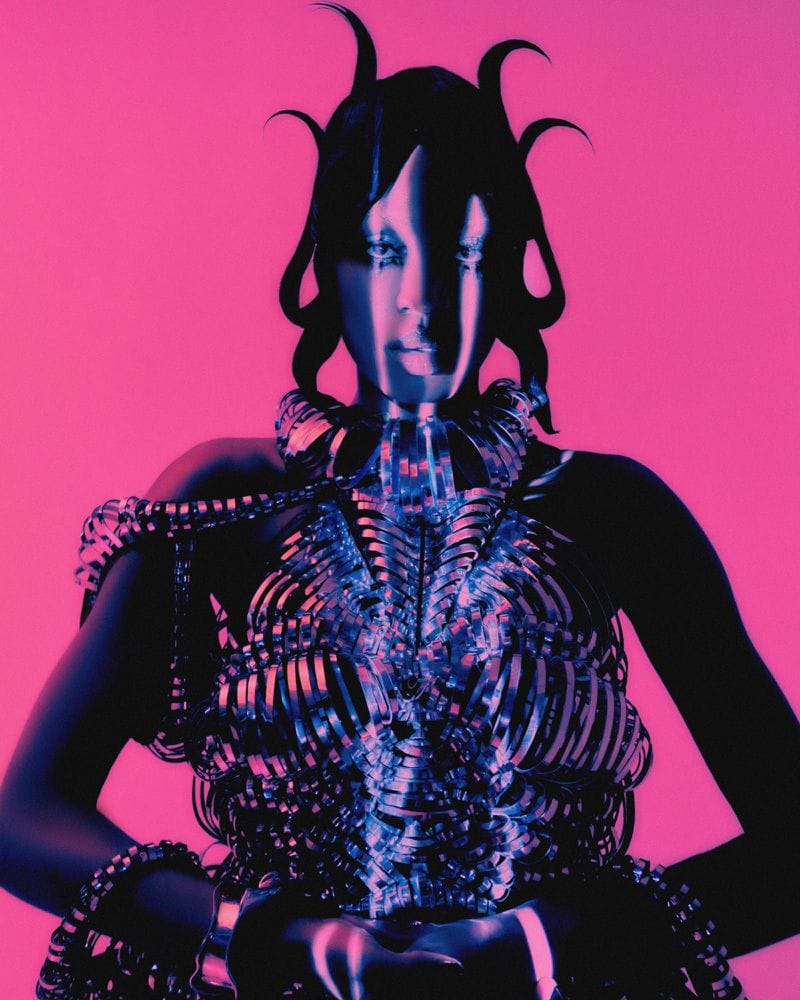
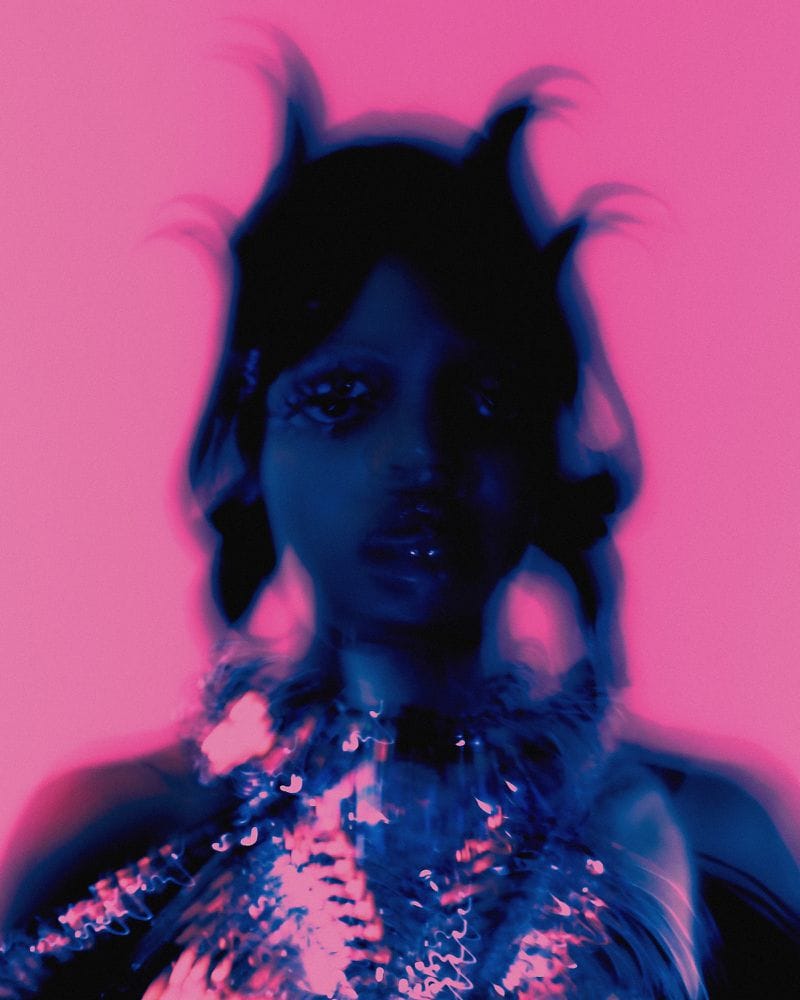
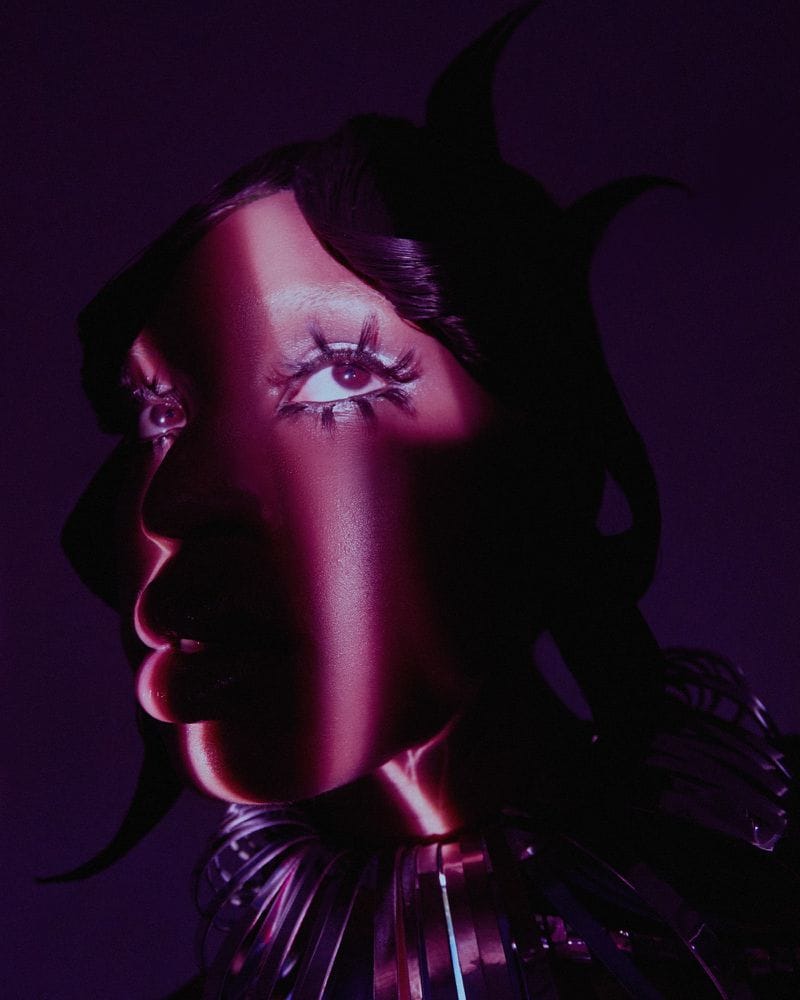
Editorial BELEZA in Vogue Portugal with the Flora Miranda “Polarisation Dress”. Photographed by Bohdan Bohdanov, styled by Pablo Patane.
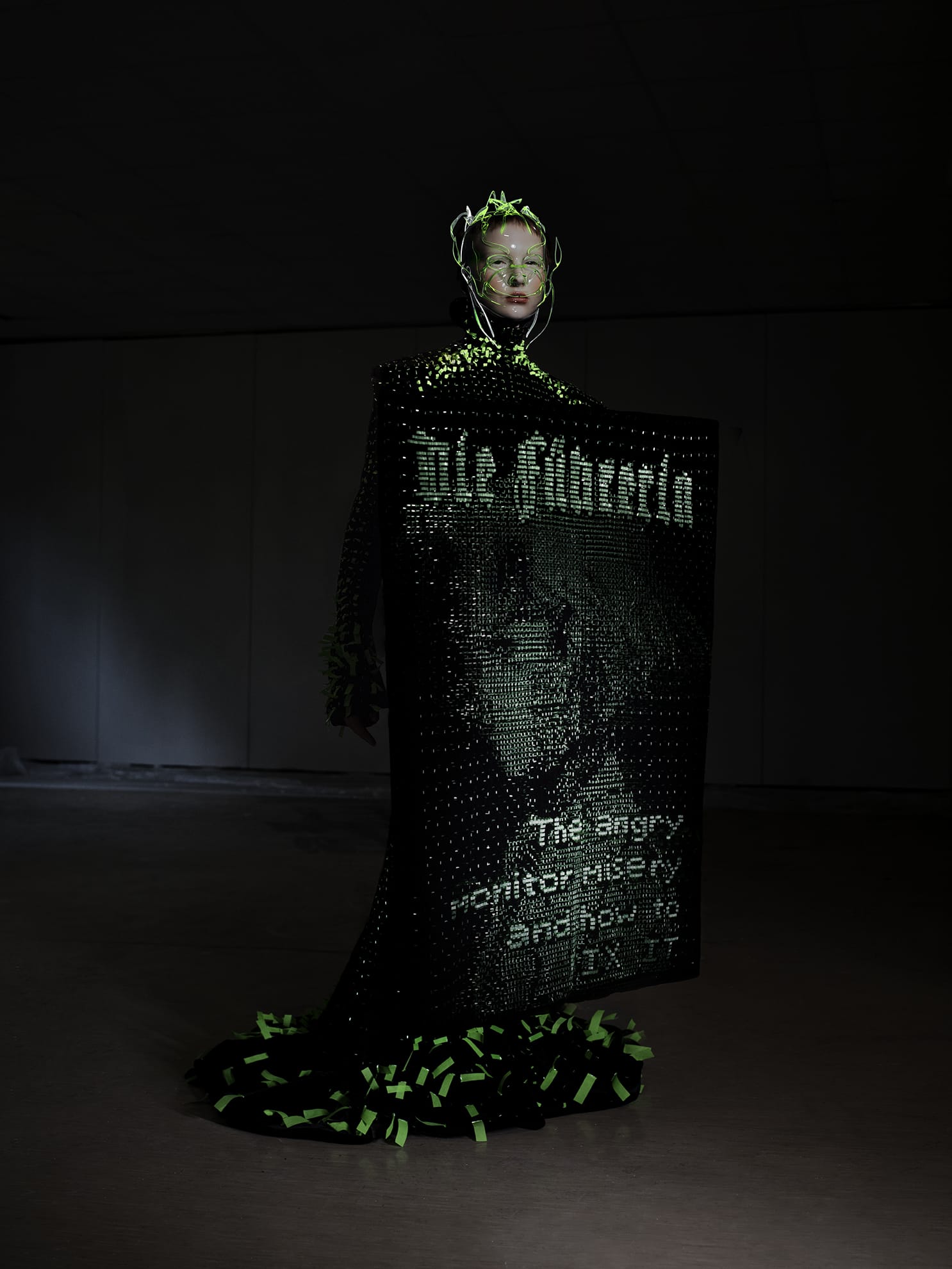
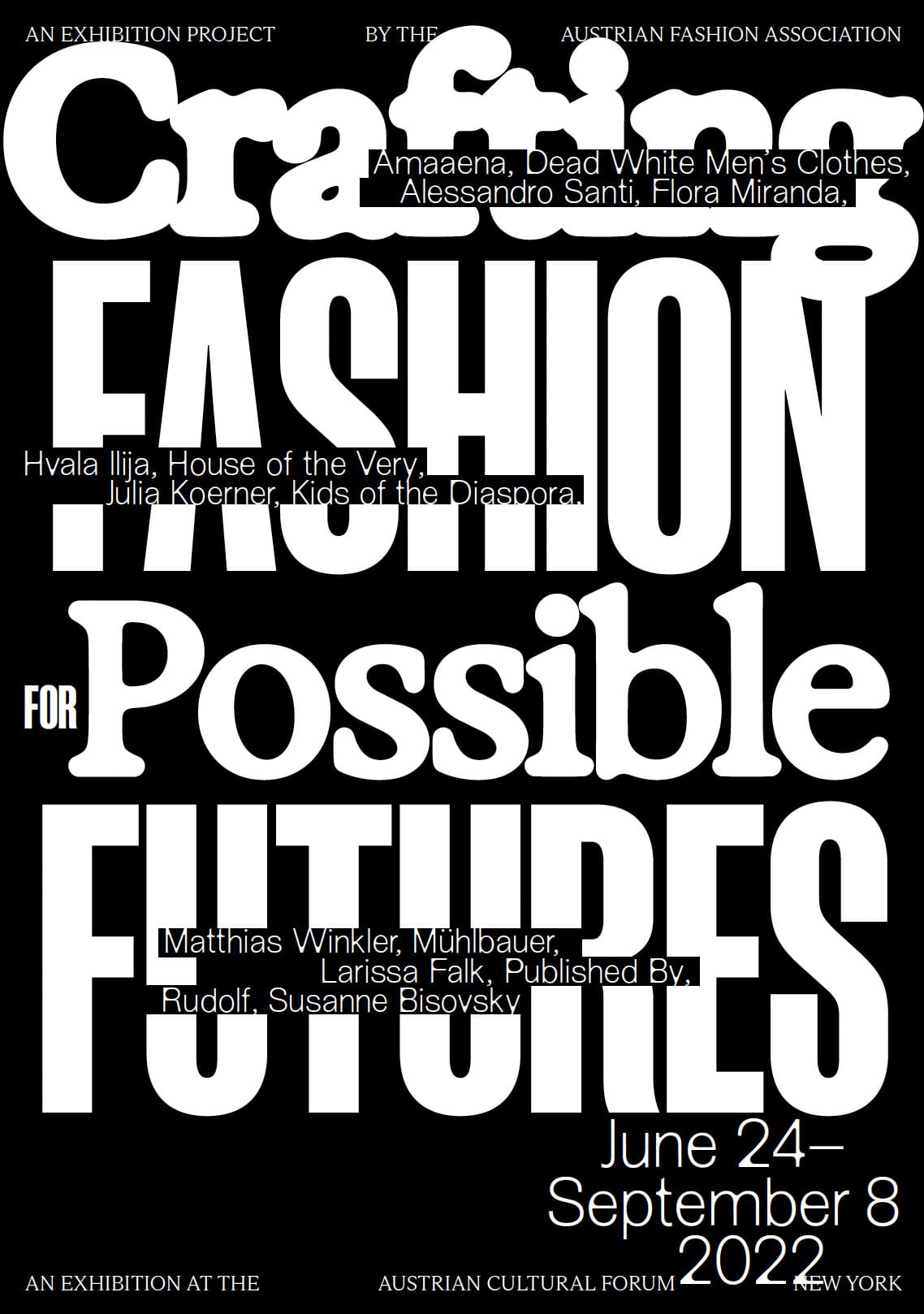
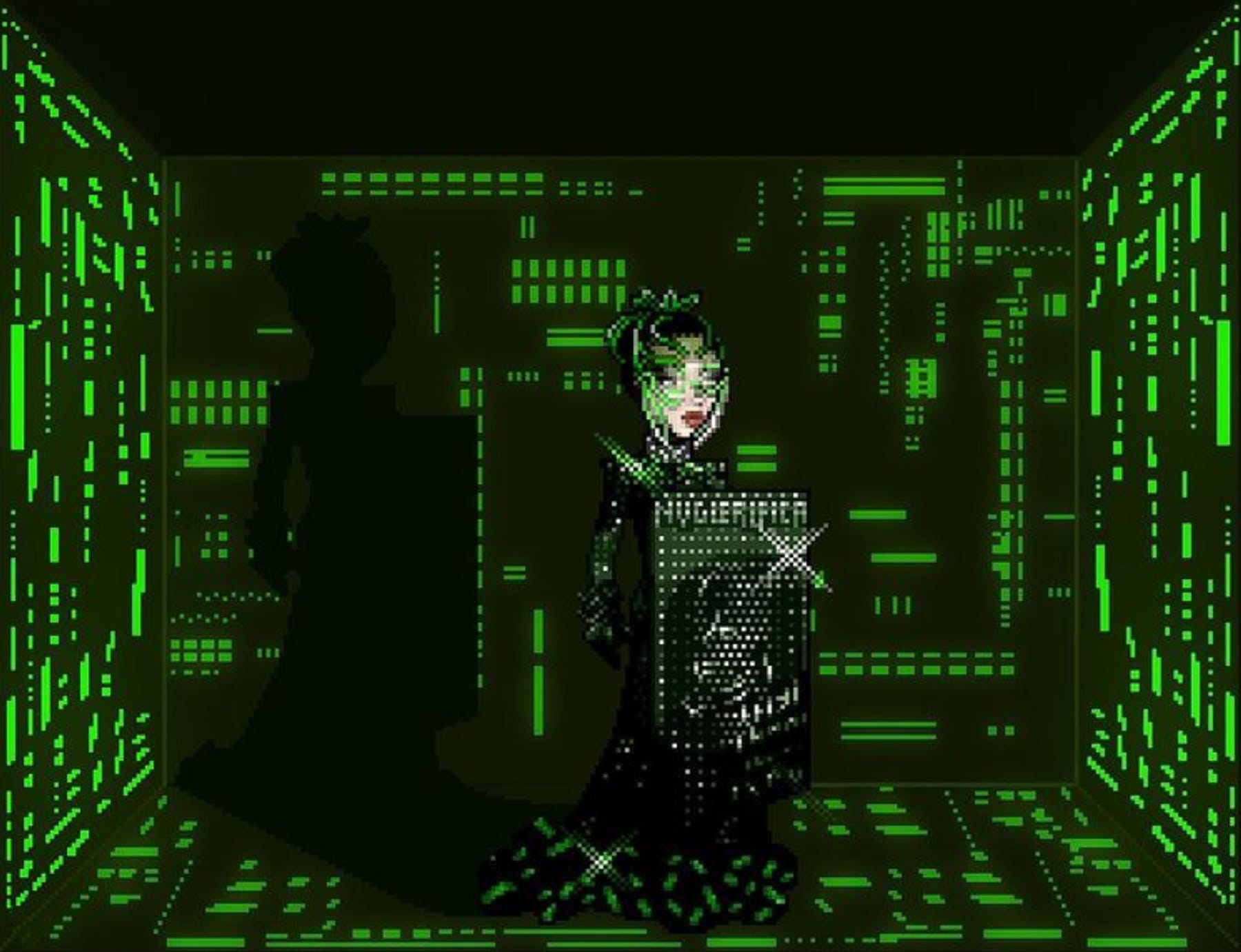
Flora Miranda exhibits the ‘Time To Tech Up’ dress at Austrian Cultural Forum New York, in the group exhibition ‘Crafting Fashion Possible Futures’.
Design holds the potential for change and possible, better futures. In a time of chronic political, environmental, health, and social struggles with a lingering fear of an imminent crisis, an intrinsic question arises: What can design really do, right now?
With the exhibition “Crafting Fashion for Possible Futures”, curated by Camille Boyer and Miriam Kathrein for the Austrian Fashion Association, the Austrian Cultural Forum New York presents for the first time a comprehensive overview of contemporary Austrian fashion design.
The exhibition focuses on the working methods of professional fashion design practitioners, concerned with their responsibility in the socio-political, sociocultural, and socio-economical realm. Their fashion design practice explores and investigates fields of identity politics, activism, sustainability, or the interdependency of traditional production processes and new technology.
“Craft offers not only a way of making but also a way of thinking – one that is
collaborative, inclusive and responsive to our changing natural environment.” environmental design writer Katie Treggiden states.
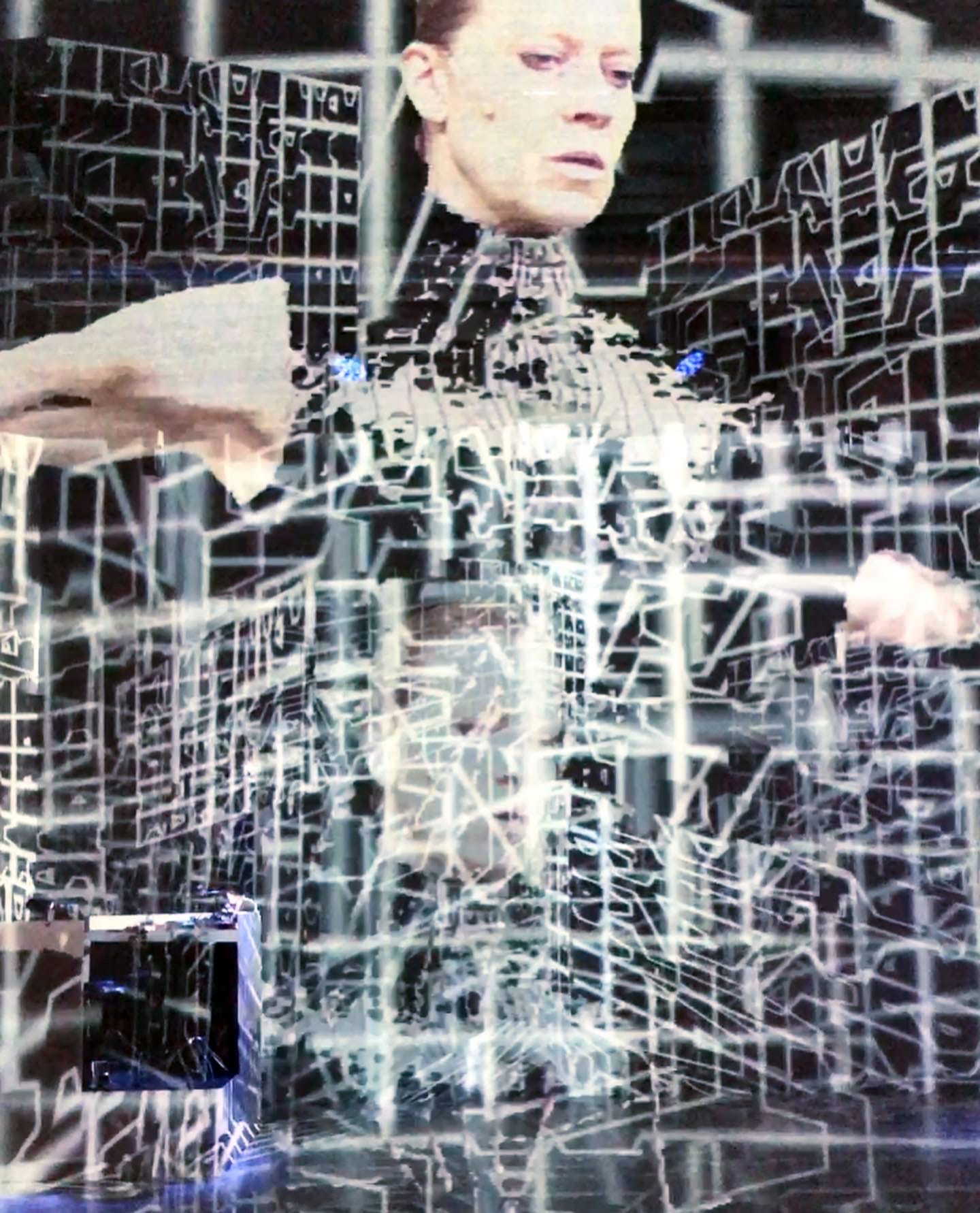
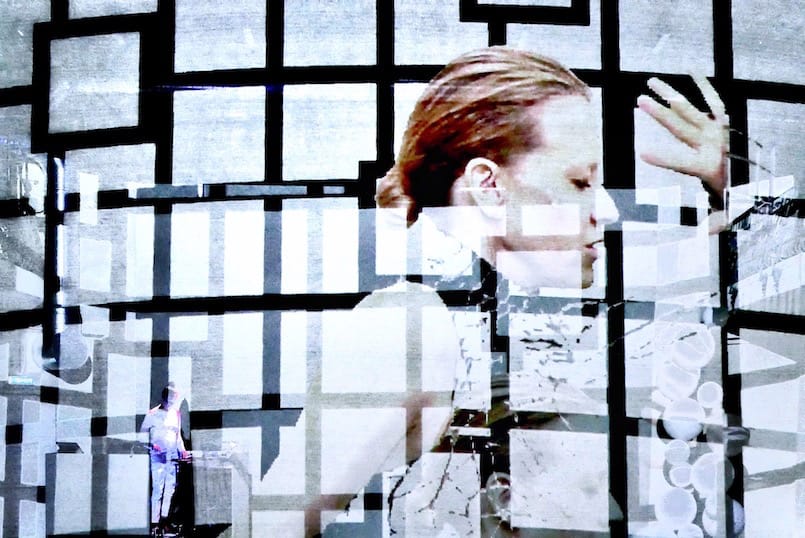
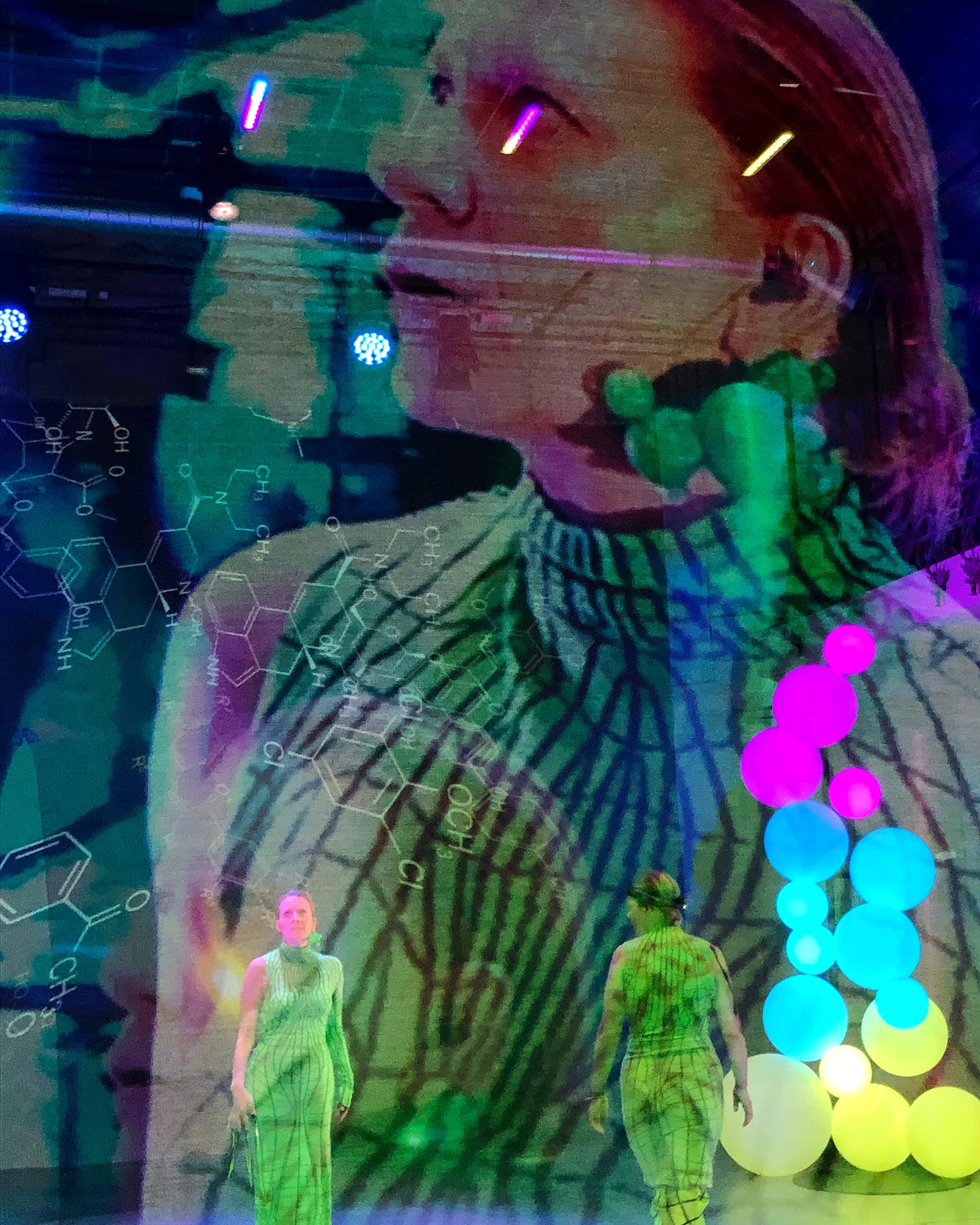
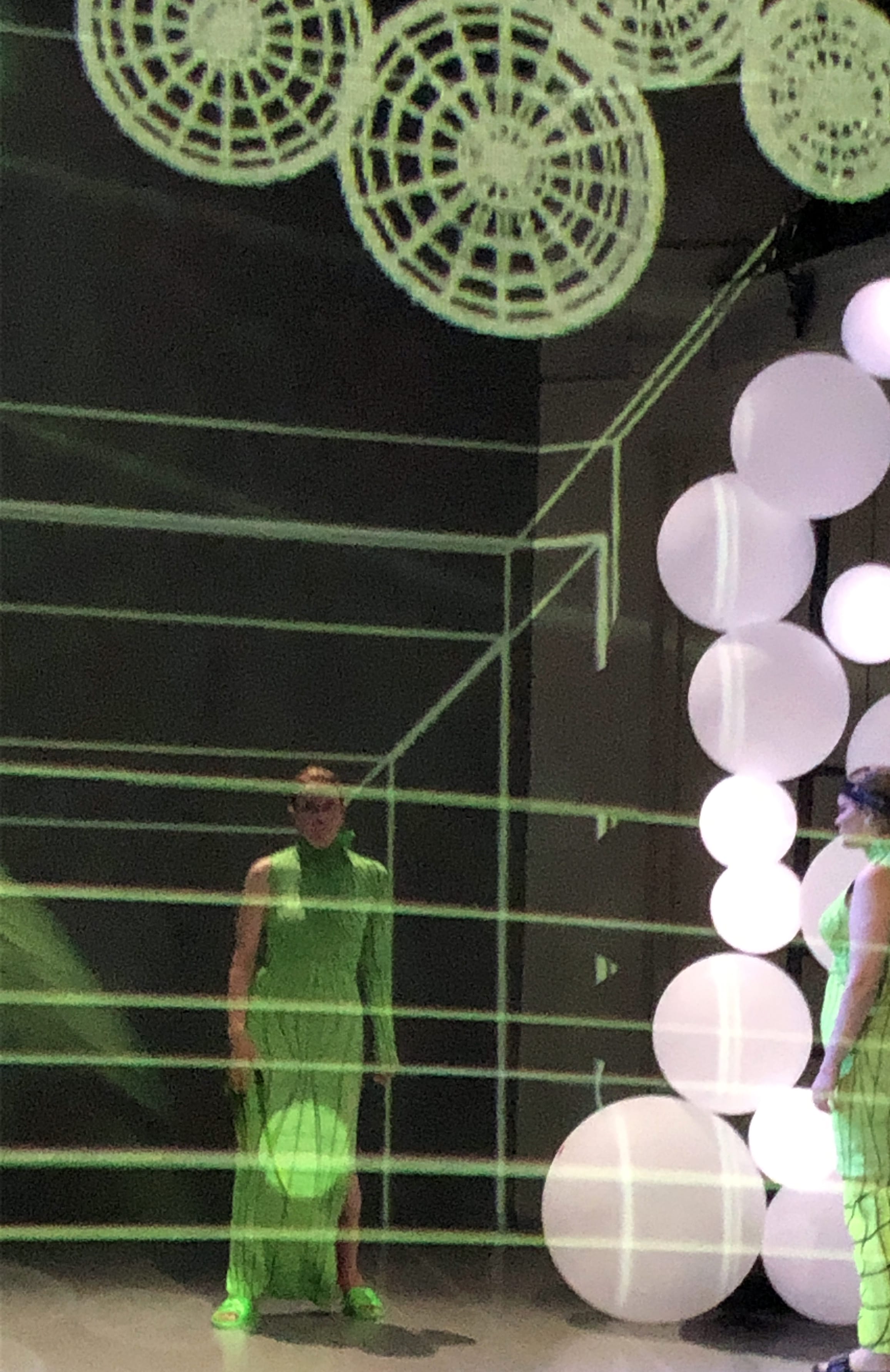
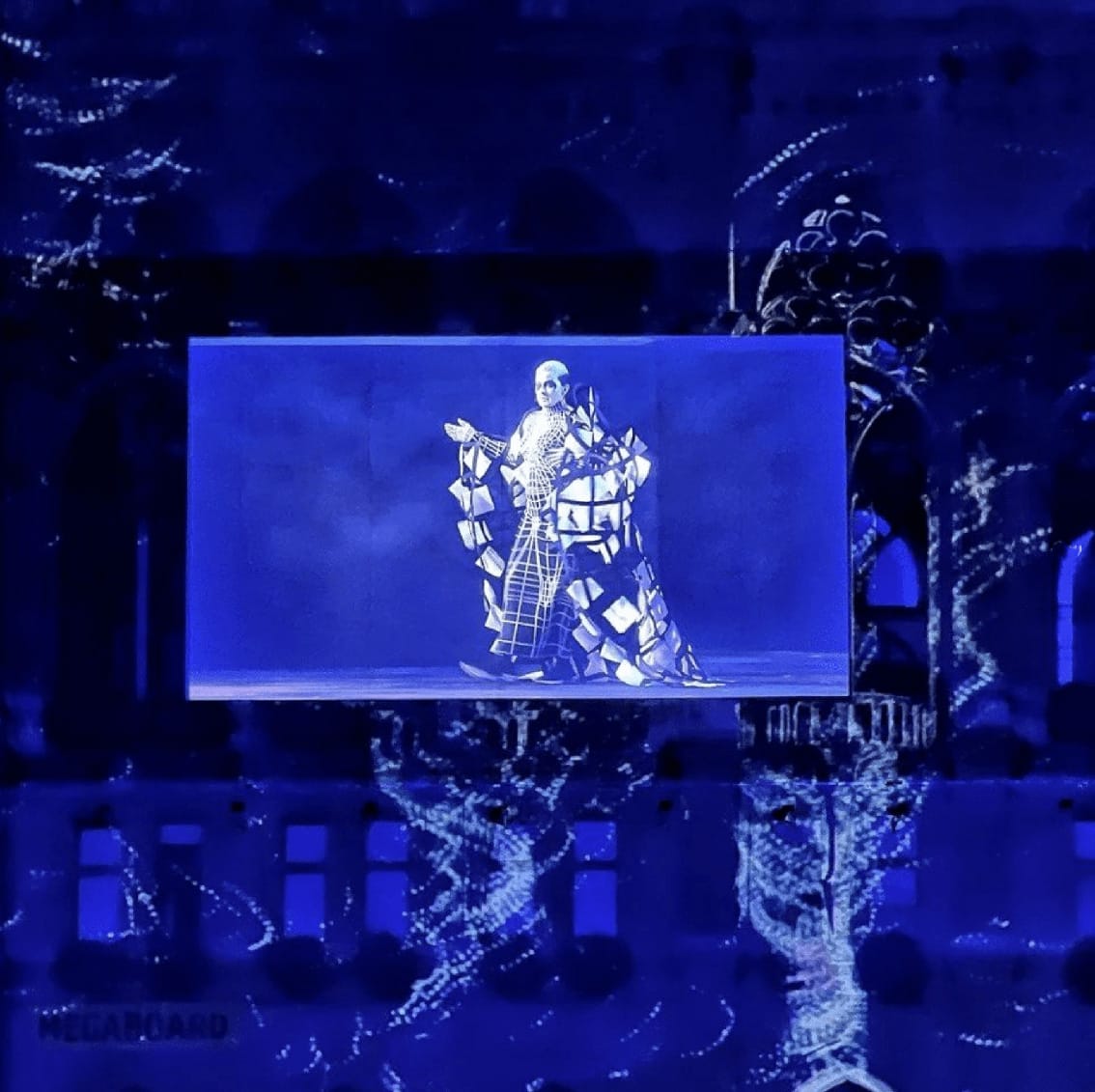
Flora Miranda designs the costume for the piece ‘Die Maschine Steht Nicht Still’ by Caroline Peters and LEDWALD at Wiener Festwochen.
Drawing on the 1909 sci-fi short story The Machine Stops by E. M. Forster, Burgtheater actor Caroline Peters brings together a group of media artists under the name Ledwald to elaborate a dystopian non-solo for an actor & the machine. Here Peters, a presence par excellence on both stage and screen, is breaking new ground. Up on stage, a deeply emotional dialogue with the video image emerges, an exaggeration of the lockdown situation. Yet the fact of cohabiting with Artificial Intelligence, with a ‘needs-satisfaction machine’, has ceased to be just that: satisfying. The many possibilities afforded by the virtual space clearly stake out the real isolation and physical distance. Rampant is now the longing for closeness and touch, for communication that is not based on an intermediate projection. An evening by and with a great female actor that explores the contrasts between humankind and machine, nature and technology. And one that makes the symbiotic entanglement of opposites palpable. Where? At the theatre of course.
Concept Caroline Peters, Ledwald Text, performance Caroline Peters based on themes from E. M. Forster, The Machine Stops video and live camera Andrea Gabriel, visuals Eric Dunlap, sound design and lighting Lars Deutrich, costume Flora Miranda, assistance Lea Witeschnik.
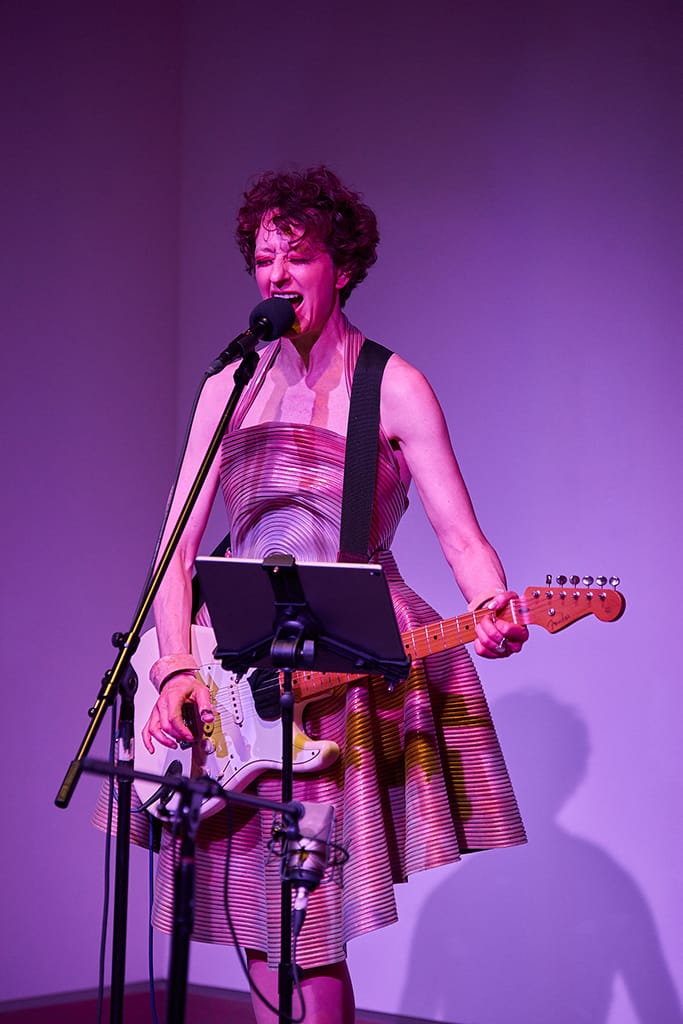
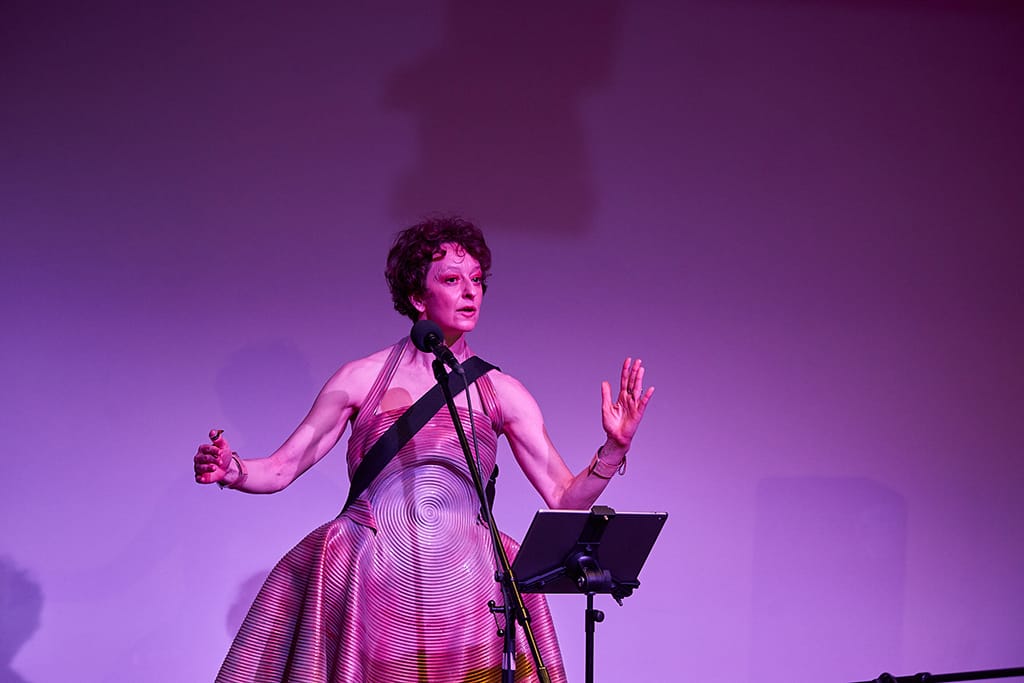
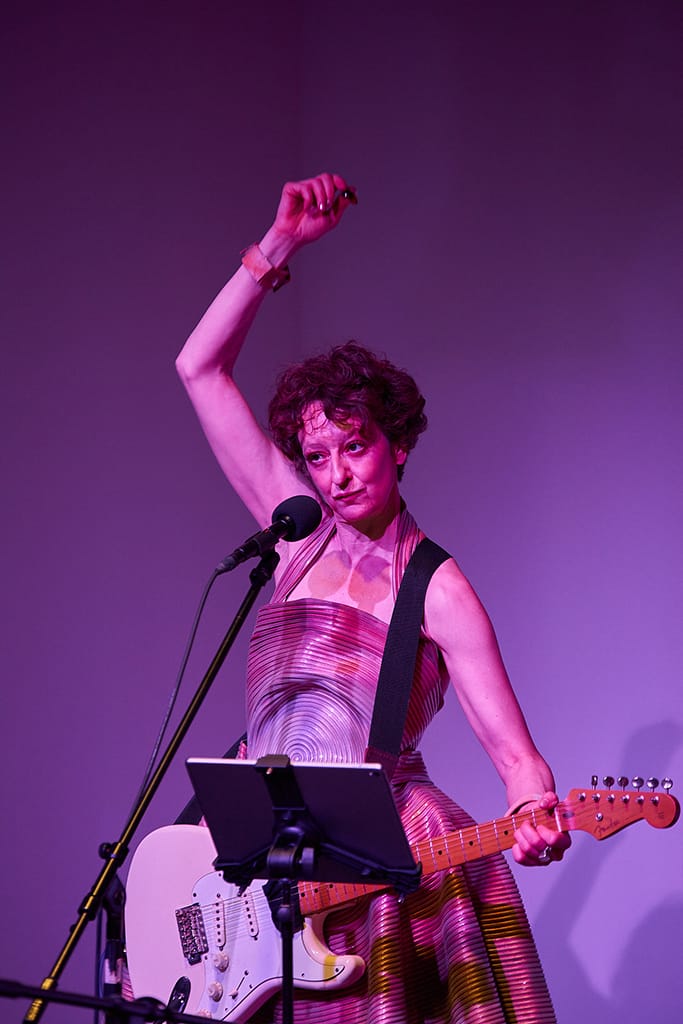
Musician and performer Gina Matiello wears the Flora Miranda ‘Radiation’ dress during the evening ‘Automatic Speech’ at Künstlerhaus in Vienna.
While Alexander Schubert’s Your Fox’s A Dirty Gold focuses attention on the aspect of staging and presentation and lets the performer strike iconographic poses of rebellion, Andrej Koroliov’s piece Resist Mix picks up elements of metal music and lets the machinist become the vocal performer himself, yelling at “the institutions” in agitprop fashion. Institutional criticism can also be heard in Peter Kutin’s and Florian Kindlinger’s short film GEN - XIIIX.
Against the backdrop of the myth of the Tower of Babel, Theodor W. Adorno’s voice, brought to life using AI, speaks about museums as resting places of nostalgia and addresses the myth of the machine including manifestations of human hubris. In Digital, FranckBedrossian questions the concept of style and its formal possibilities. In the “Rock” finale, double bass and drums reveal their identity as a “rhythm section” lost in a world of excess.
A selection of Georges Aperghis’ recitations, which have meanwhile become classics, show machine-like, monologizing speech in its most direct form. In kaleidoscopic memories, Beat Furrer lets us participate in the conversation between a double bass and its shadow. His “machines” speak from the un(sub)conscious, and one usually encounters them in search of a language.
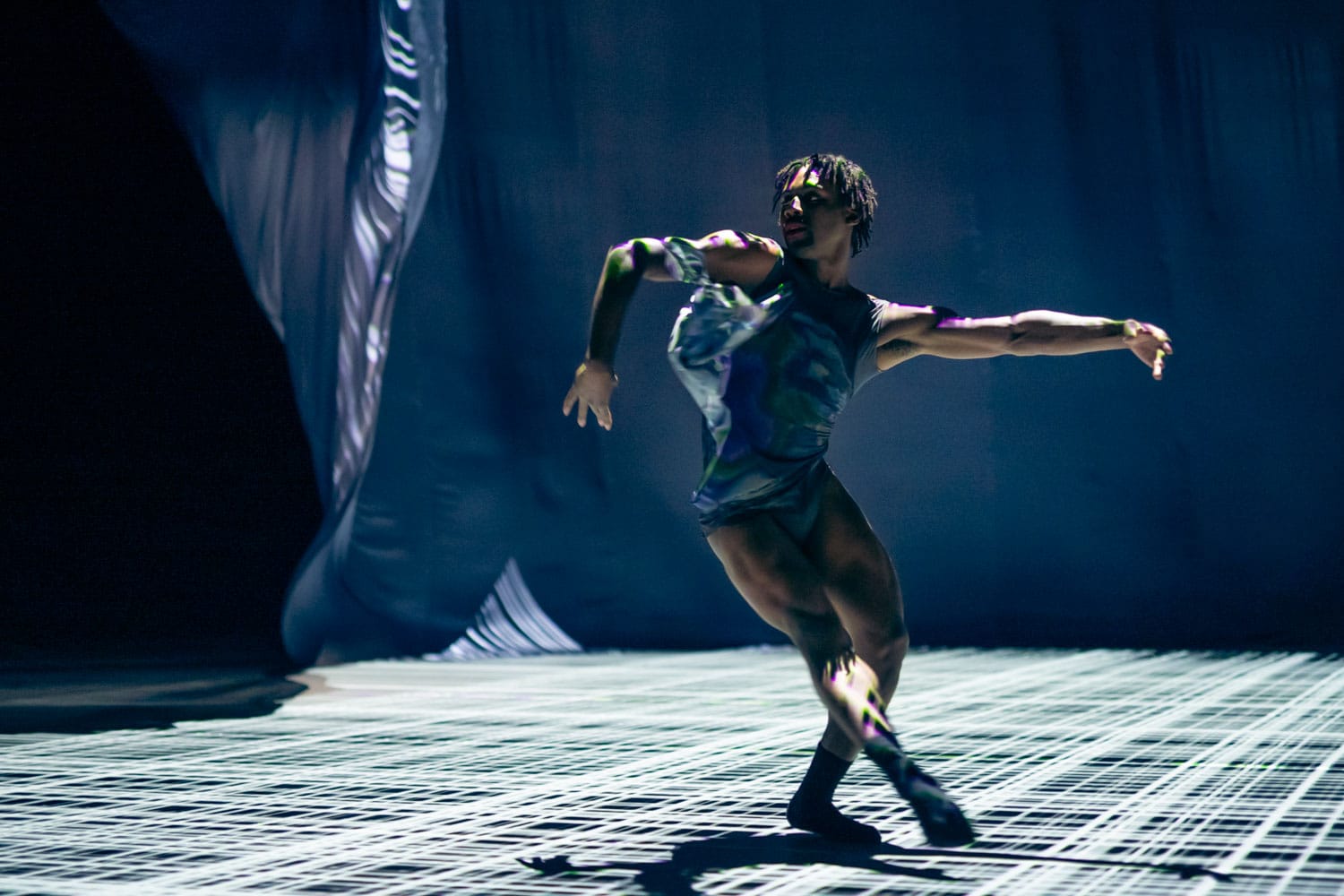
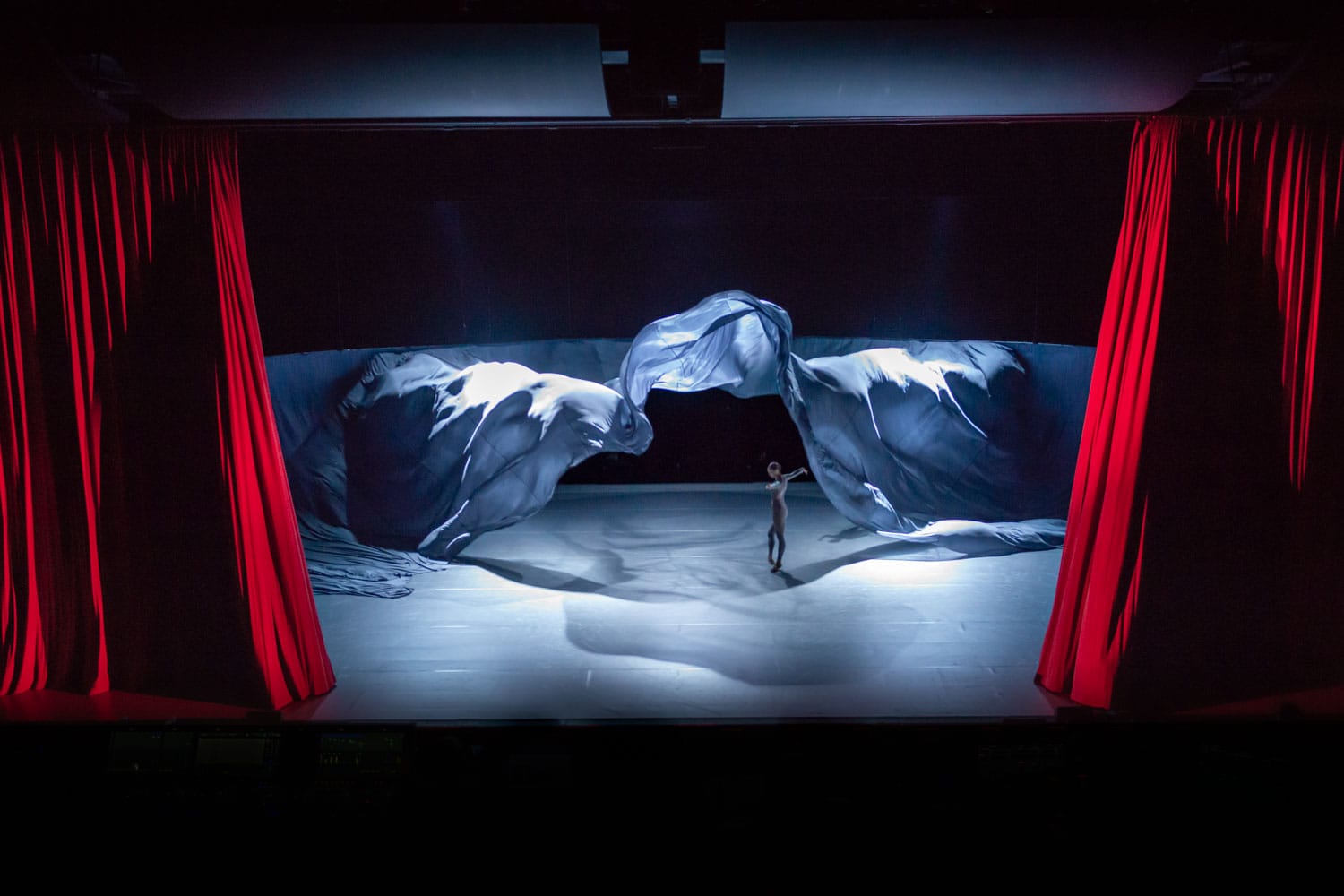
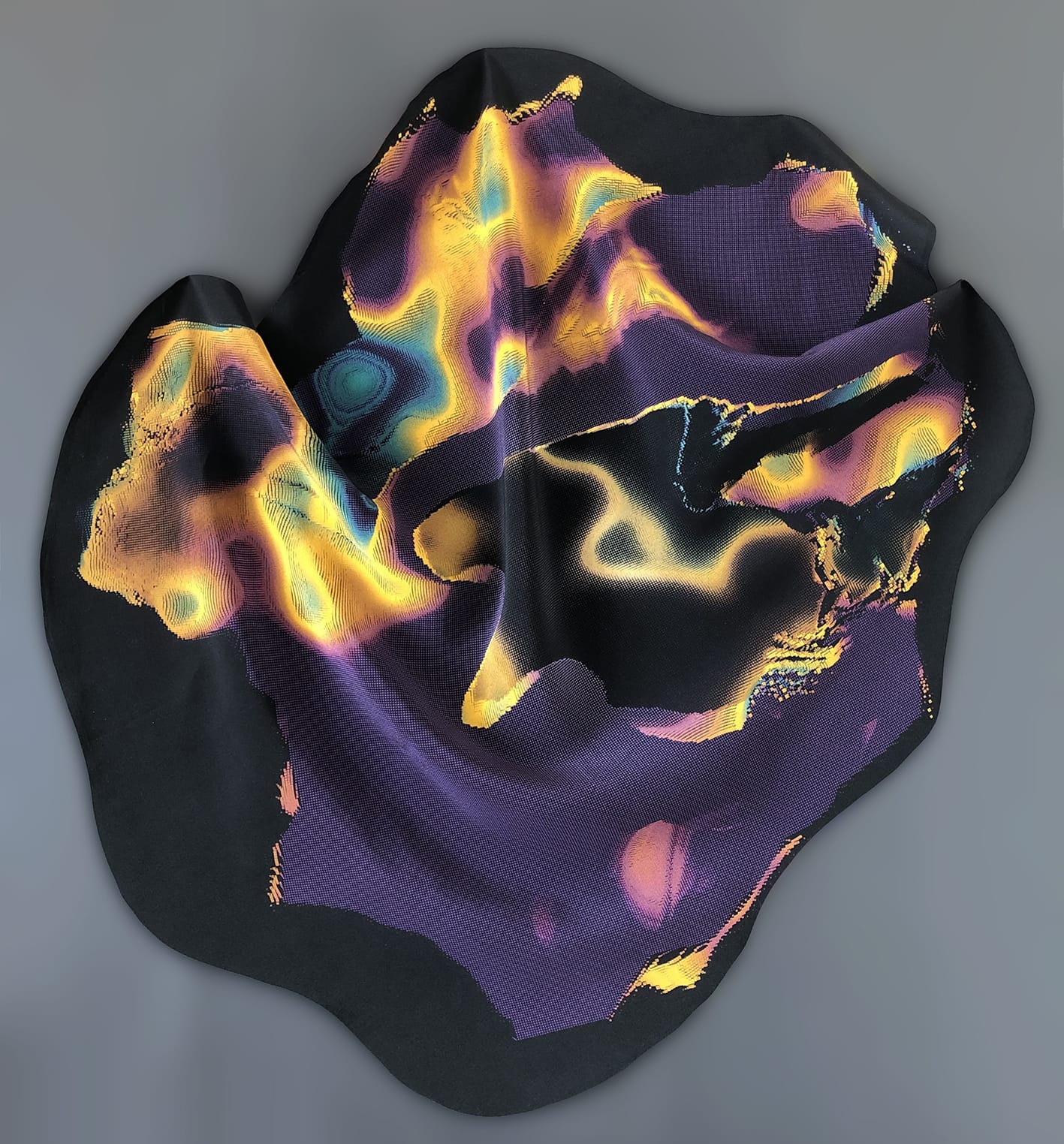
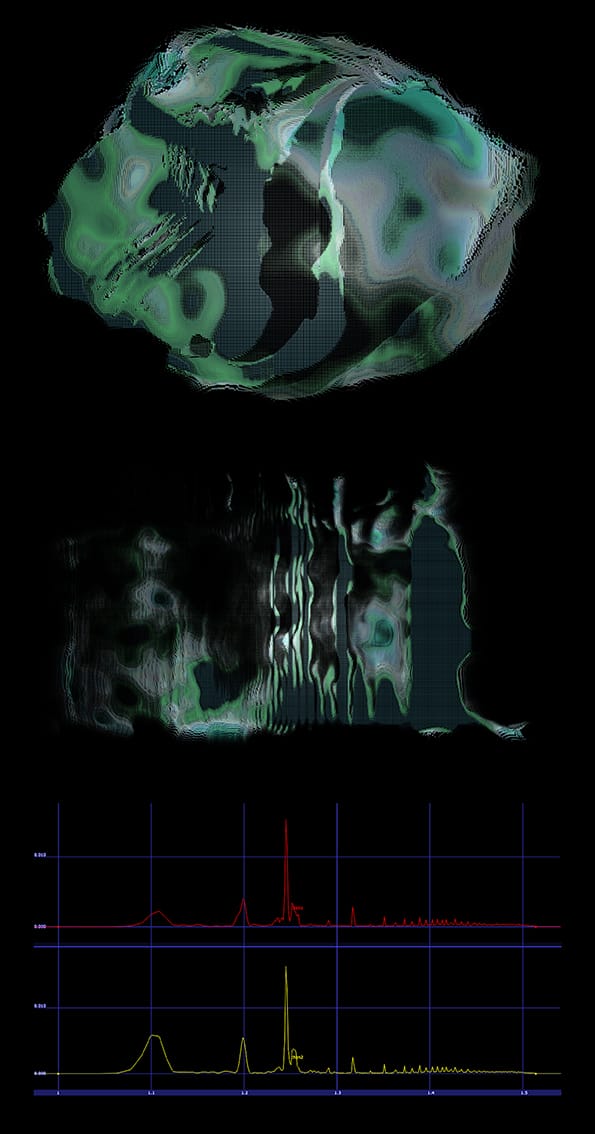
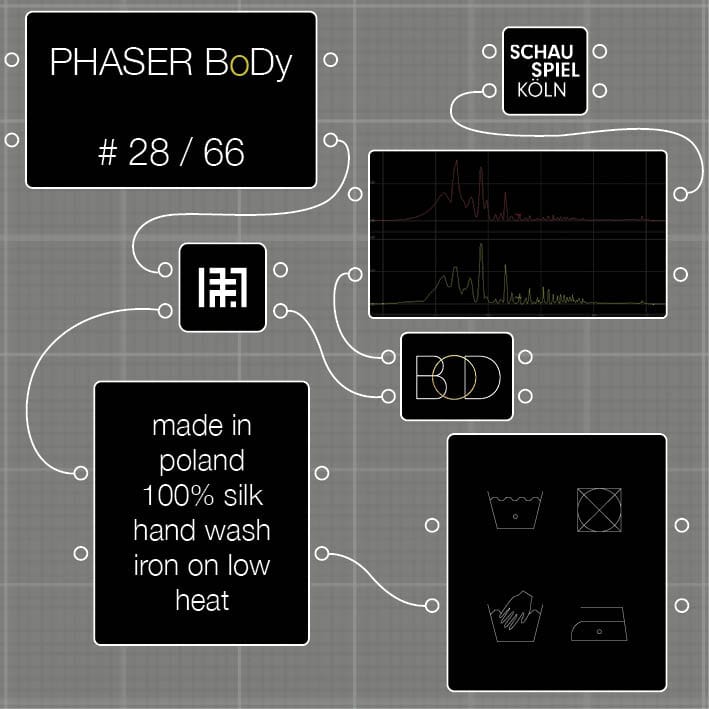
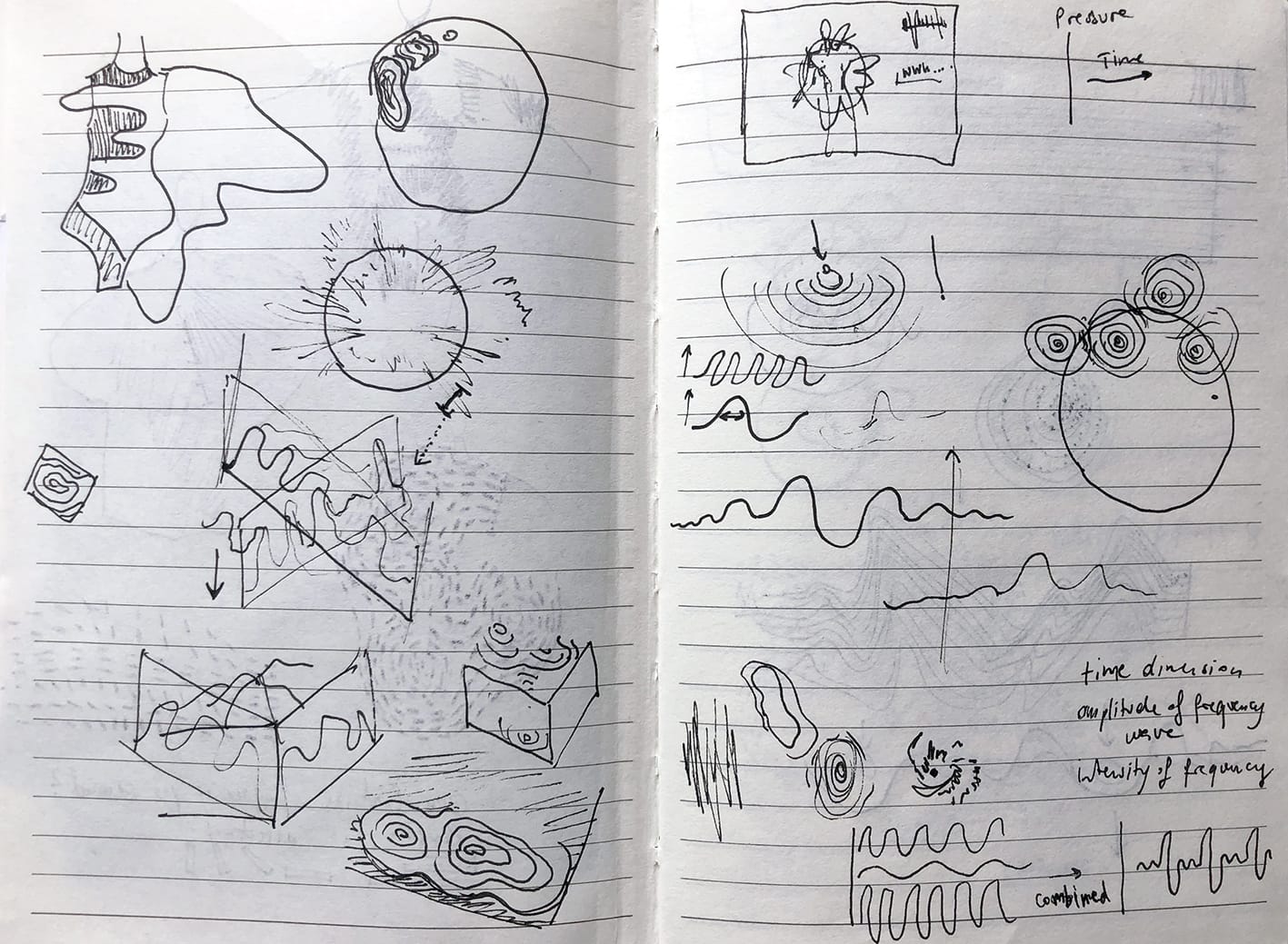
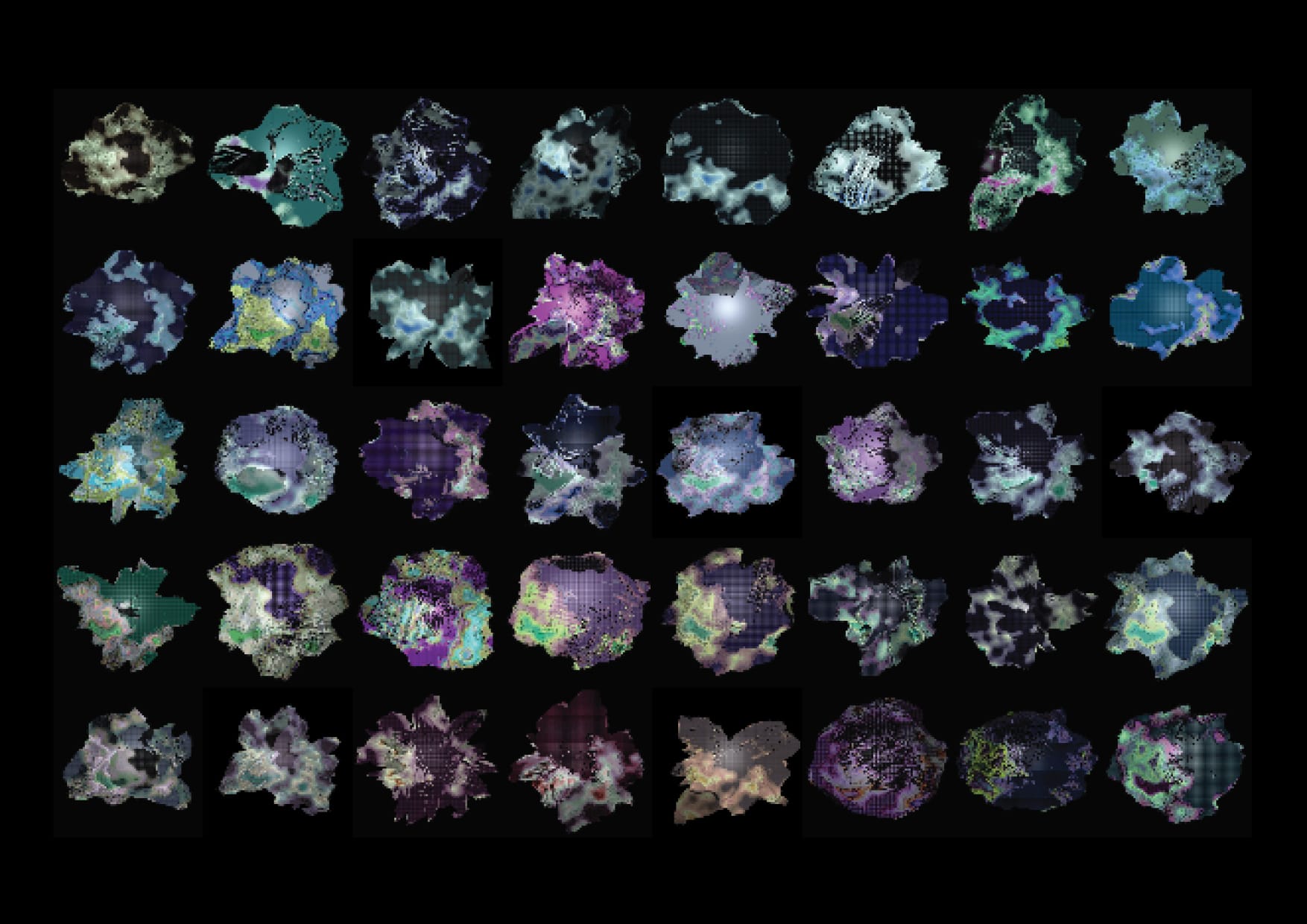
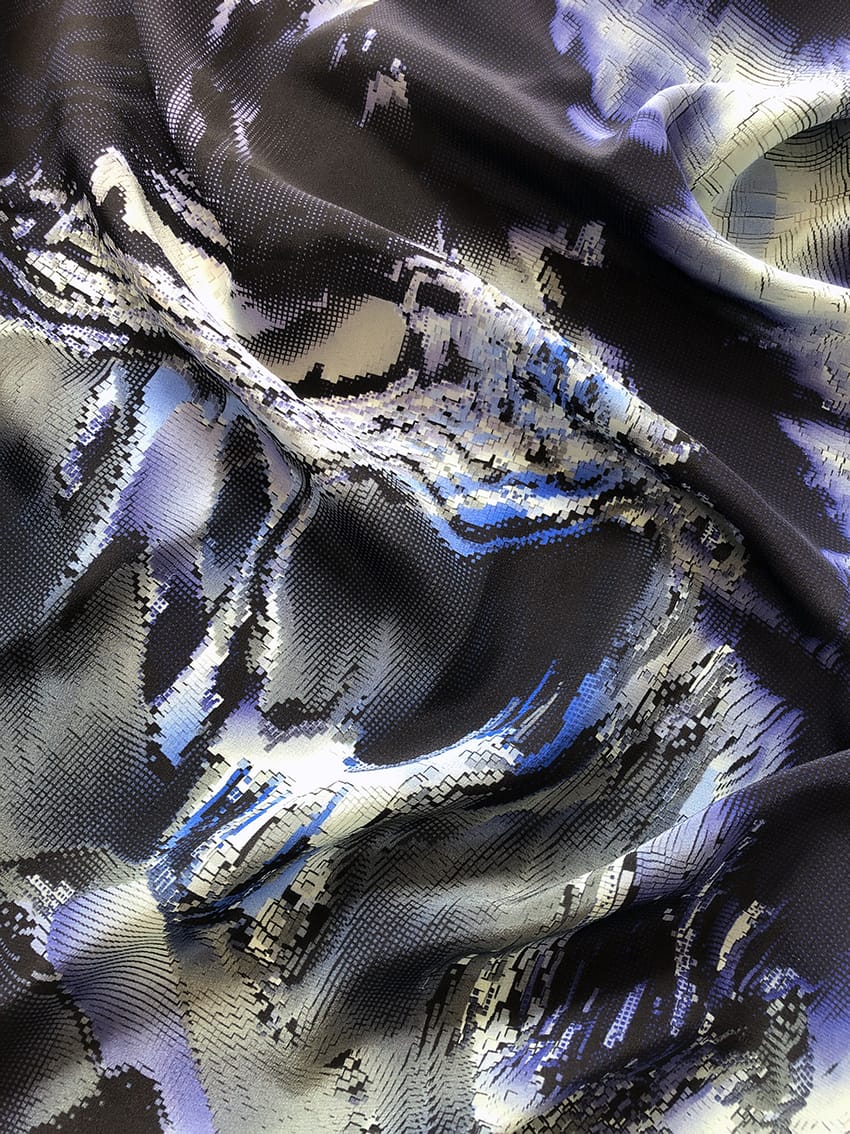
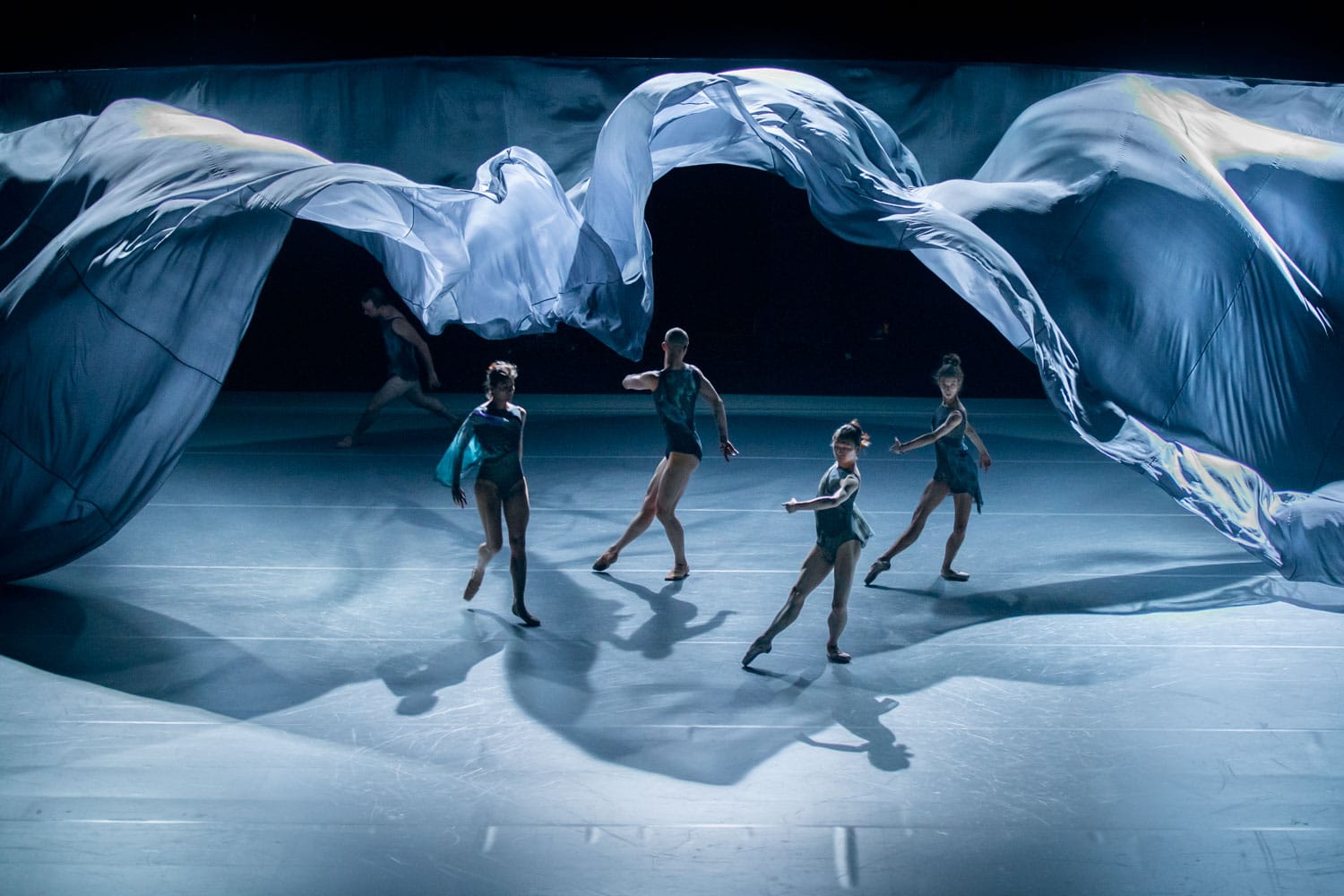
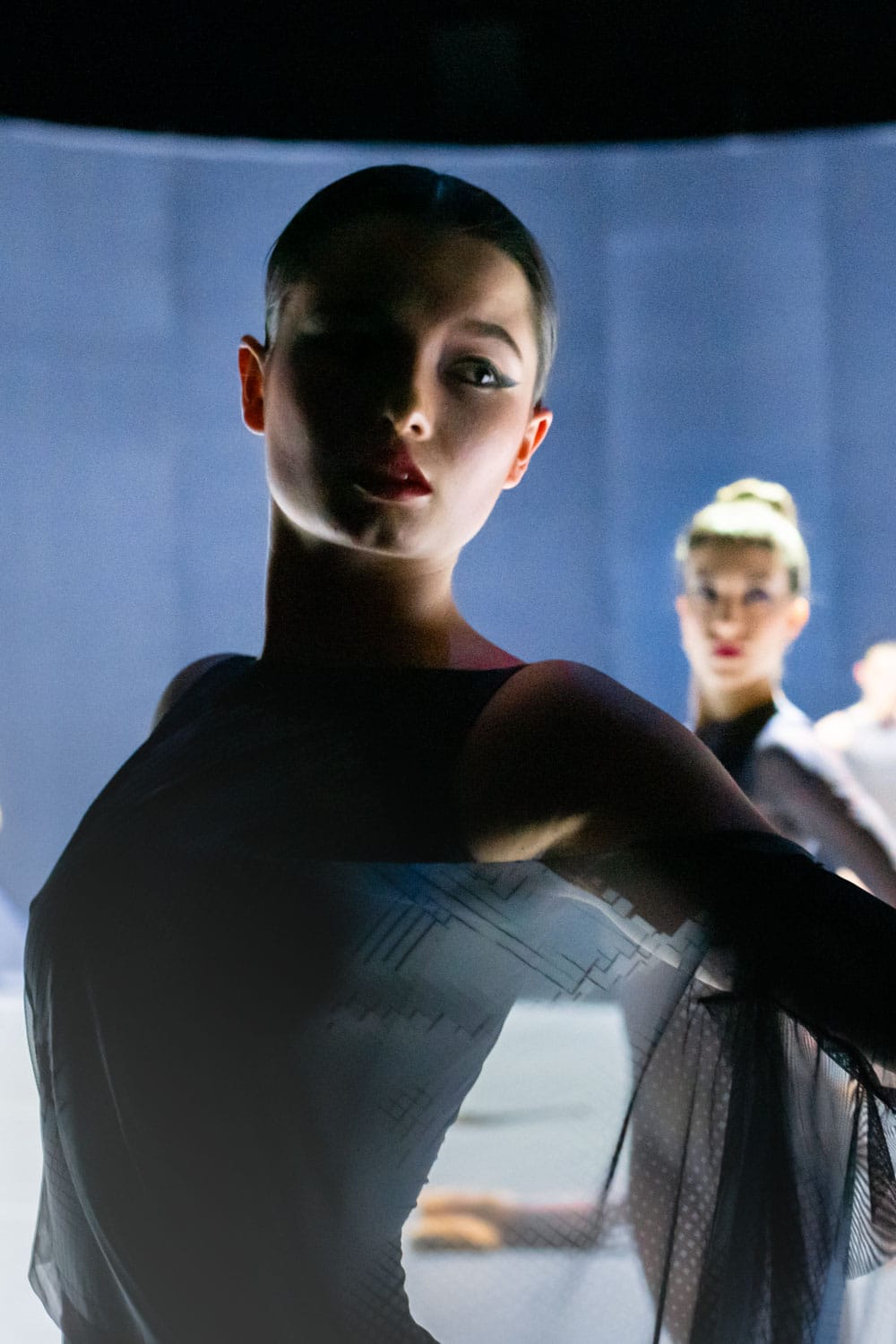
A development of a limited edition of frequency-generated scarves in cooperation with Ballet Of Difference and Dan Tapper.
The dance piece ‘Xerrox Vol.2’ is mainly inspired by the correlating musical piece by German musician and artist Alva Noto. Alva Noto is known for composing based on frequencies.
Flora Miranda, following her design vision ‘IT Pieces’, generatively visualised the frequency of the music together with coding artist Dan Tapper. With this visualisation she not only creates the costume designs, making the dancers wear the music on stage.
But also, the 66 minutes of music result in 66 scarves, each looking different by visually showing the music’s frequency.
Like this, the ballet visitors are able to take the ballet costume out of the theatre context into their own life.
The result is a holistic concept – a product and art object that creates a strong public reach of the multidisciplinary ballet piece.
The scarf as a medium is chosen to serve the broad public of a ballet company – all genders, body types and age groups. The specific organic shape of the scarf can be worn as a skirt or as a top. Transforms into a costume for society.

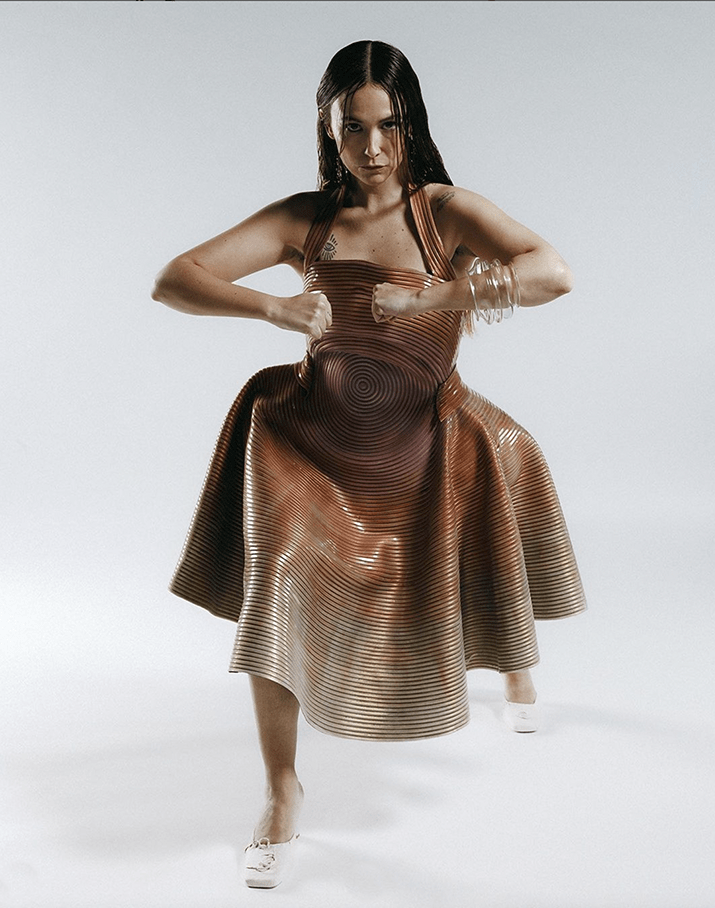

Editorial with Rigoberta Bandini wearing pieces by Flora Miranda.
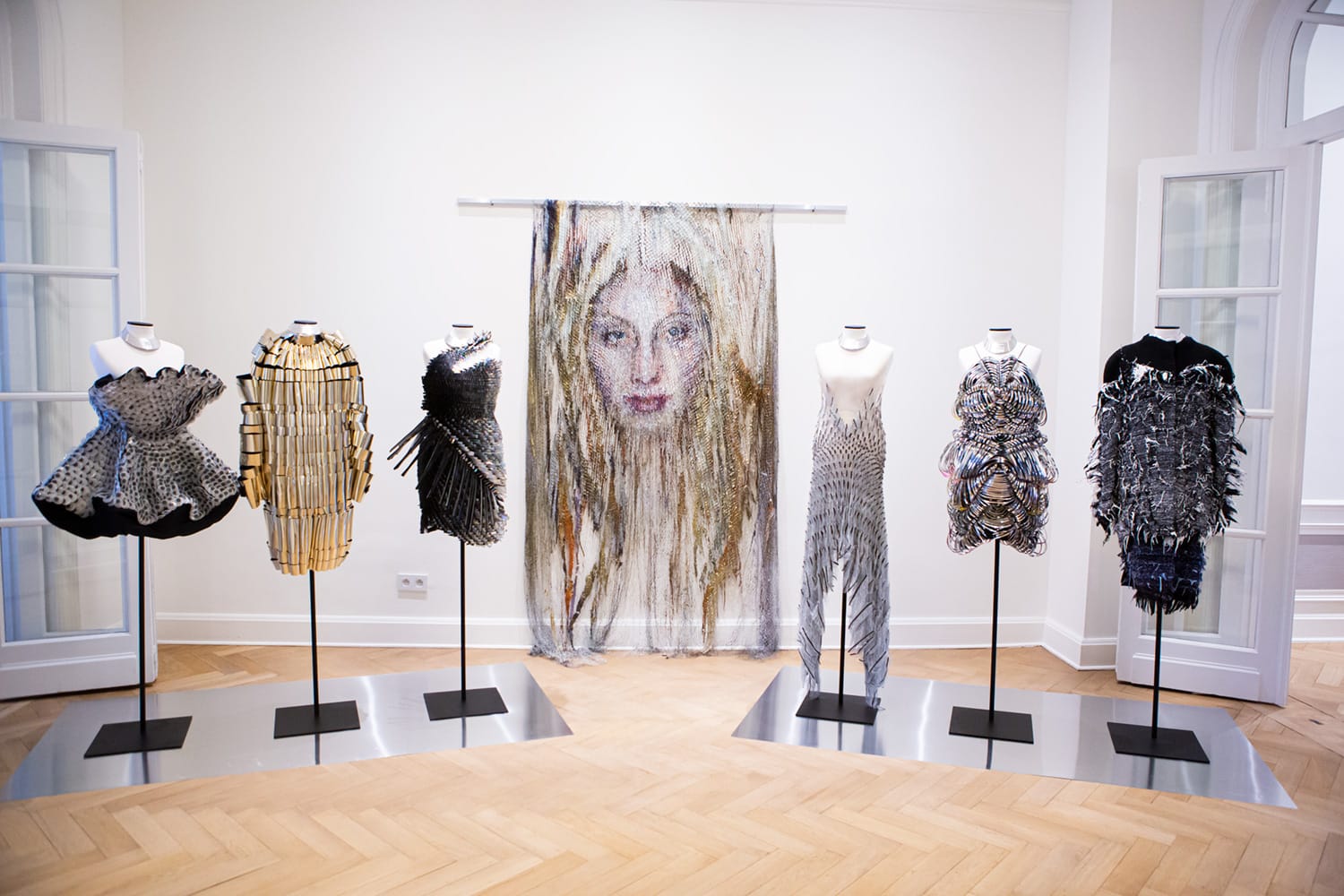
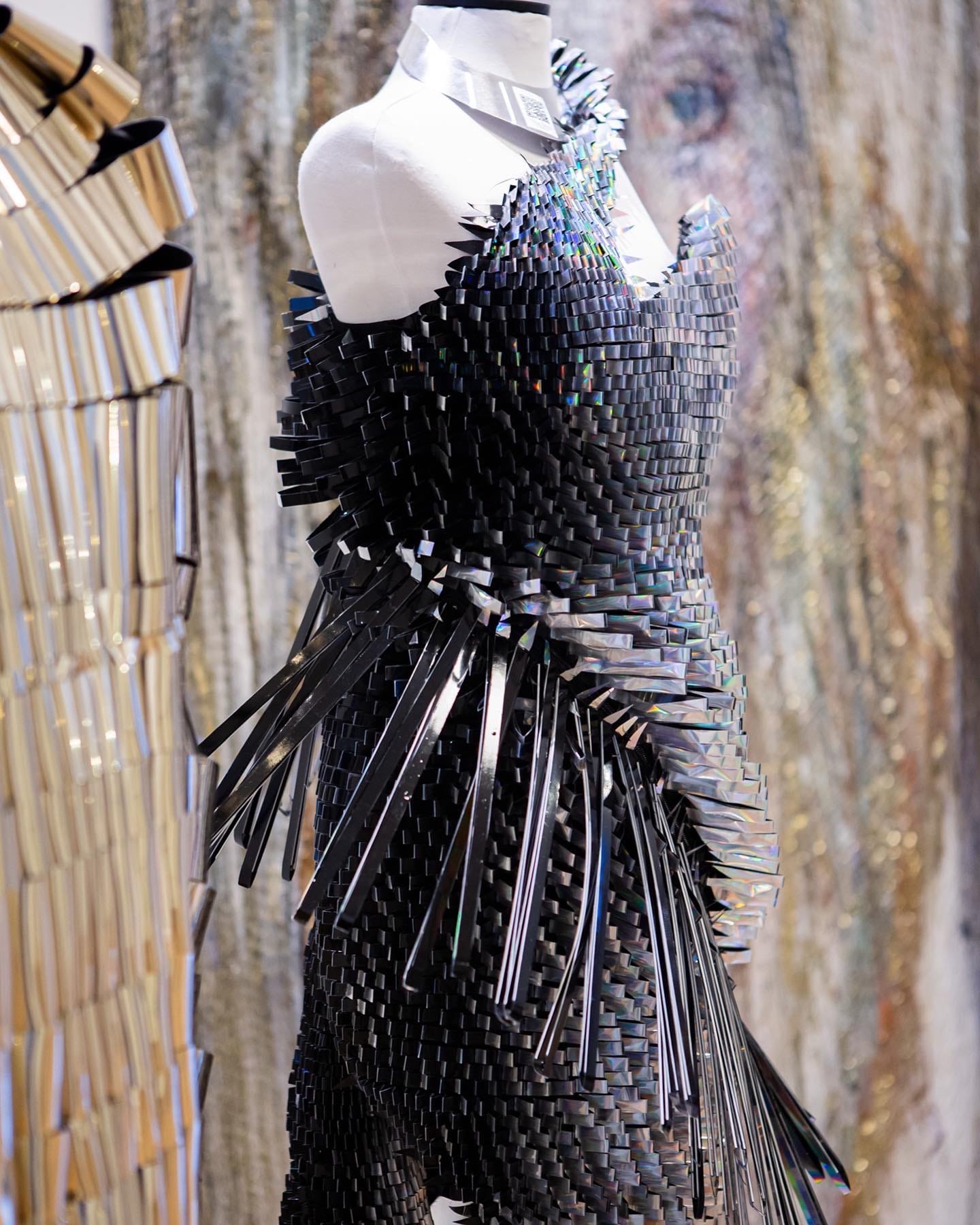
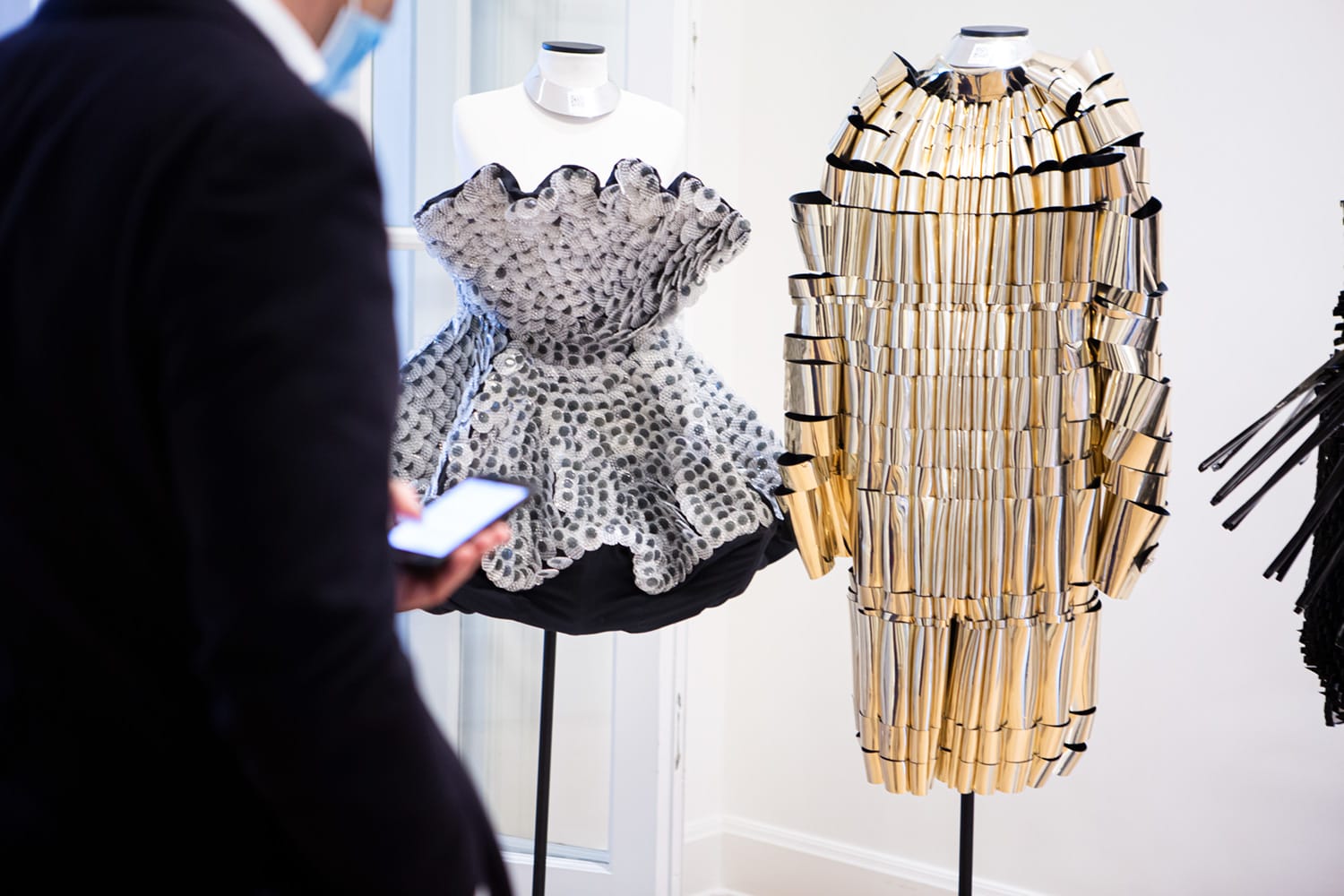
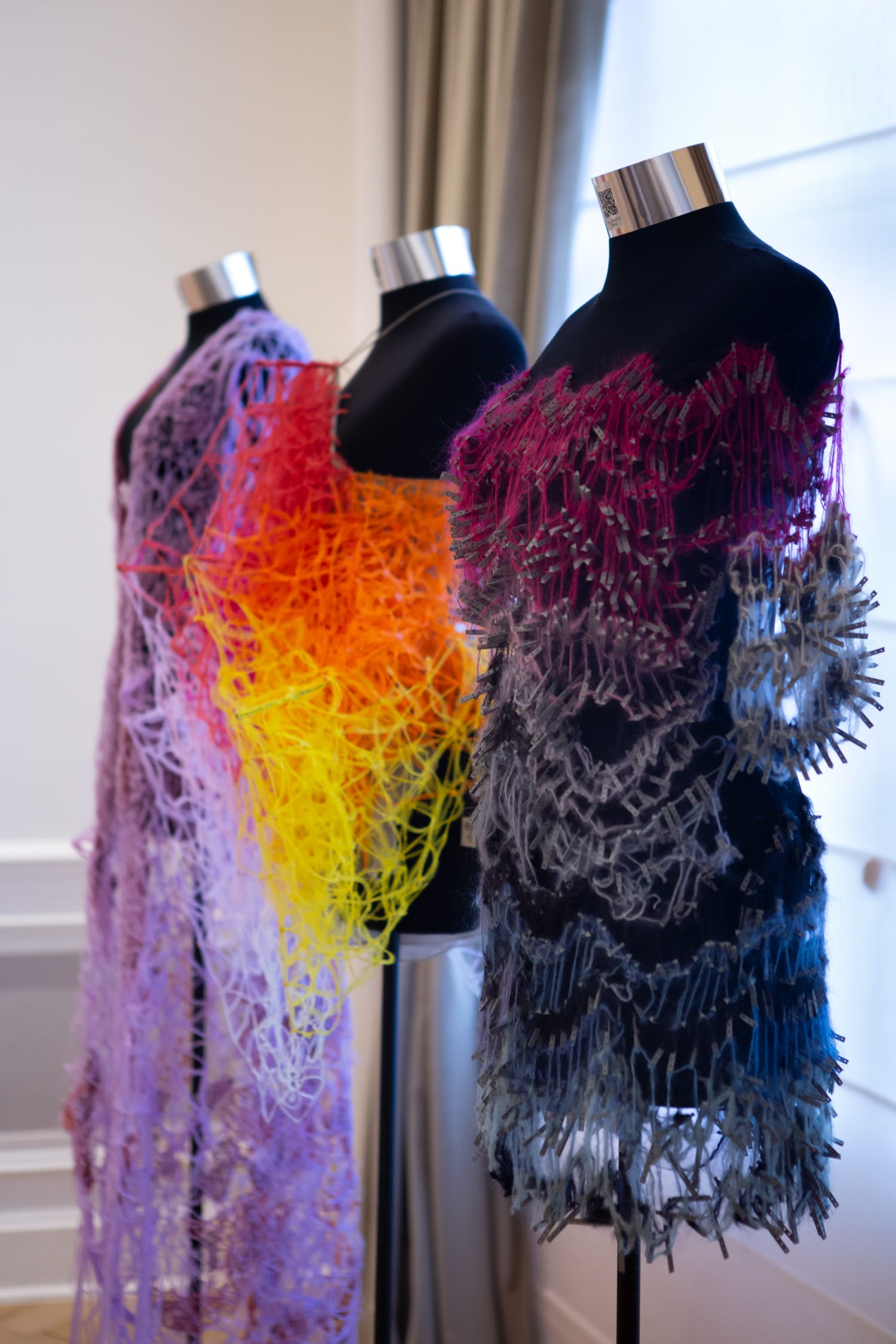
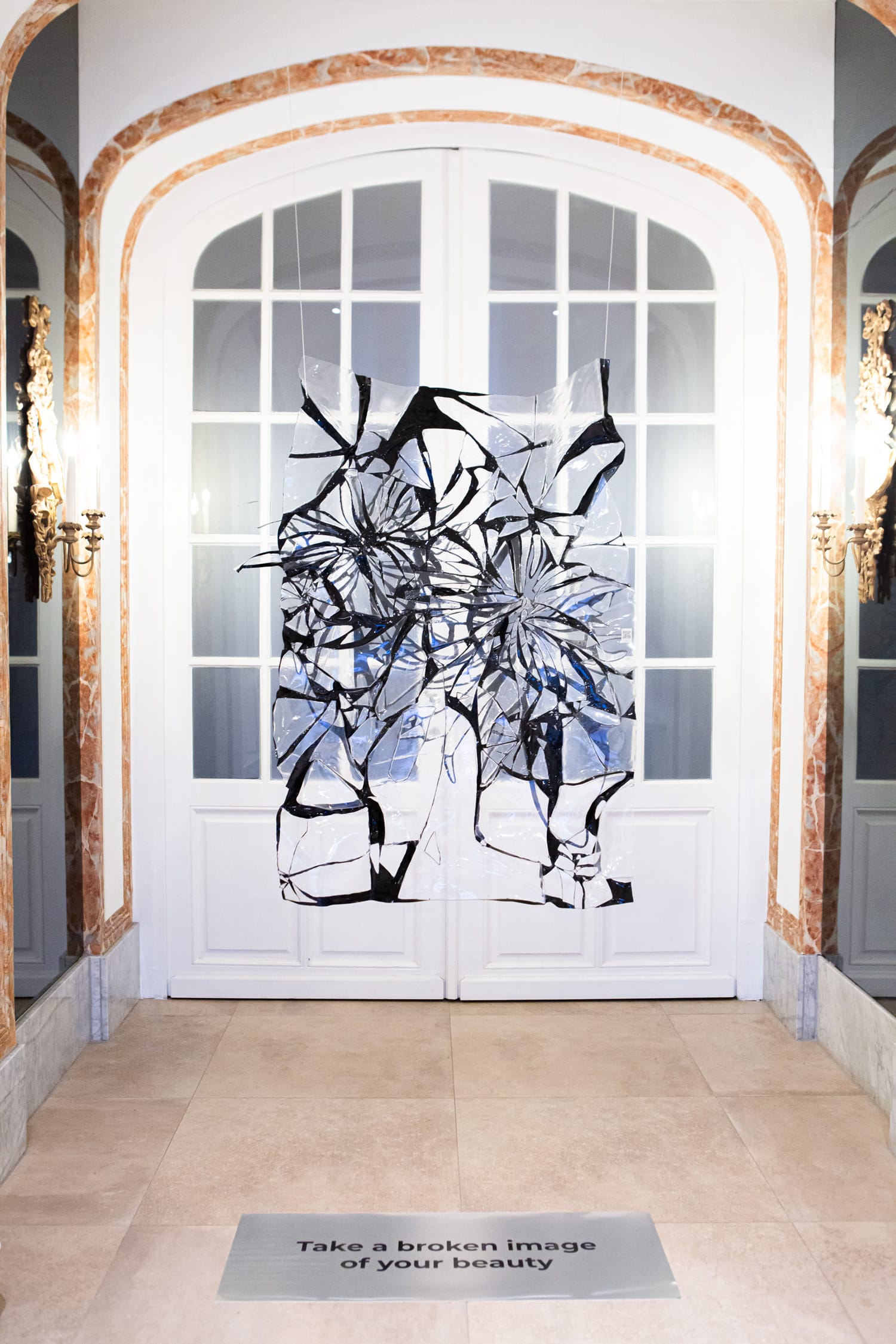
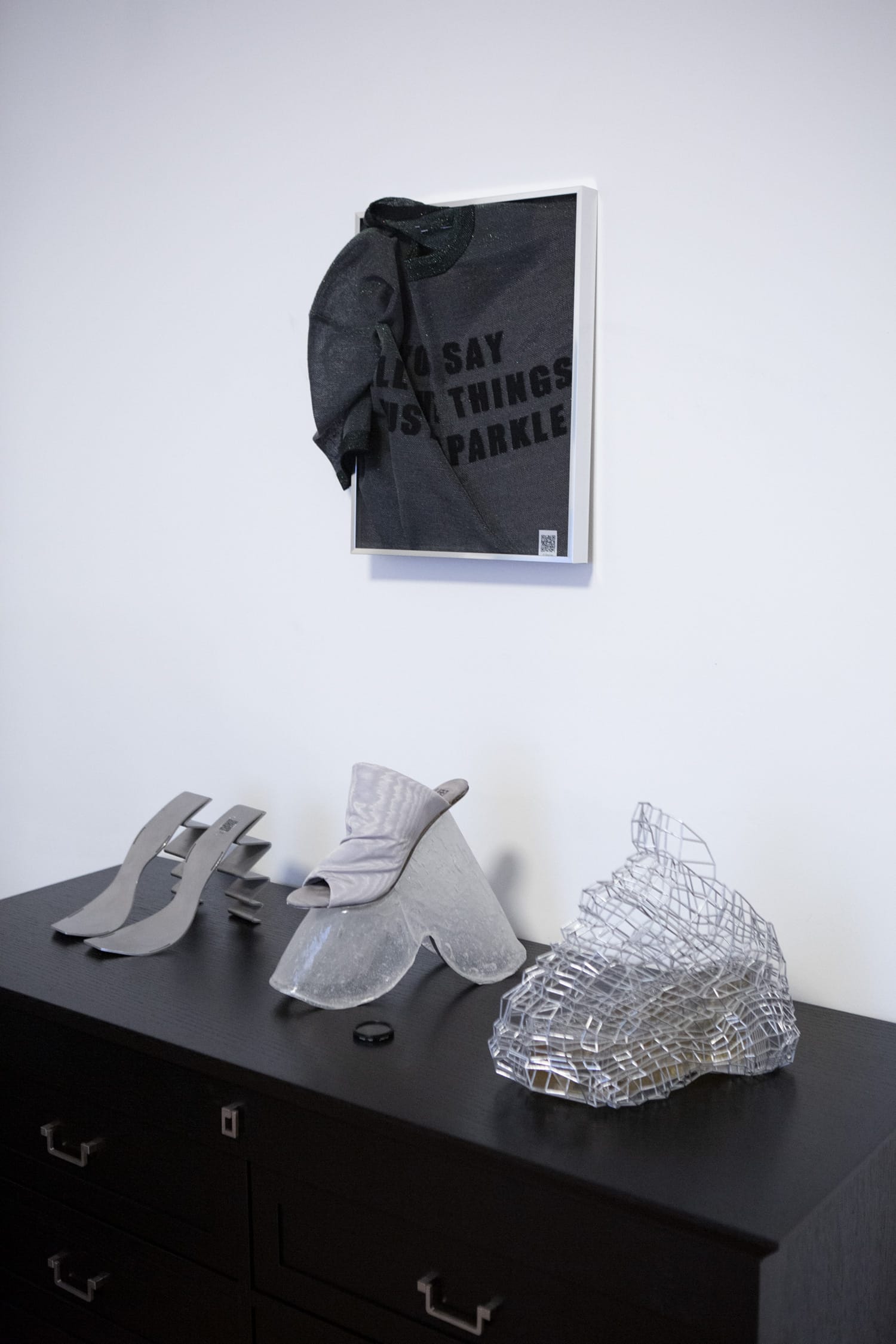
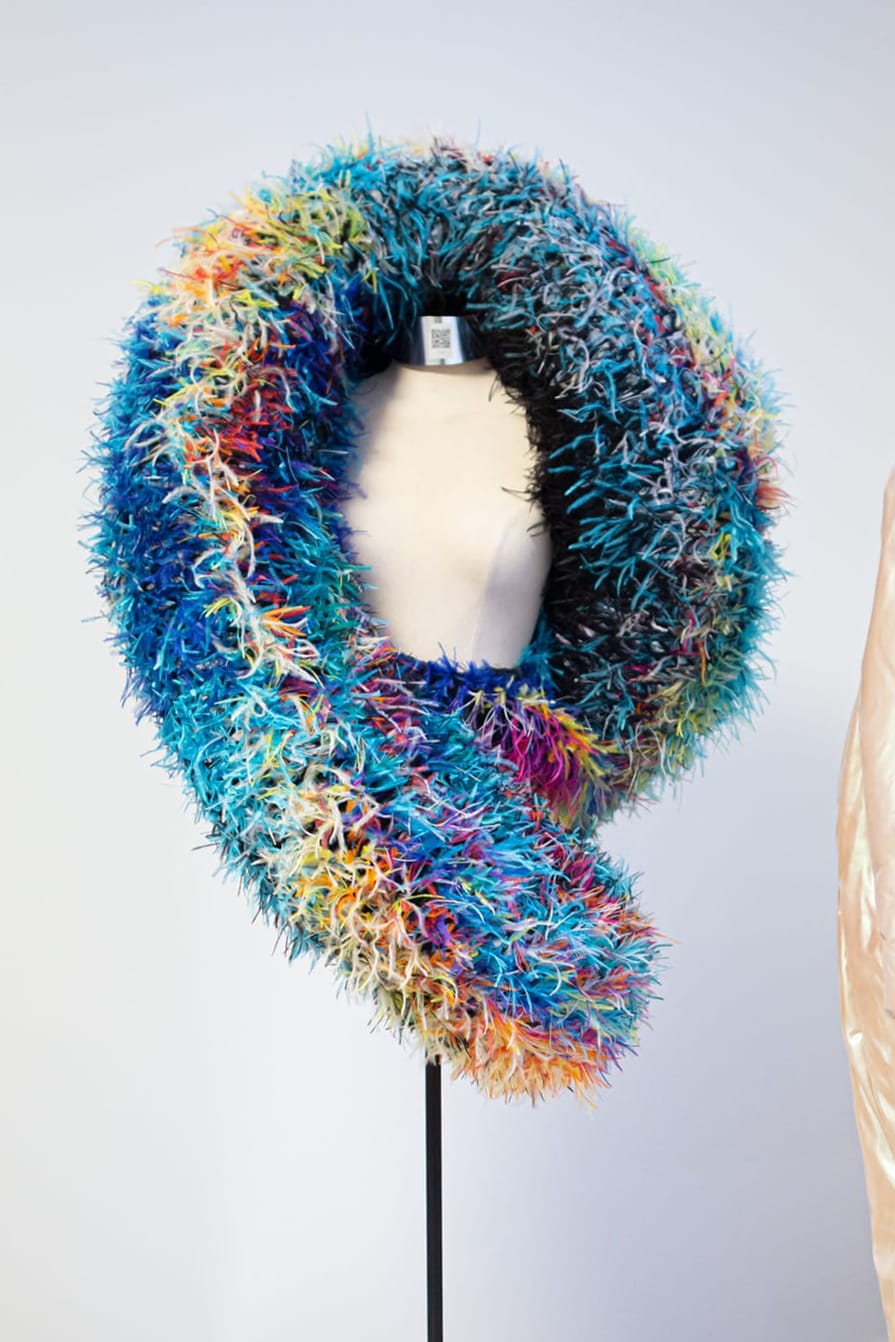
Travelling exhibition ‘I Am Digital’ by Flora Miranda, first presentation at the Residence of Austrian Ambassador Dr. Elisabeth Kornfeind in Brussels.
‘Nothing above me, nothing next to me, nothing under me. I AM DIGITAL.’
The exhibition ‘I Am Digital’ takes you on a journey through Flora Miranda’s world of phygital identities. What if we could send ourselves like an e-mail? Flora Miranda is fascinated by the simultaneous evolution of human behaviour and new technologies. You will explore highlights of her creations from the past years: Technological storytelling, artistic haute couture creations and visions for creative fashion software.

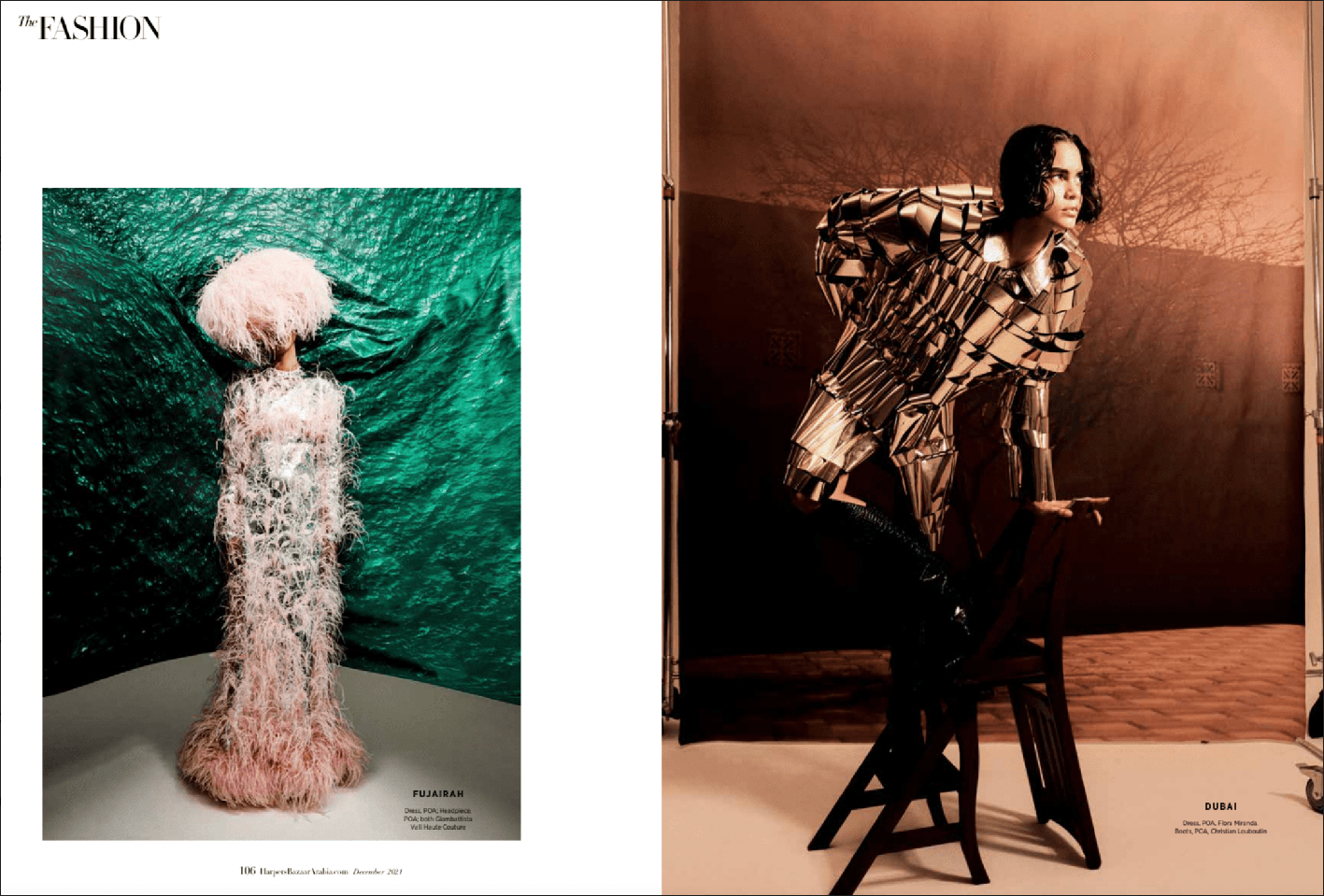
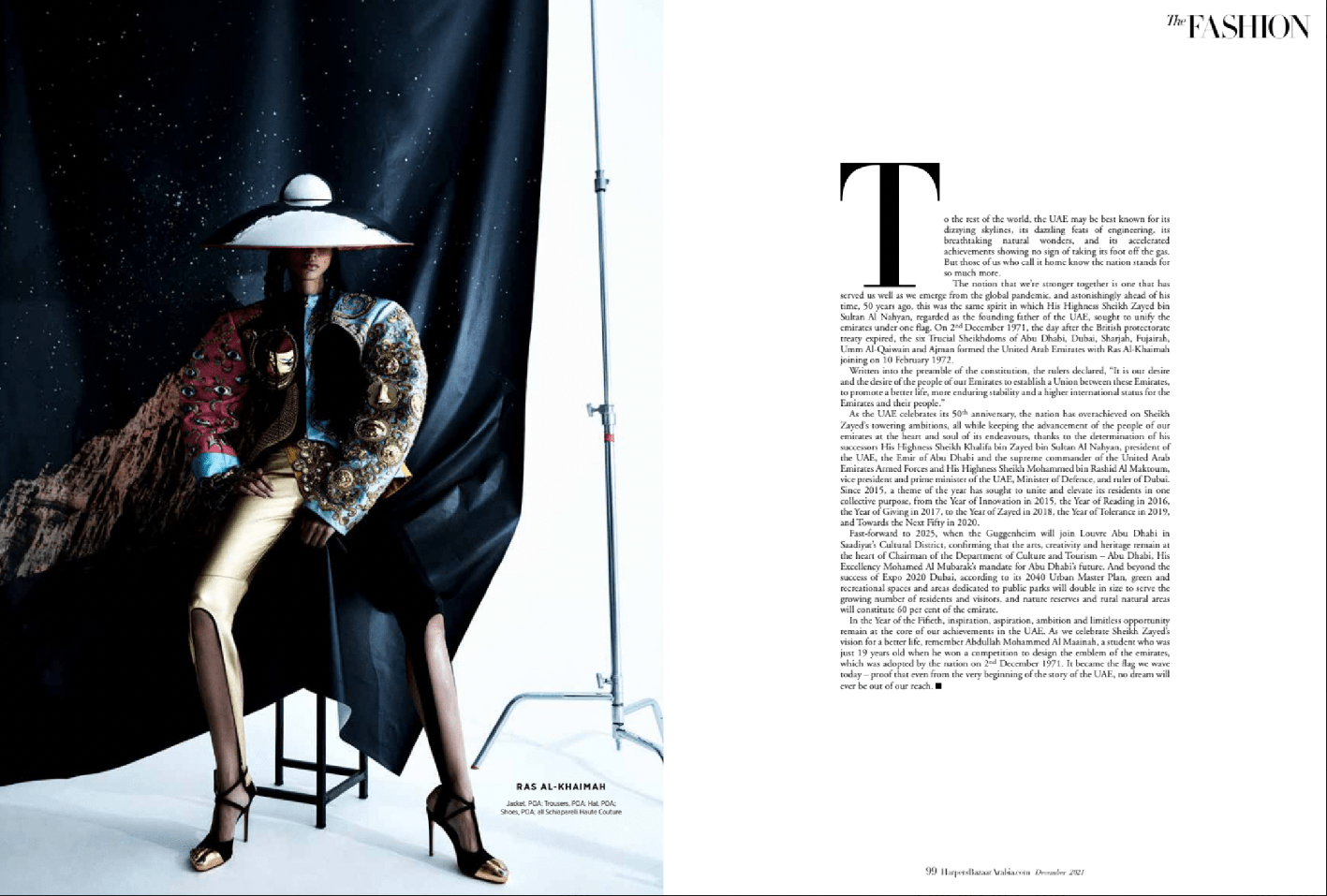
Editorial with pieces by Flora Miranda in Harpers Bazaar Arabia
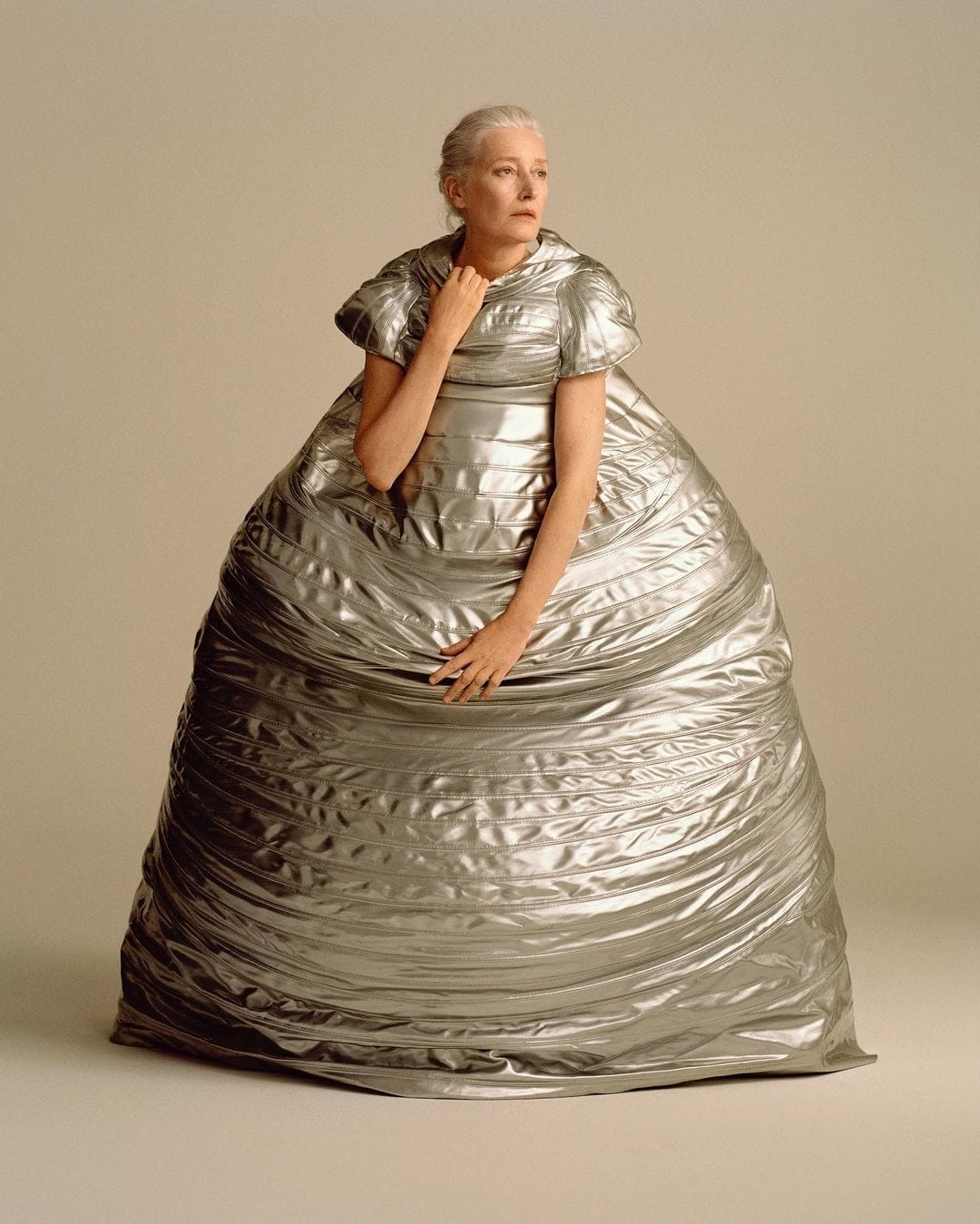
Vogue Talents speaks to Marie Sophie Wilson
In the September 2021 issue, Vogue Italy publishes an interview with Marie Sophie Wilson together with an editorial of her wearing couture pieces, among which the ‘Venus Dress’ by Flora Miranda.
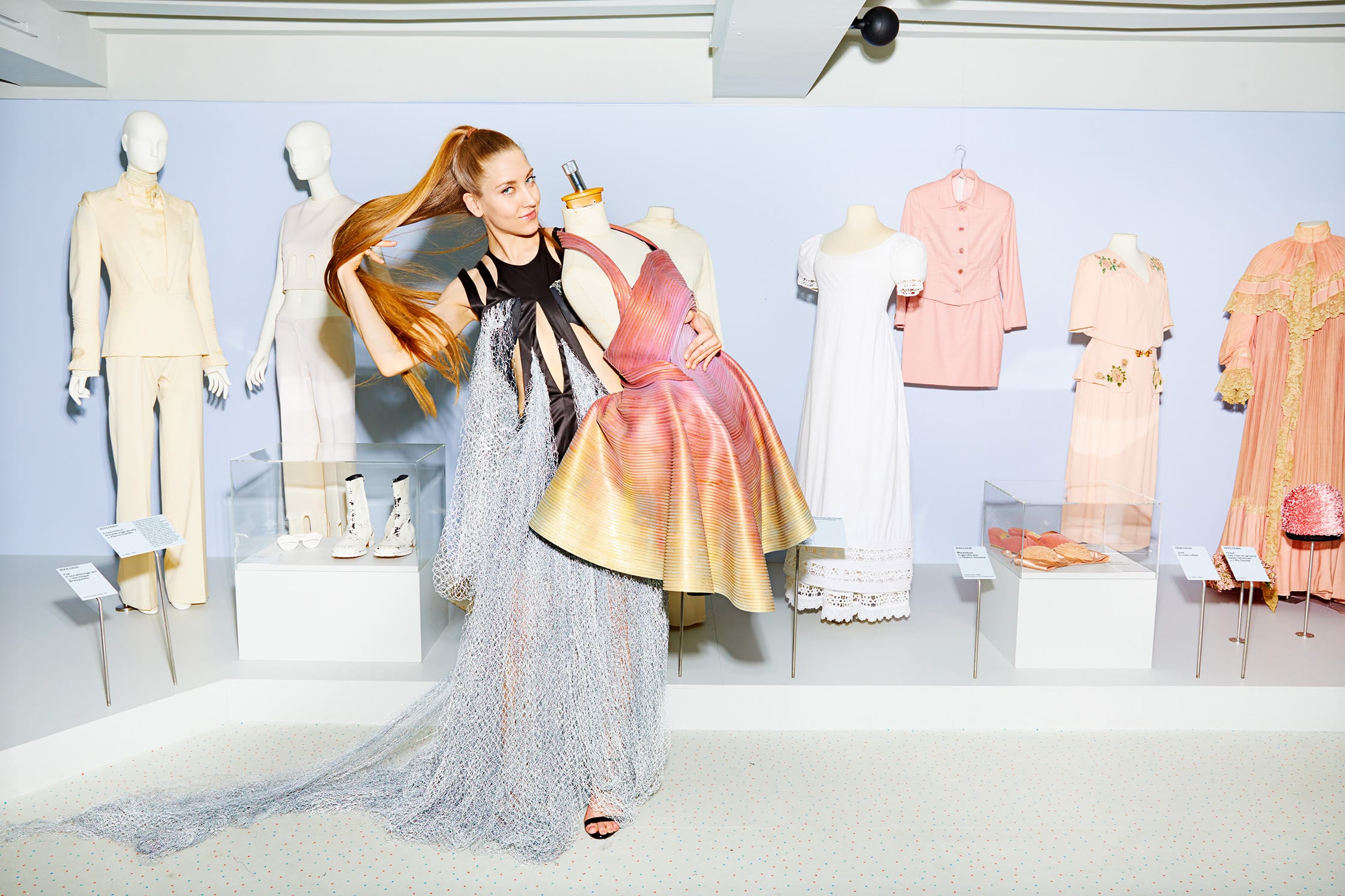
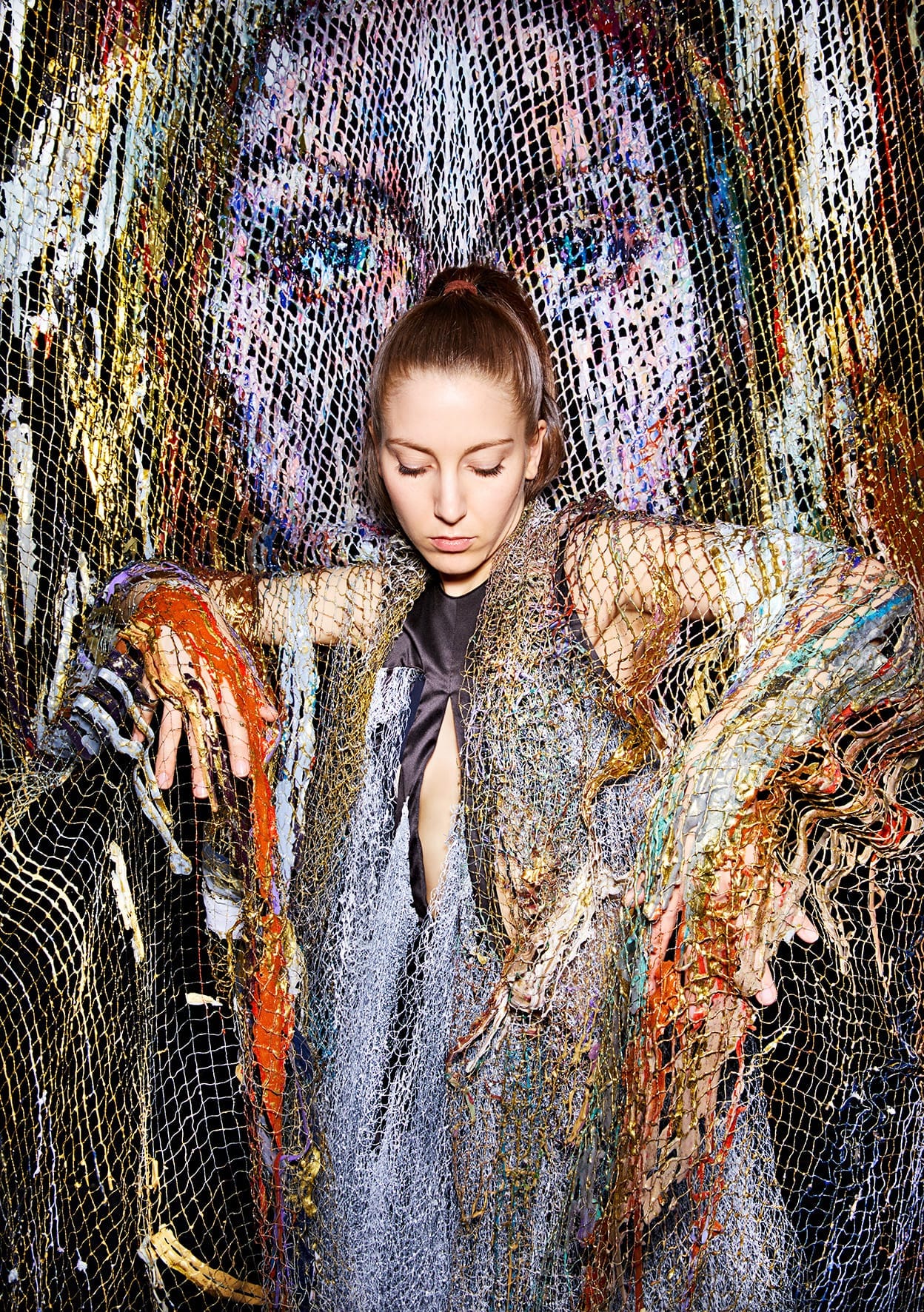
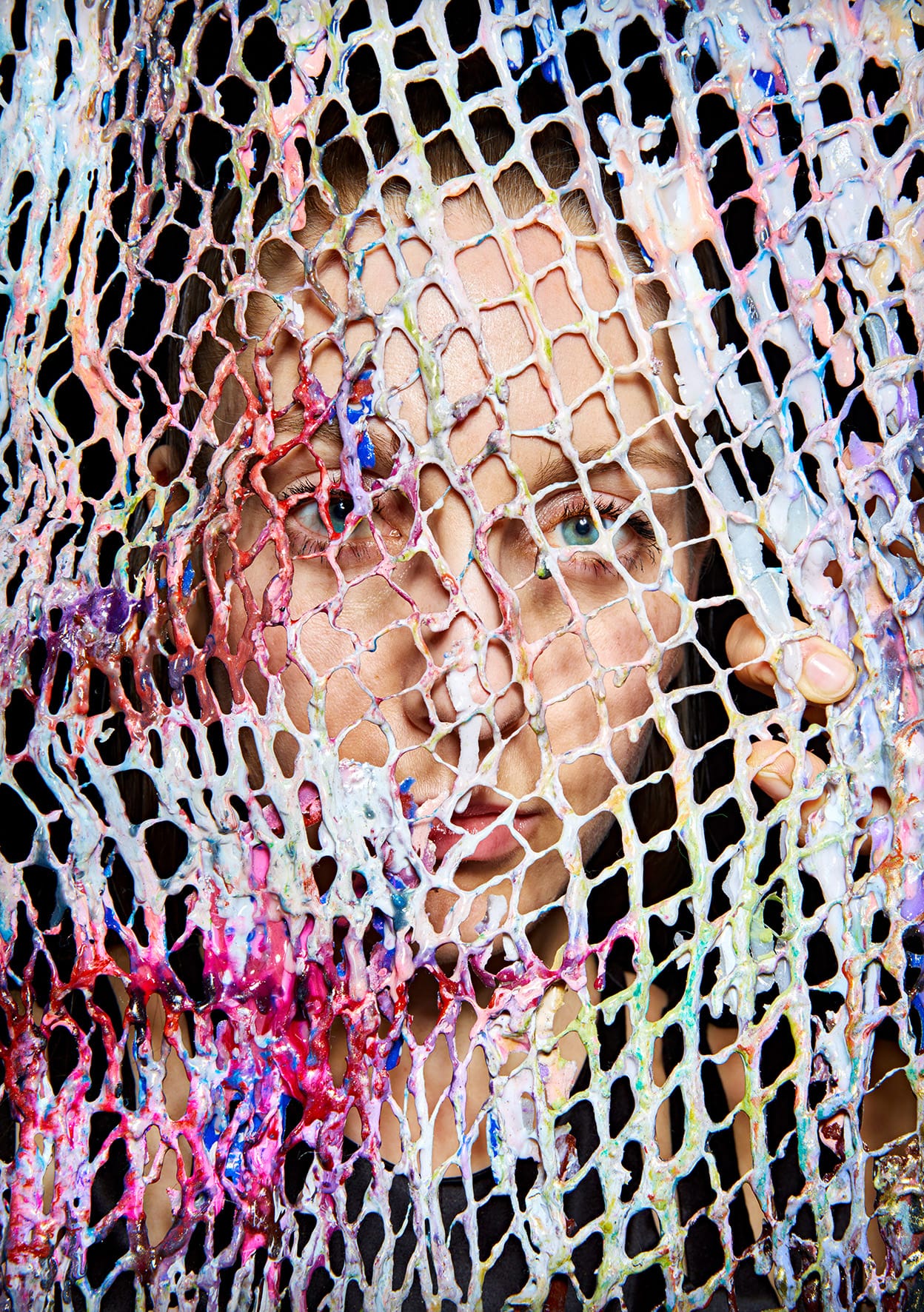
Red Bulletin portraits Flora Miranda in text and image
Read the in-depth interview on Red Bull.
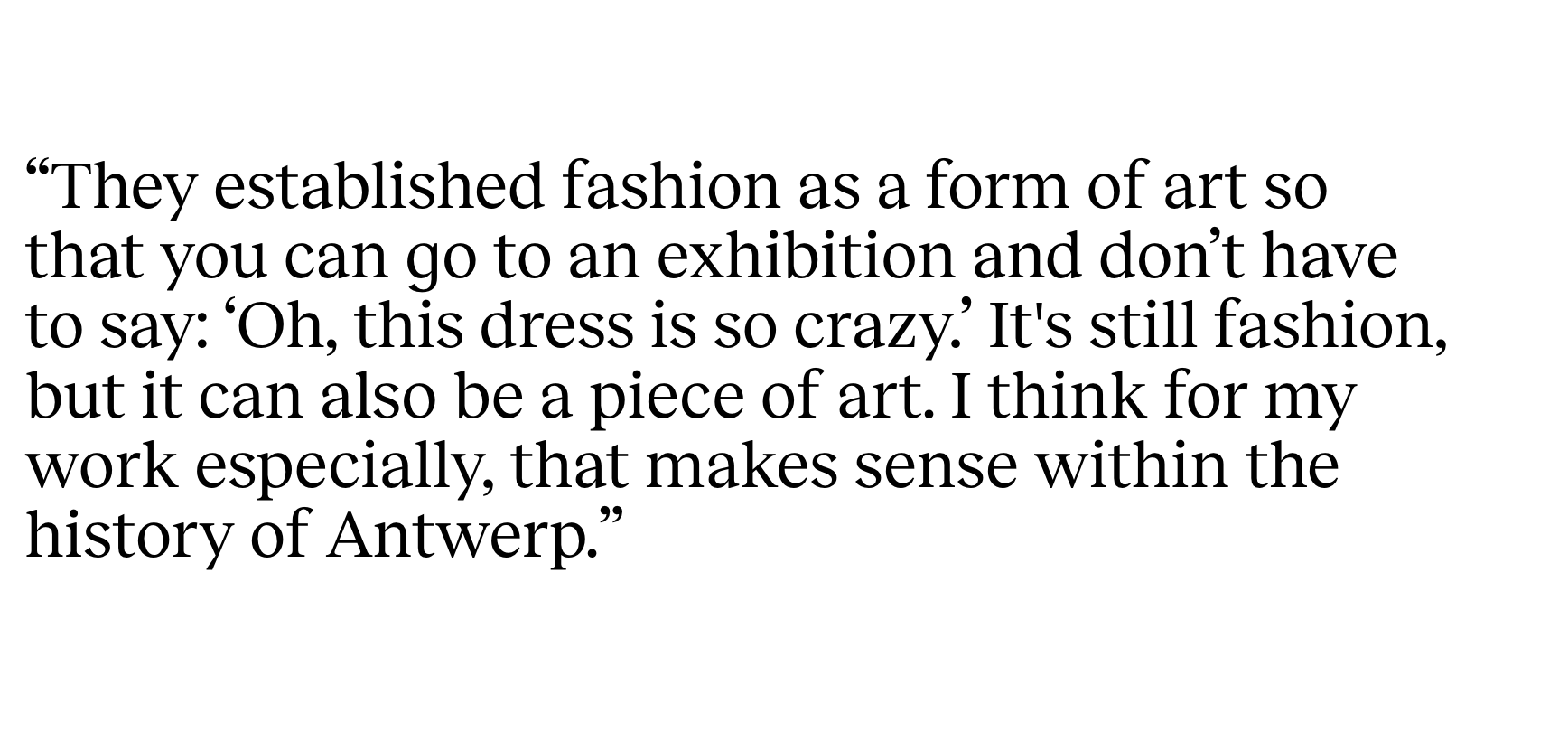
Dominique Nzeyimana interviews Flora Miranda for MoMu Antwerp
Read the article on MoMu Antwerp.
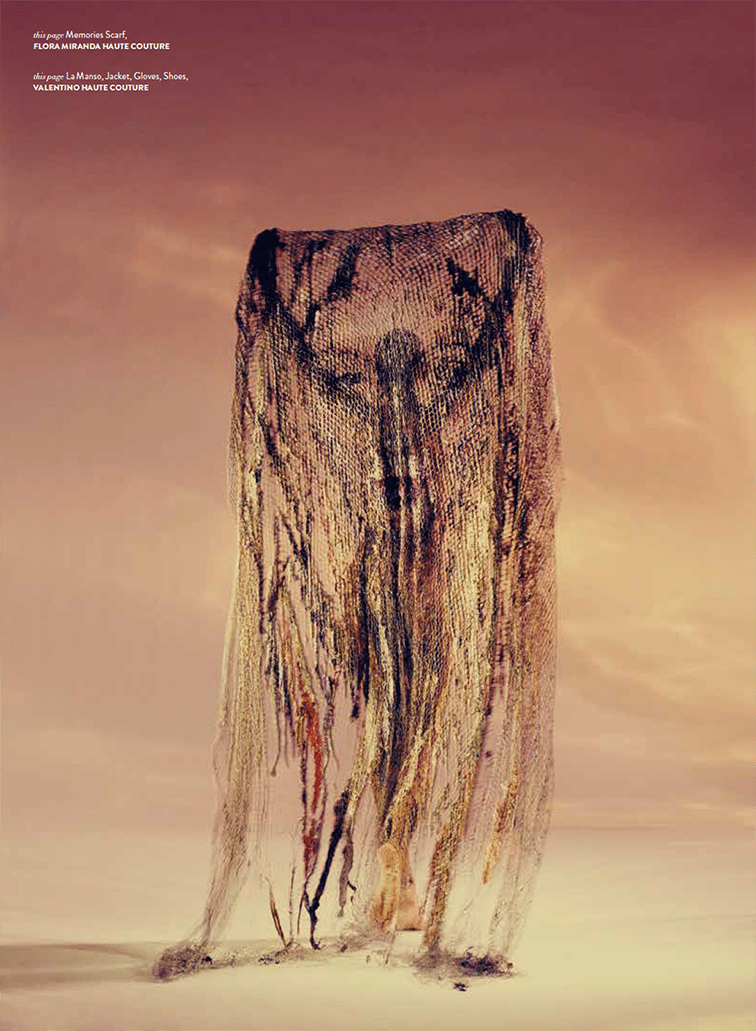
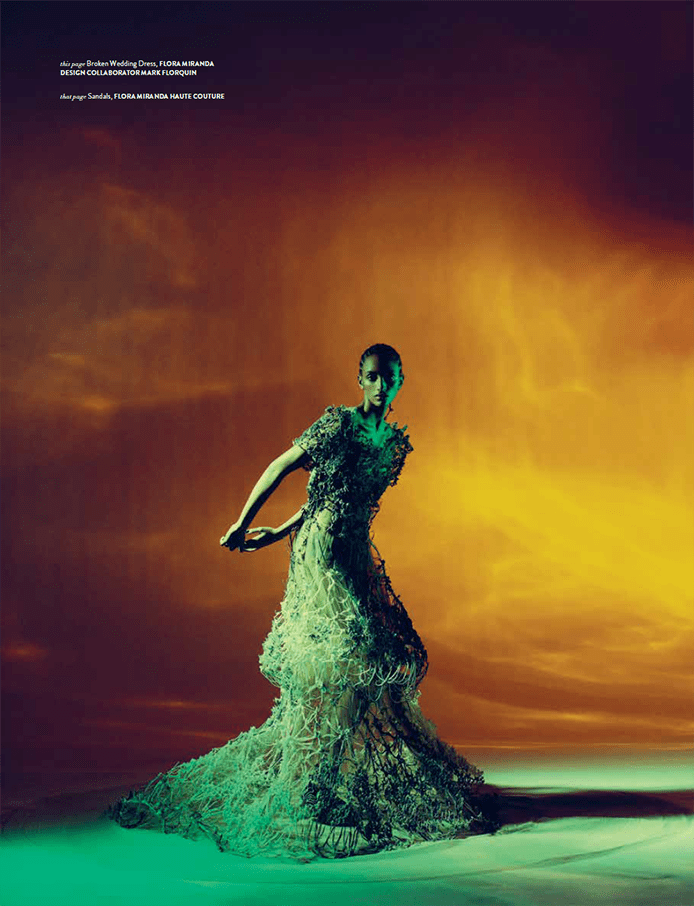
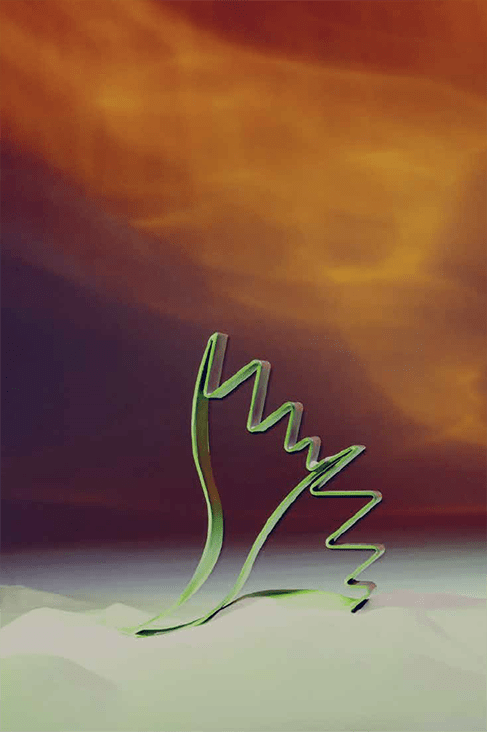
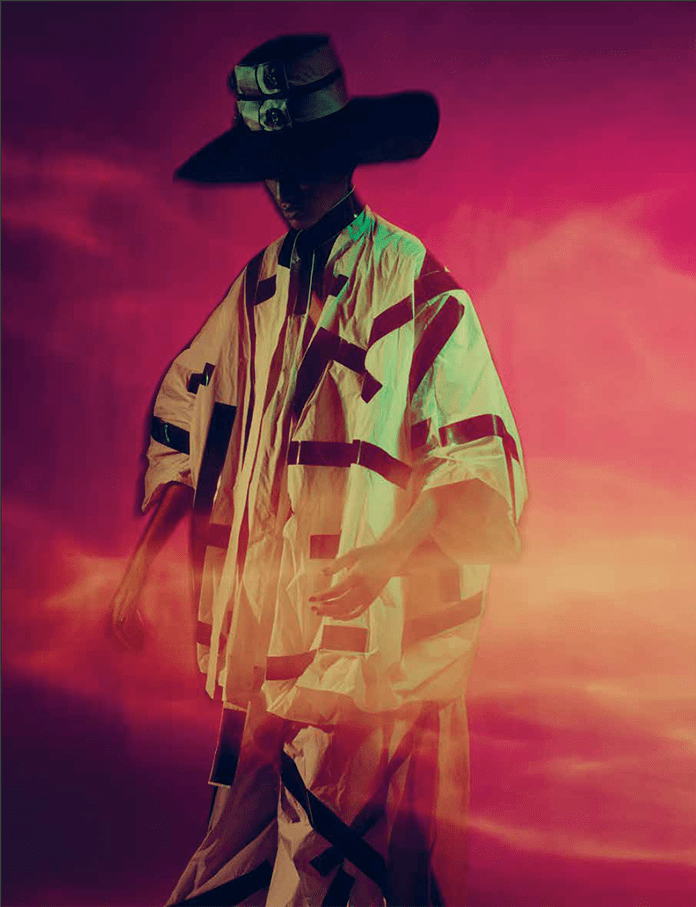
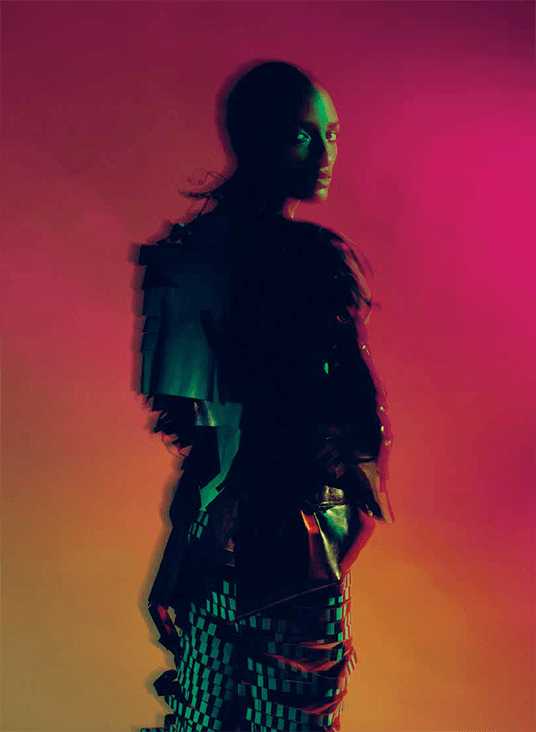
Editorial with pieces by Flora Miranda in Harpers Bazaar Arabia

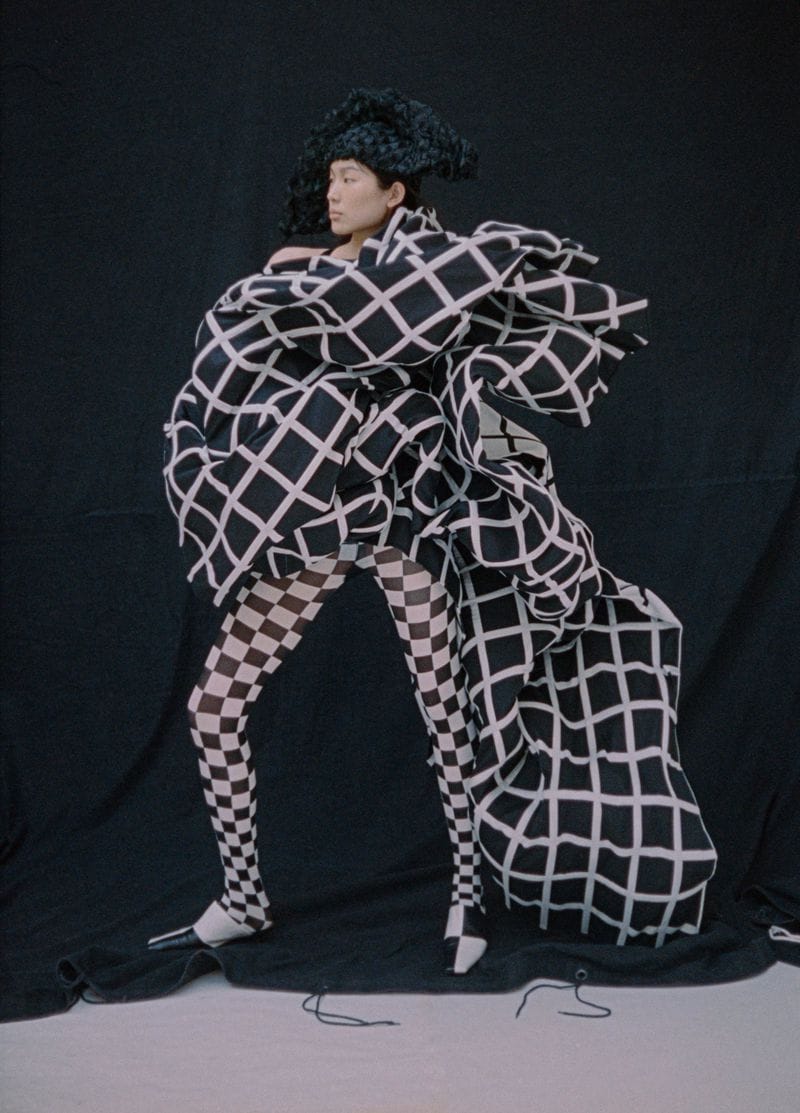
Vogue Singapore Editorial “Some Like it Haute”
Chuck Reyes photographes the ‘Crincle #2 Dress’, a collaboration between Flora Miranda and Esther Stocker. Styled by Jeremie Bacque.
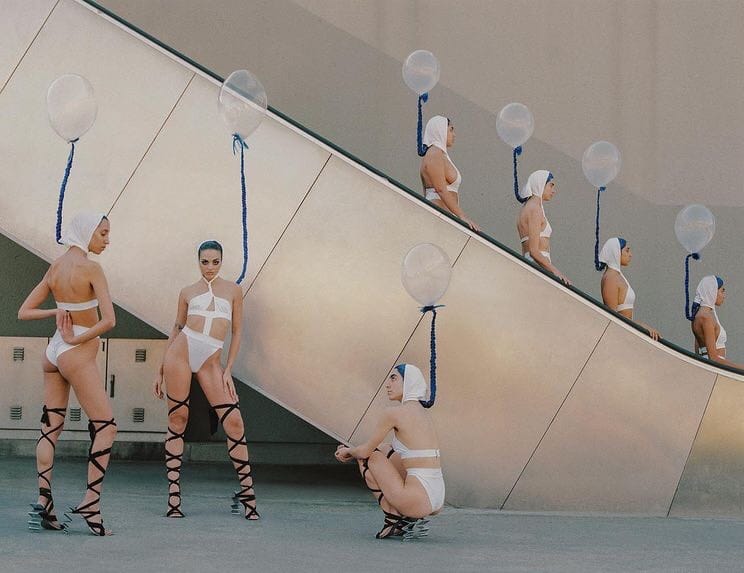
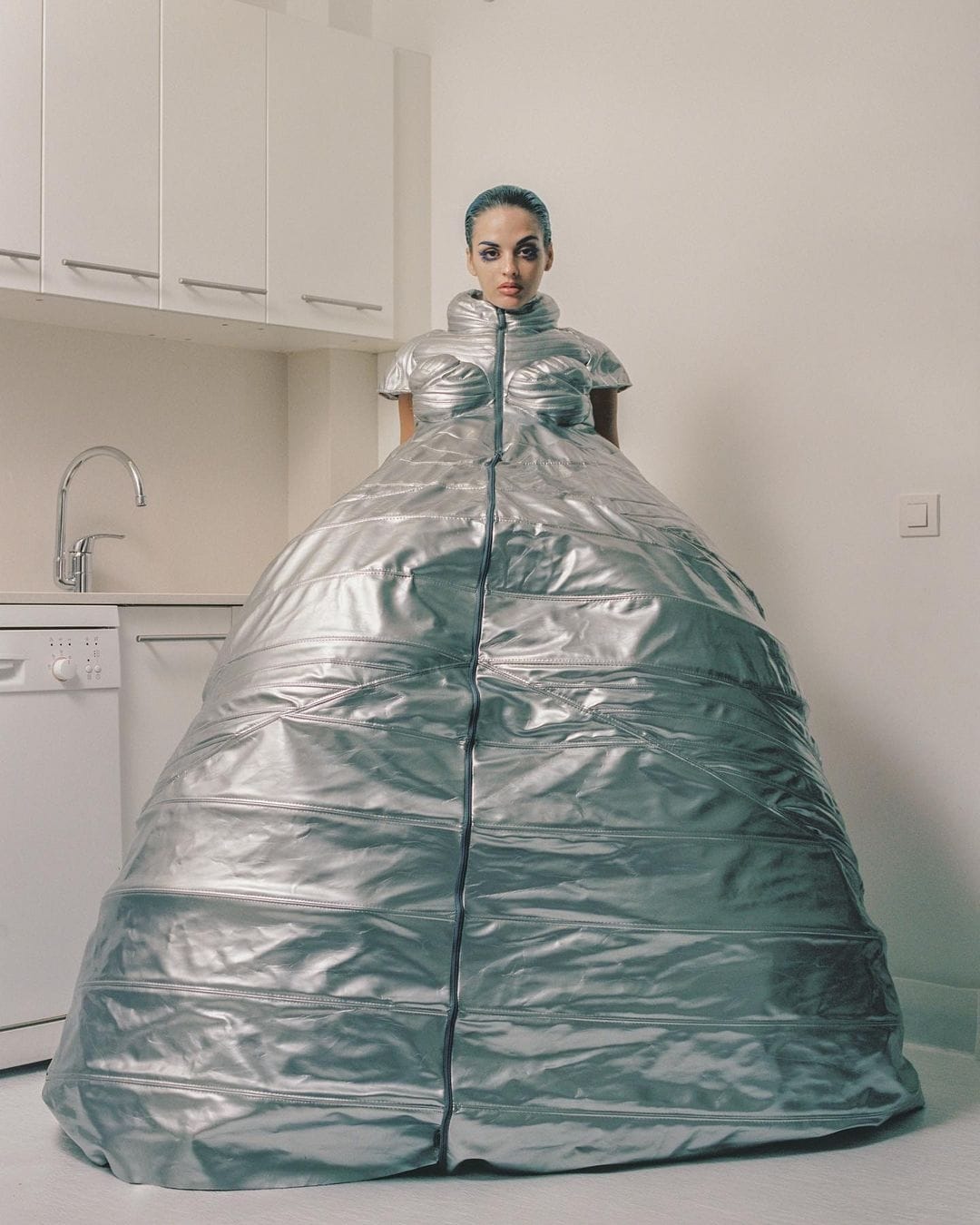
Sita Abellan wears the Flora Miranda “Venus Dress” and “Cyber Crack Shoes” in the “Planet Indigo Calendar”. Styled by Stephania Yepes and photographed by Carlota Guerrero.
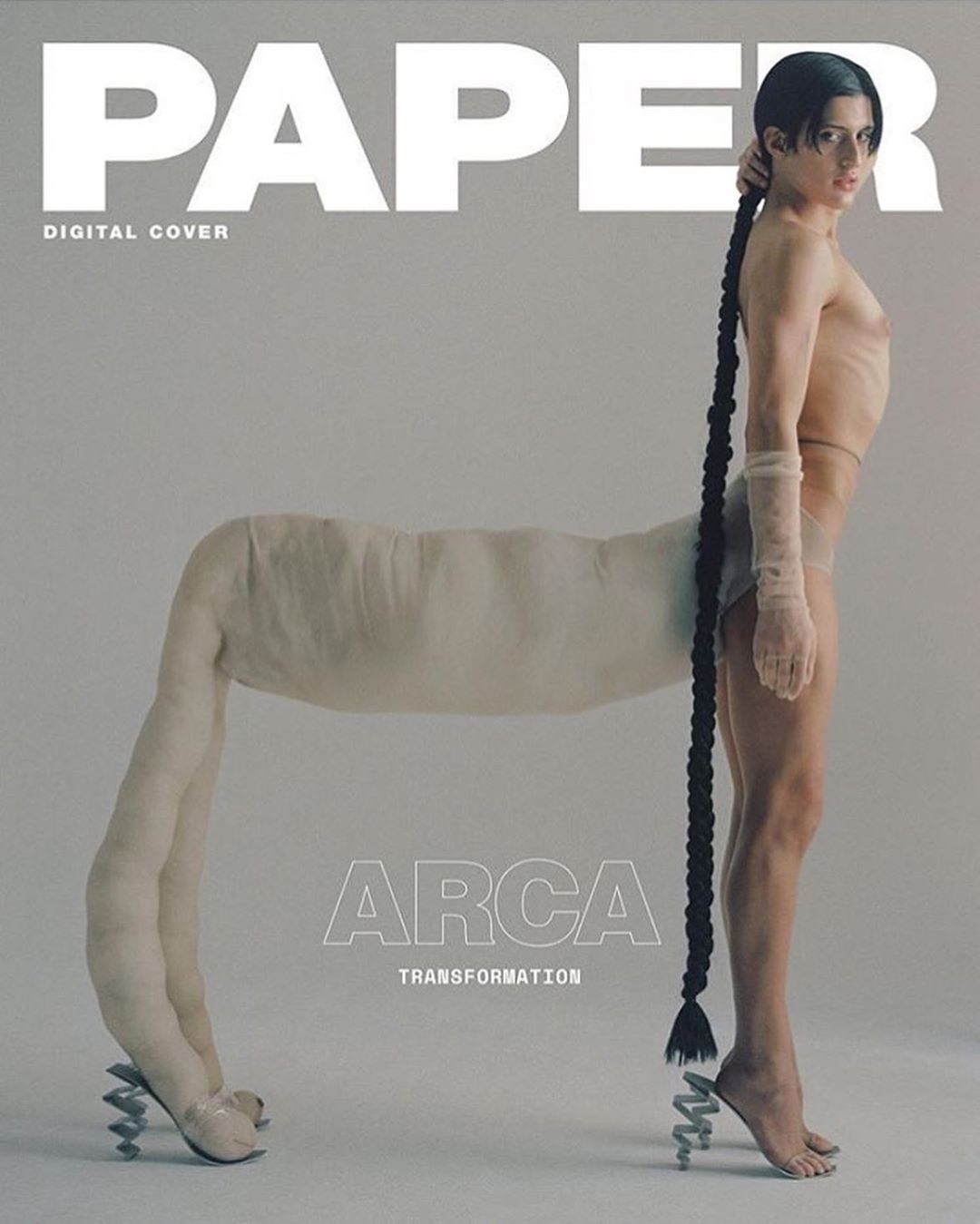
Arca wears the Flora Miranda “Cyber Crack Shoes” on the cover of Paper Magazine. Styled by Stephania Yepes
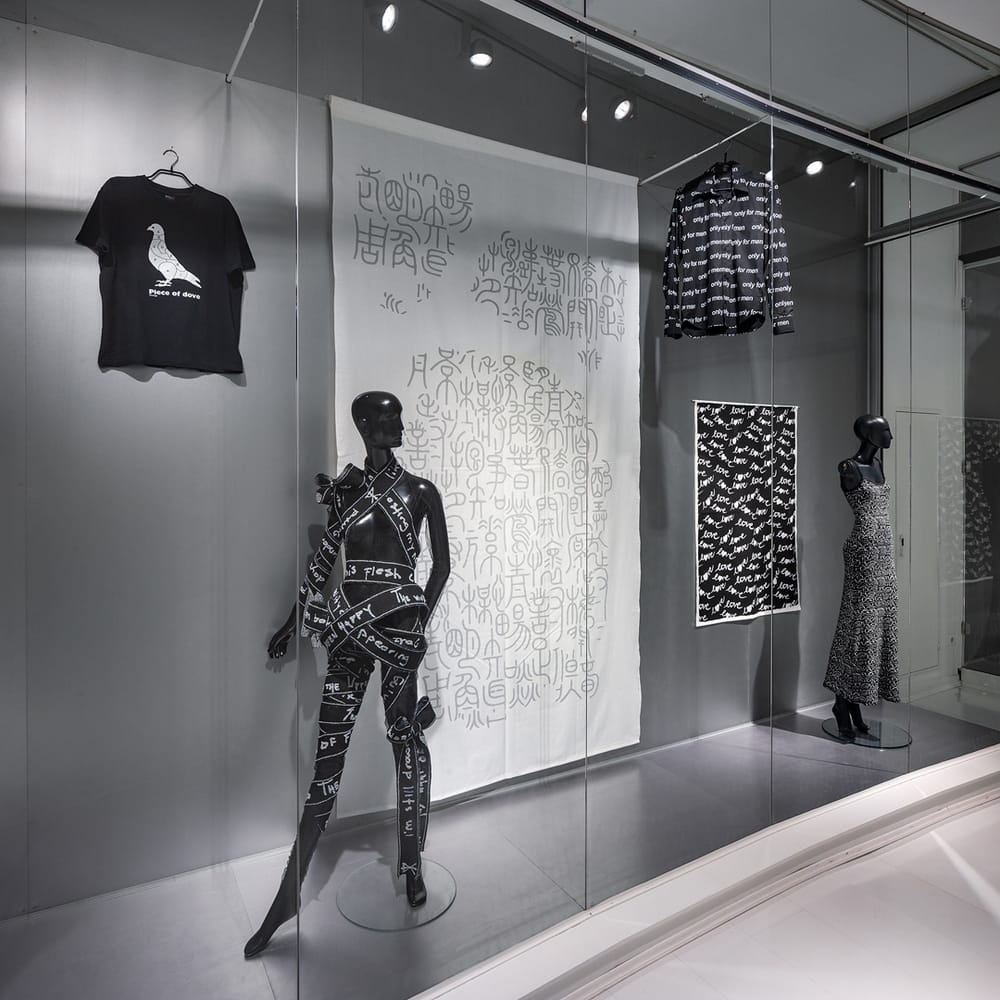
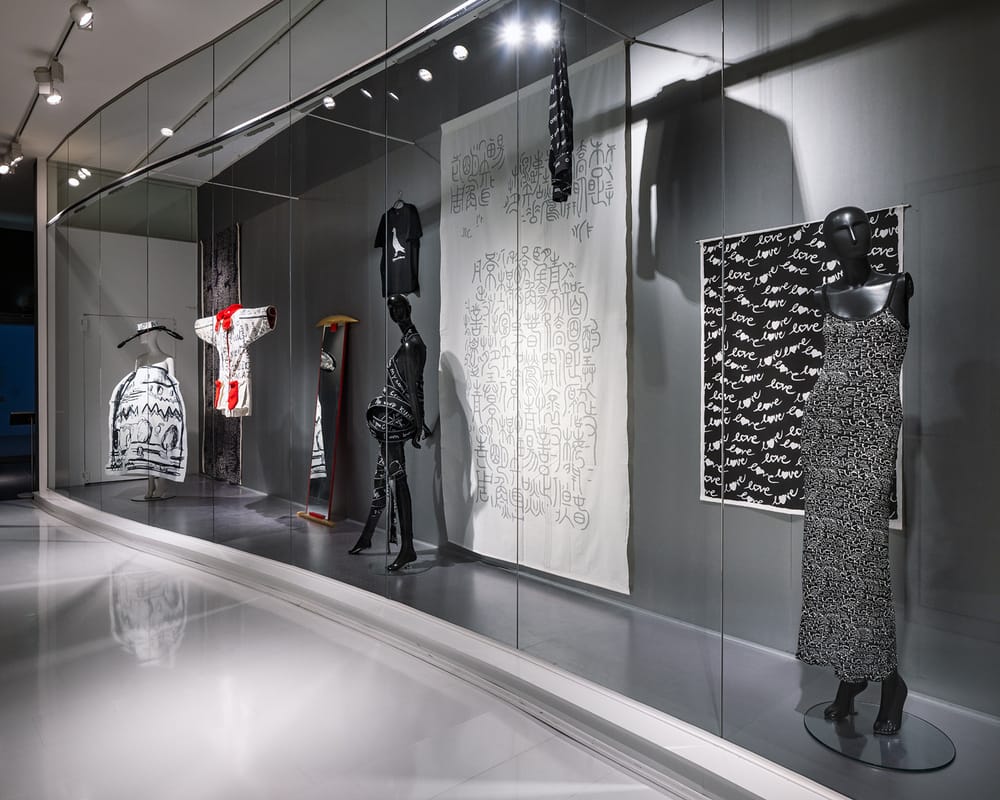
The Flora Miranda “Machine Learning Applied” dress is exhibited at MKG Hamburg.
This exhibition sheds light on the significance of text for fashion products. The items on view are variously emblazoned with brand names or logos, political messages, typography or plays on words. Writing can be found in every conceivable place on dresses, trousers, coats and shirts. Sometimes the letters splashed across the chest or back just can’t be big enough, and other times they almost disappear in the pattern repeat. And in some cases they wrap themselves around the body so circuitously that the message remains a mystery. All objects on display come from MK&G’s own fashion collection, including more than 35 items from the 19th century until today by established designers such as Walter Van Beirendonck, Coco Chanel, Jean-Charles de Castelbajac, Jean-Paul Gaultier, Tom Ford, Karl Lagerfeld, Martin Margiela and up-and-coming young designers such as Edda Gimnes and Flora Miranda.
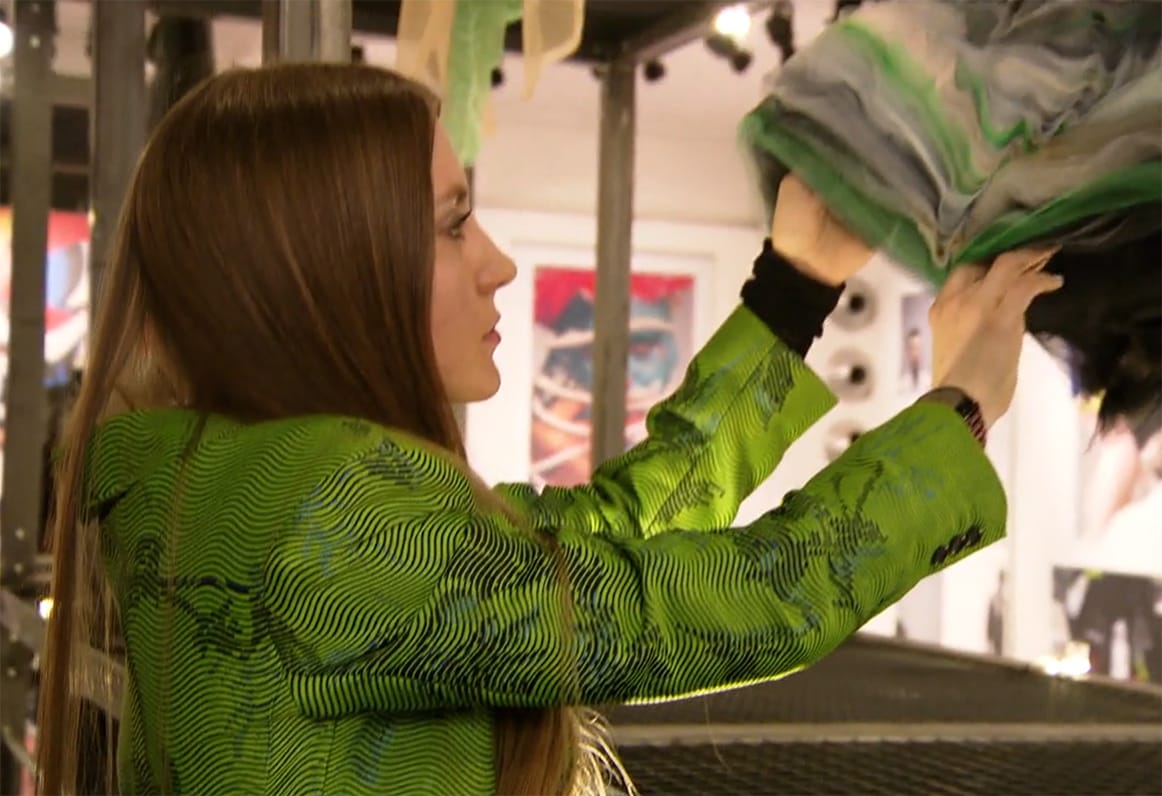
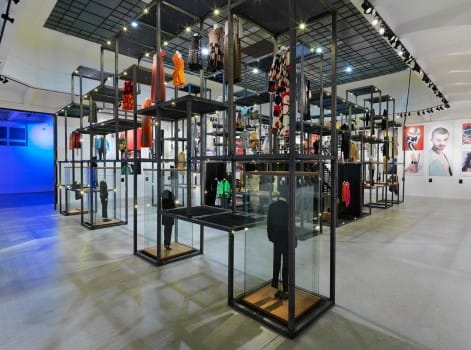
Flora Miranda is part of the documentary show on Austrian fashion since 1980, at MAK Vienna.
Contemporary fashion designed/made in Austria is the focus of the first comprehensive major exhibition on Austrian fashion design. A time travel through fashion design in all its facets from the 1980s until today shows the wide spectrum of designers who are from Austria, work here, or were educated here in fashion. Embedded into a spectacular, spatial installation by architect Gregor Eichinger, SHOW OFF: Austrian Fashion Design makes the artistic work of creative disciplines tangible on multiple levels in the context of fashion.
Fashion as an object in the form of an item of clothing is presented by significant fashion statements by approximately 60 designers from the past four decades.
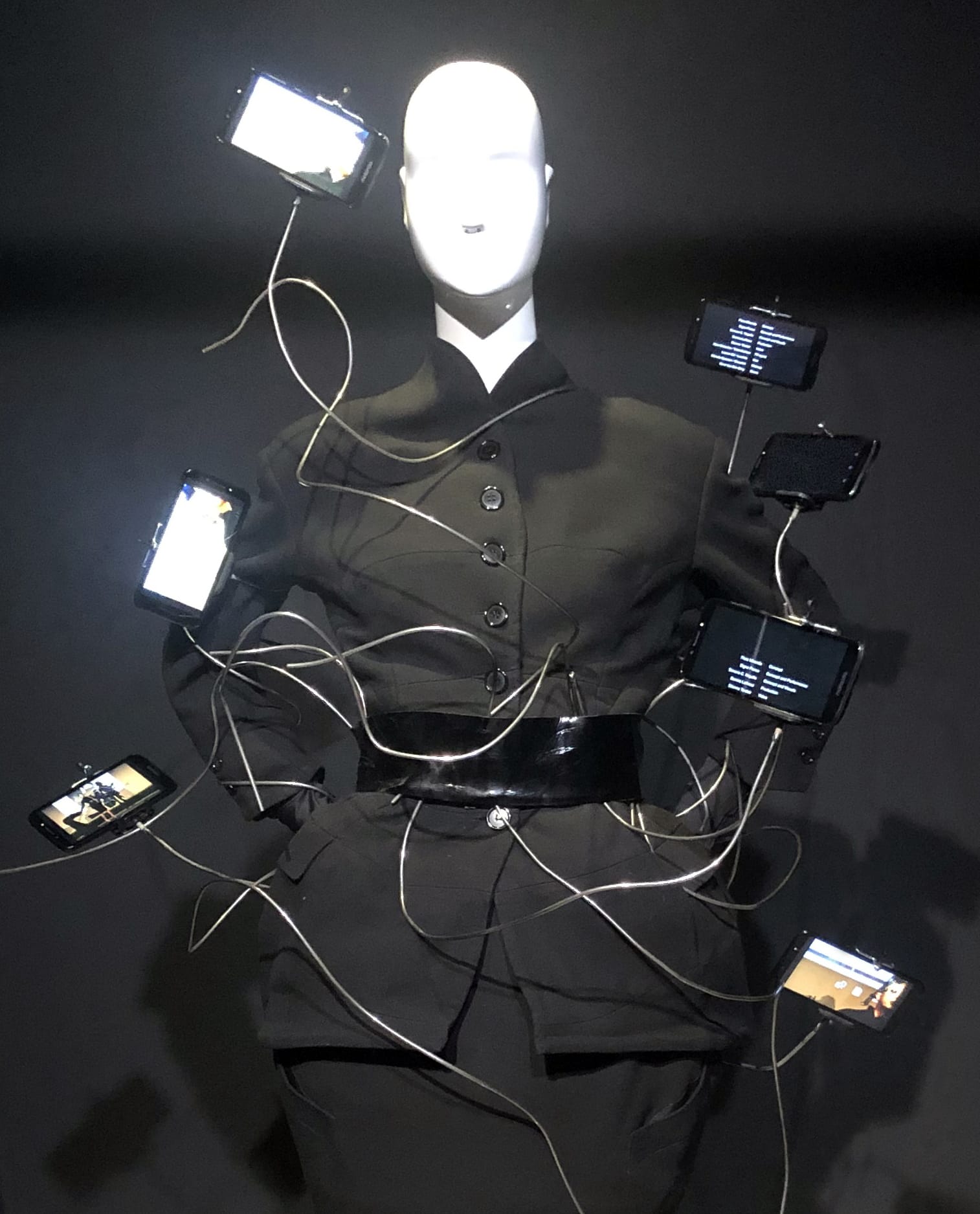
The Flora Miranda “Digital Rosebush Dress”, created for Signe Pierce is exhibited at HeK Basel.
The ‘Digital Rosebush Dress’ is a skirt suit tailored from wool, exaggerating the female body attributes. Around the body a metal rosebush featuring 10 Motorola smartphones is swirling its way, selfie-recording the wearer from all viewpoints.
The exhibition “Making FASHION Sense” explores technology as a transformative tool for artists, designers, as well as for the wearers of clothing, generating a reinvention of fashion systems. While hyperfunctional materials already monitor our biometric data in everyday life and sports activities, this exhibition showcases artists and designers who develop experimental augmented fashion objects, investigating new perceptions of our environment and human interaction which make us think in new ways. Using new materiality, they create creative fashion processes which stimulate the human senses, perceivethe wearers and their surroundings, change our perspectives, and make sense in the current geopolitical context.
Experiencing fashion ranges from spiritual solace to discomfort. Garments can enforce uniformity or foster artistic expression. How do programmable garments express our bodies? Can fashion technology reorient not only our gestures, our wellbeing, our experience of others, but also our creative perspectives? Can fashion shelter us from others, from a dystopian future, or is it distorting the collective notions of ourselves?
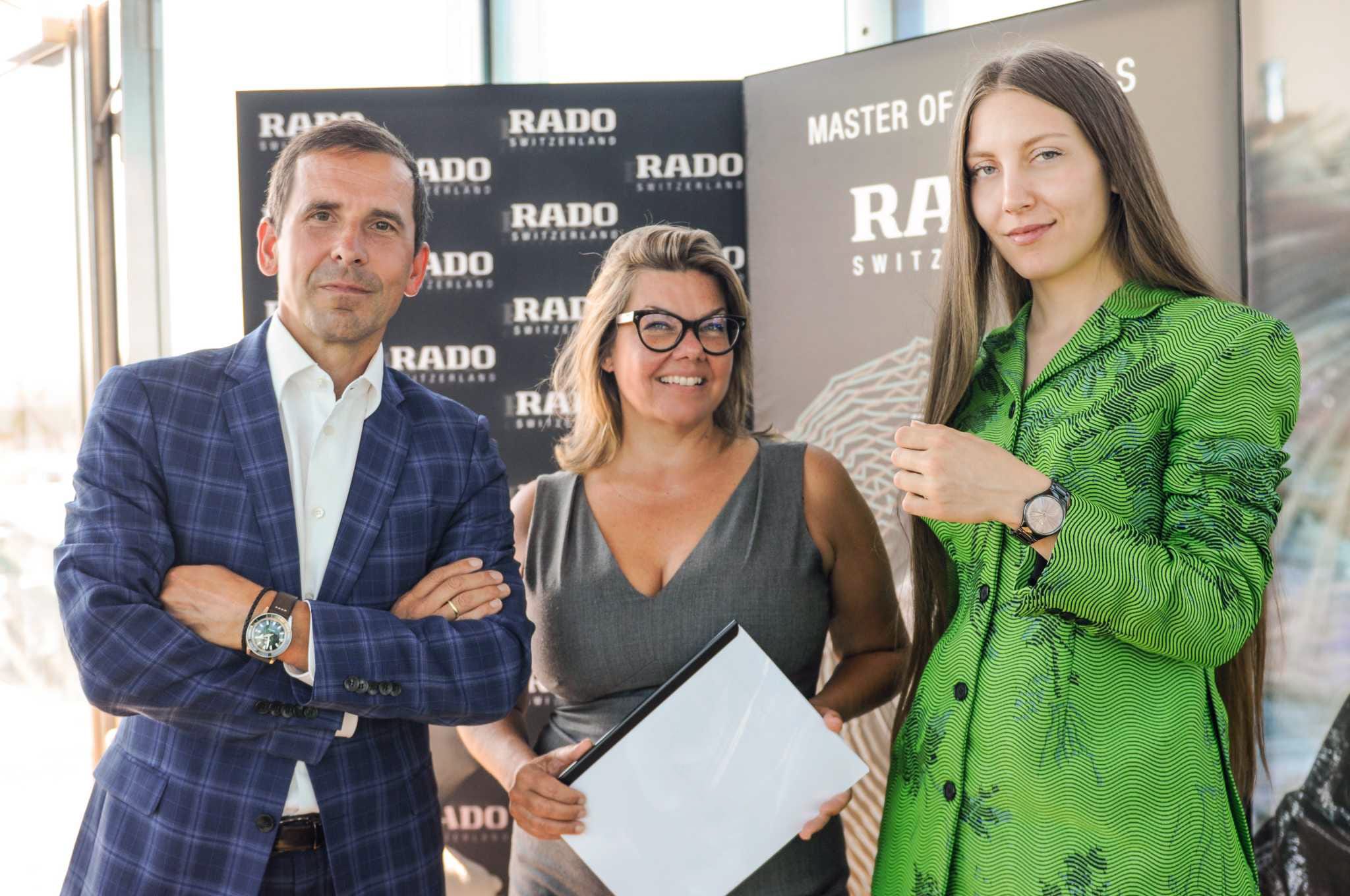
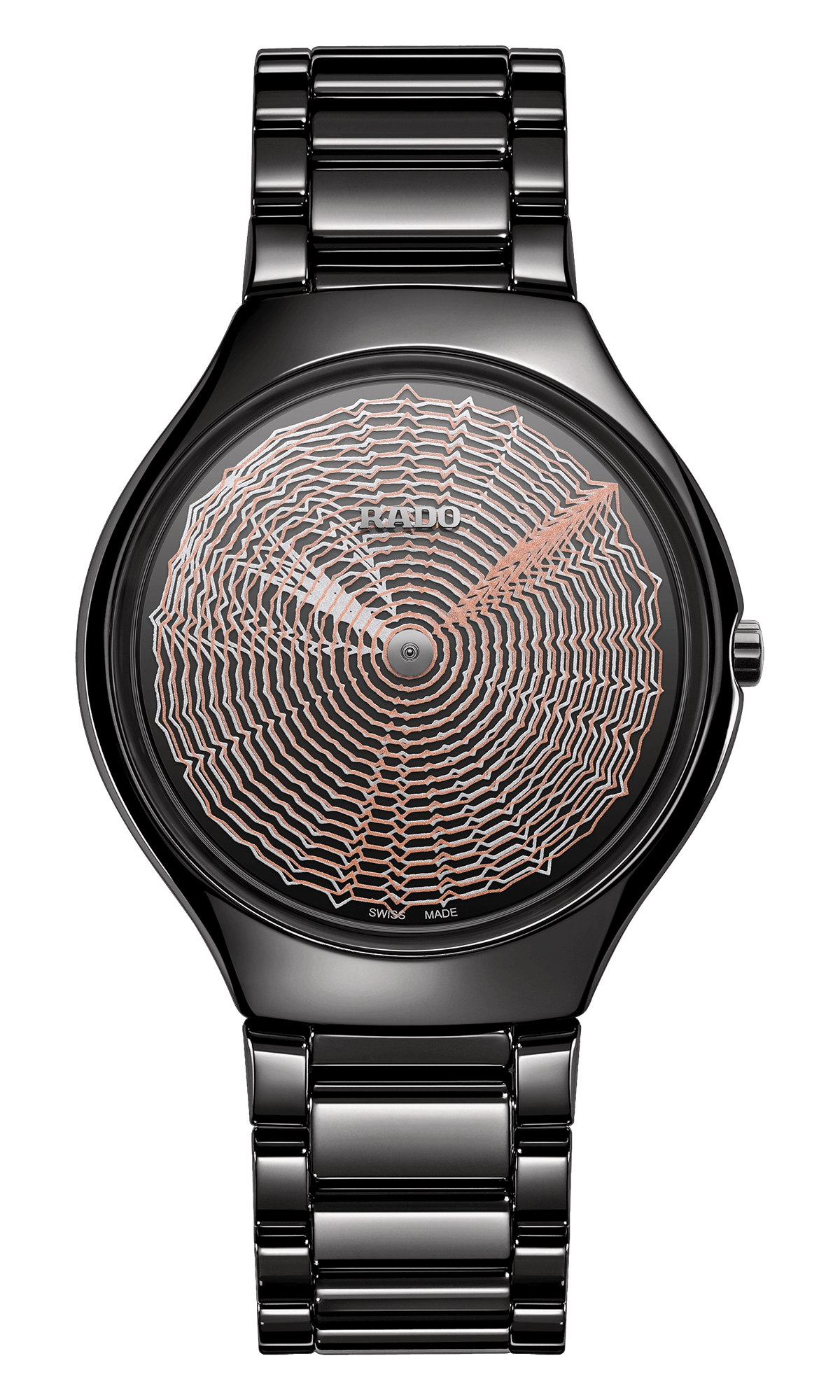
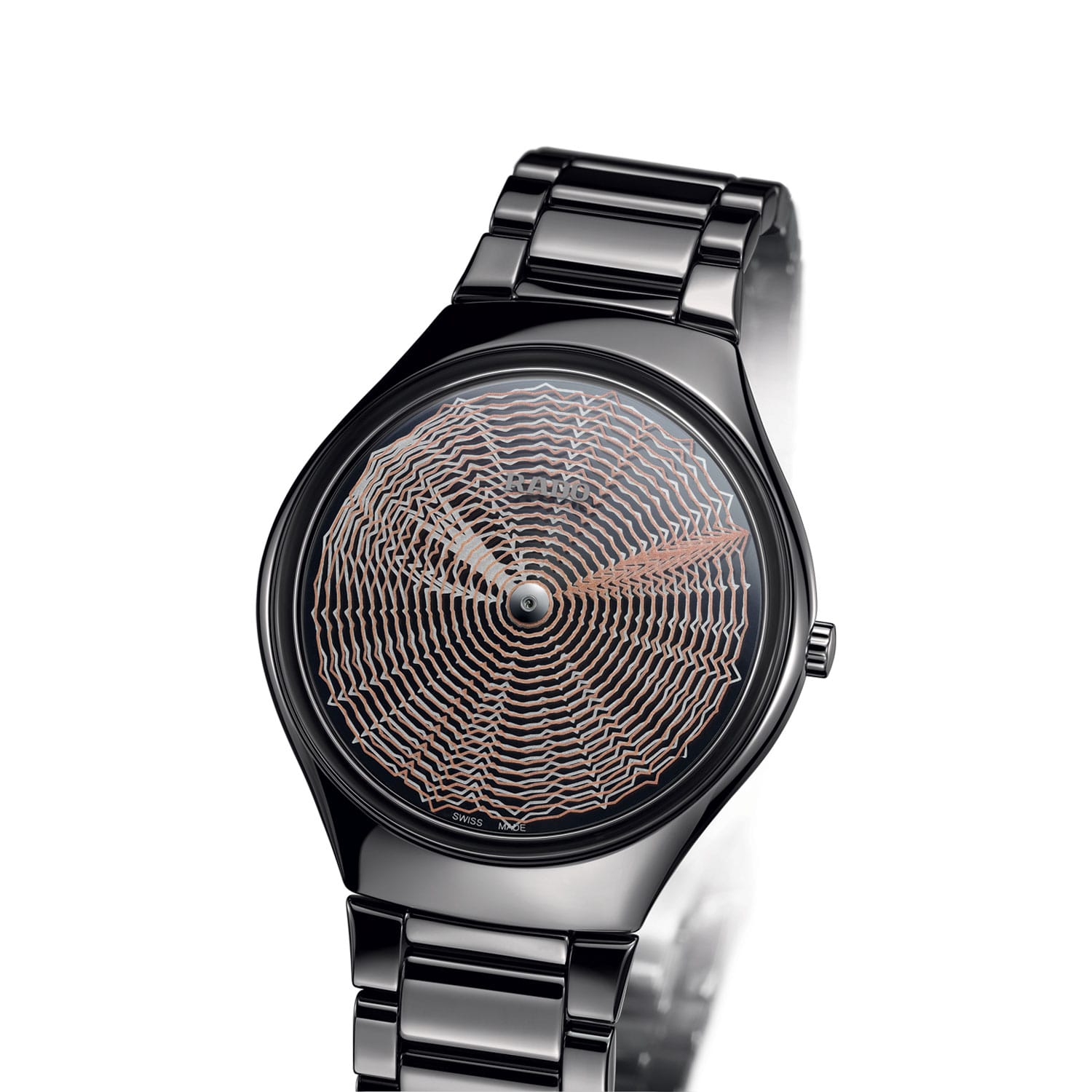
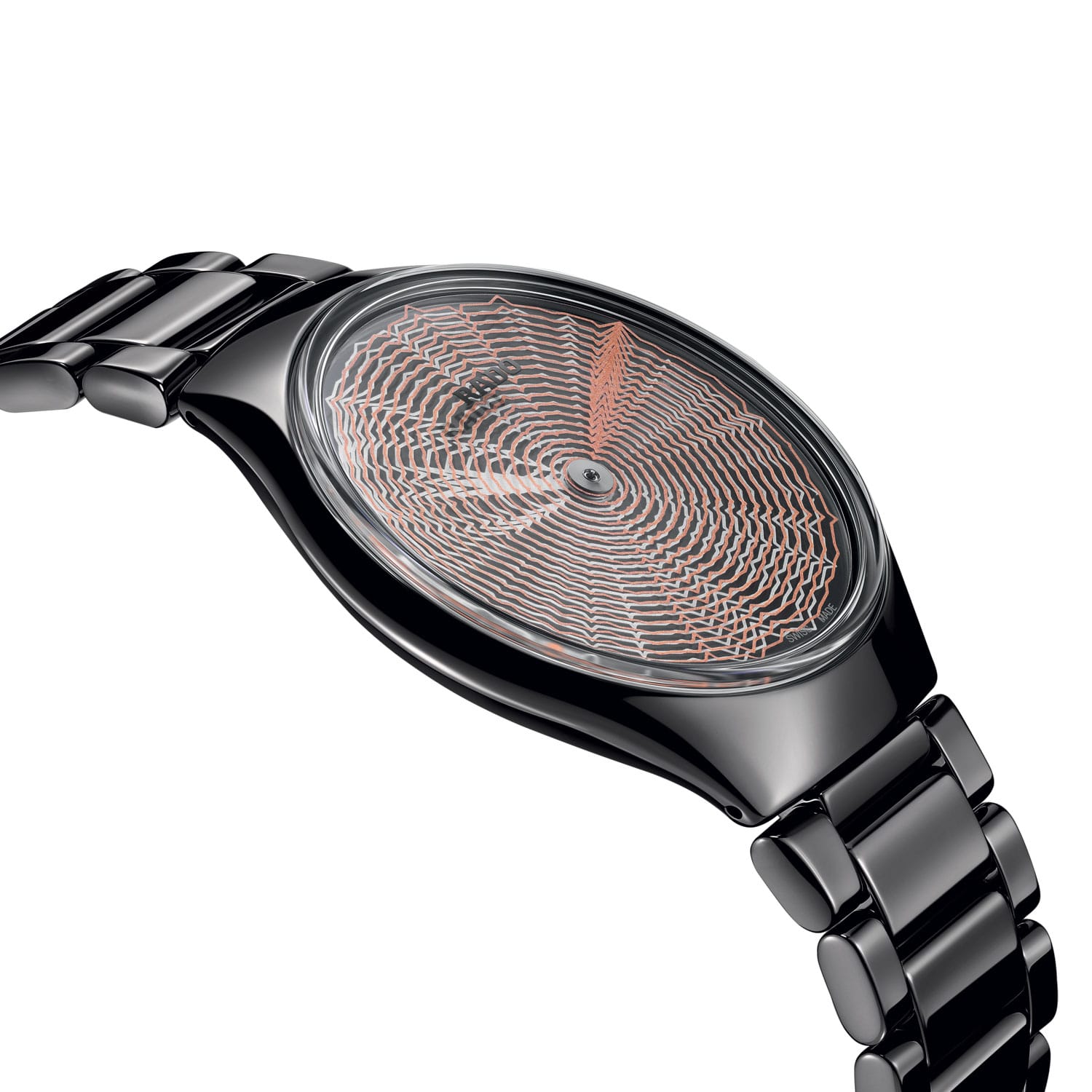
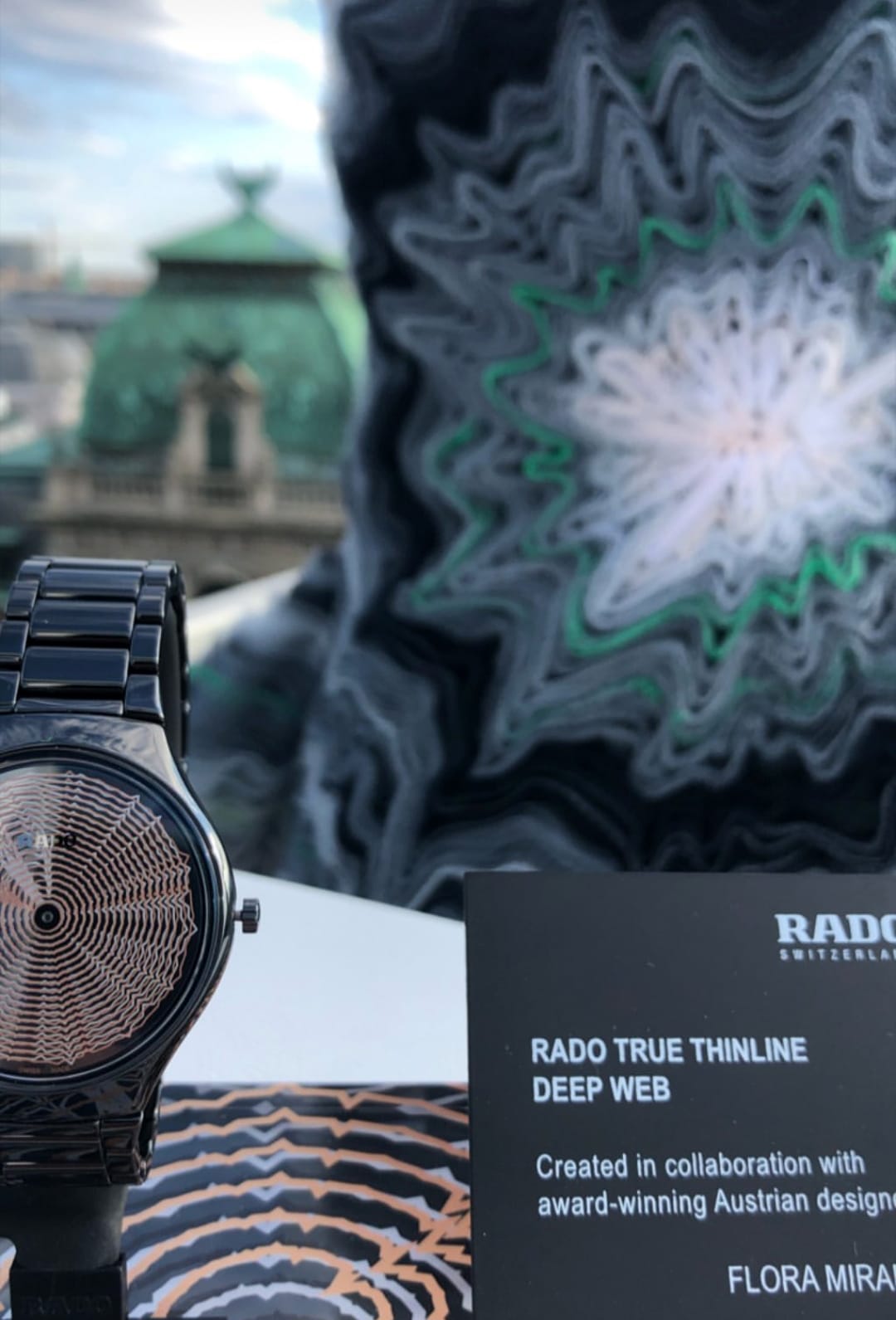
Flora Miranda and Rado win a ‘Good Design Award’ for the ‘Deep Web’ watch.
We are honored to share with you that we received the prestigious GOOD DESIGN Award from the Chicago Athenaeum Museum of Architecture and Design. This year’s prize was awarded to the True Thinline Deep Web watch we designed in collaboration with Rado. This is the oldest global awards programme for design excellence and innovation. The True Thinline Deep Web was recognised in this year’s awards in the ‘Personal’ category. Awards are presented for “the most innovative and cutting-edge industrial, product and graphic designs produced around the world.”
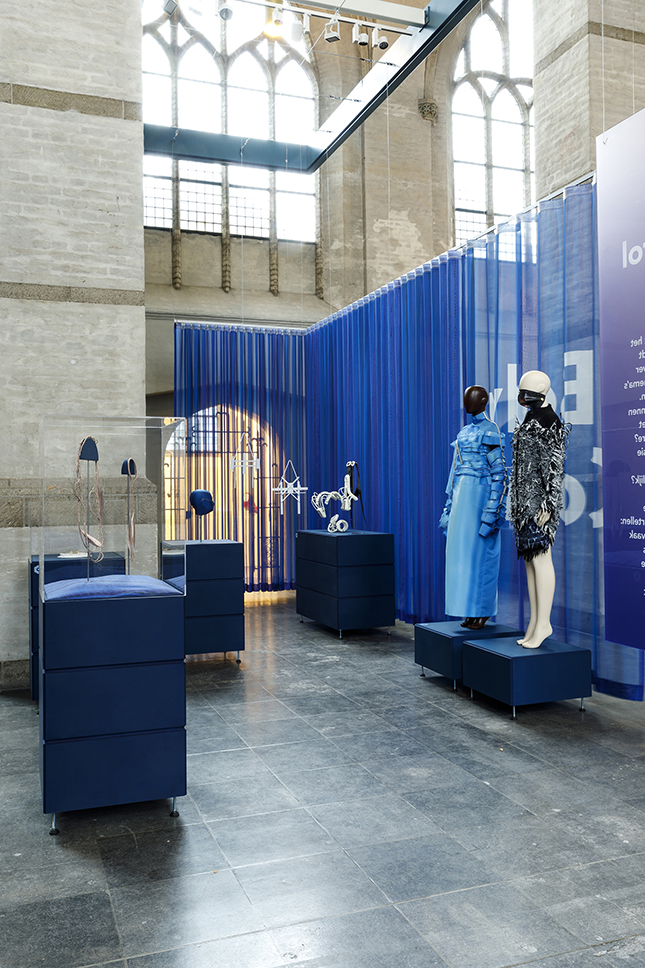
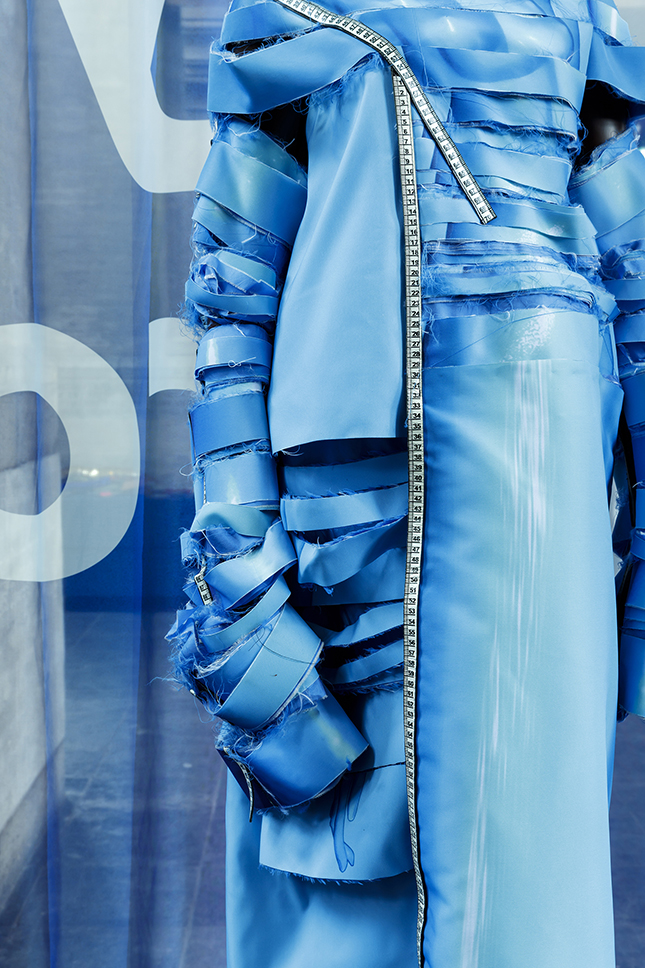
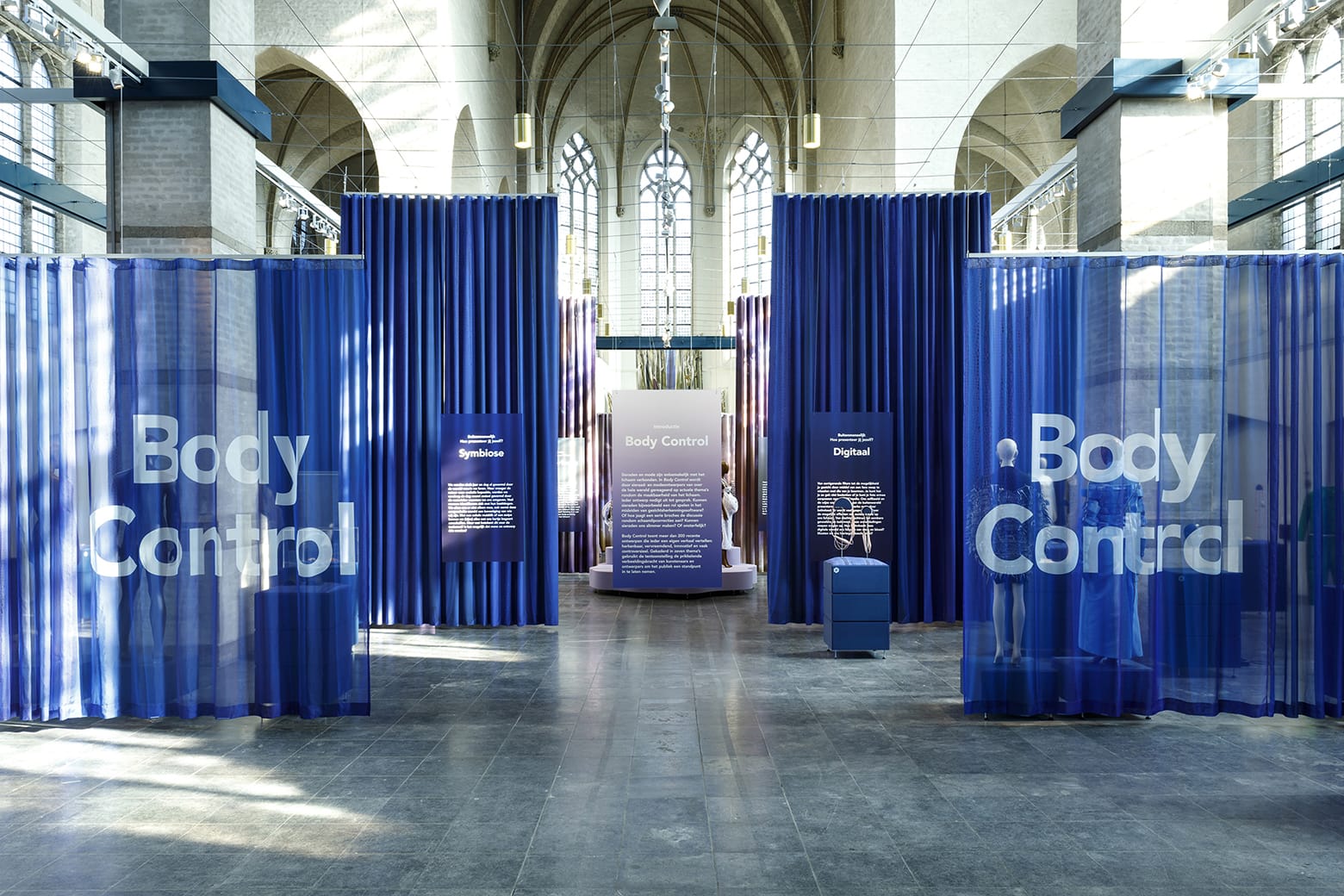
The Flora Miranda “Stardust Dress” and “React Outfit” are exhibited at Museum Arnhem.
Body Control shows a large selection of objects, jewelry, clothing and installations. Frameed in three main themes - Human, Extra-Human and Superhuman - the exhibition uses the stimulating imagination of artists and designers to allow the public to take a position on current themes. Can jewelry play a role in misleading facial recognition software? Or how does a series of objects stimulate the discussion about labia corrections? Can jewelry make us smarter? Or immortal?
Body Control shows a wide variety of designs. There are designers who protect the body with their works, others see the body as divine, others respond to the feasible ideal image. There are also designers who use the body as material or, on the contrary, literally cross the body boundary and create an interaction between body and design.
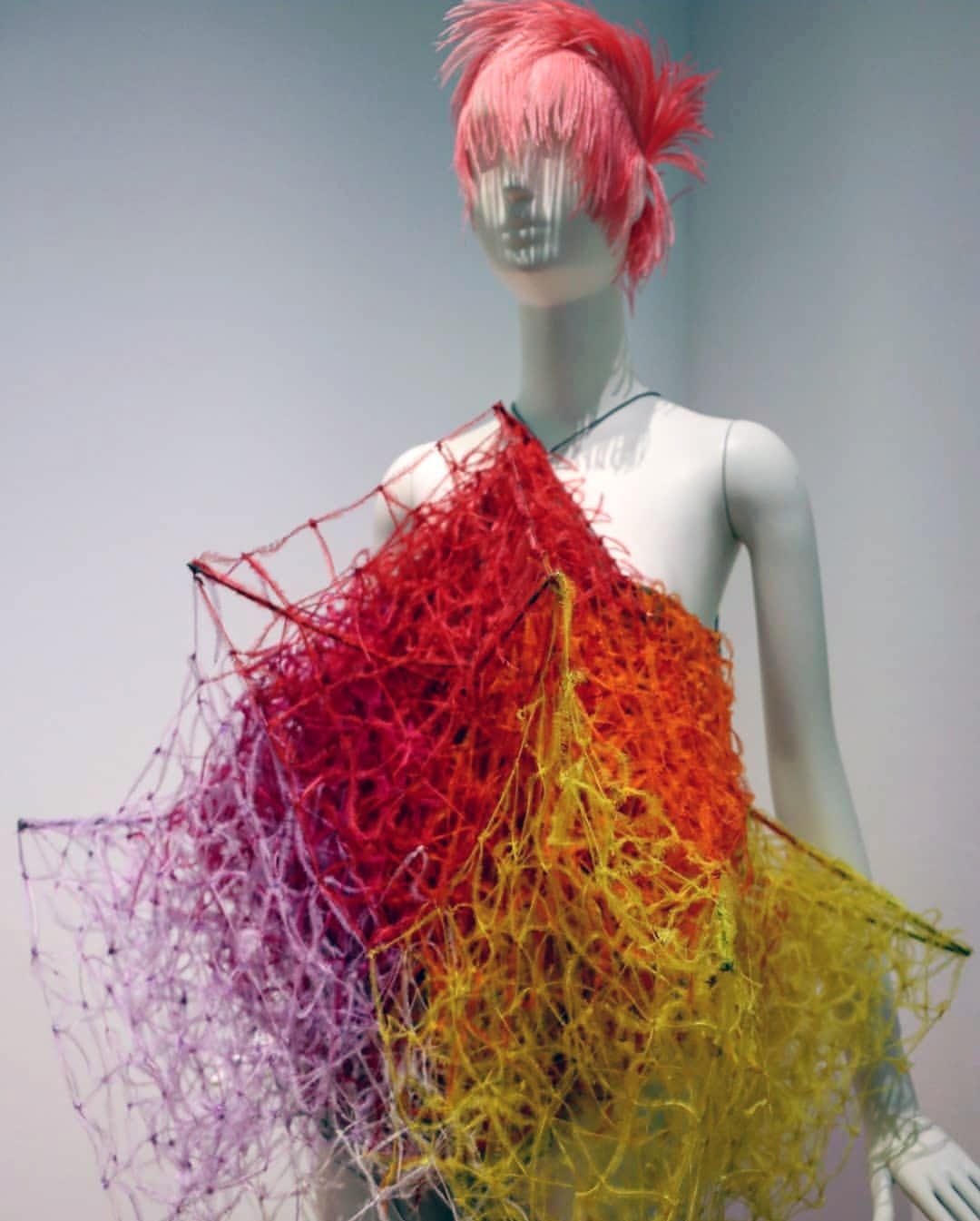
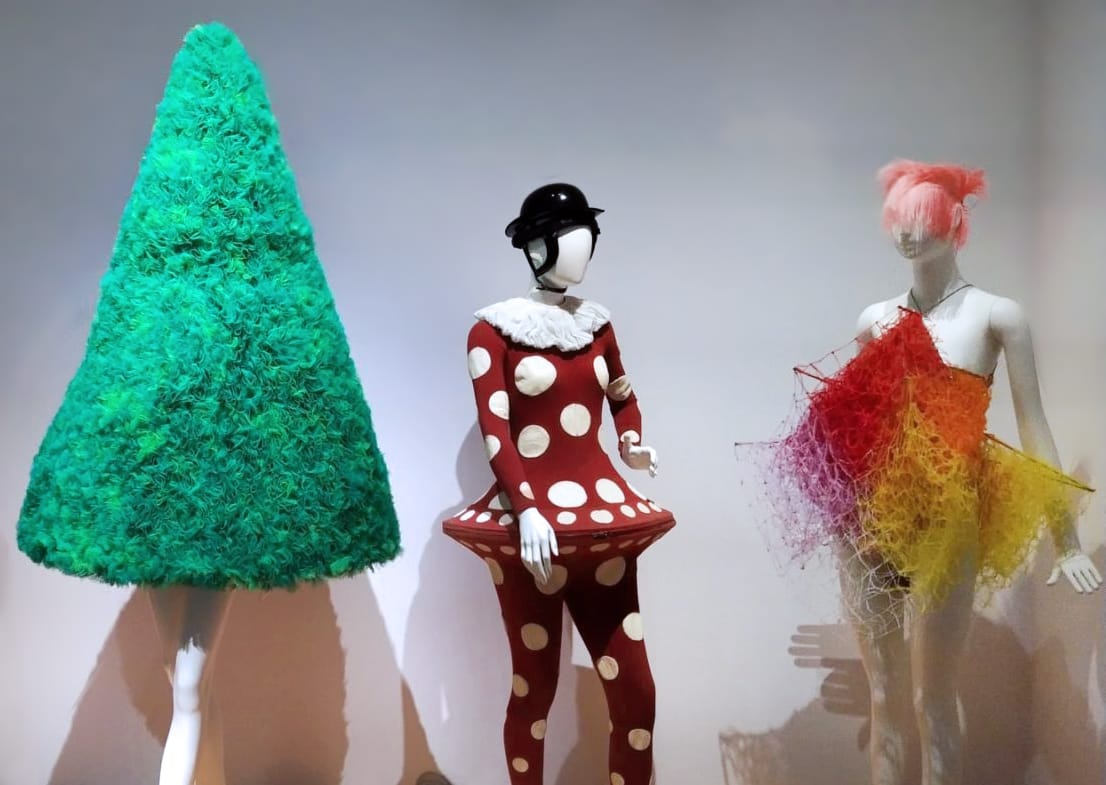
The Flora Miranda “Red Diffusive Light Dress” is exhibited at Kunstmuseum Den Haag.
Dancers are increasingly being used as models. Like fashion, dance is about movement, freedom and beauty. The influence of dance can also be seen away from the catwalk. The charleston, the jive, disco and house not only get us on our feet, they also affect what we wear. Subcultures like hiphop have changed the face of fashion for good. The Let’s Dance! fashion exhibition explores this unique relationship between fashion and dance. Besides professional dance costumes, influential costumes from dance films, and clothes to dance in, it also features designs produced for ballet companies by well-known couturiers.
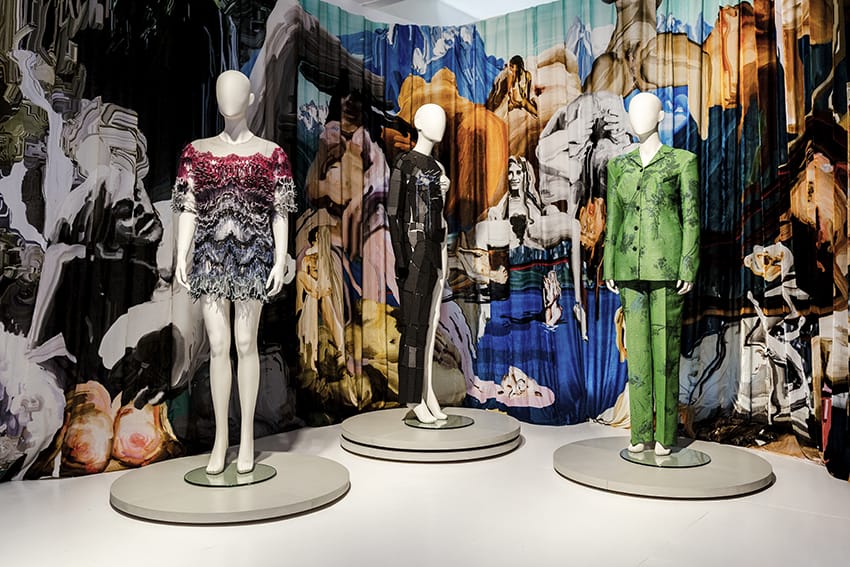
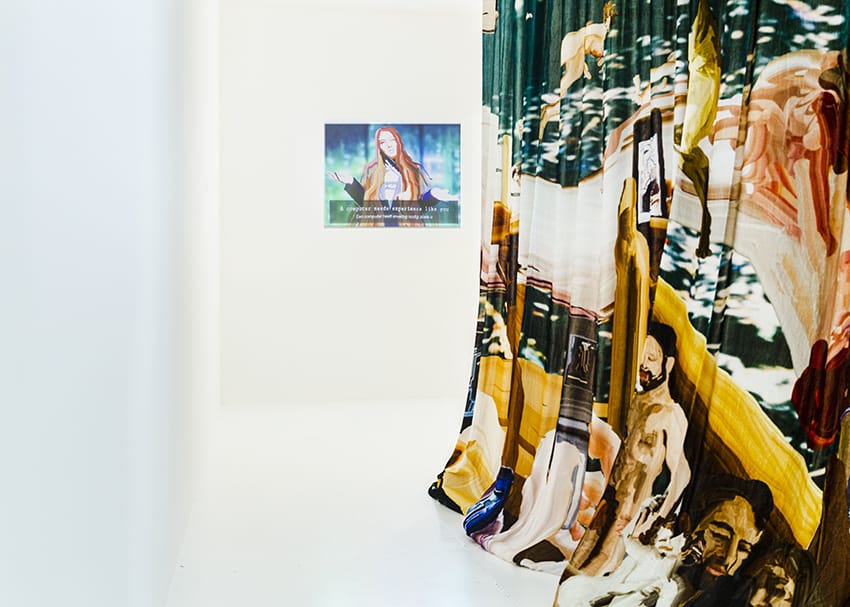
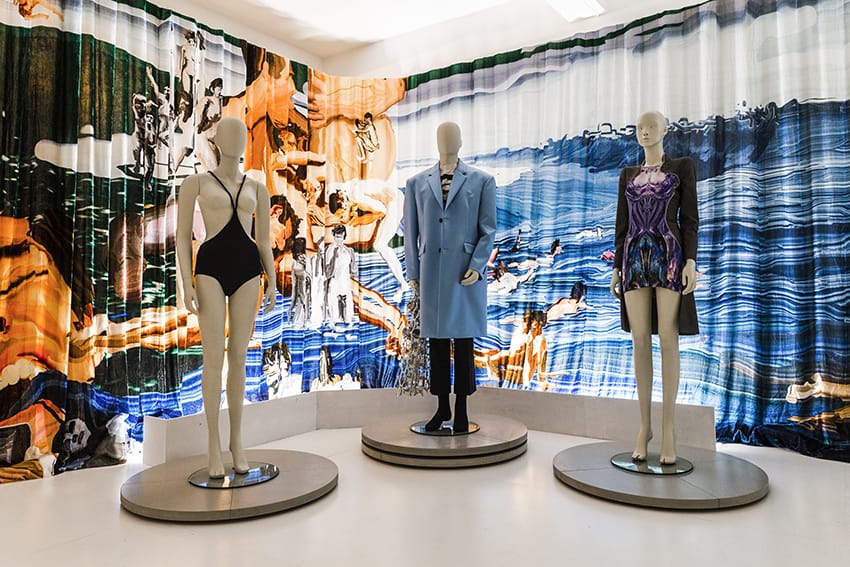
Flora Miranda presents her ‘sexy AI’ research.
Z33 guides and exhibits Flora Miranda’s AI research. With special thanks to Modemuseum Hasselt.
“Miranda designed a system whereby the computer can itself design items of clothing. Miranda created a database of fifty 3D scanned silhouettes that the software can use. The computer can thus design new items of clothing based on various elements from archived pieces. Miranda chose the theme of eroticism because fashion is primarily about sexual attractiveness – either directly or indirectly.
Using elements from fifty items of clothing, the number of possible combinations is relatively extensive. Nevertheless, there is always a chance that digitally designed clothing is very ugly, but this is a risk that Miranda is willing to take. After all, it is all about experimentation. The intention is to create databases of millions of items of clothing so that the computer can combine almost every possible form, colour or material. Her ultimate goal is to create artificial intelligence that can create fashion completely independently. Call it ‘computer generated fashion’.
According to Miranda, these kinds of automated systems in no way threaten human creativity. The human interventions and contributions are simply shifted from designing to programming. Miranda is convinced that both disciplines ultimately have a great deal in common. Designing is likewise a process that requires concerted and systematic planning. Just like in programming, every creative process is characterized by fixed stages. Moreover, writing code can be very creative work. After all, it is writing in order to create.
Although the computer calculates and constructs, humans continue to determine the contours within which the computer can do so. Humans direct the computer. This method is in fact very similar to the modus operandi of the contemporary ‘creative director’ — the coordinator of a design department. He or she determines the direction but does not develop anything personally; that is what the employees do. The director then checks the assistants’ output and corrects it where necessary. The director separates the wheat from the chaff and determines the definitive result.
Miranda aims to shape the future. But it will most probably be digital. Each new project and each new collection bring us one step closer to the complete automation of fashion. On the other hand, she is very conscious of the fact that many people fear these kinds of systems, which lack any human spontaneity. What about artistic freedom? That too shifts to the domain of programming, where it is completely retained.”


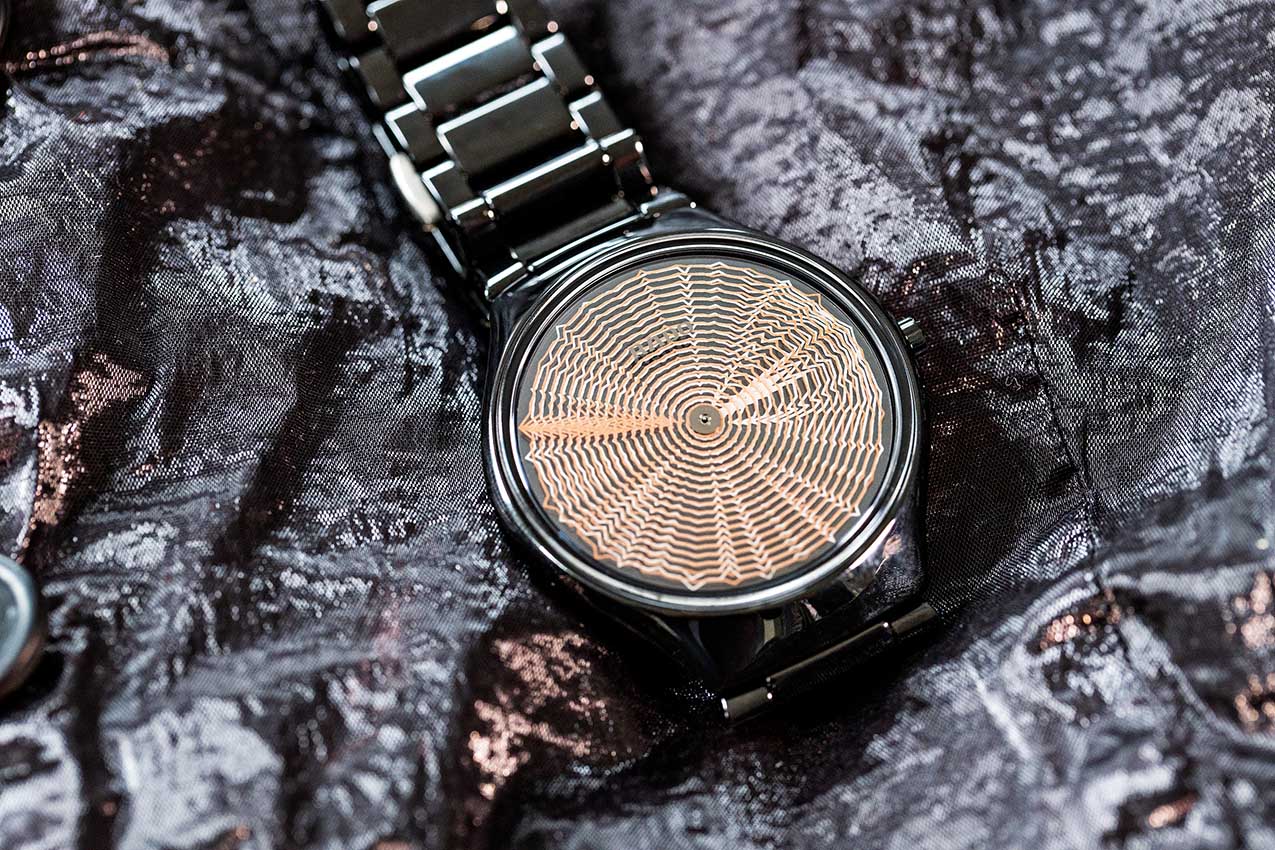
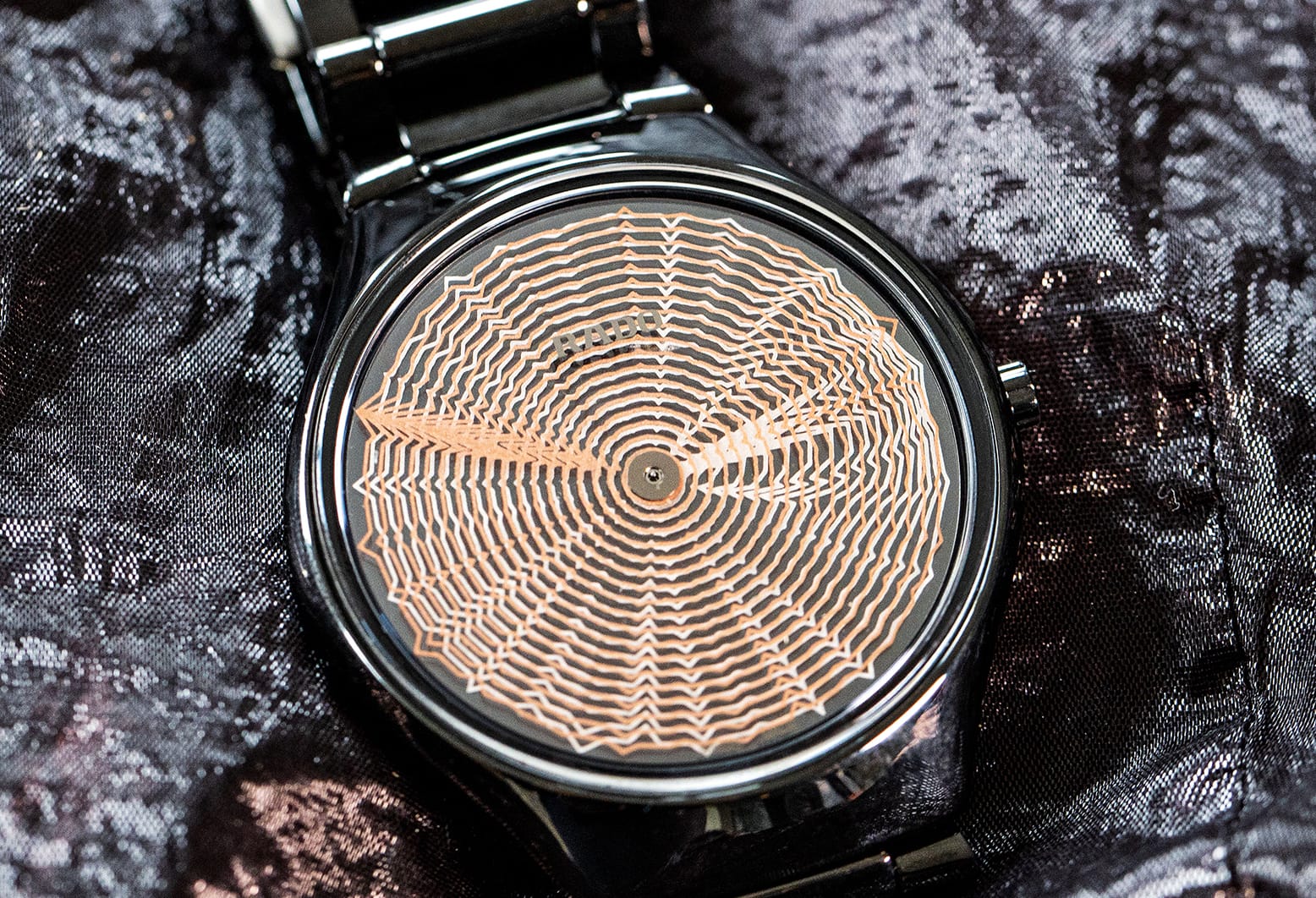
Flora Miranda designs limited edition ‘Deep Web’ watch for Rado
In May 2019, Rado and Flora Miranda launch their cooperation on the delicate high tech porcelain watch, produced in a limited edition of 1001 pieces world wide.
“Experimenting together with the produciton team of Rado we came up with a graphical solution which uses two polycarbonate discs filling the space of the case. The two discs, powered by an automatic movement, are layered on top of each other, and the show the time by having a three-dimensional pattern each, one with a defined hour zone and the other one with a minute zone. However, since they are transparent and constantly move at different speeds, they are constantly changing - but the ‘focus in the complexity’ is there, so that you can read the time.”
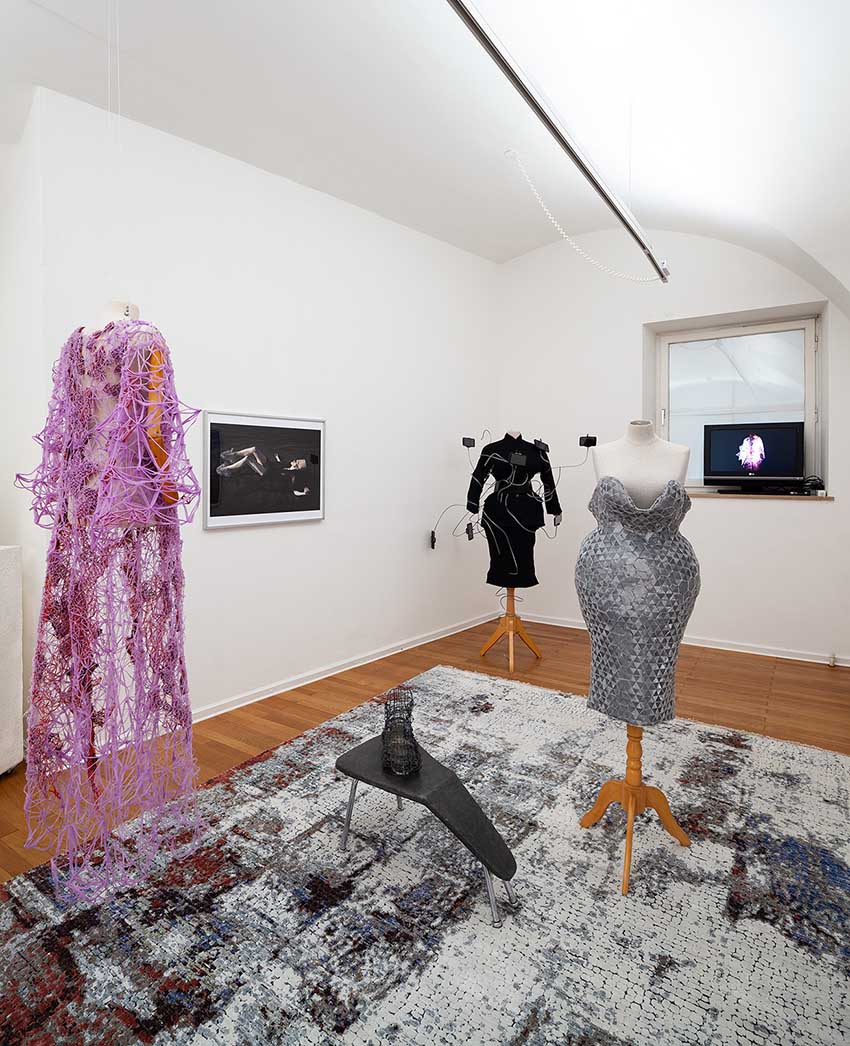
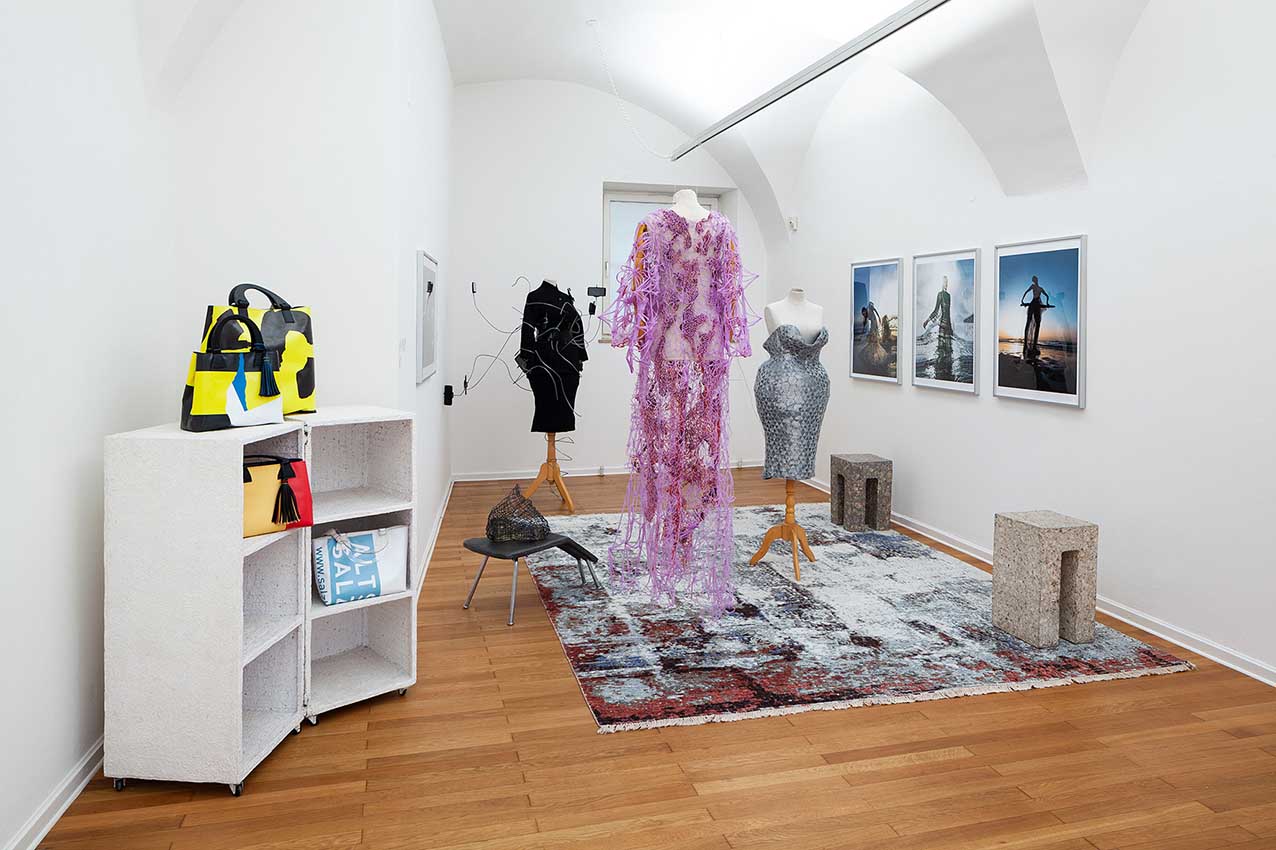

Flora Miranda exhibits dresses at Traklhaus Salzburg.
Numerous artists from Salzburg present furniture and design objects as well as fashion in comparison to international positions in the exhibition. In addition to role models and classics, the focus is on works by young, local designers. On display are, among other things, light and light objects, multifunctional seating made from a wide variety of materials as well as unusual carpets.
As part of the second Salzburg Design Days (April 25-27, 2019), the focus will be on fashion unique pieces by young Salzburg fashion designers: a skirt fresh from the 3D printer or a dress that also serves as a projection surface. The designer Carla Degenhardt presents her interpretation of integration with the “Dirndl Burka”; a garment designed for both women and men. For international comparison, creations by fashion icon Vivienne Westwood are exhibited.



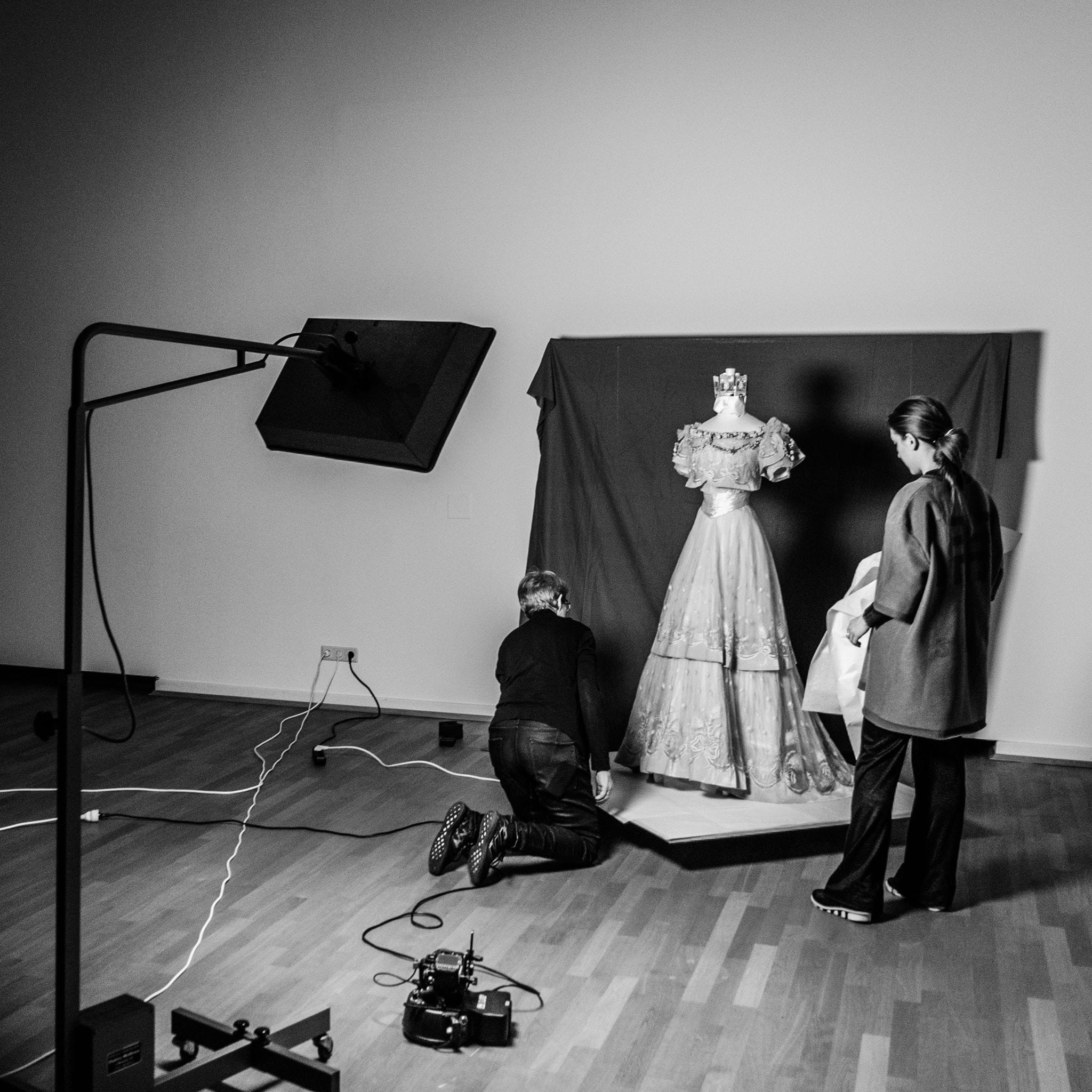
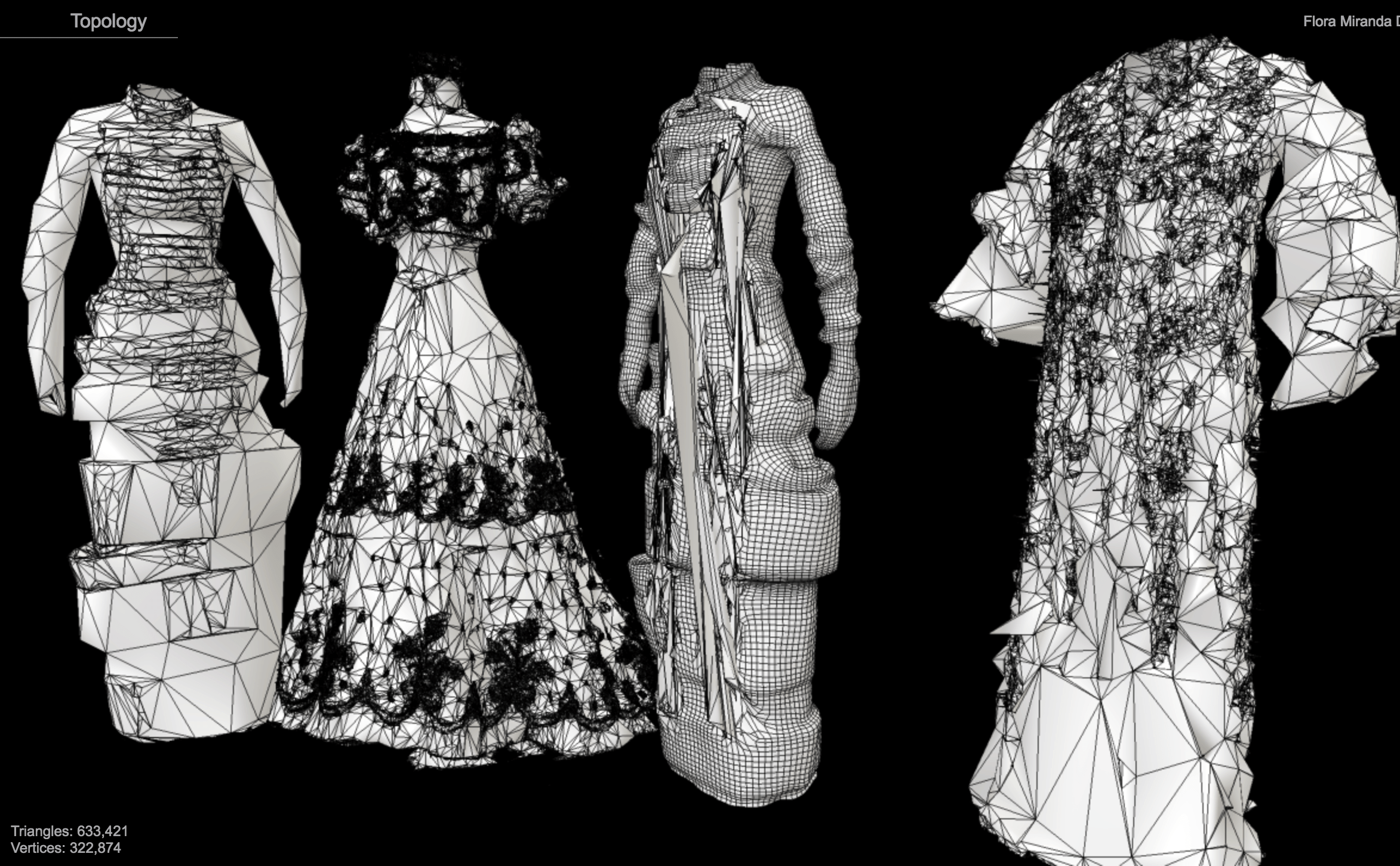
Flora Miranda wins the Justus Brinckmann Support Award.
For the first time, the Justis Brinckmann support awar was given to a fashion designer. With the collection ‘Ready To Die’, Flora Miranda could fascinate the jury and show a future for fashion design. How can we digitise our world, and fabricate designs from the previously collected digital data?
Not only this progressive procedure, but also the crafty aspect of the project convinced the jury. An intricate mathematical buildup of the dresses is the guideline for the manual creation of the 3D silicone structure.
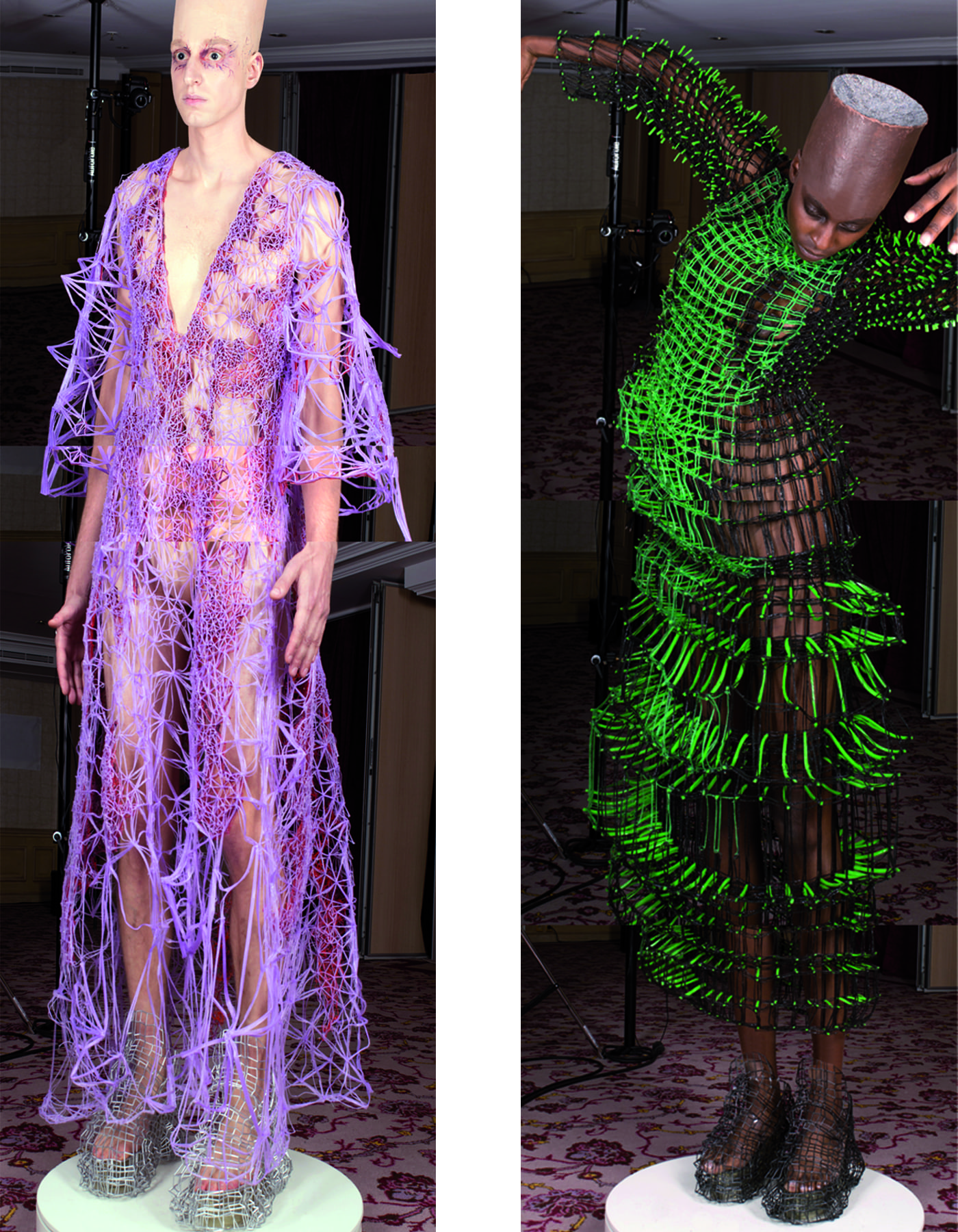
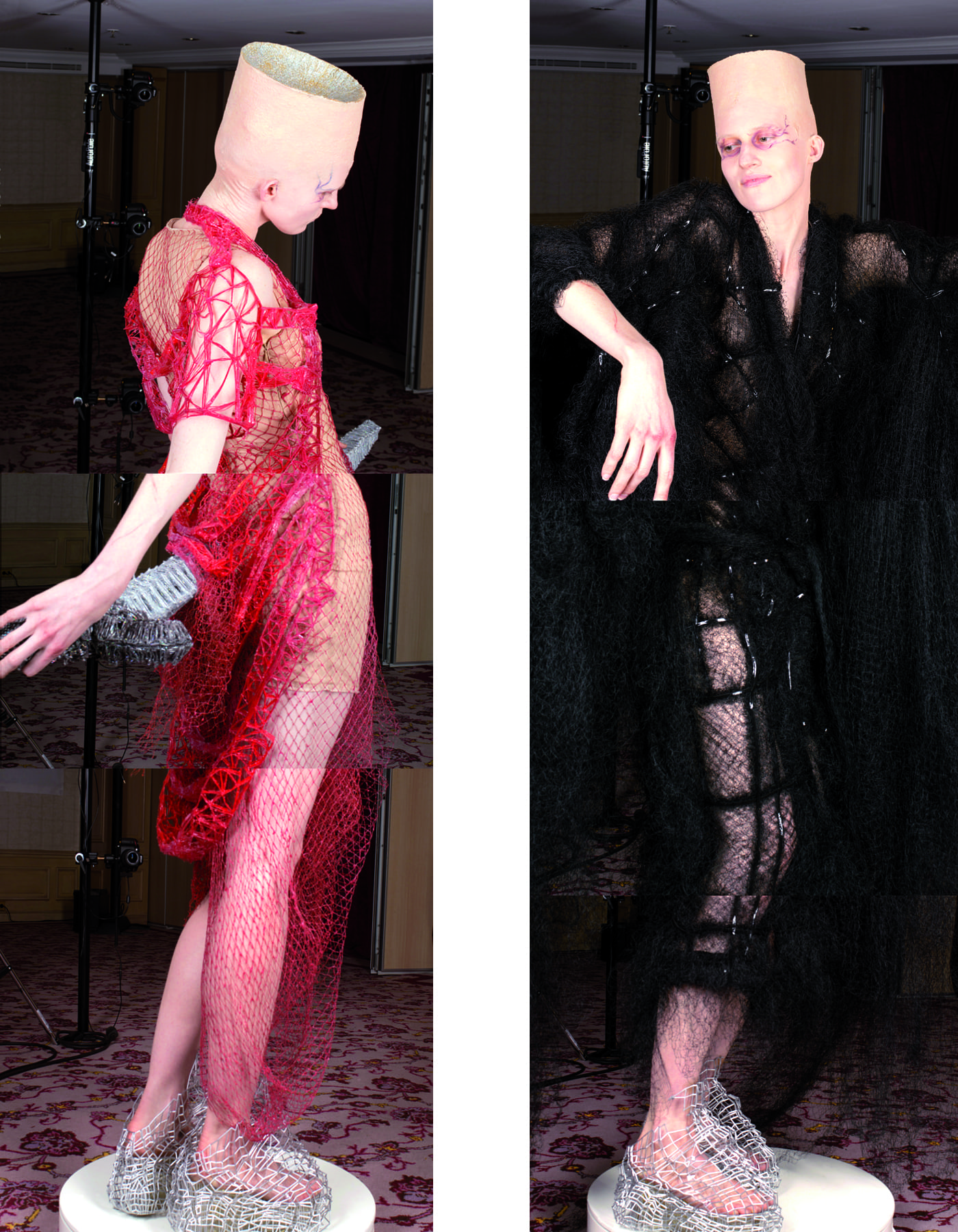
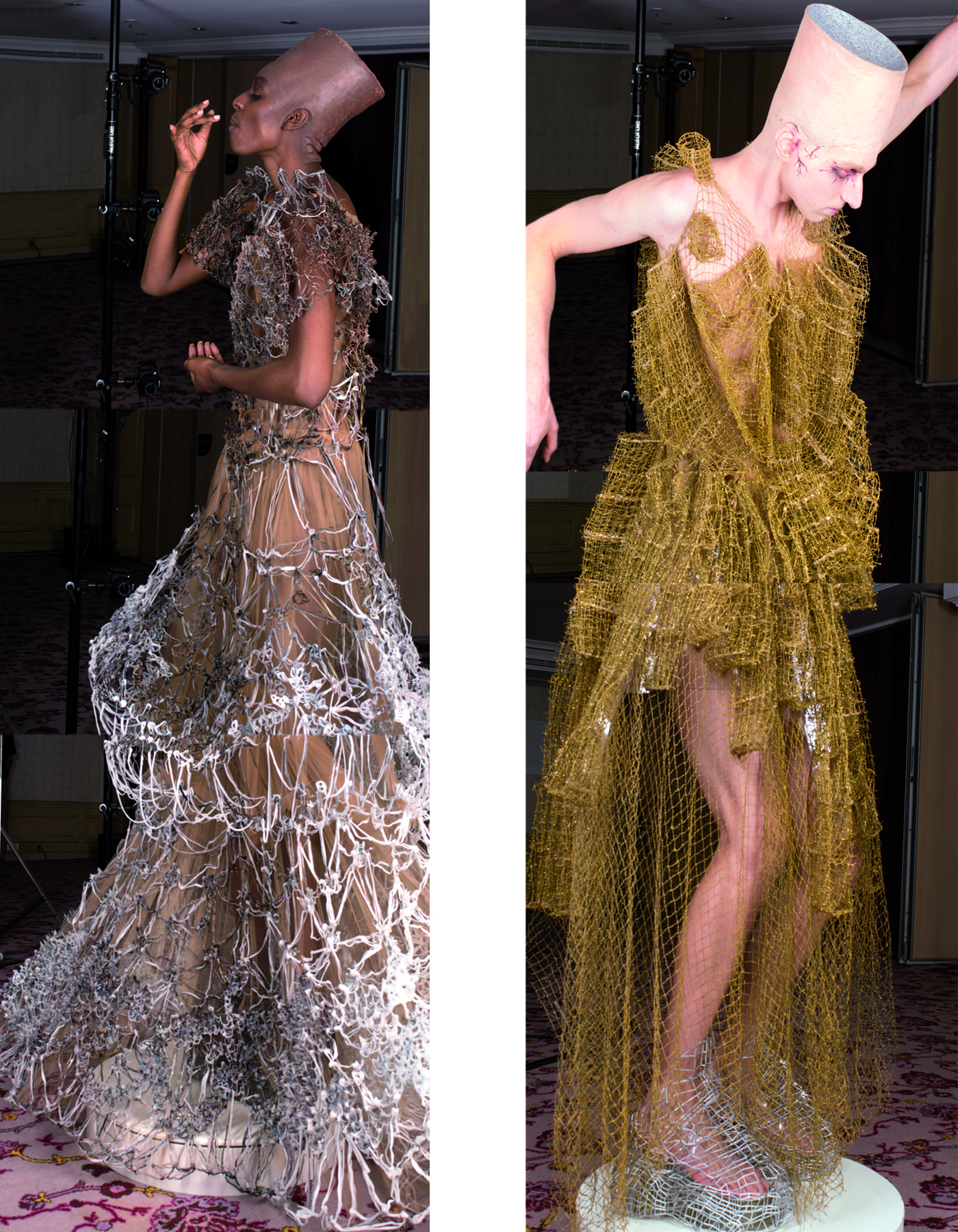
The Numerical Self: A Step Inside Flora Miranda Future Fashion
Thinking of the “Quantified Self“, nearly everyone in the western hemisphere knows what it is or at least has an idea of what it could be: self-optimisation and self-tracking have been around for quite a while, always pushing the border between “just getting more productive” and the total exposure of private data. The scientific discourse around this topic draws a picture of both excitement and panic – on the one side scholars suggest that self-tracking, such as counting steps, pushes users to a healthier behavior. Since the “Quantified Self Movement”, as it is called, is neither a general status of society nor a movement that affects every individual in every country, we must call it a “culture”, as Deborah Lupton, author of the book “The Quantified Self” (2016), suggests.
Read the full article written by Antonia Seierl on Digicult.
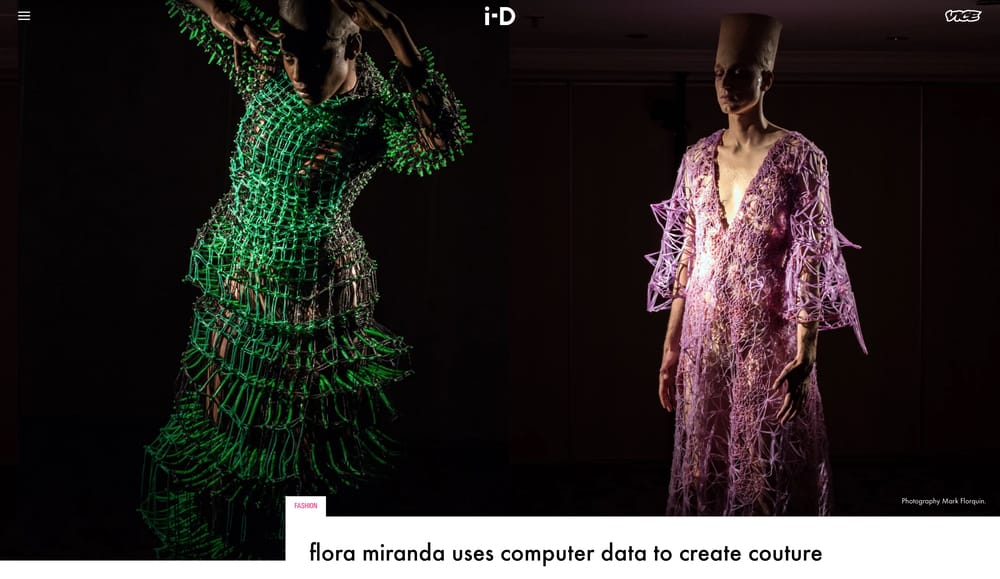
Flora Miranda uses computer data to create couture
In a dark room at a hotel not far from Place Vendome in Paris during Couture Week, a trio of models were wearing alien-looking gowns with otherworldly woven textures and graphic spikes. At first glance, one might think the dresses were 3D printed, but the emerging Austrian designer Flora Miranda’s executed them using a totally different concept. “This is completely threadwork,” said Miranda, while motioning to one of her sculptural, intricate 3D scanned dresses.
Read the full article written by Kristen Bateman on i-D Germany.
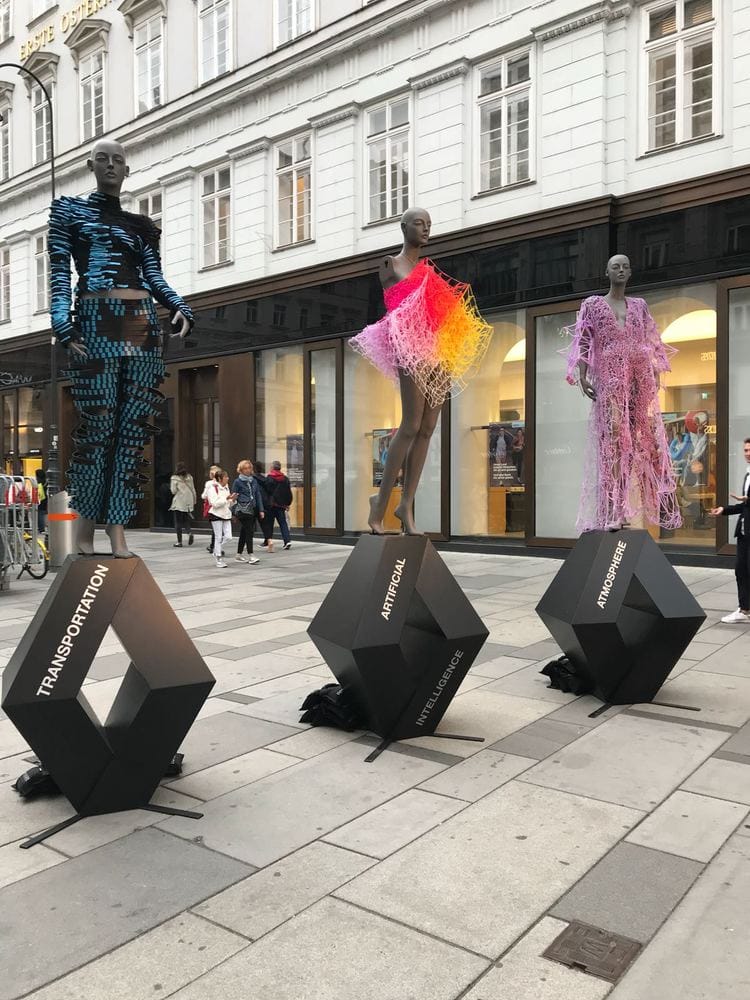
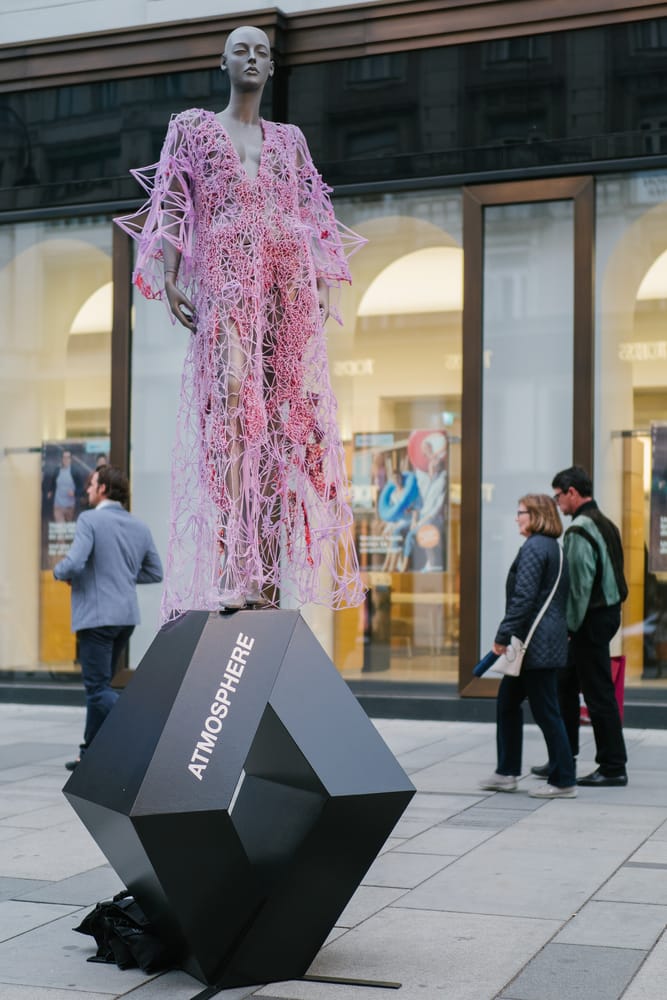
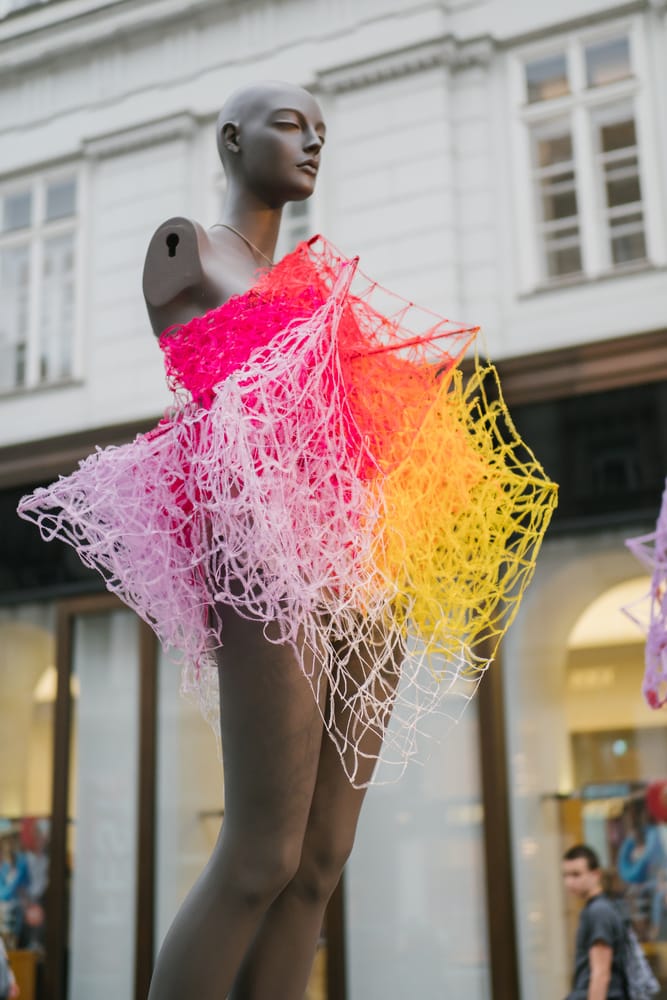
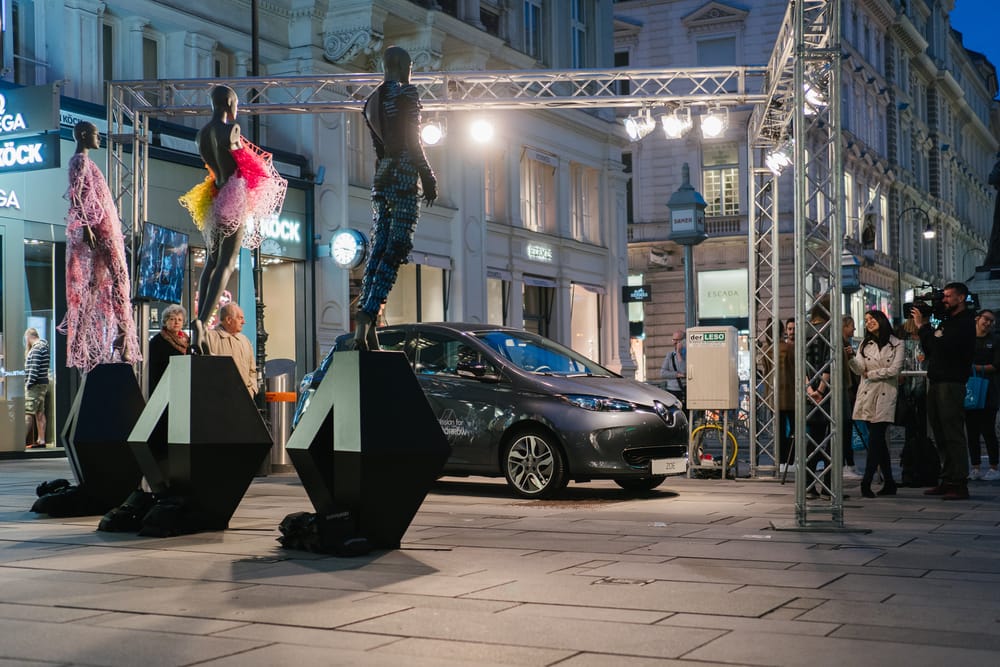
A cooperation between Renault and Flora Miranda.
A cooperation between Renault and Flora Miranda, introducing the electric vehicle Renault Zoe. Three Flora Miranda dresses are on display, visualizing the three pillars of the future “Transportation”, “Artificial Intelligence” and “Atmosphere”.
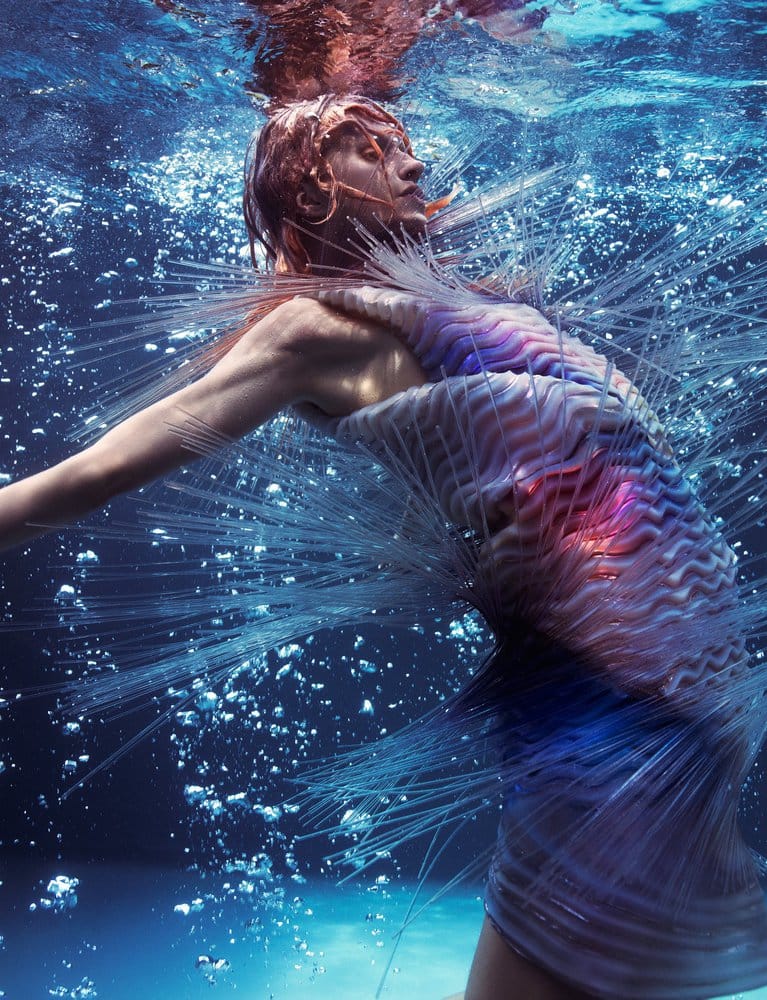
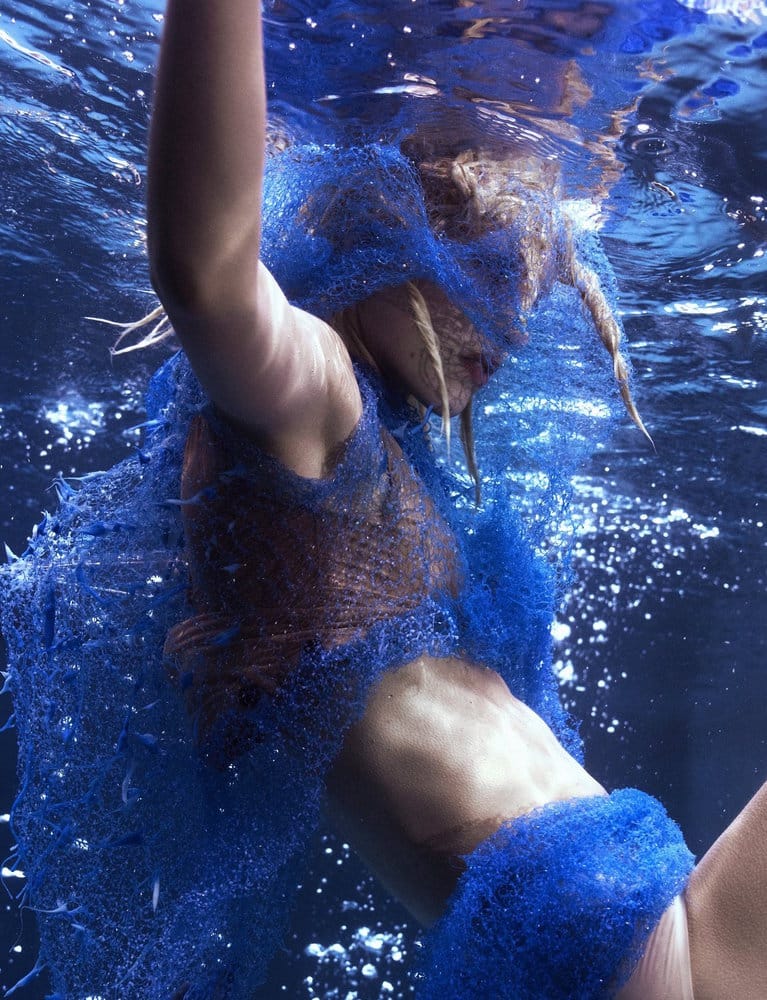
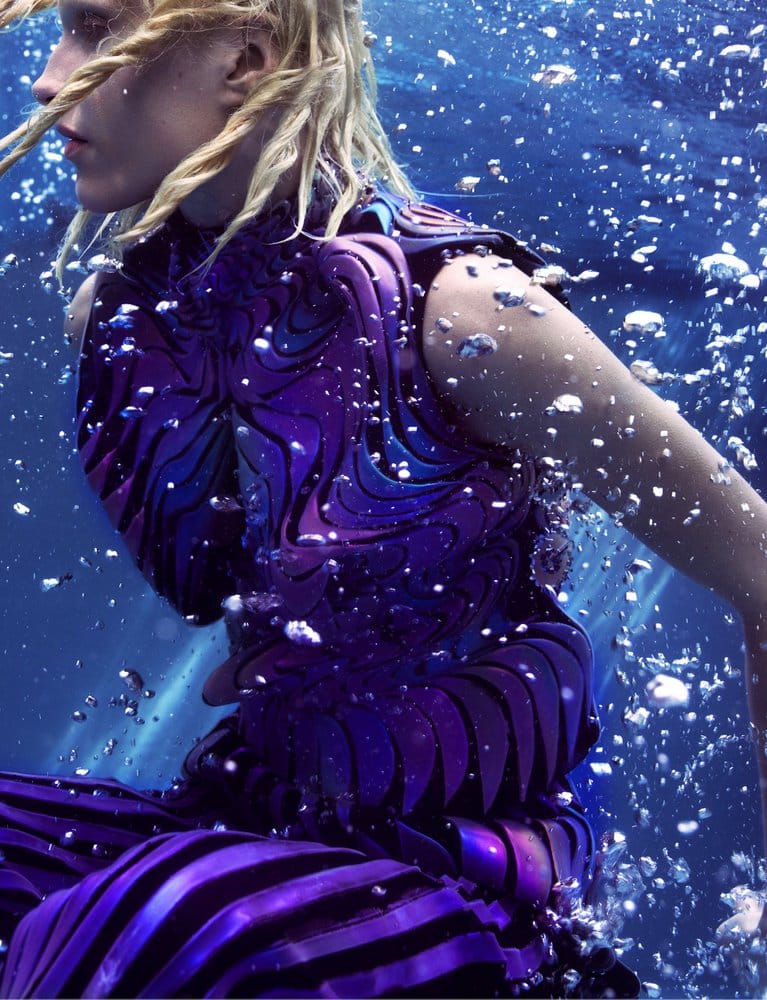
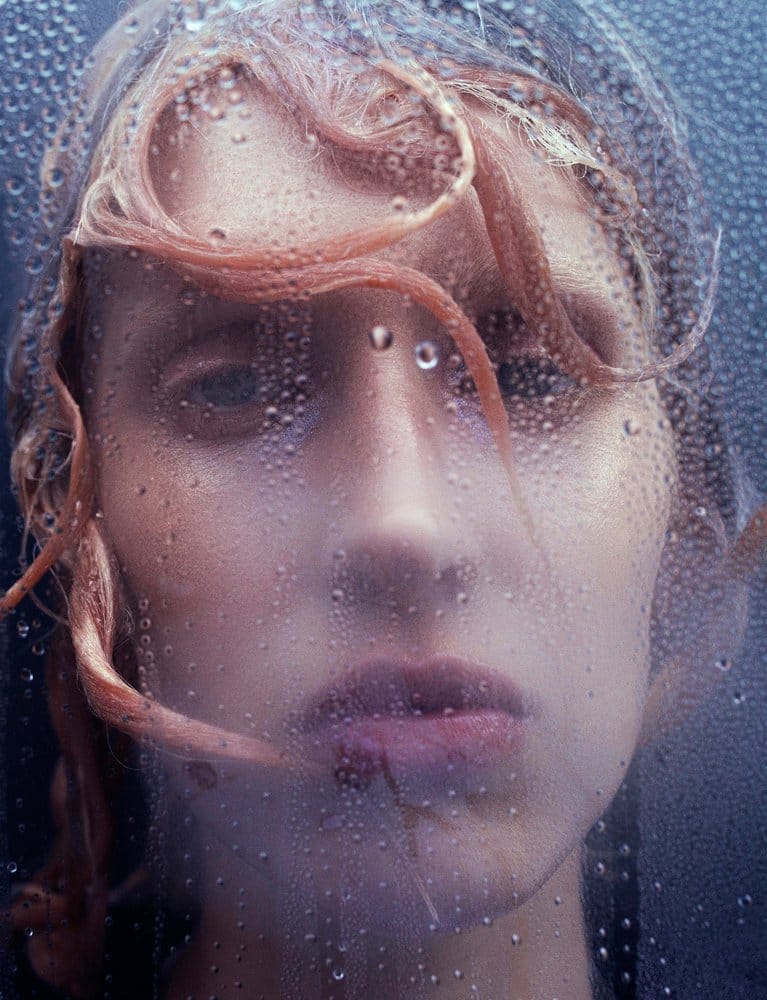
Editorial photographed by Domen/VanDeVelde for Mirror Mirror Magazine, highlighting a selection of dresses from the Flora Miranda ‘Press Reset’ collection.
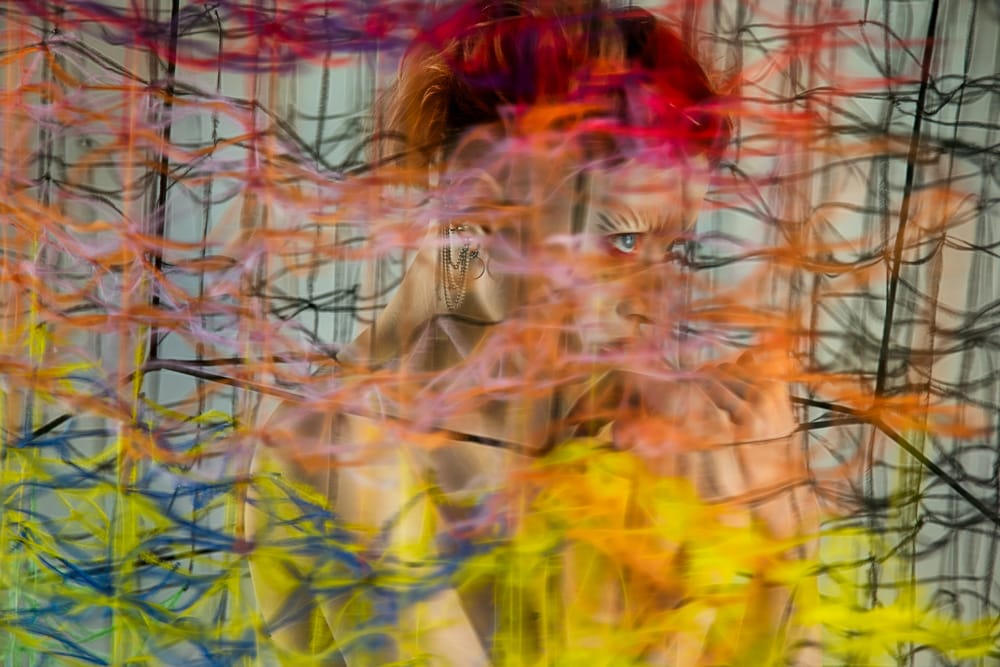
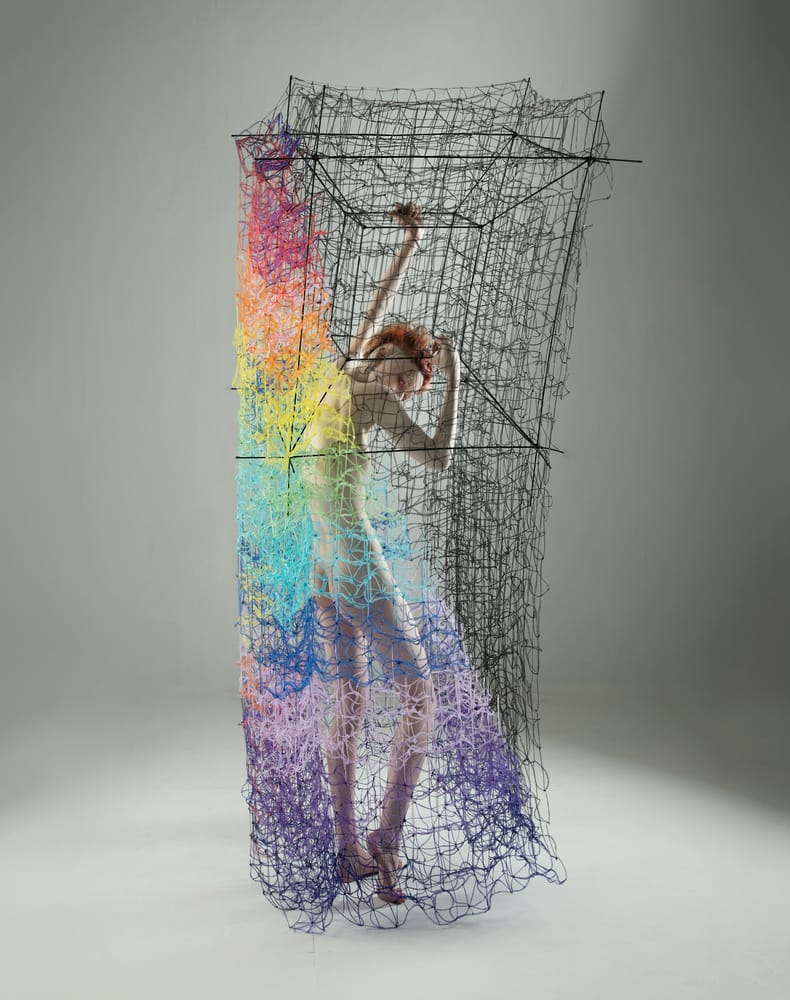
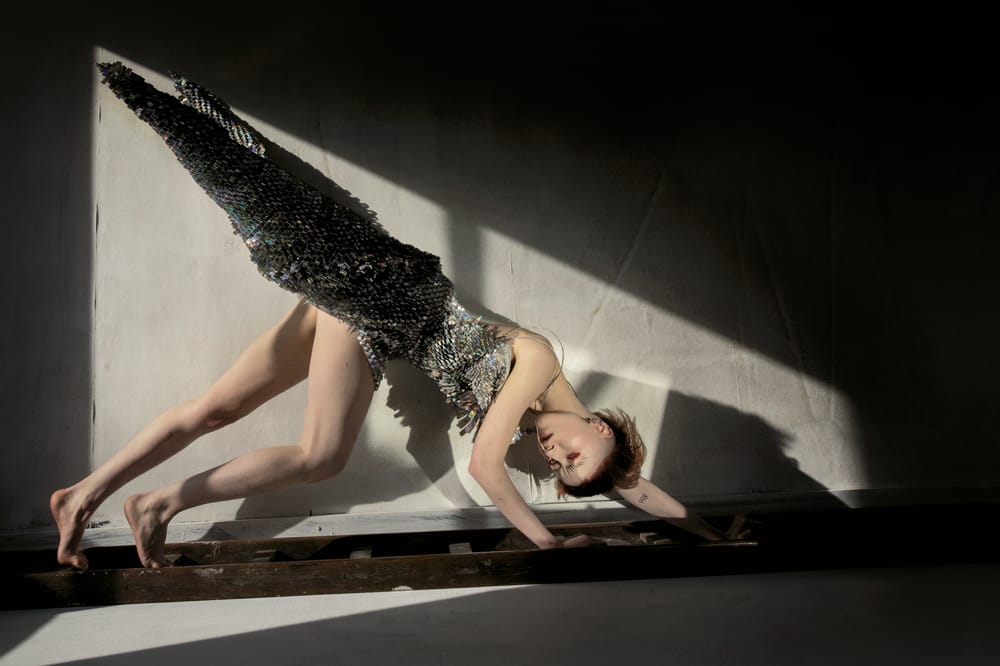
Seasonal Lighting Fashion Architecture
Clothes that are worn under the natural sunlight take certain colors depending on whether they absorb or reflect the sun’s rays. A garment will appear red because it will absorb in its tissue all the wavelengths of sunlight, with the exception of those reflected around 650 nm which will make garment appears red.
Read the full text by Philippe Rahm Architects on Stylezeitgeist Magazine.
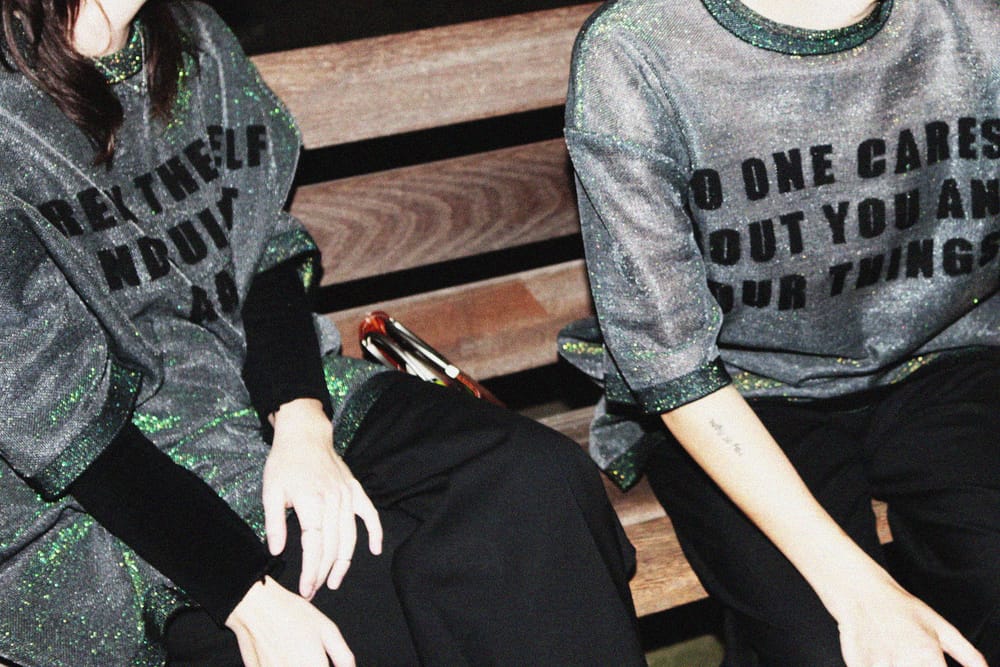
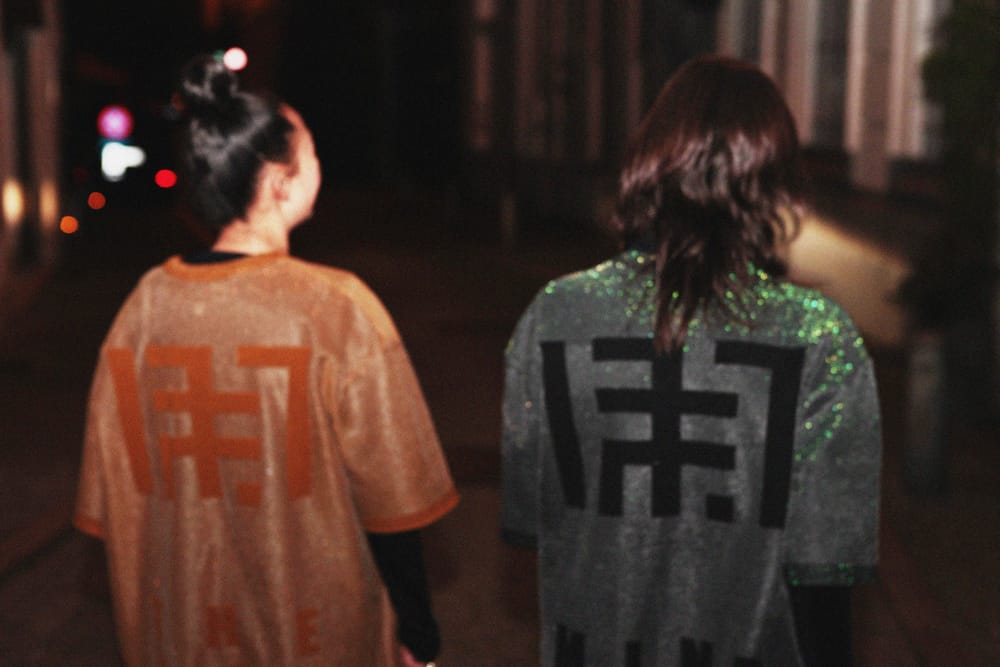
Diese Designerin kreiert Kleidung aus deinen Facebook-Posts
Ob Google-Search-Anfragen, Musik-Downloads oder dein Social-Media-Konsum, Flora Miranda übersetzt Nutzer-Daten in ein personalisiertes Kleidungsstück, das mehr über dich verrät, als du denkst. Wie das funktioniert, hat sie uns im Interview verraten.
Read the full article on i-D Germany.
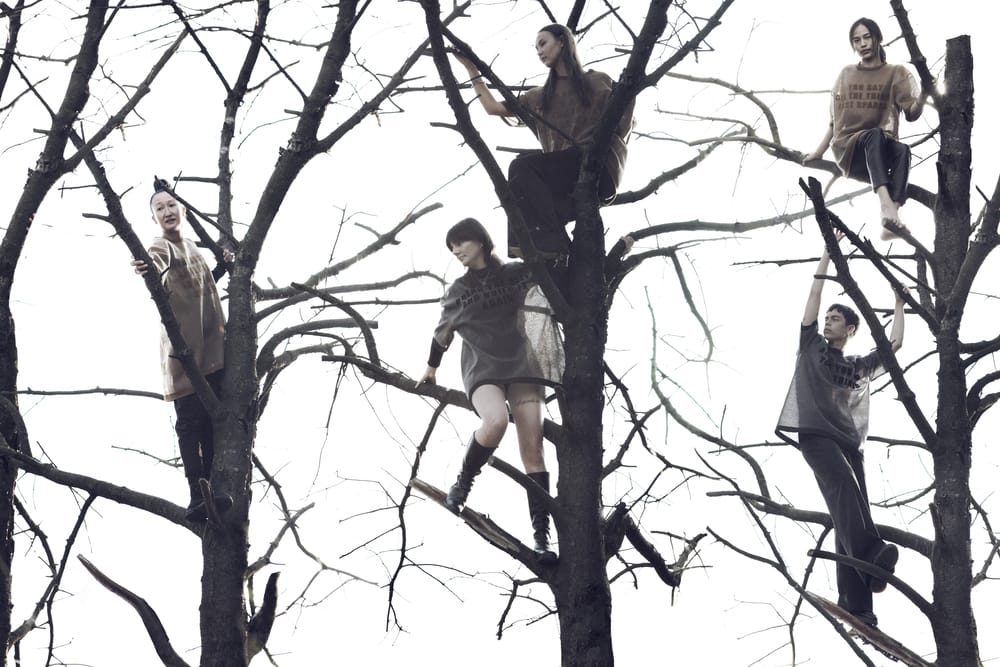
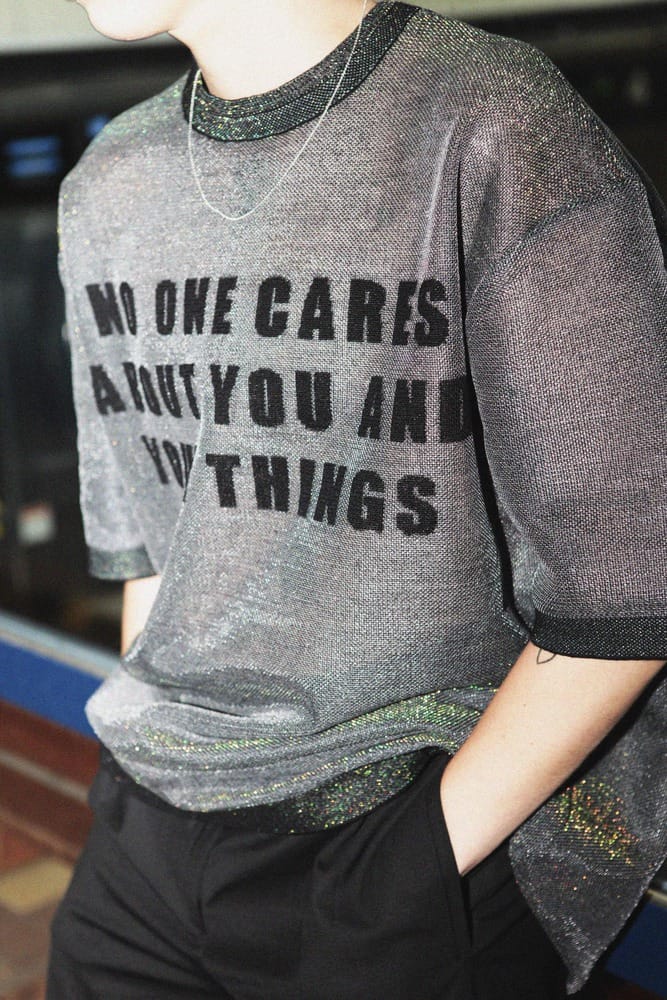
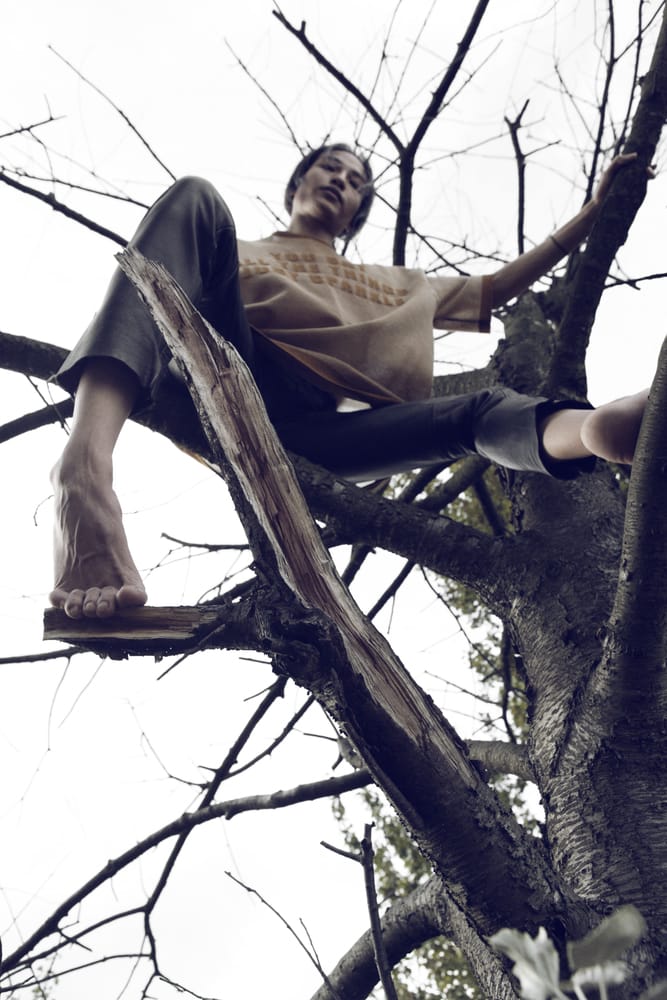
How Flora Miranda is Translating Our Data Into Luxury Fashion
Designer Flora Miranda is turning our personal data into bespoke knitwear. Sleek Magazine’s Sophia Lawler-Dormer spoke to Miranda about what it means to wear your digital identity on your sleeve.
Read the full article on Sleek Magazine.
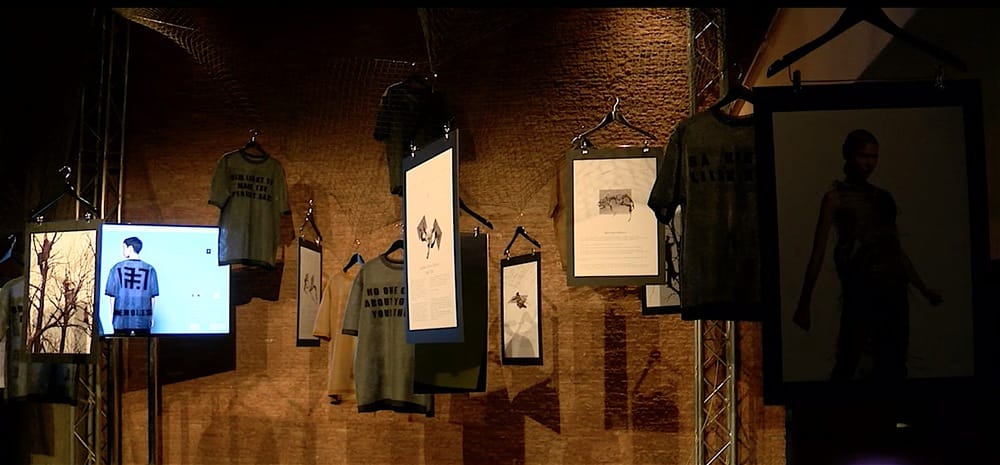

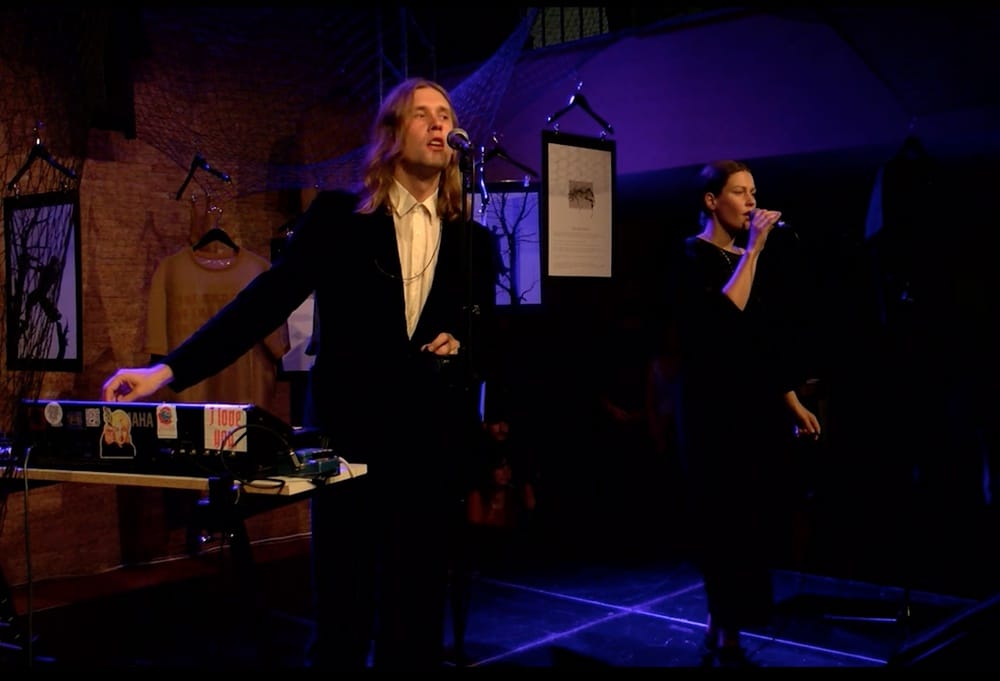
During Forecast Festival, Flora Miranda launches the IT Pieces web tool.
A few days ago, designer Flora Miranda’s live performance — a fascinating collaboration between the digital realm and the worlds of design and music — was shared at the Forecast Festival. Visitors have experienced the entire process, and gained valuable insights into Miranda’s wholly innovative way of working, which will shape future concepts of creativity.
IT Pieces x Jaakko Eino Kalevi: This special edition fan shirt with Finnish musician Jaakko Eino Kalevi was presented at Forecast for the first time. To celebrate this event, Jaakko performed a live show for his Berlin fans.
Further reading:
I See Myself in the Screen
Knitting Identities
Knitting Virtual Luxury
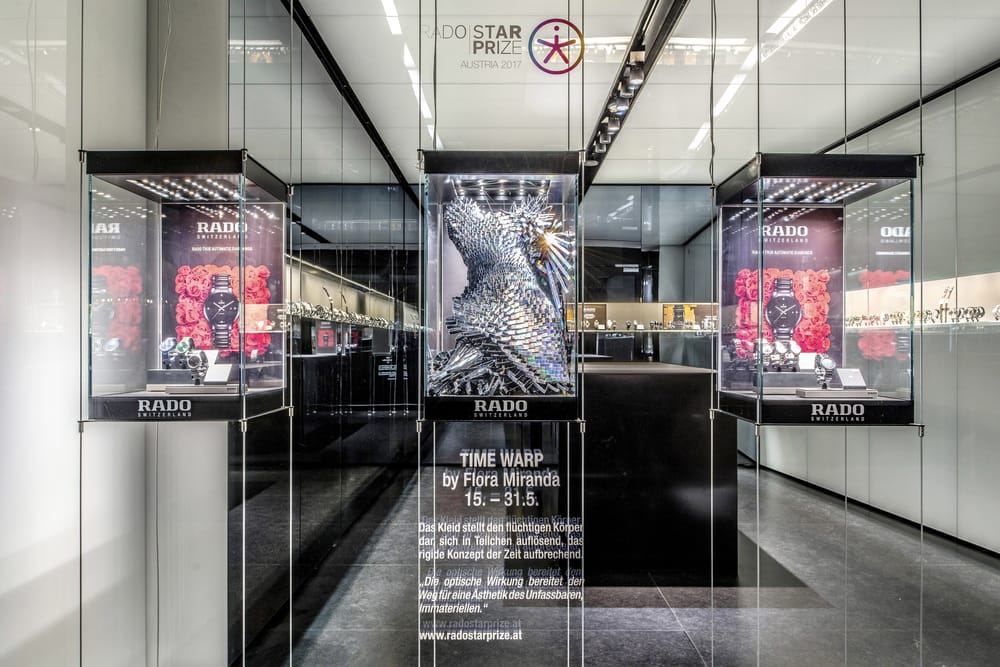
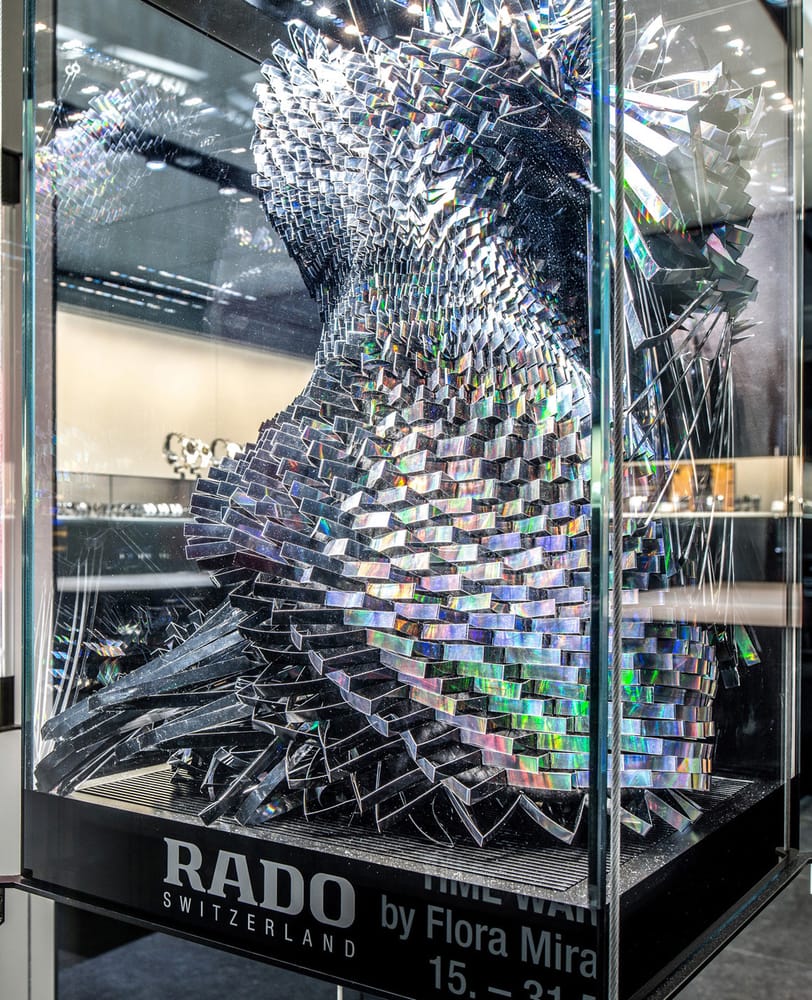
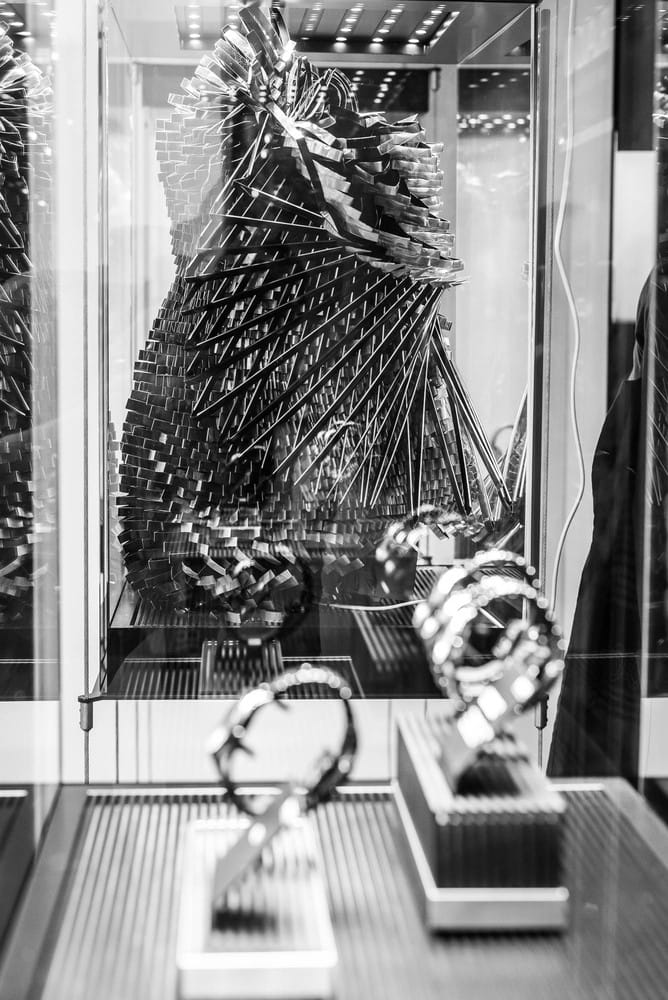
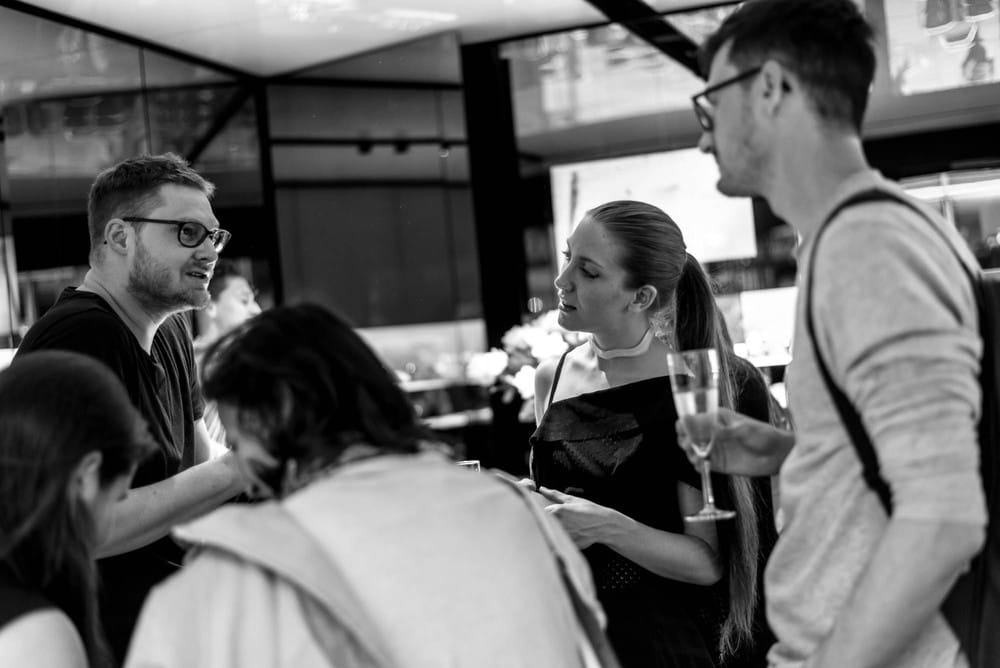
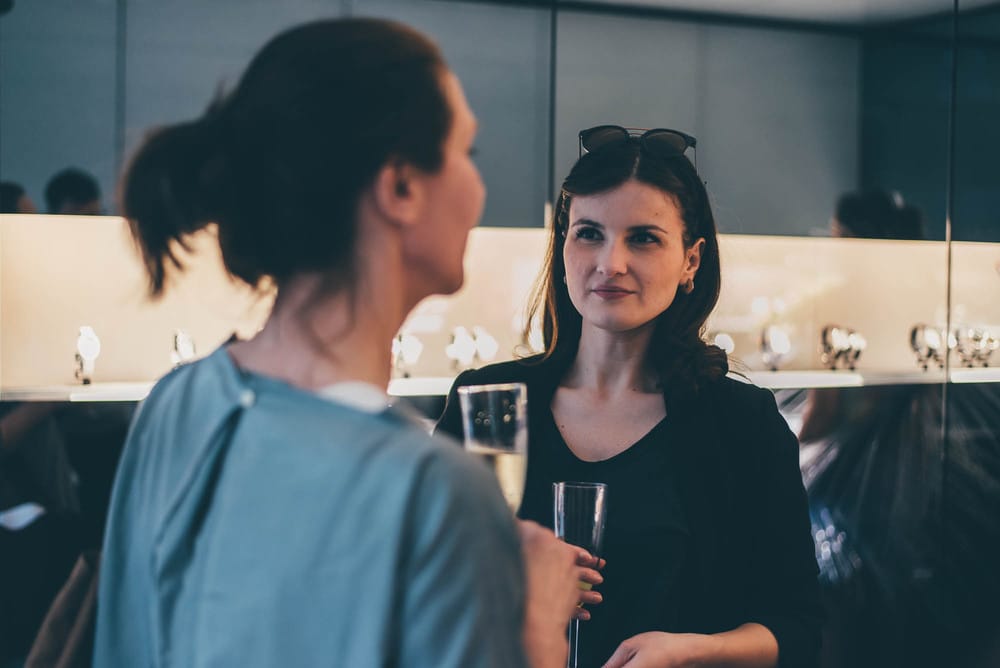
Time Warp by Flora Miranda wins Rado Starprize Austria
With her “Time Warp” installation at Rado Boutique in Vienna, Flora Miranda broaches the theories, models and concepts of quantum physics: “It is this step beyond the everyday body that I visually study in my work, an aesthetic of the intangible, the immaterial.” The dress itself was crafted via meticulous handwork. A body of fine, reflective plastic particles is set in motion and challenges the stability of matter and time. With her creation, the fashion designer wishes to create dreams and longings — for her, fashion is a form of escapism. Her concept of fashion is not merely about clothing and accessories, but also an entire aesthetic world with which we surround ourselves and which we believe in.
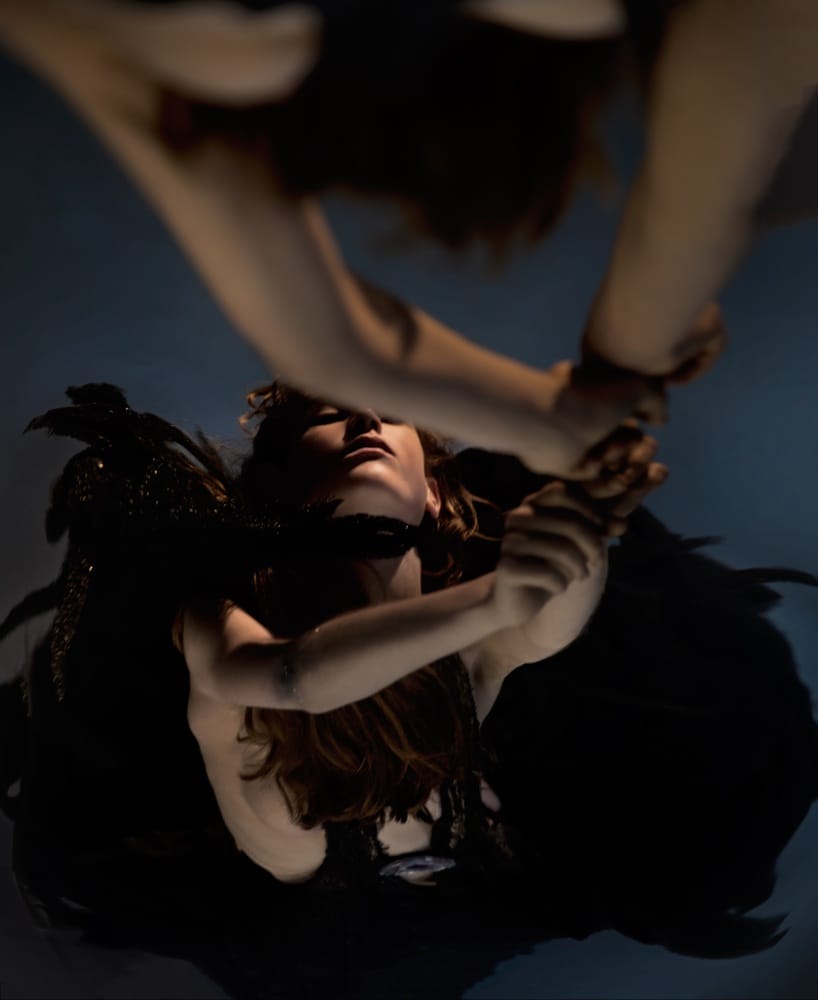
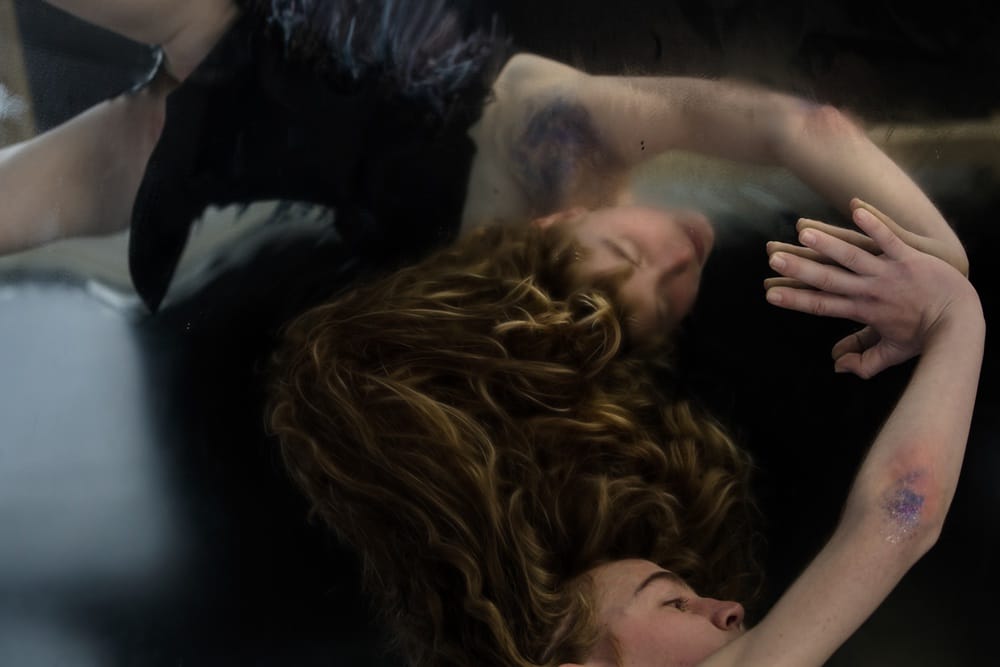
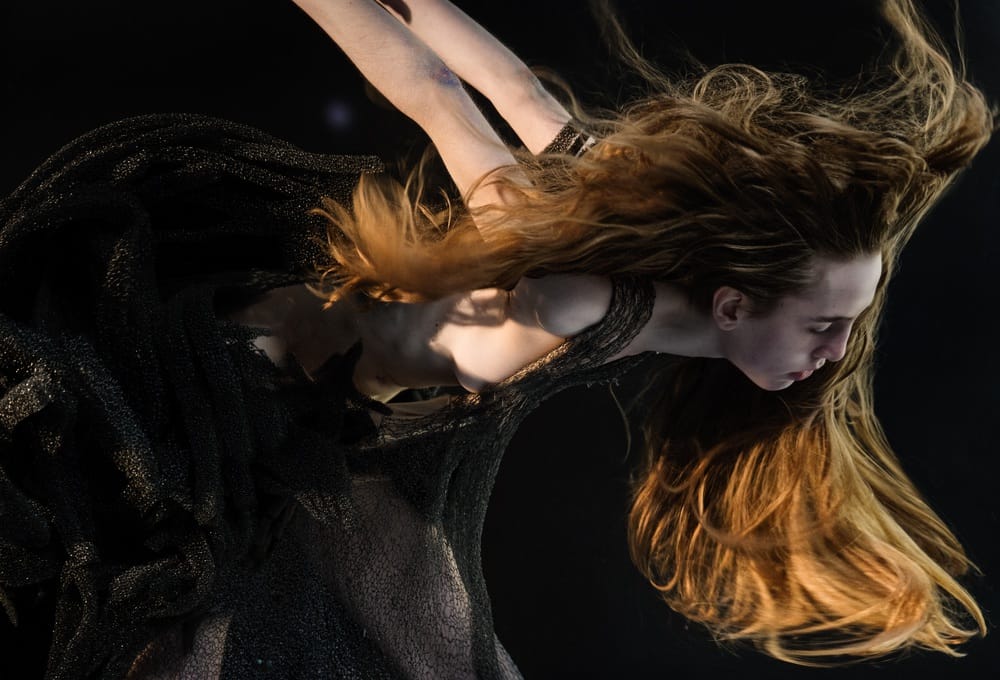
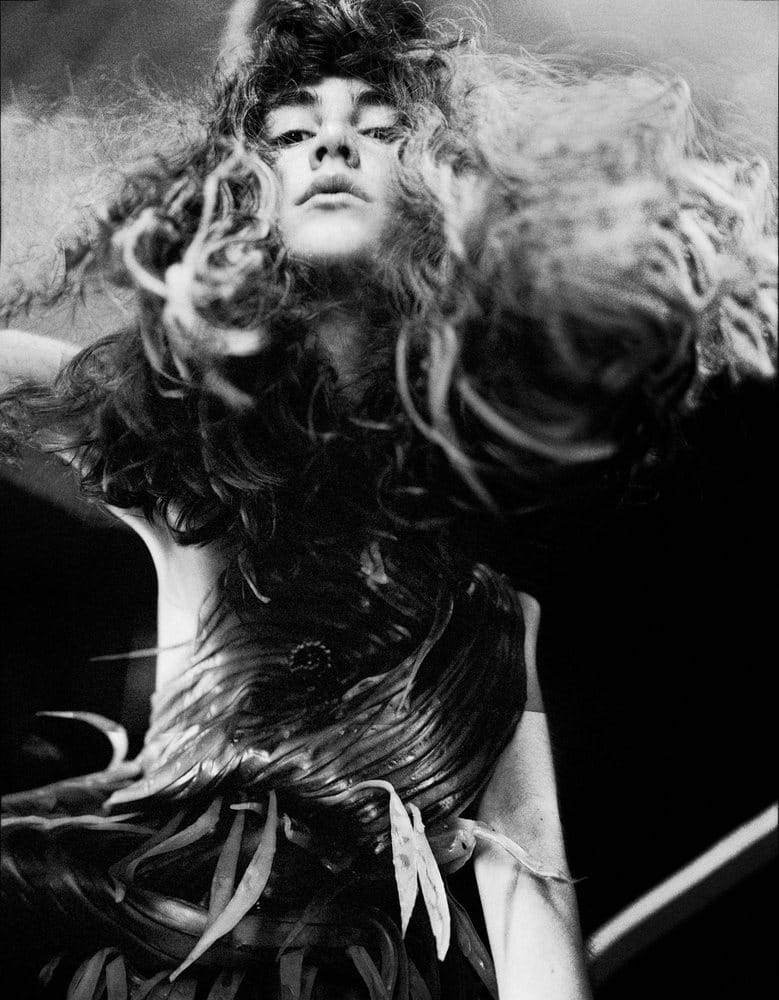
“Makes You Shiver”
Flora Miranda is a lesson in dedication. With strong emphasis on story telling and technical finesse, this austrian artist embraces both substance and style. The result, a shimmering vision of sci-fi silicone. Unbothered by existing silhouettes and materials, she creates her own, from a vision that seems unimpressed by physical laws.
Read the full interview on King Kong Magazine.
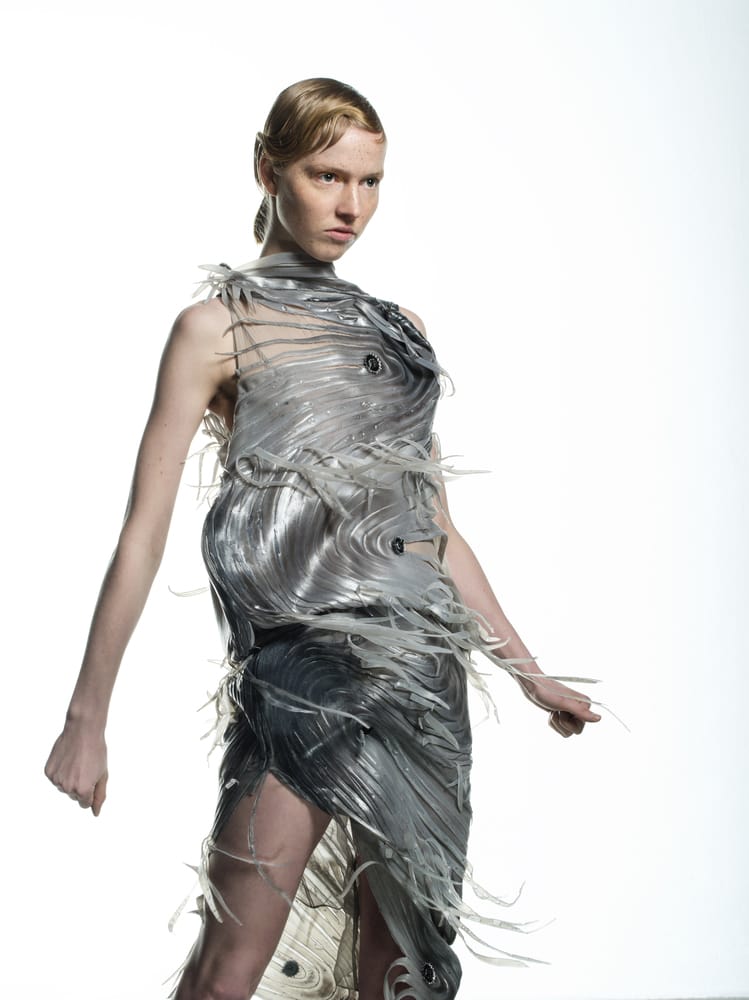
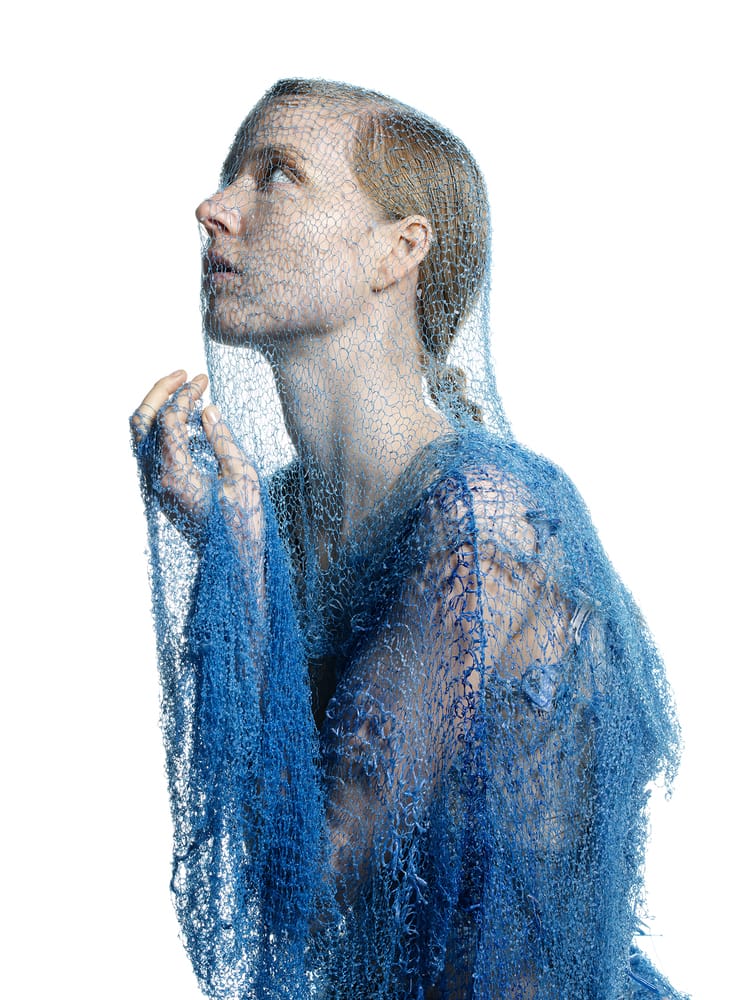
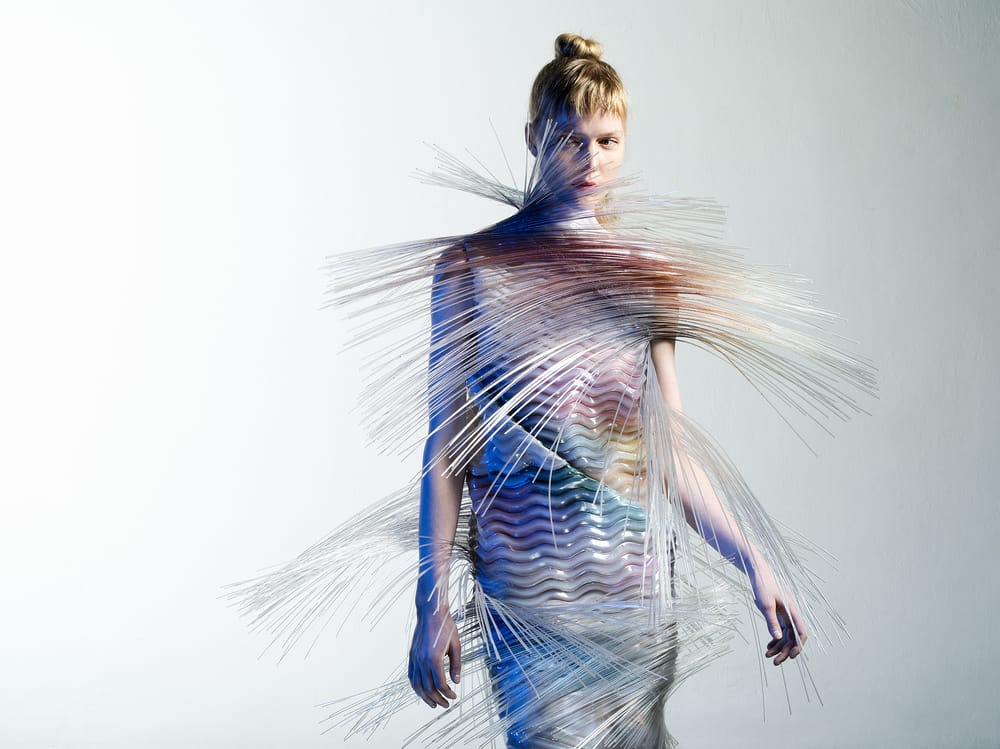
“Restructured” by Elsa Okazaki
Exhibition “Restructured” at Take Festival Vienna by Elsa Okazaki.

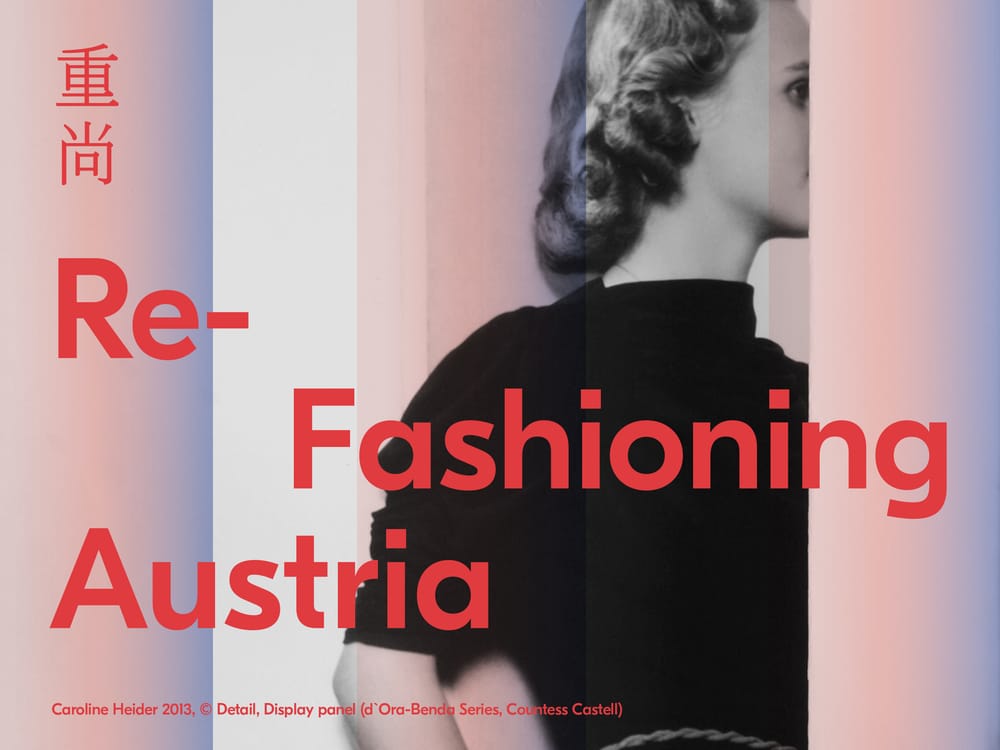
The “Delete Yourself” outfit is on display during “ReFashioning Austria” at Liu Haisu Art Museum in Shanghai.
The exhibition “ReFashioning Austria” at Liu Haisu Art Museum in Shanghai gives insight to the vast creative spectre of the Austrian fashion scene of the past 20 years.
The show is focussed on selected fashion ensembles, textiles and photography works that stand out by highly innovative, qualitative and experimental design.
Curated by Claudia Rosa Lukas.

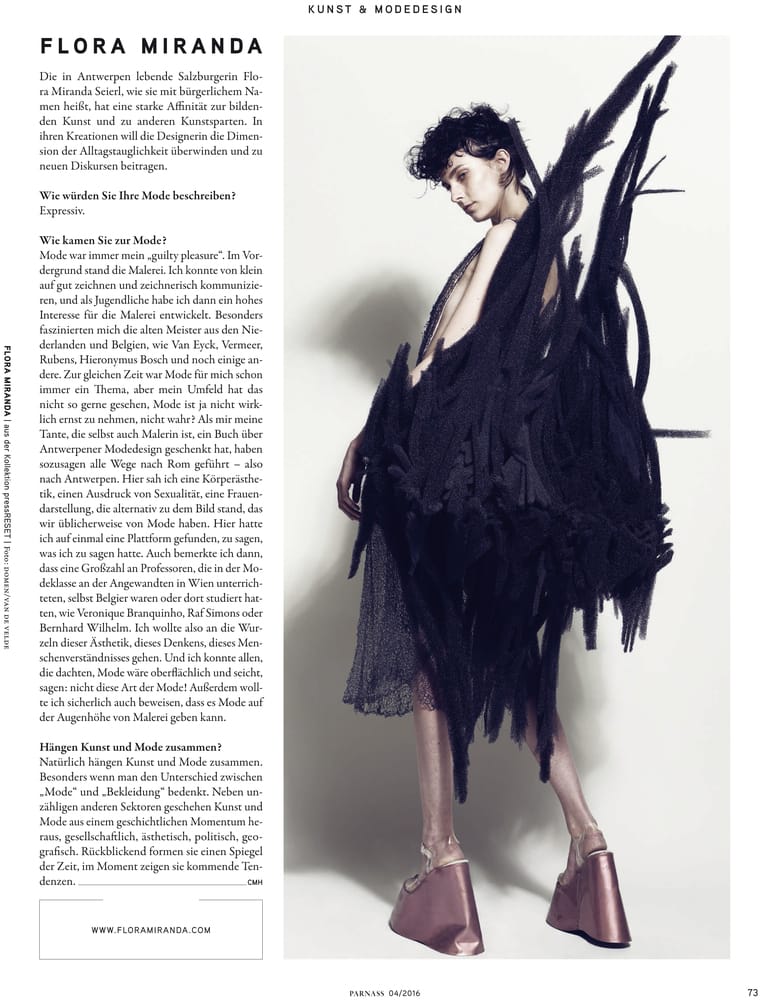
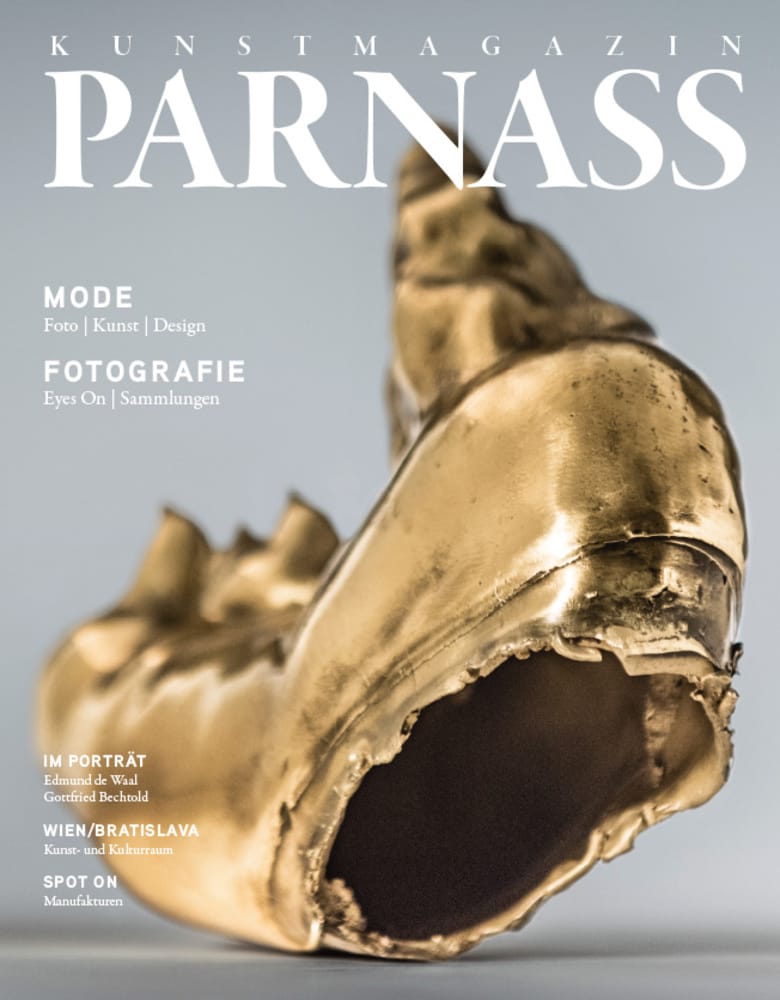
The Flora Miranda “Erase Your Face” and “End Of Matter” outfits are featured in Parnass Kunstmagazin.
Issue 4 of 2016 presents fashion, art and photography united and takes a closer look at Flora Miranda’s relationship with these fields.
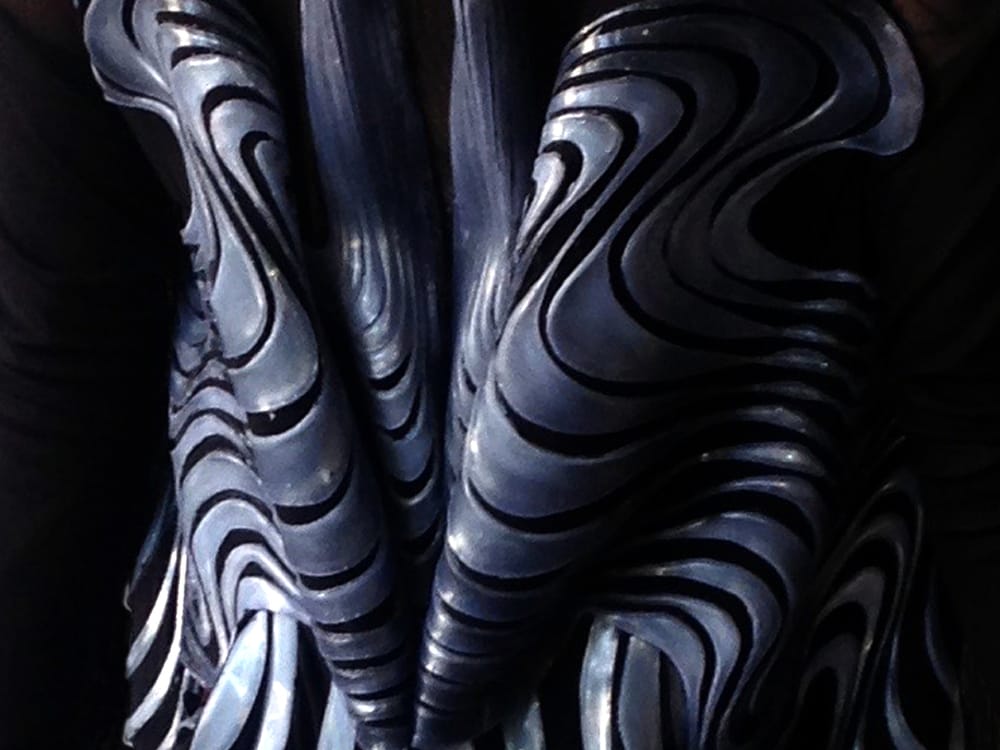
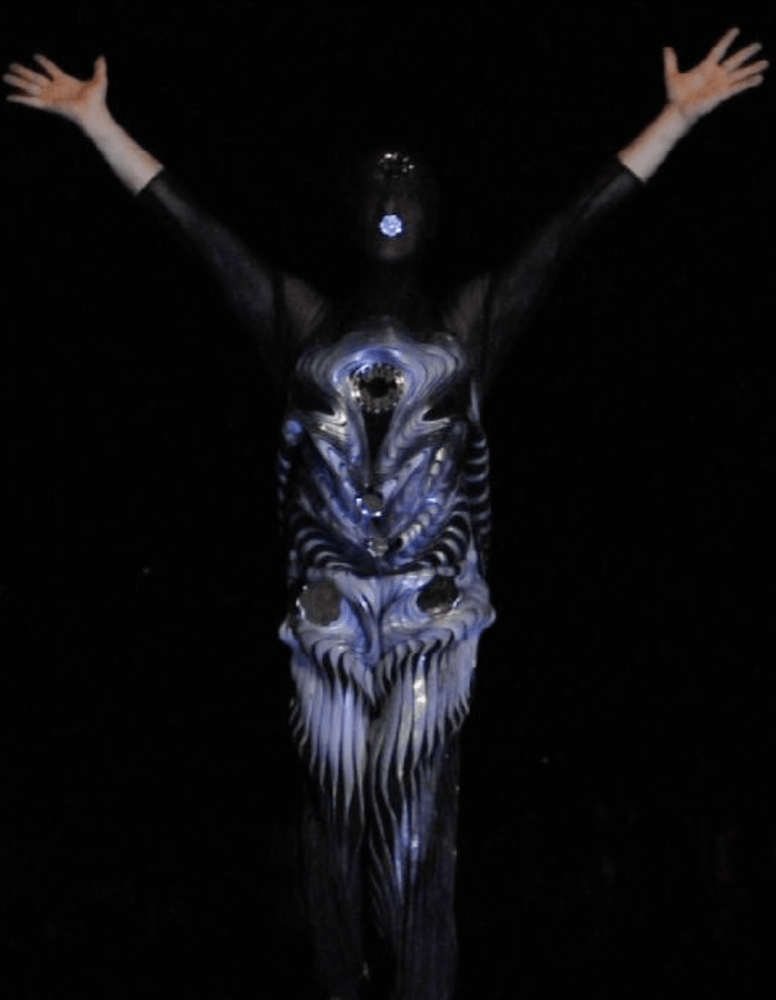
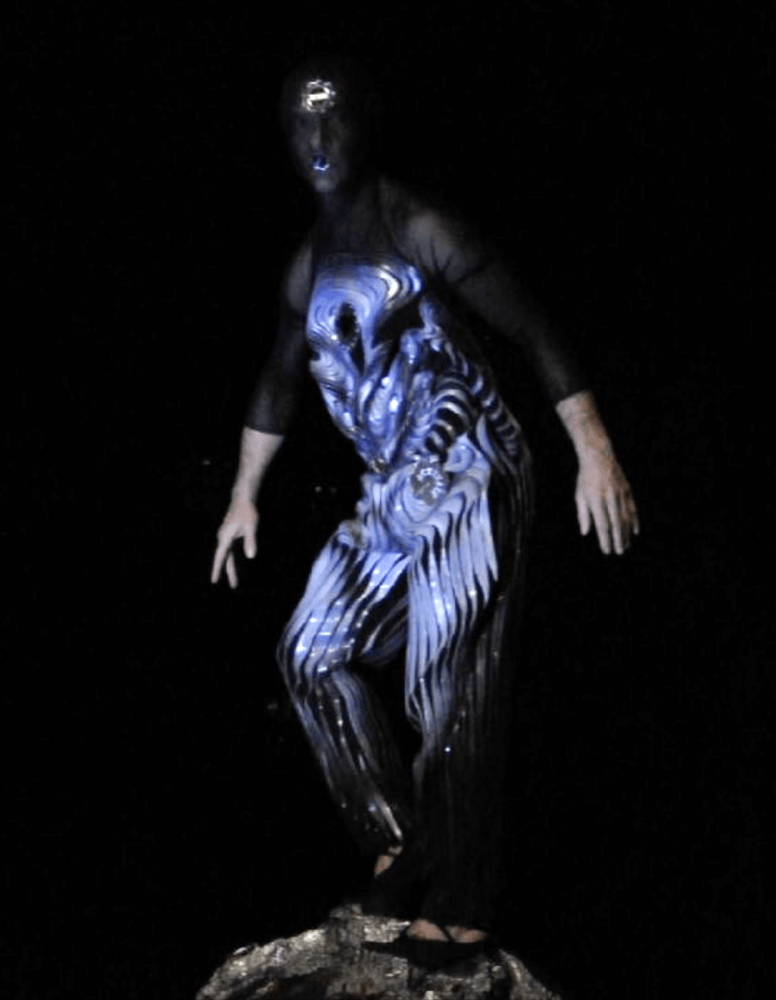
For the “Kraut und Gras” edition of KoFoMi Flora Miranda created the outfit for dancer Karl Baumann.
For the performance piece “Rücklicht” Flora Miranda created an outfit for dancer Karl Baumann. The costume is created with a refined implementation of silicone, giving the body a sculptural form and at the same time surprisingly organically moving with the dancing body.
Karl Baumann is known for his long lasting involvement with Cirque Du Soleil.
The piece was performed together with Austrian percussionist Andi Stecher.
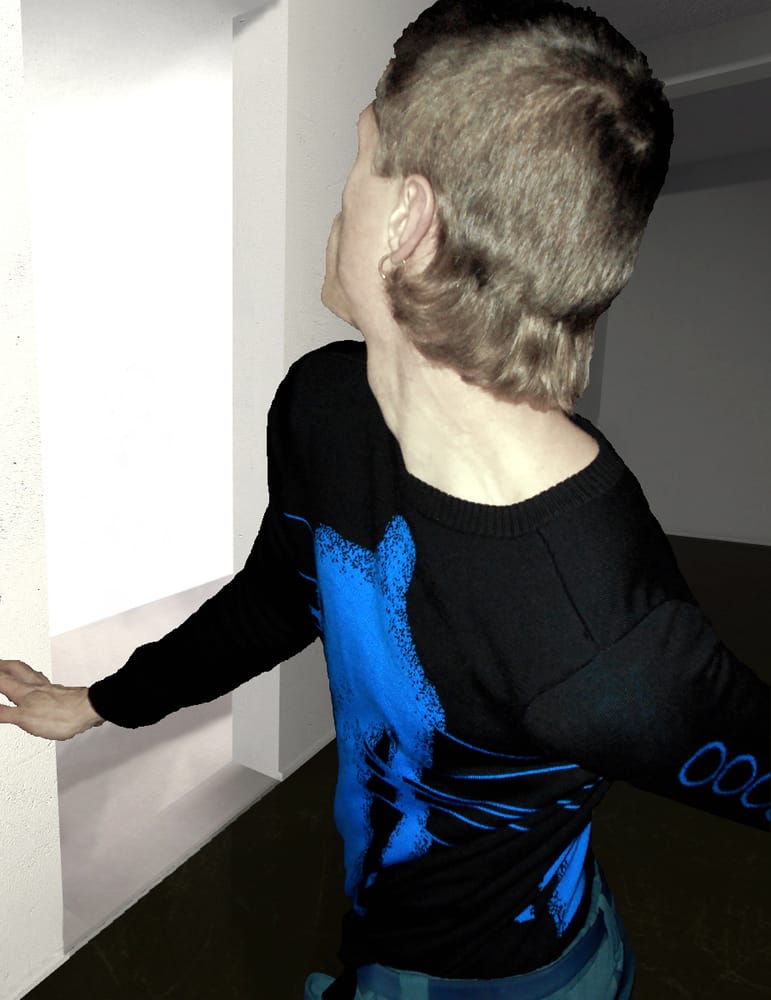
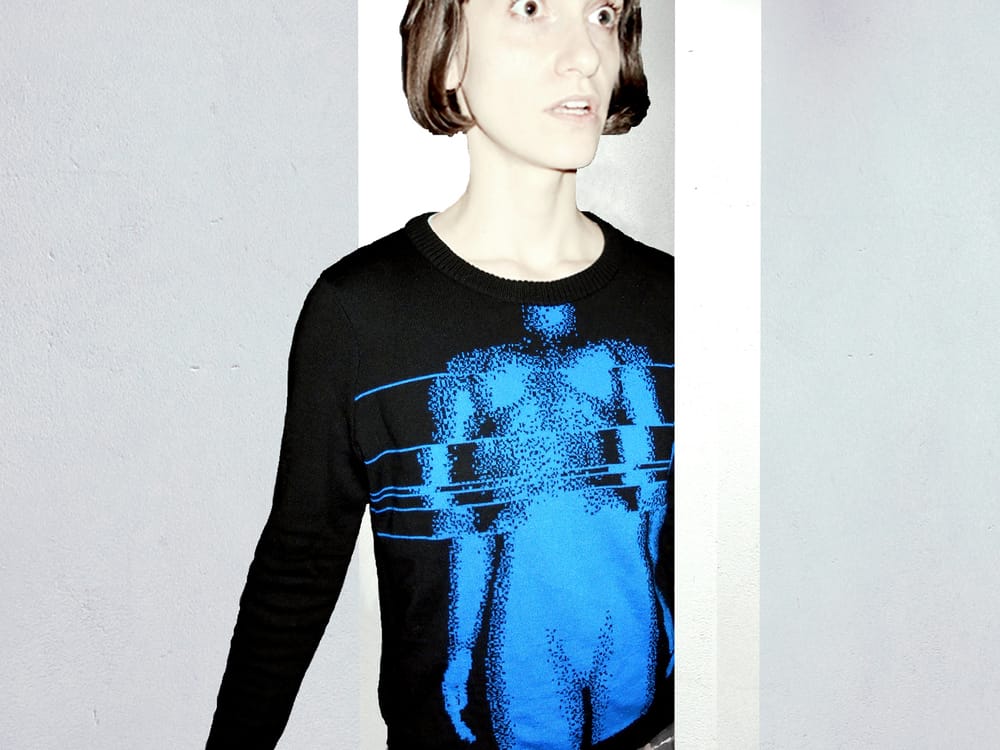
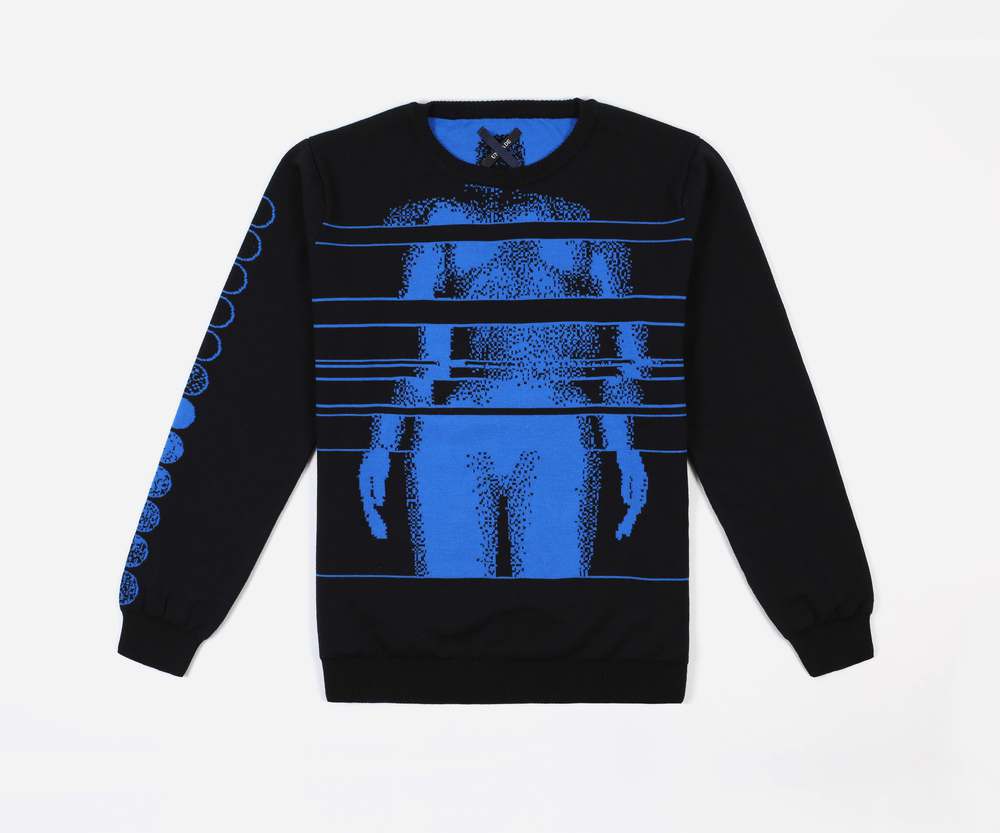
Flora Miranda designs knitwear for the innovative startup Unmade.
Unmade, an innovative knitwear startup based in London, invited Flora Miranda to design an edition of knitted pieces for the brand.
Flora created the line called “Welcome to the Centre of Lost Body Parts” as she based the design on the idea of quantum physics and the immaterial body: The series shows various physical states during a teleportation process.
The collaboration between Unmade and Flora Miranda fuses innovation and avantgardistic, futuristic design into wearable garments. The design can be customized by the customer in the online store, the pieces will be produced after an individual order only.
Read the article by Die Presse Schaufenster.
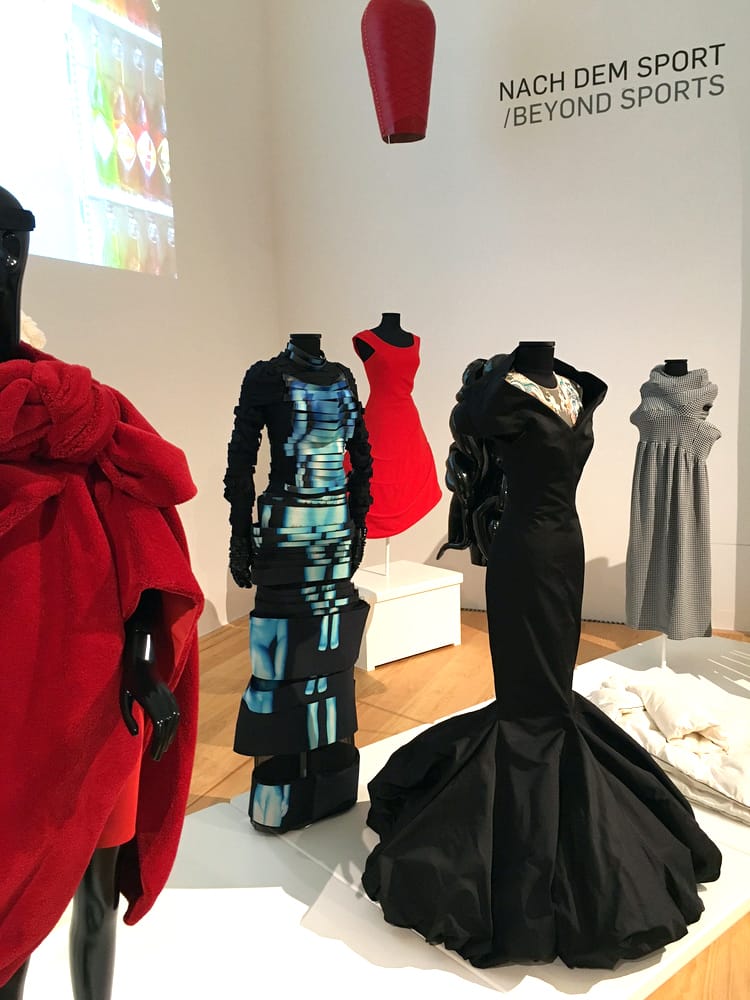
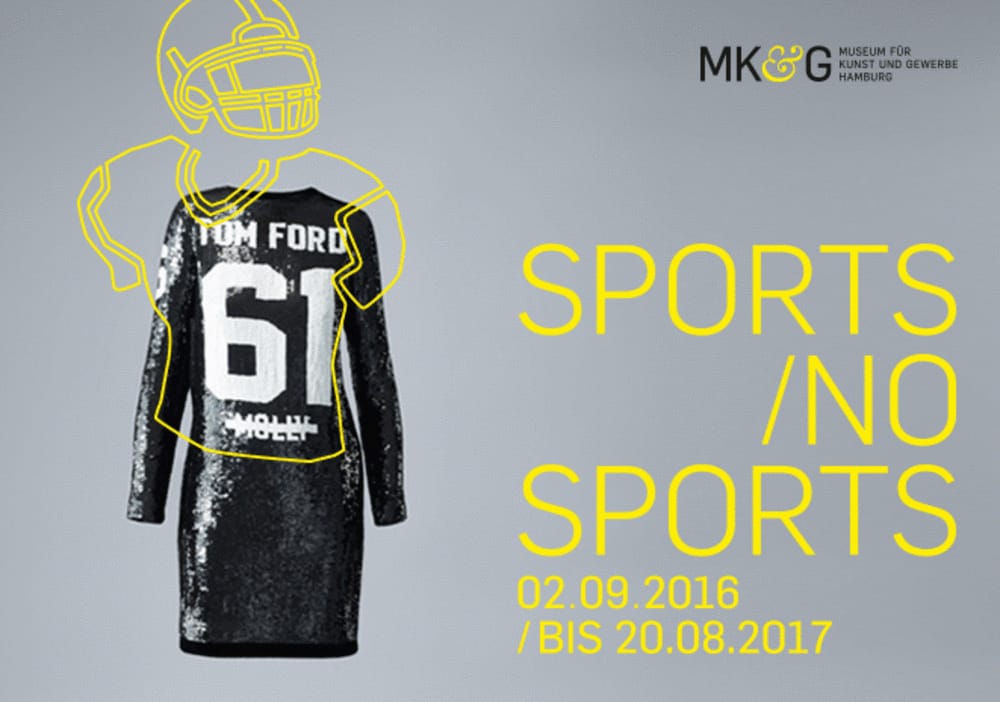
The Flora Miranda “Warp Outfit” is exhibited at Museum für Kunst und Gewerbe Hamburg.
The Flora Miranda “Warp outfit” is showing a body be teleported, in segments disintegrating into it’s single particles. Such dream of travelling by the speed of light is the ultimate idea of sports - aiming to expand the physical capabilities such as increasing velocity.
The show explores the correlation between fashion and sportswear with a focus on social, formal and aesthetic contexts. It contrasts the factual sportswear of the beginning of the 20th century (sports) with the hybrid forms (sports?) in fashion design. The contemporary avant-garde (no sports) instead refuses any functionality and obtains inspiration from various sources.
2 September 2016 until 20 August 2017
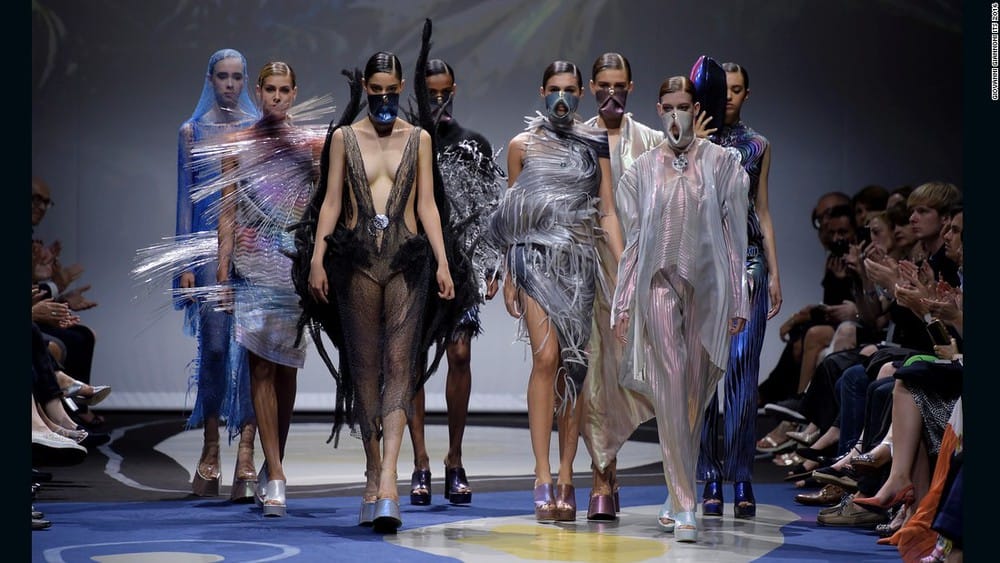

Flora Miranda was selected as finalist for the “Utopia” edition of International Talent Support in Trieste, Italy.

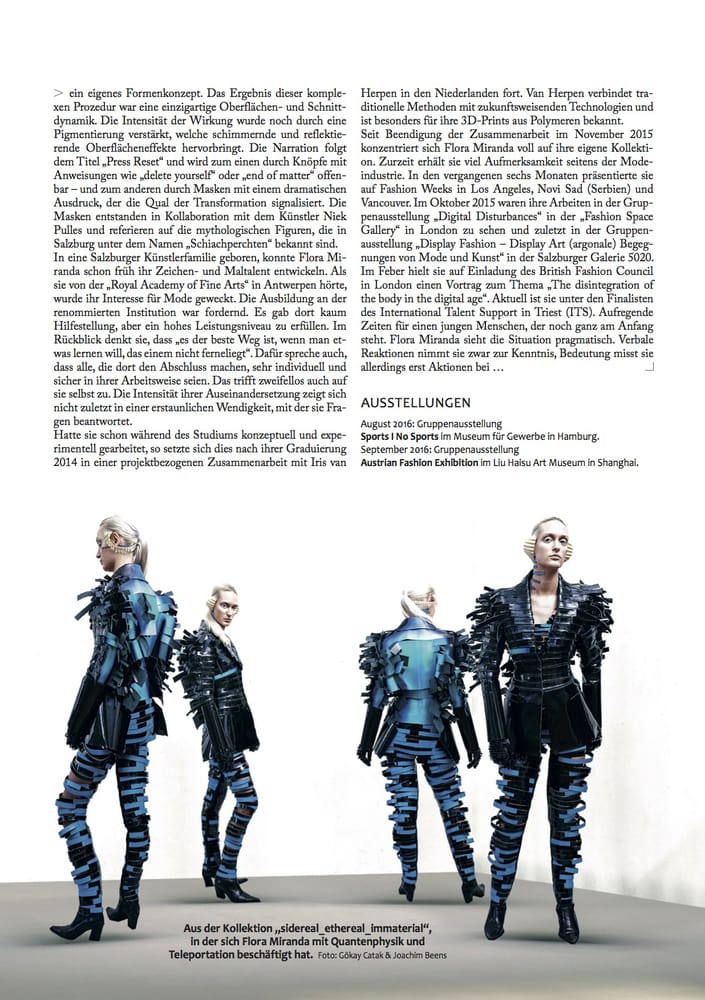
The journalist Hildegard Suntinger, known for her thoroughly investigated articles, creates a portrait of Flora Miranda for Wiener Zeitung.
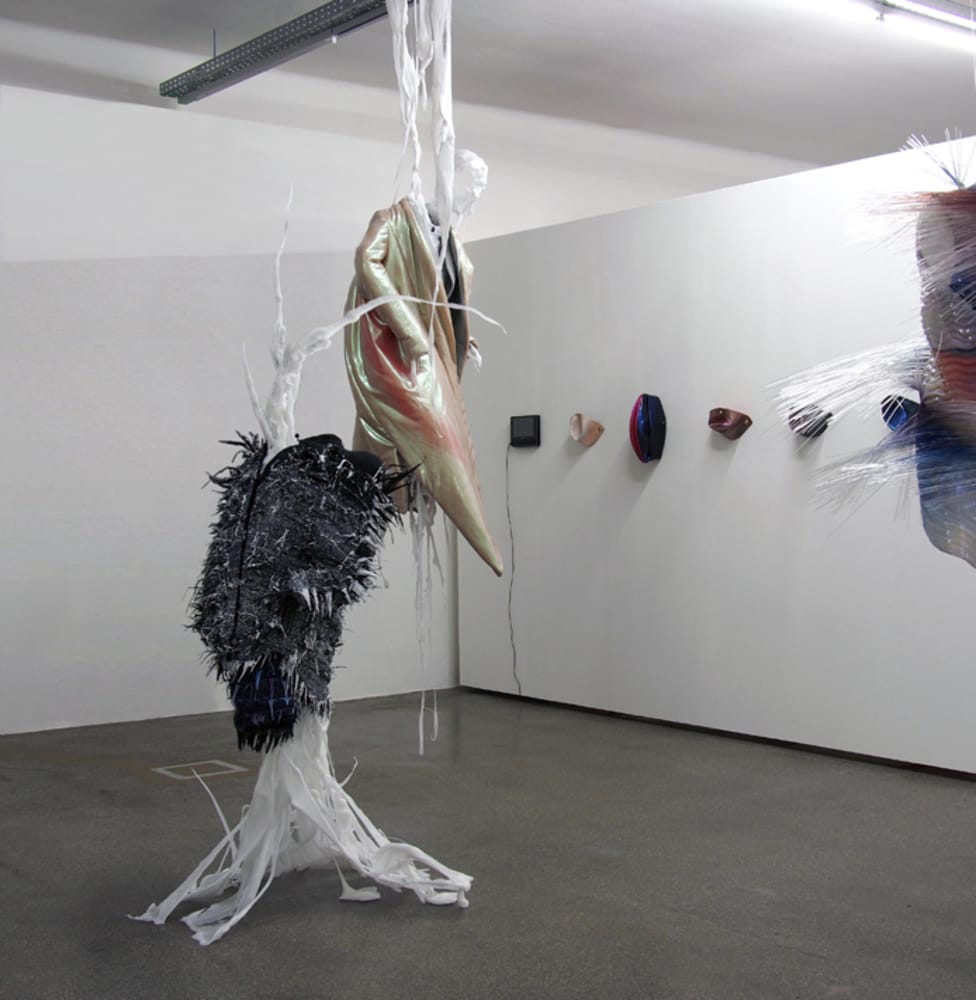
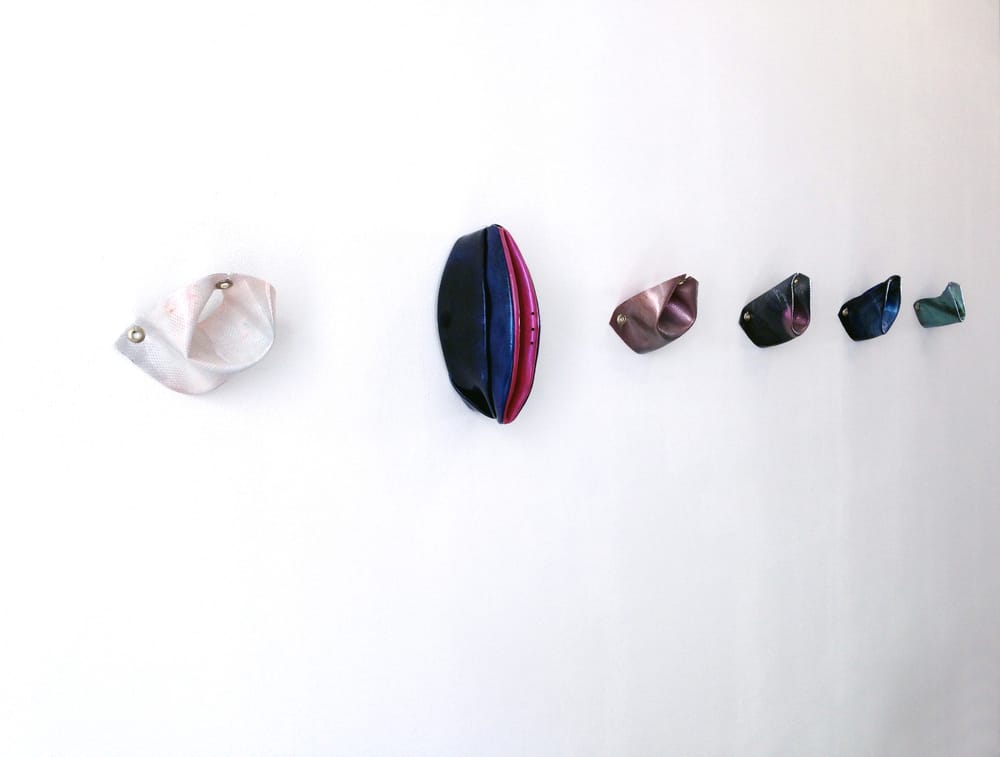
“Displaying Fashion, Displaying Art” at Galerie 5020 Salzburg exhibits a selection of pieces from Flora Miranda’s collection PRESS RESET.
“Displaying Fashion, Displaying Art - [Agonale] Begegnungen von Mode und Kunst” at Galerie 5020 in Salzburg merges the work of the six Austrian fashion designers/artists Anna-Sophie Berger, Edwina Hörl, Flora Miranda, Lena Kvadrat, Johannes Schweiger and Hanna Weichselbaumer.
The exhibition presents practices of the both, fashion and art, and observes how the two have been related through collaborations, assimilated ways of presentation and the enforcement of their iconography within digital distributive channels.
Review by AustrianFashion.net
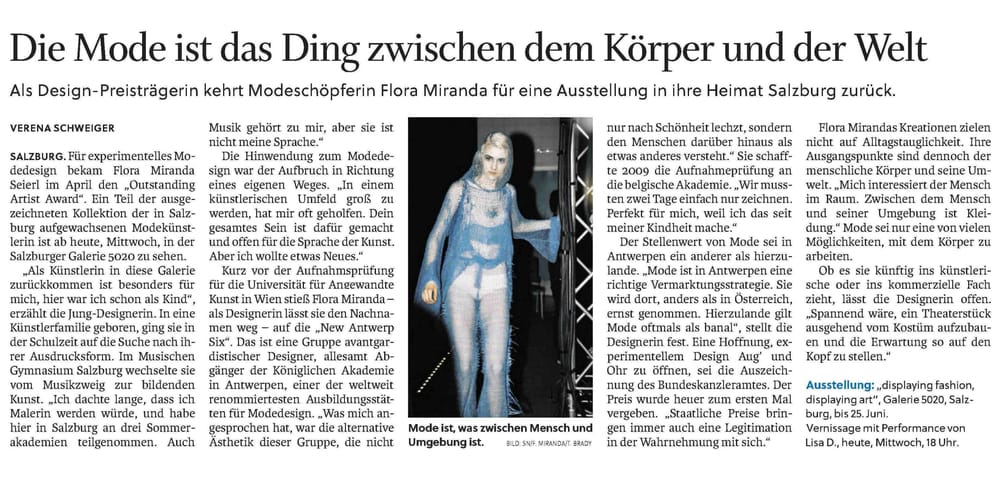
Salzburger Nachrichten publishes an in-depth portrait of Flora Miranda.
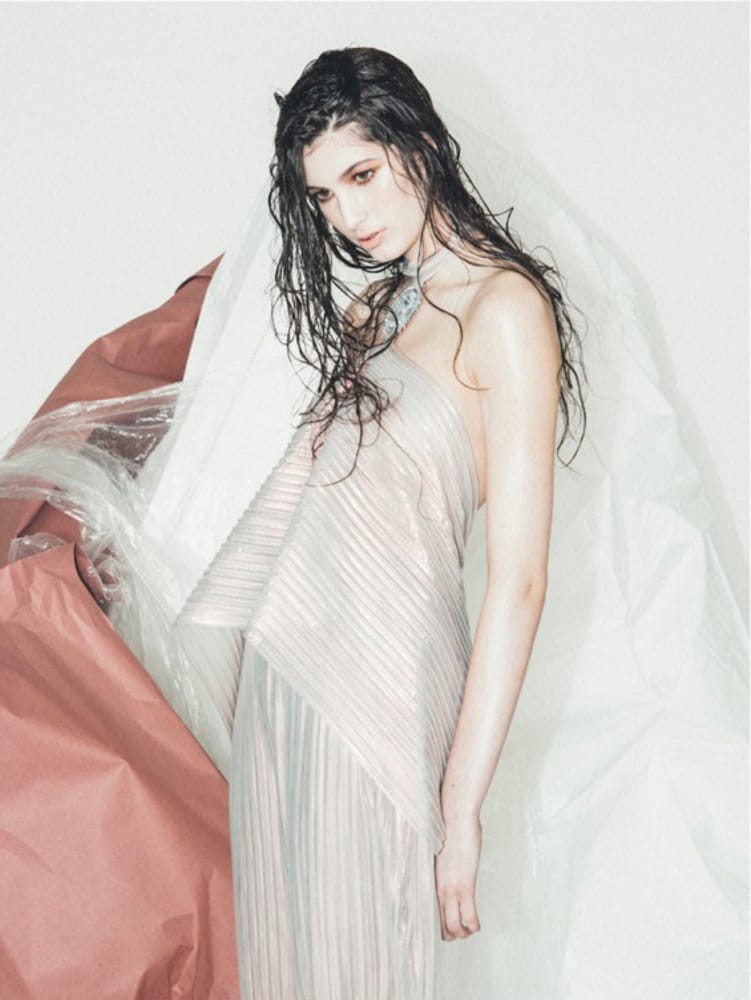
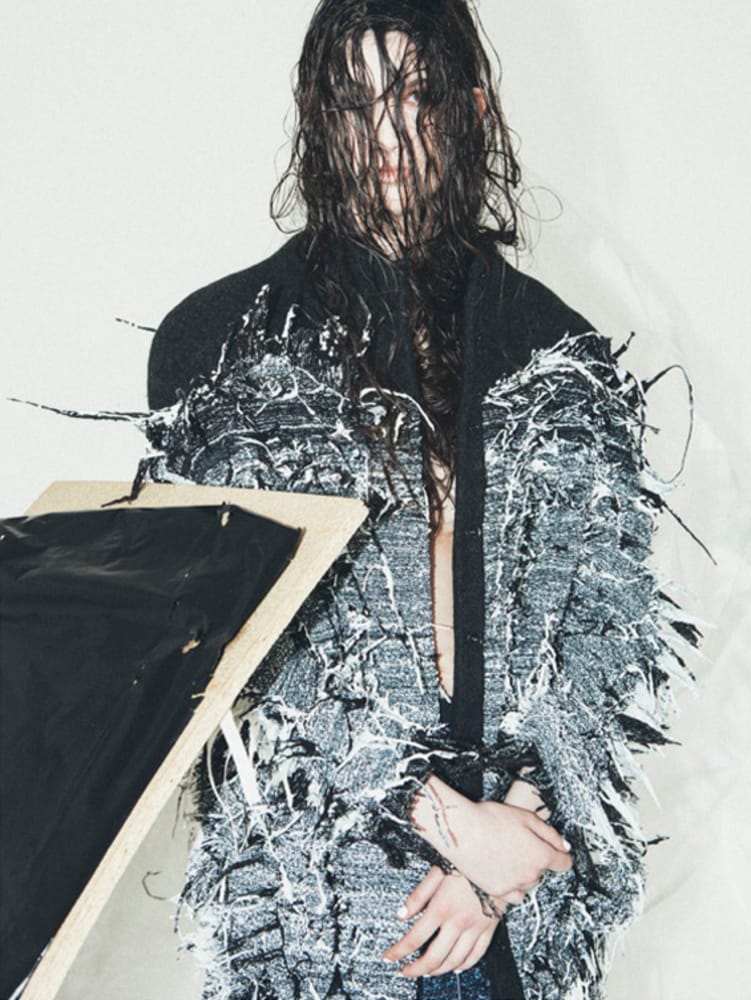
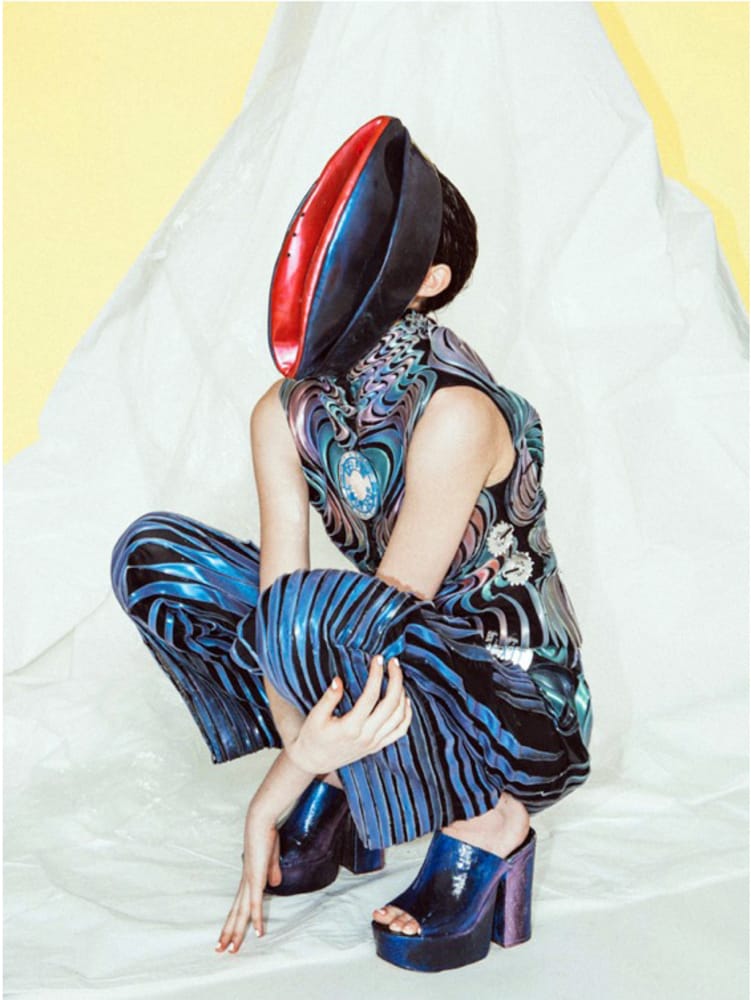
The canadian photographer Trevor Brady captures Flora Miranda’s collection “Press Reset” for The Commission Magazine.
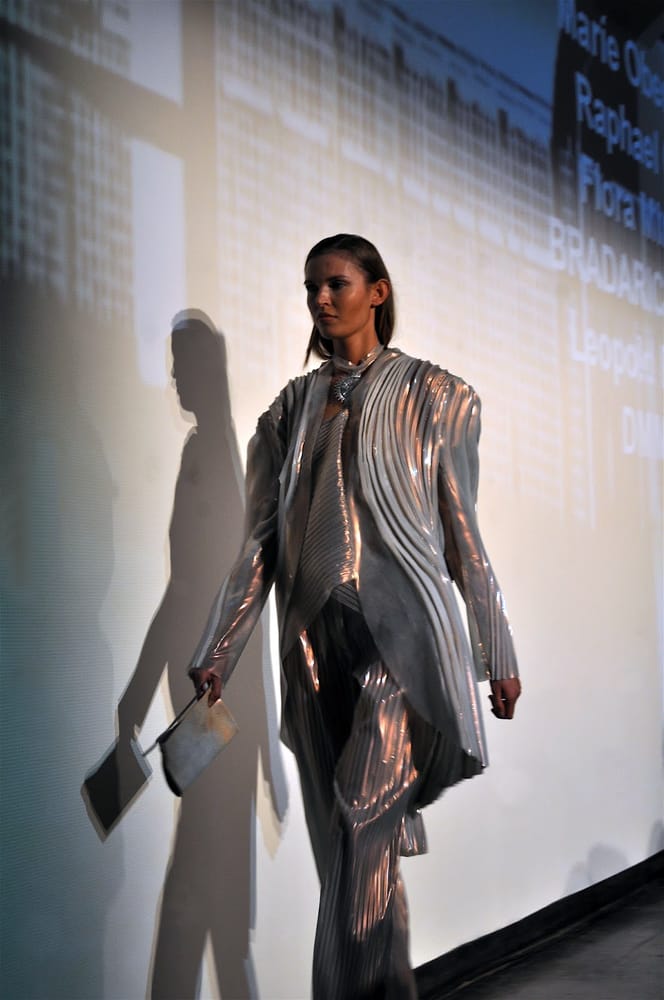
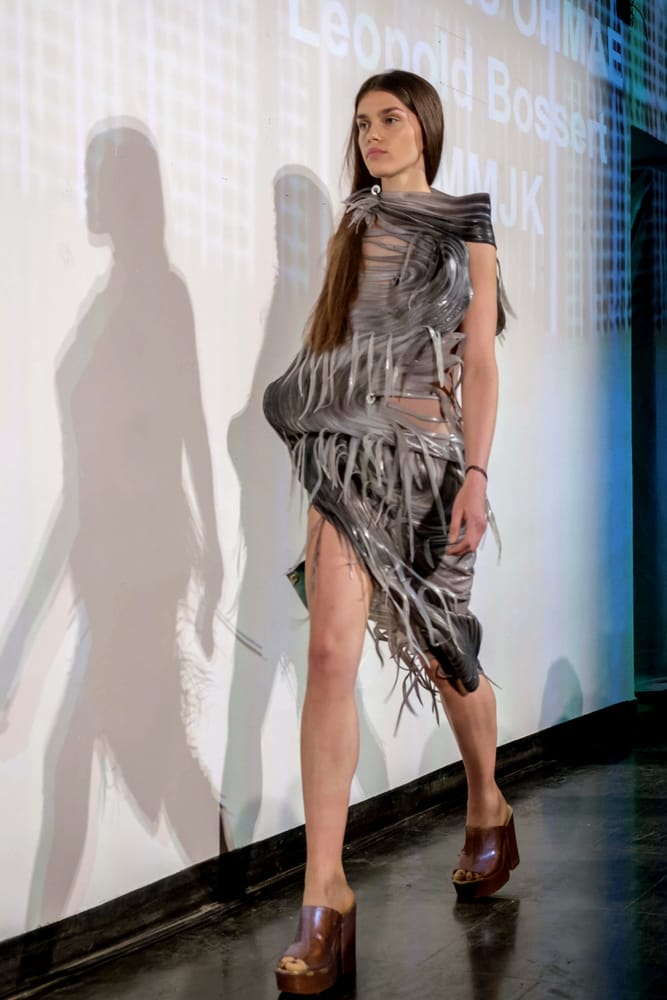

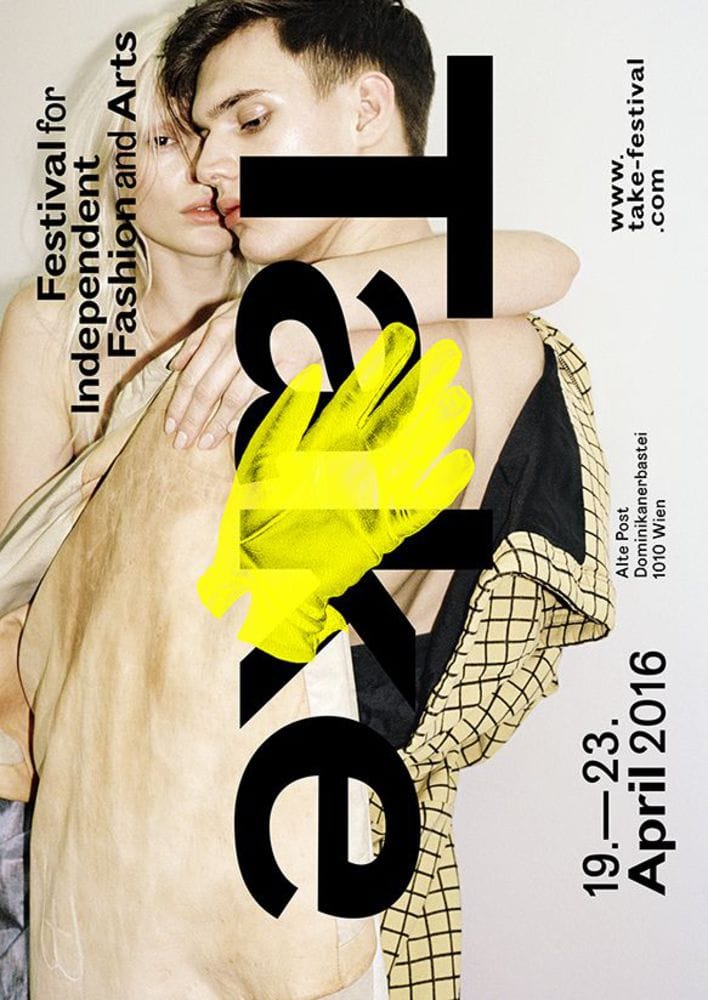
Flora Miranda receives the Outstanding Artist Award for Experimental Fashion Design by BKA in Vienna. The awarded collection “Press Reset” is presented during Take Festival.
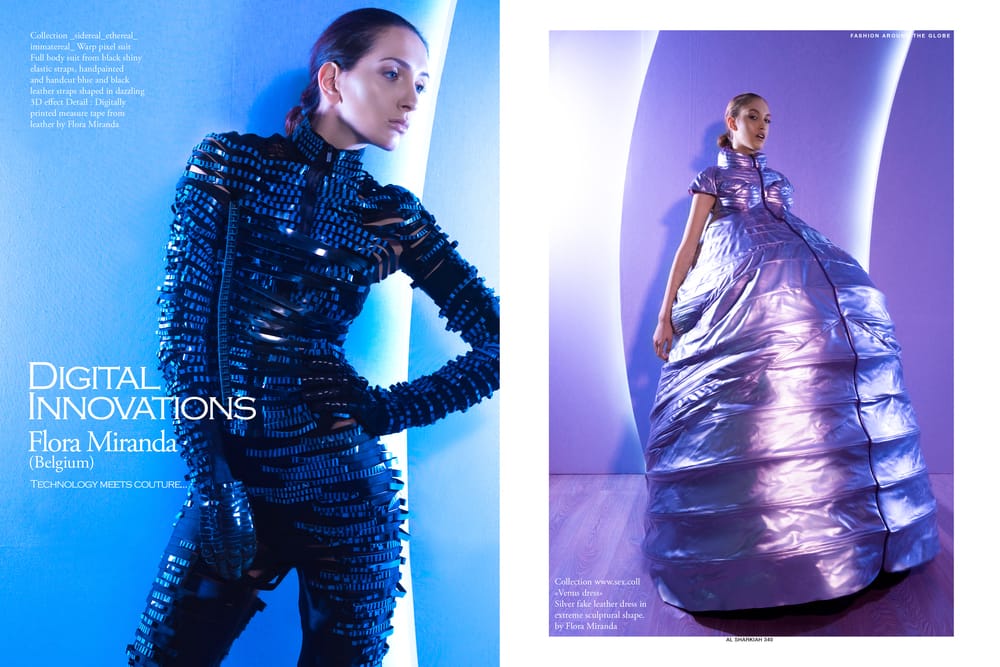
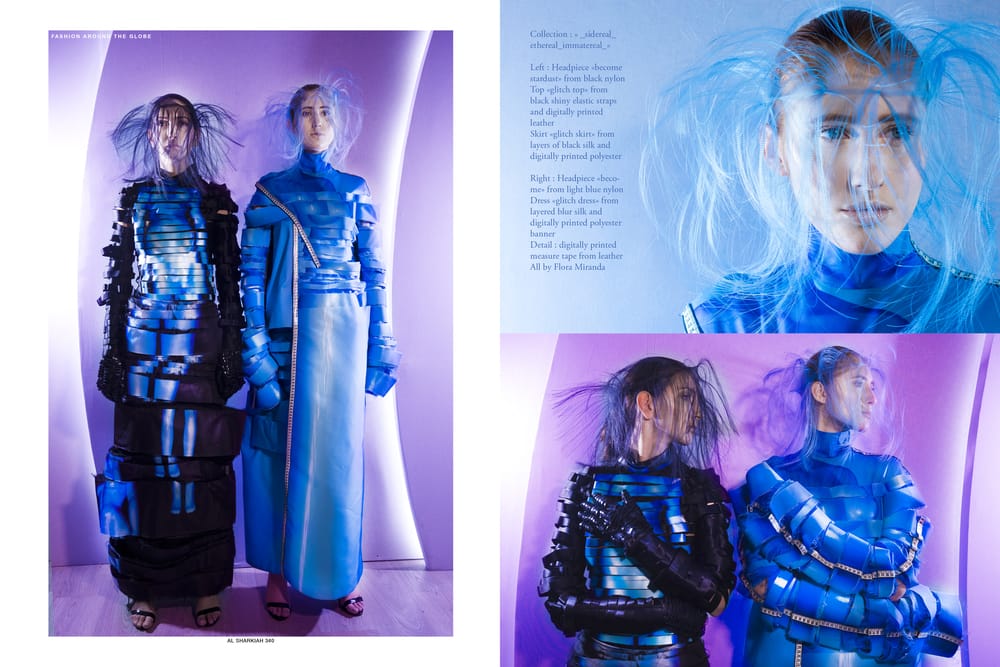
The Flora Miranda “Glitch Suit” and “Warp Dress” are published within the editorial “Digital Innovations” in Al Sharkiah Magazine, shot by Nahoko Spiess and styled by Suna Moya.
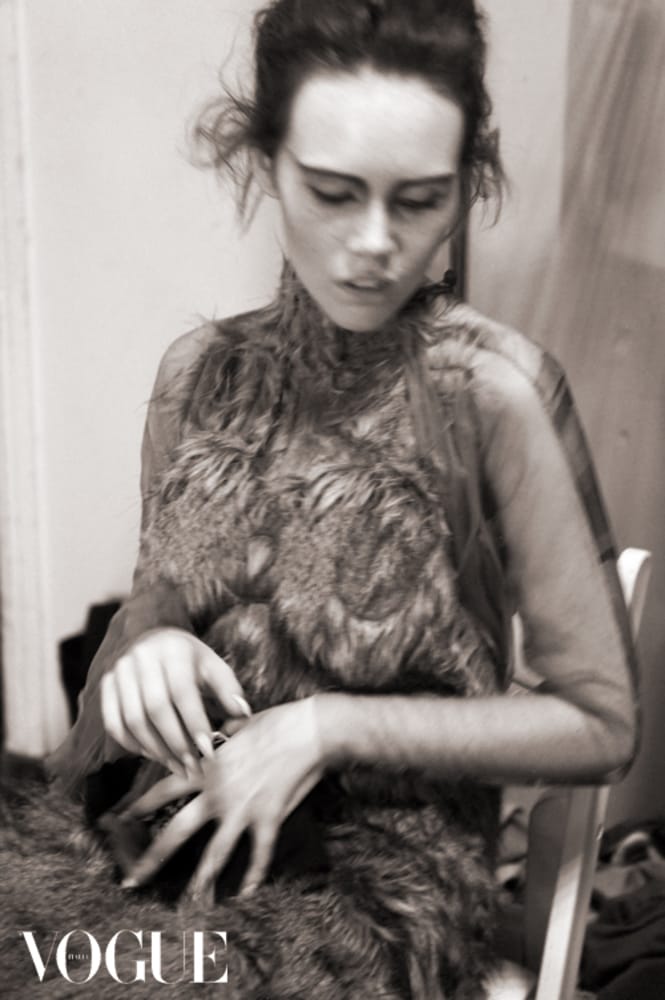
The Flora Miranda “WE LIKE YOU” furry psychedelic dress on Vogue Italia, shot by Rachel Jeraffi.
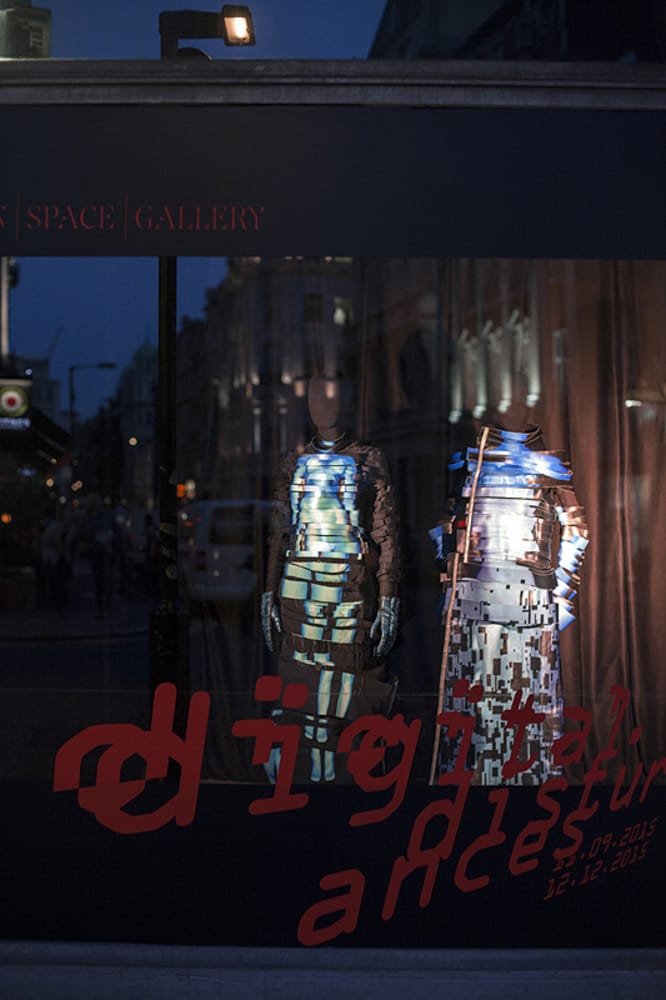

The Flora Miranda “Warp Coat” and “Warp Outfit” are presented within the exhibition “Digital Disturbances” at Fashionspace Gallery in London.
Digital Disturbances examines the influence of digital concepts and tools on fashion. It provides a lens onto the often strange effects that emerge from interactions across material and virtual platforms - information both lost and gained in the process of translation. It presents the work of seven designers and creative teams whose work documents these interactions and effects, both in the design and representation of fashion. They can be traced across the surfaces of garments, through the realisation of new silhouettes, in the remixing of images and bodies in photography and film, and into the nuances of identity projected into social and commercial spaces.
Designers include: ANREALAGE, Bart Hess, POSTmatter, Simone C. Niquille and Alexander Porter, Flora Miranda, Texturall and Tigran Avetisyan.
Digital Disturbances is curated by Leanne Wierzba.
11 September until 12 December 2015
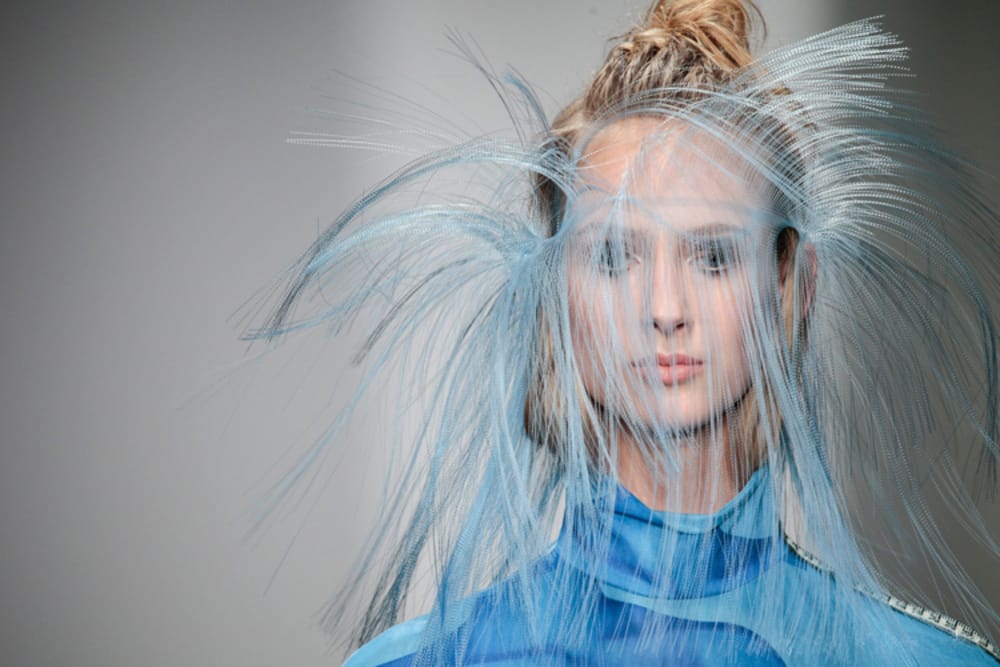
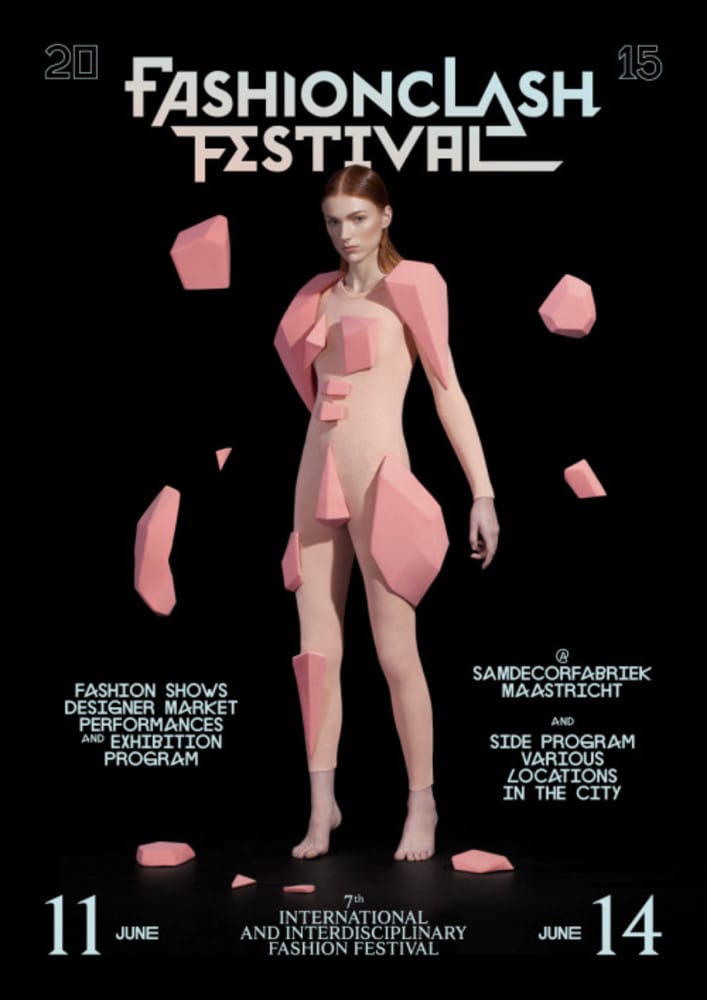
Flora Miranda is presenting her work at various moments of Fashionclash Festival: In the Fashion Show Program, the Gender exhibition and SHOWPIECES expo at De Bijenkorf.
Interview at the Fashionclash Blog
Backstage review by Indie Magazine
Review by Couturekrant
Review by The Fashion Insider
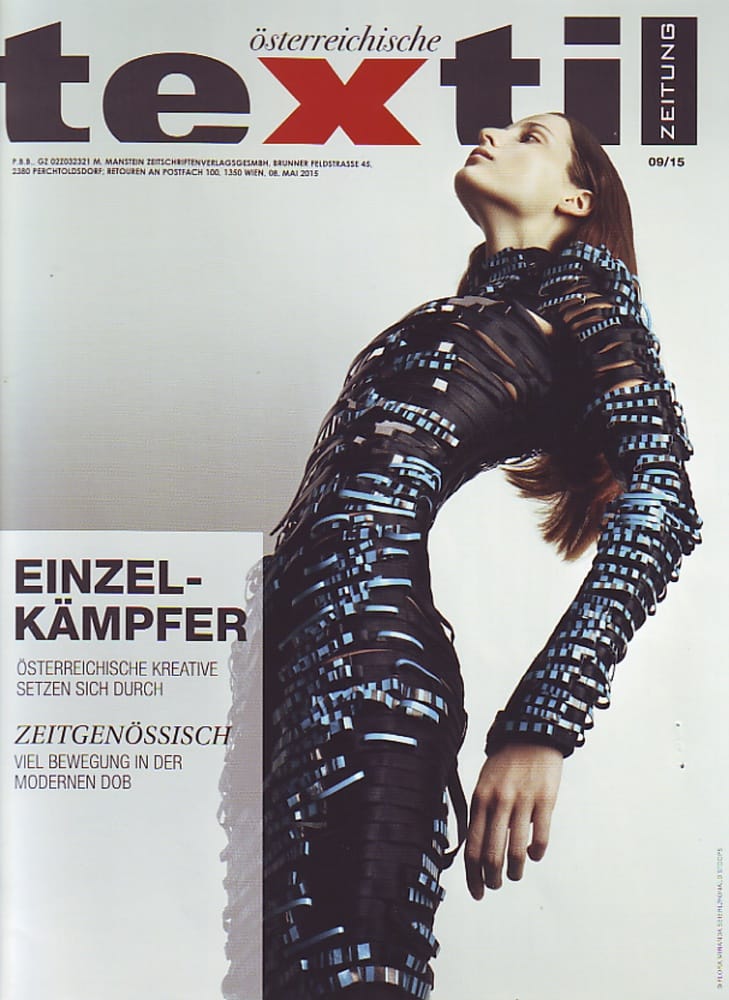
The Flora Miranda “Glitch Suit” makes the cover of Textilzeitung issue 9 of 2015. Picture by Ronald Stoops.

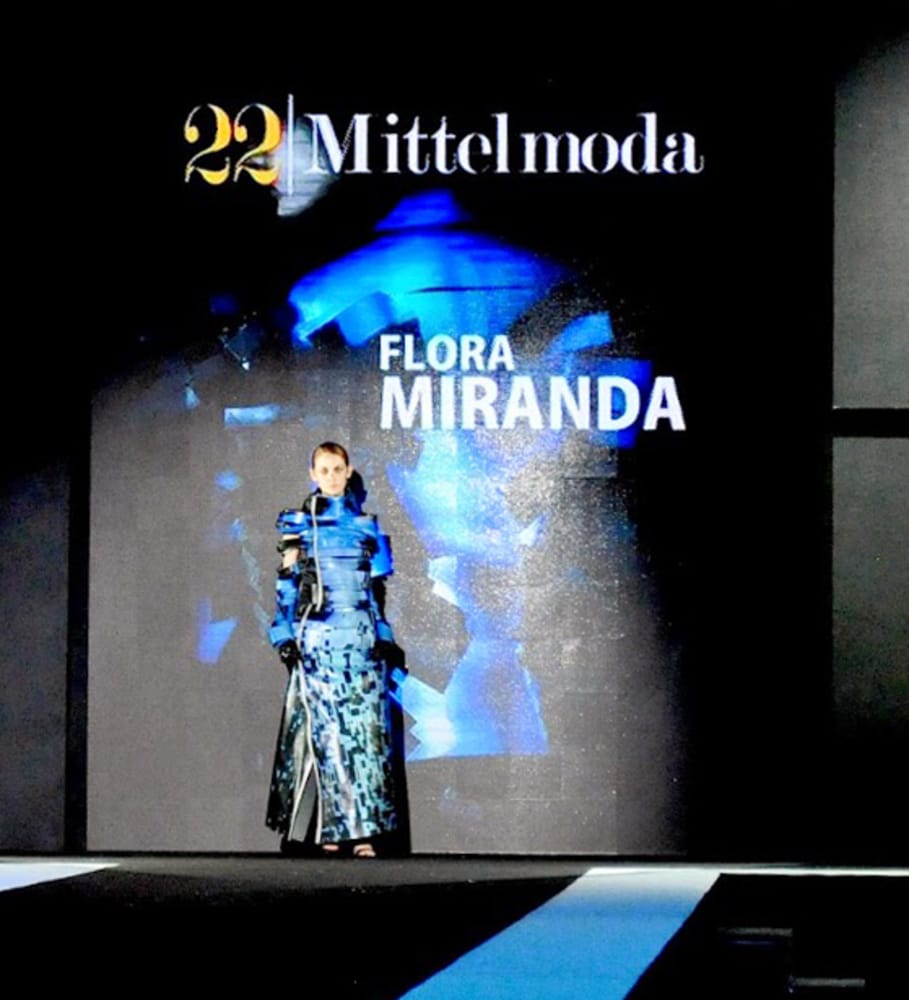
Flora Miranda receives the Mittelmoda Fashion Award for the Use of Technology.
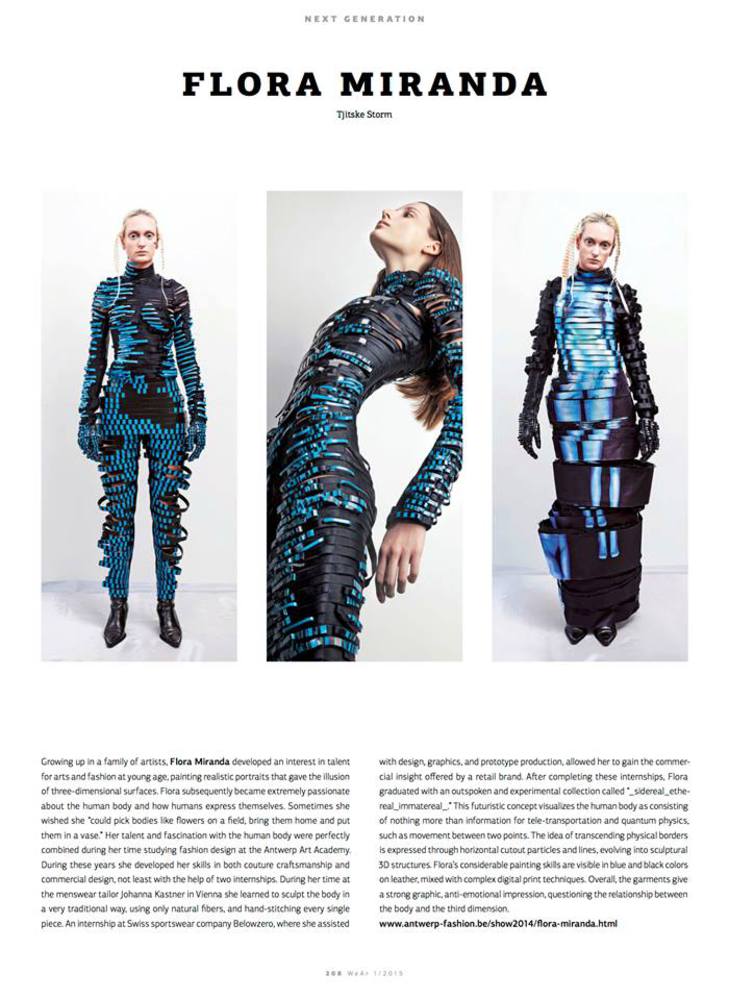
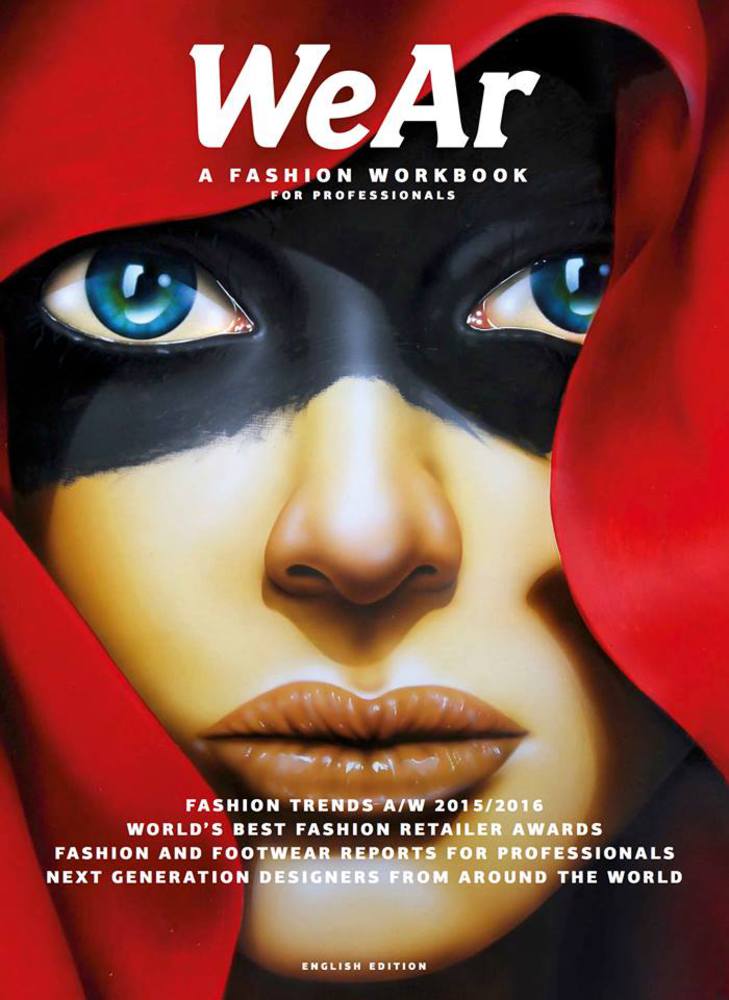
WeAr Magazine presents Flora Miranda within their “next generation of designers” section, issue 1 of 2015.
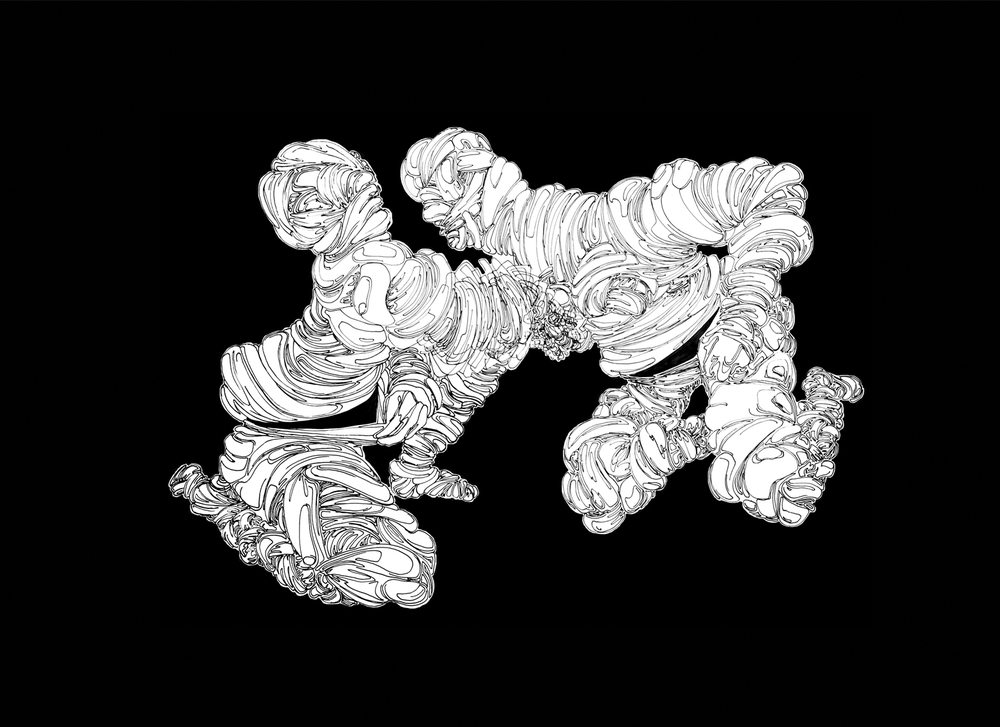
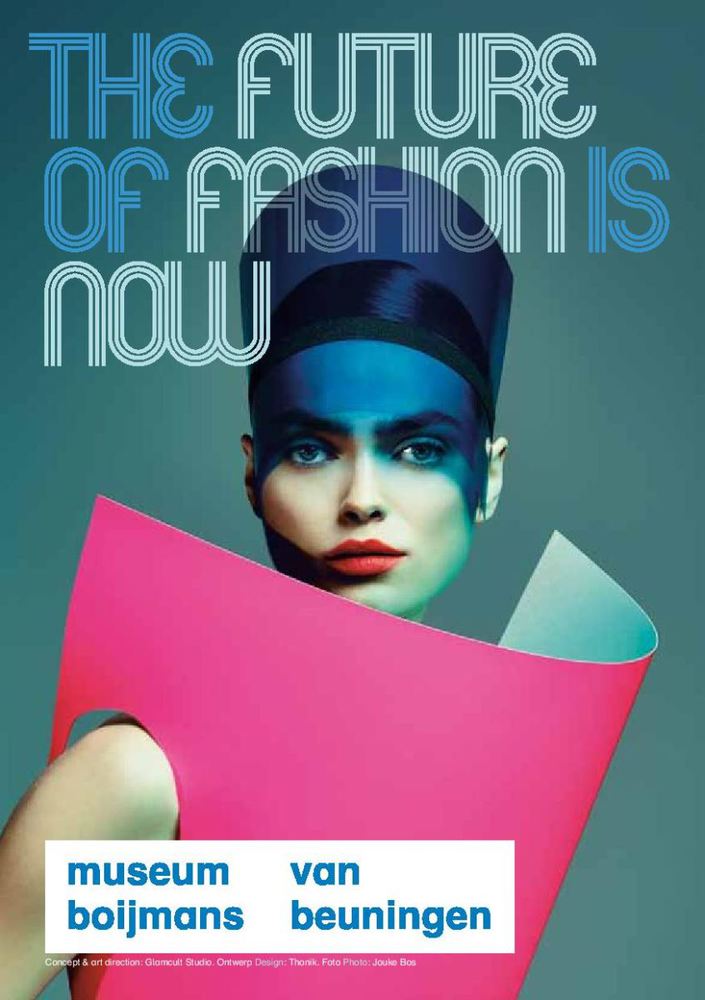
In collaboration with Glamcult Magazine, Museum Boijmans Van Beuningen exhibits the graphic work “Hide and Seek” by Flora Miranda.
“Hide and Seek” shows a love scene between two people; we don’t know what gender they are. They get to know each other through touching their liquid surfaces, intertwine with each other, melt and become one.
The bodies are made of a fluid material that adapts its shape to the environment - comparable to the Barbapapas as we know them from the 60s TV series.

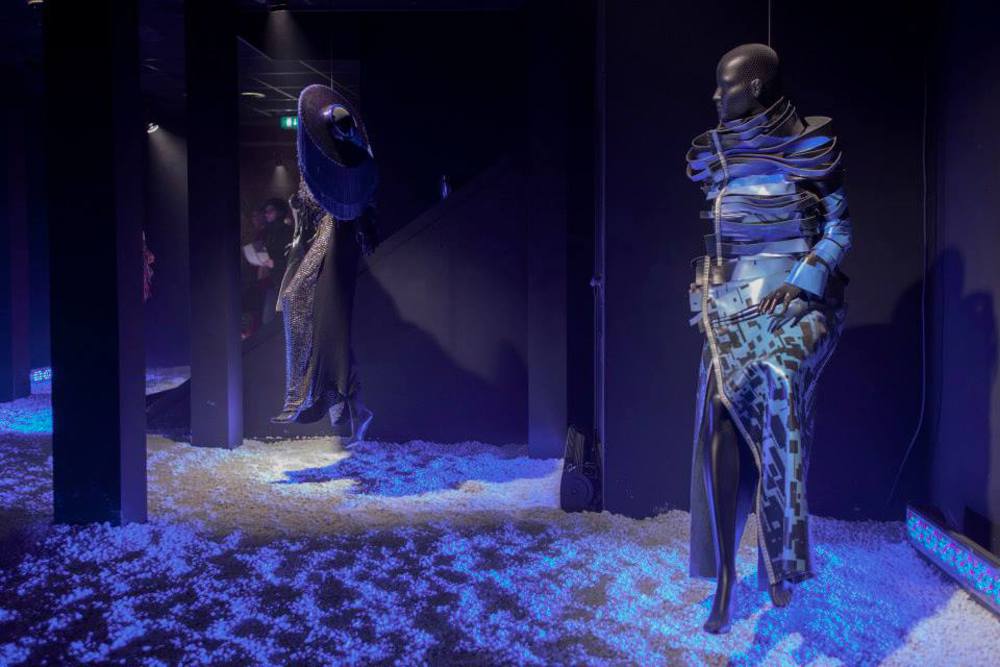
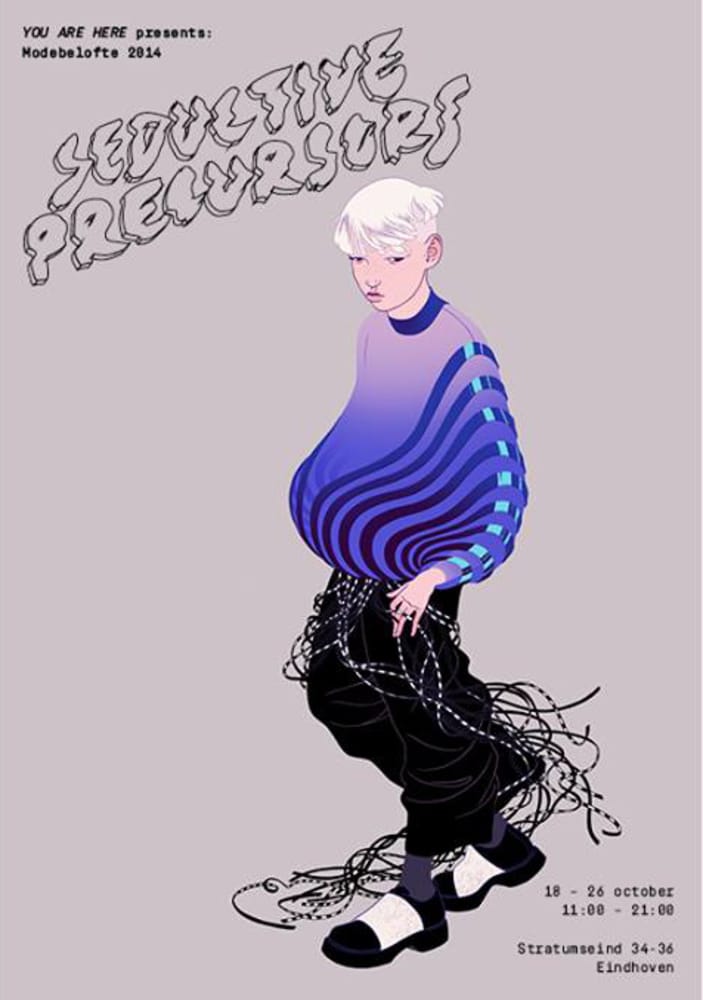
The Flora Miranda “Warp Coat” is exhibited at the Modebelofte 2014, named “Seductive Precursors”, during Dutch Design Week.
During Dutch Design Week, the platform Modebelofte presents a selection of progressive fashion talents freshly graduated from Dutch and international BA and MA courses.
The title of this year’s edition of Modebelofte - “Seductive Precursors” - underscores the importance of the pioneering creativity displayed by these talented designers. By experimenting, intuitively and conceptually, with techniques, materials, shapes and references they seduce us to immerse in their visions of possible fashions for a moment. Seductive Precursors play an important role in fashion’s characteristic dynamic of perpetual renewal by convincingly connecting the familiar with the unfamiliar. The selected designers challenge us to consider our contemporary sense of self and our ideas about the wearability of objects in a progressive, fictitious or futuristic perspective.
curated by Heyniek and StudioHarmRensink
17 October until 26 October 2014
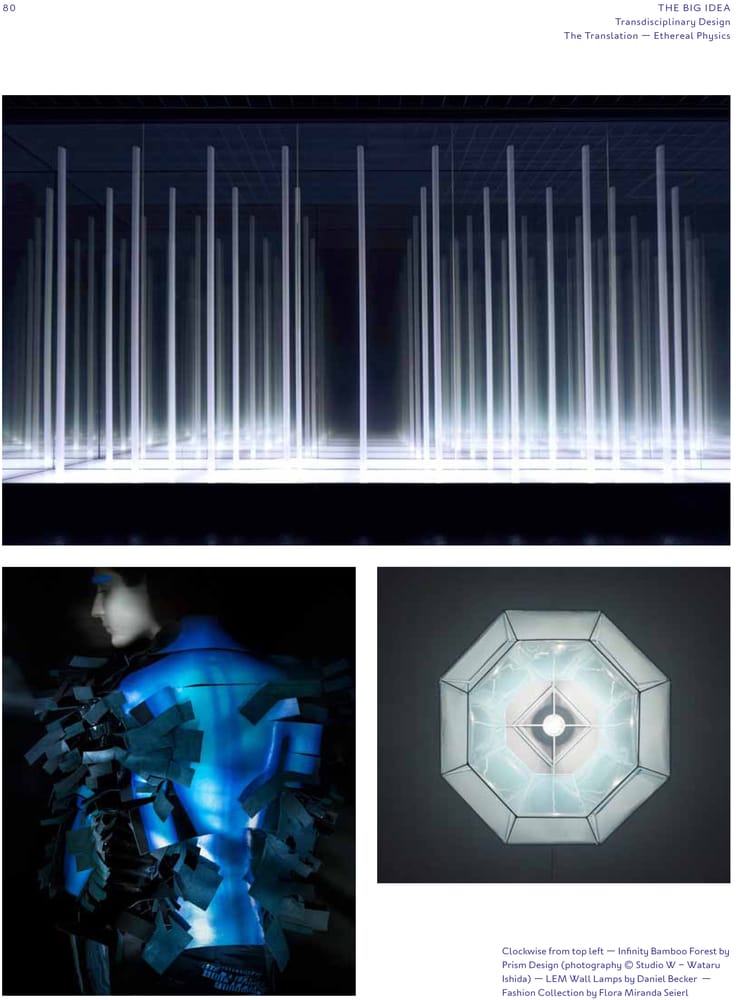
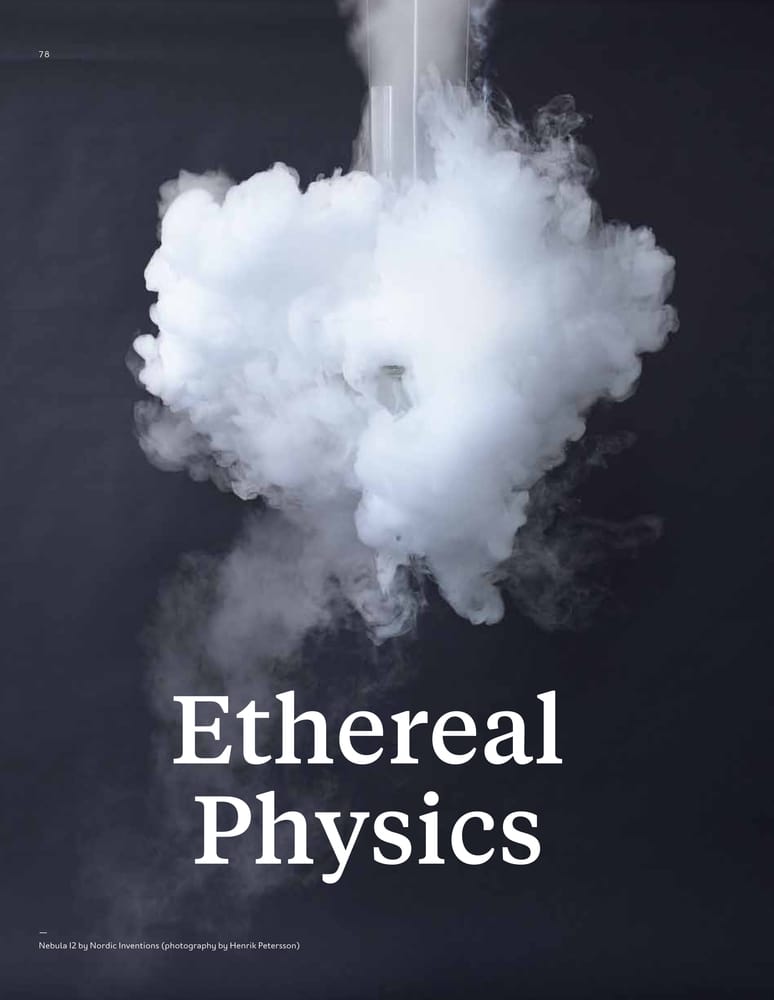
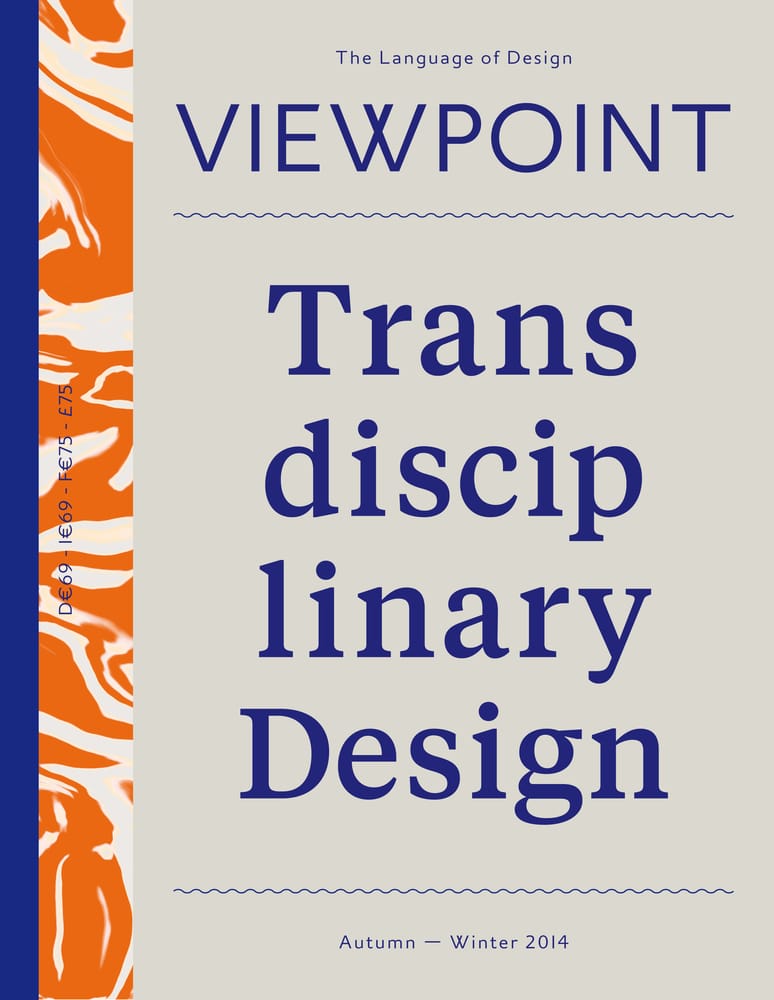
The Flora Miranda “Disintegrative Jacket”, photographed by Ronald Stoops is published as a part of the “Transdisciplinary Design” Issue of Viewpoint Magazine.
We present the new breed of designers championing a transdisciplinary design approach. This issue of The Translation exhibits an emerging design landscape in which scientific exploration and experimentation become the key drivers for innovation, as designers look to explore the intersection of craft, science and technology. whether they are seeking more meaningful, poetic experience, a greater sense of tactile interaction, or simply aiming to create visual spectacle, these designers emulate, synthesise or draw inspiration from scientific theory to create otherworldly materials, forms and surfaces.
Words: Franklin Till Studio
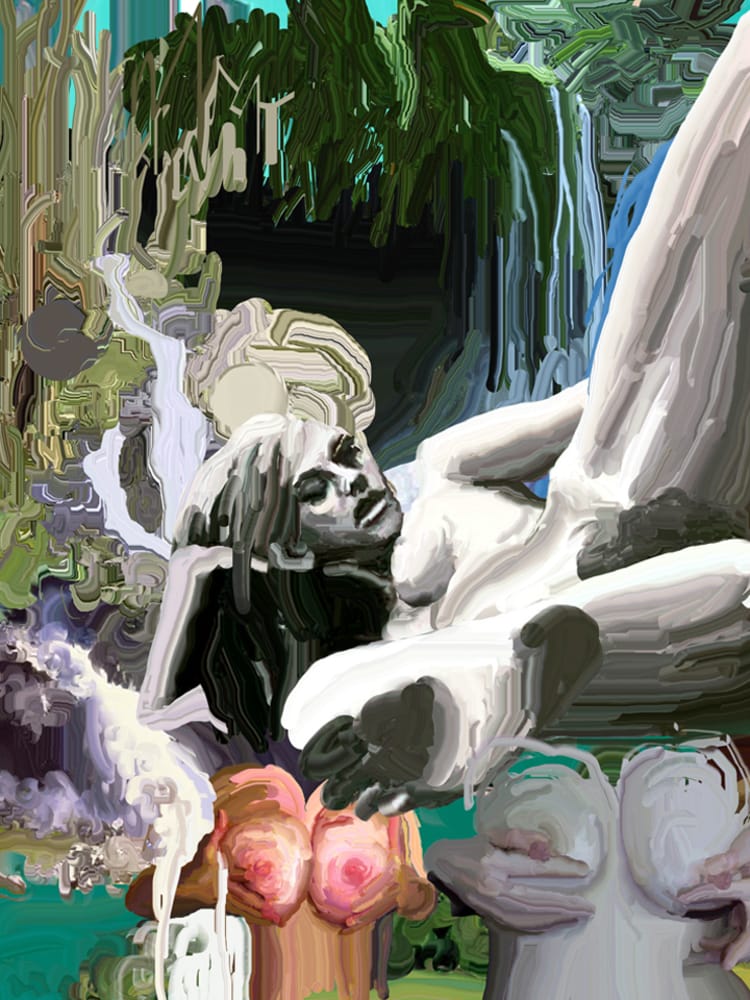
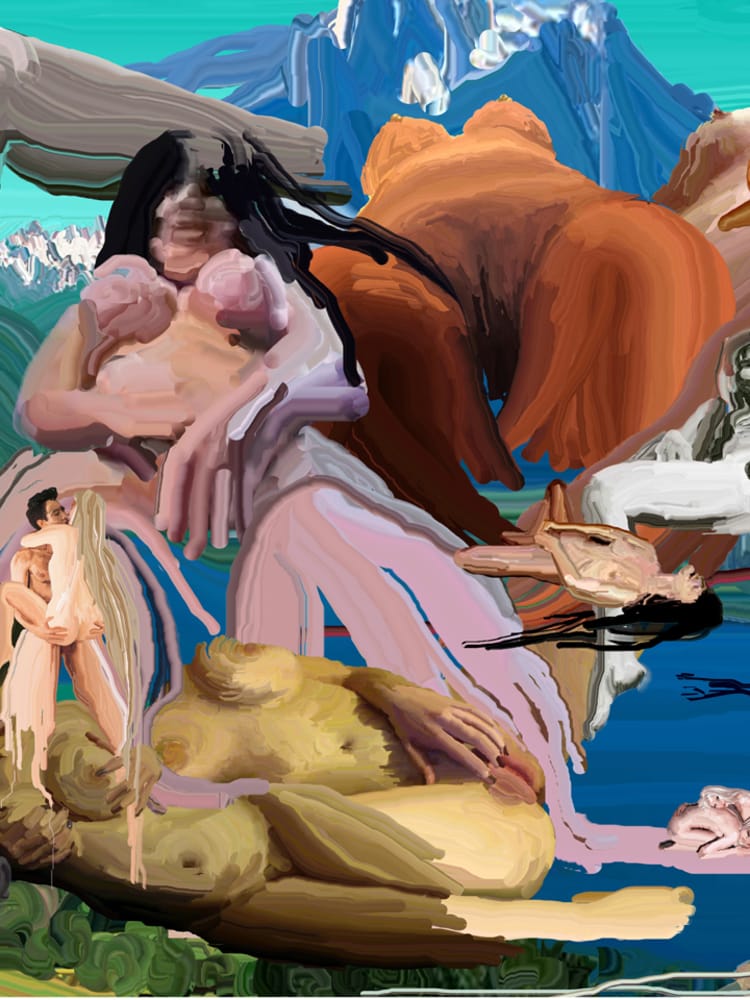
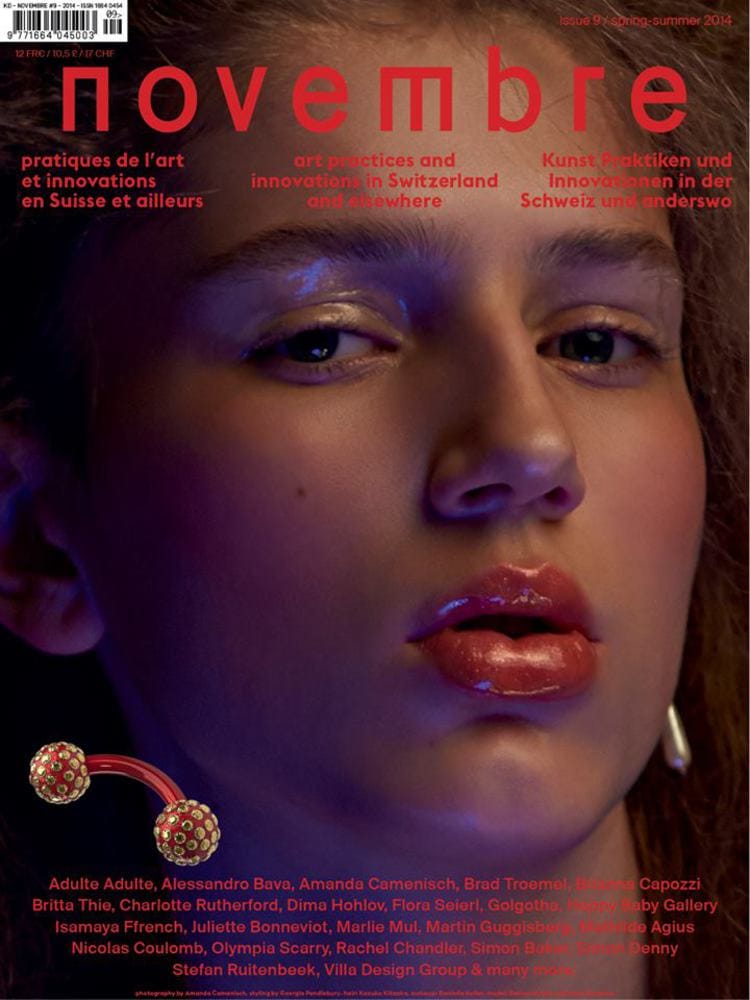
The Flora Miranda graphic work “Openinghours” is published in Novembre Magazine issue 9, Spring/Summer 2014
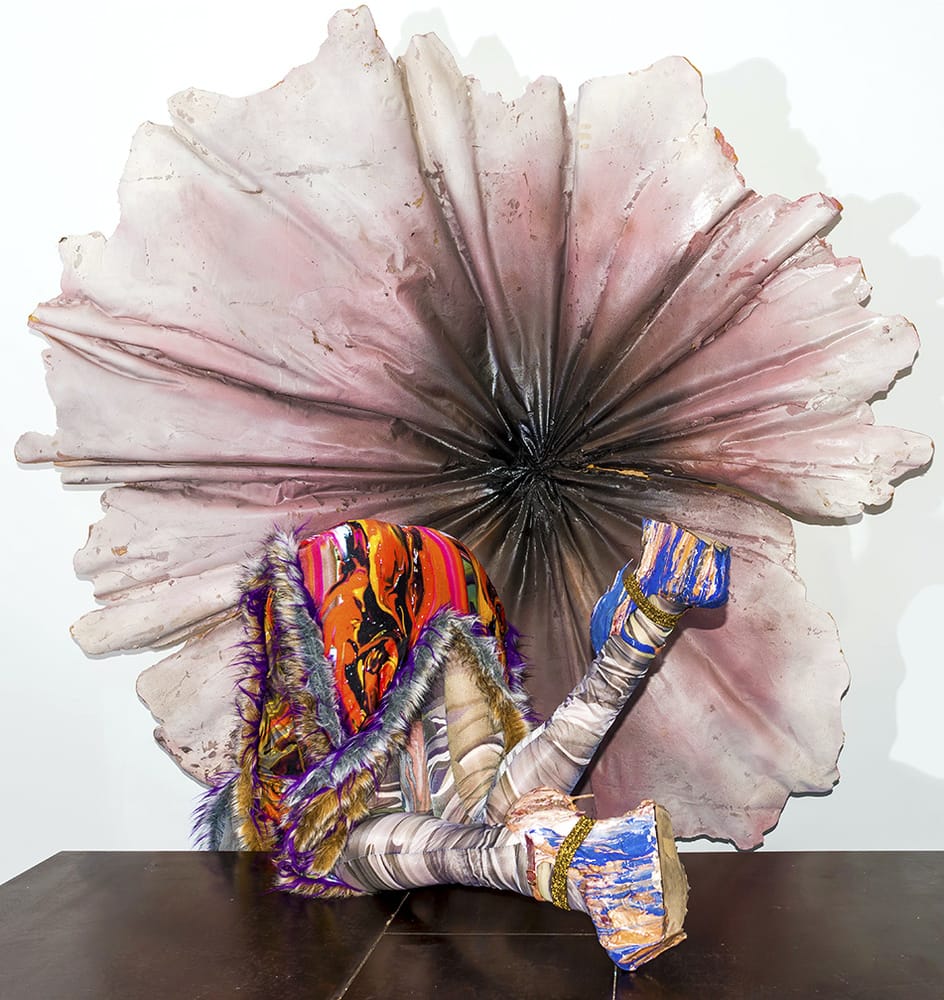
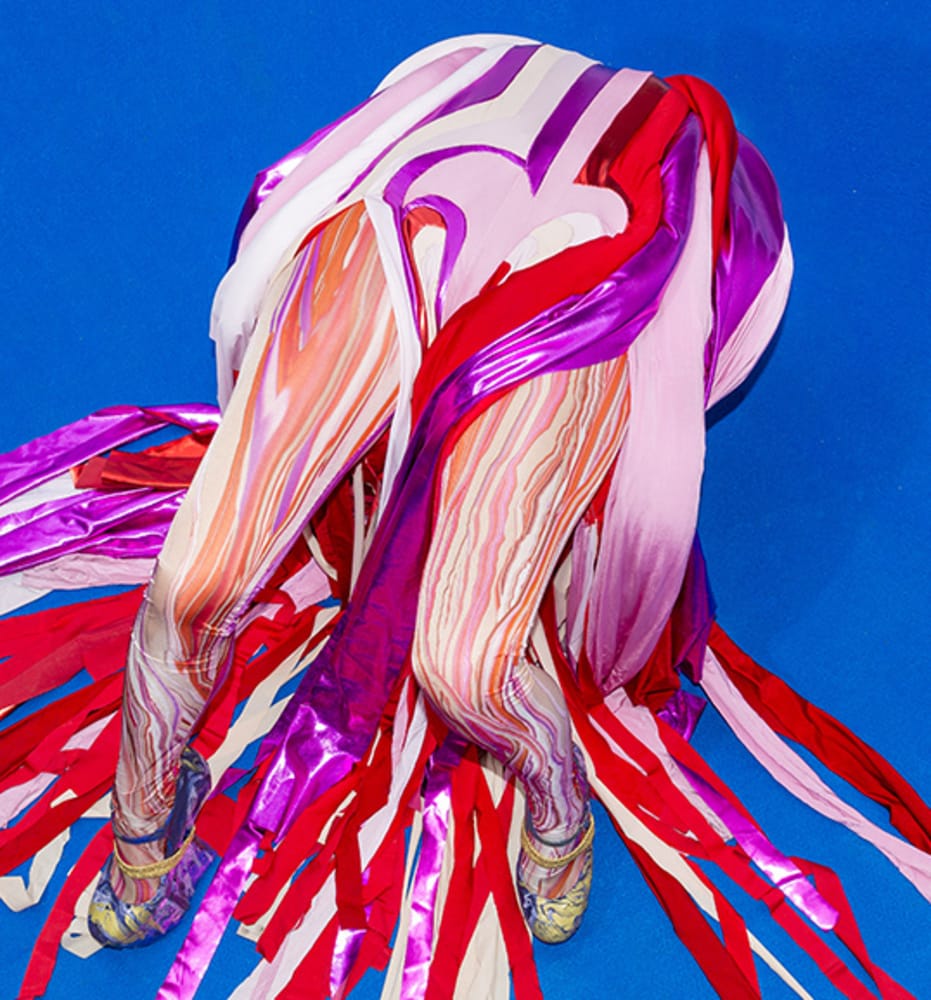
Belgian photographer Cedric Van Turtelboom captures Flora Miranda’s “www.sex.coll” outfits.